Oman - 7 Days of Authentic Beauty
From Dubai to Muscat and along the coast - an amazing journey of natural beauty, history, architecture, geology and kind people.

In February 2022 I had plans for a trip to India’s Himalayas, with the goal to take photos of the elusive snow leopard. Owing to various Covid restrictions, this idea unfortunately did not materialize, so it was time to look for another destination. One obvious choice was to look no further than a few hundred kilometers towards the Indian Ocean: Oman. Even though I’ve lived in the UAE on / off for 15 years, so far I had only seen the Musandam part of our neighbor country, and had yet to explore its mountain areas, the coastline, and the capital Muscat.
And oh boy did I miss out! The amount of landscapes, history, people, architecture, and activities you can encounter in just a week, all accessible with easy visa regulations (if you’re a GCC resident especially) and within a few hours drive from Dubai, is incredible.
The route took us through the border near Al Ain towards Nizwa, with several stops on the way, before heading up Jebel Akhdar for a couple of nights. From there, onwards to Muscat to explore the city and its surrounding areas, and a day trip southwards along the coast almost until Sur (but not quite) was on the agenda.
Read on to find out about the sights and experiences on the way…

Hajar Colours
The Hajar mountains feature an amazing variety of colours and shades, and their geological significance has been recognised globally - it makes the 6h drive towards Muscat all the more pleasing.
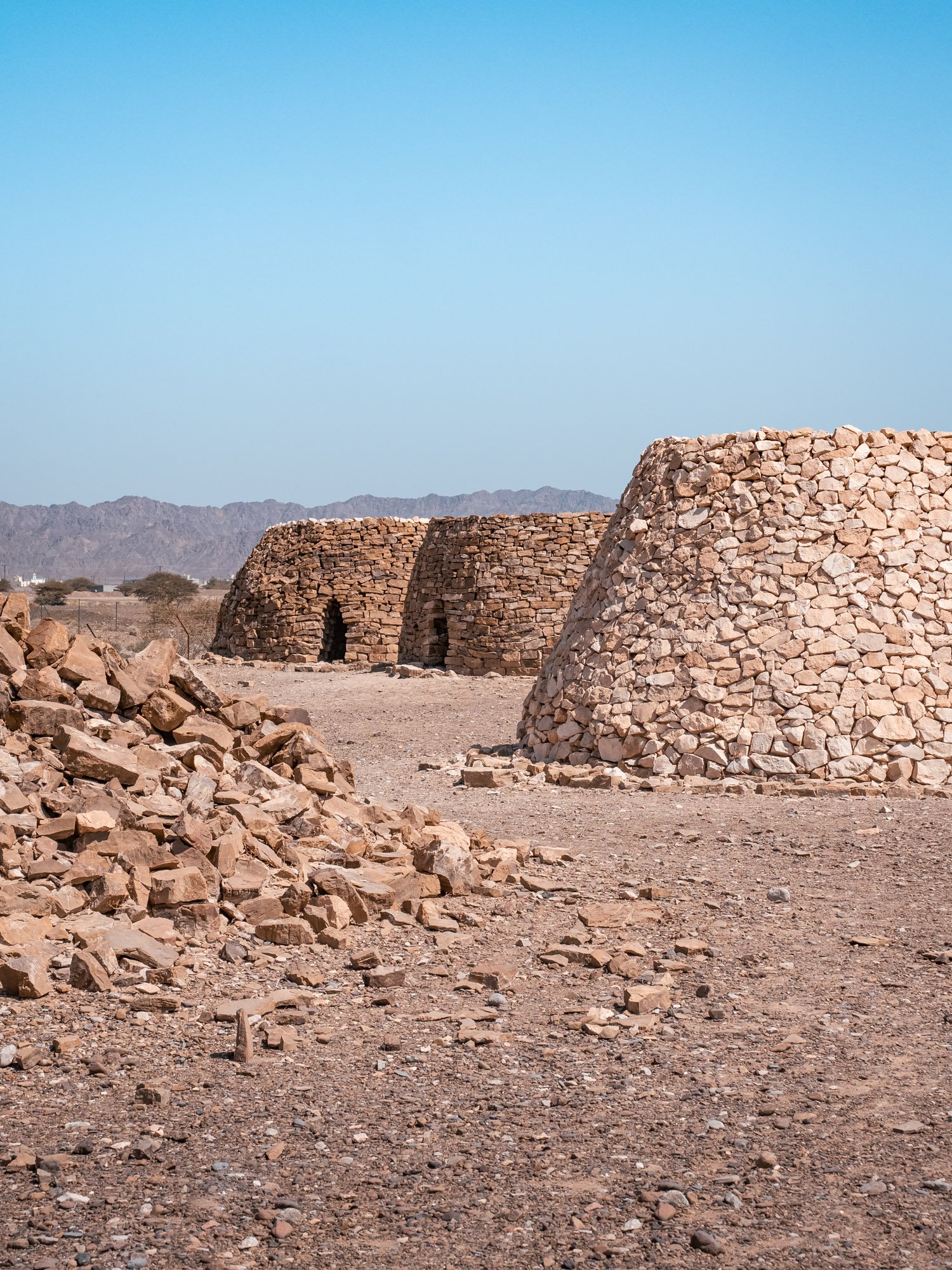
Beehive Tombs of Bat
Our first stop were the Beehive tombs of Bat, which are between 4000-5000 years old.
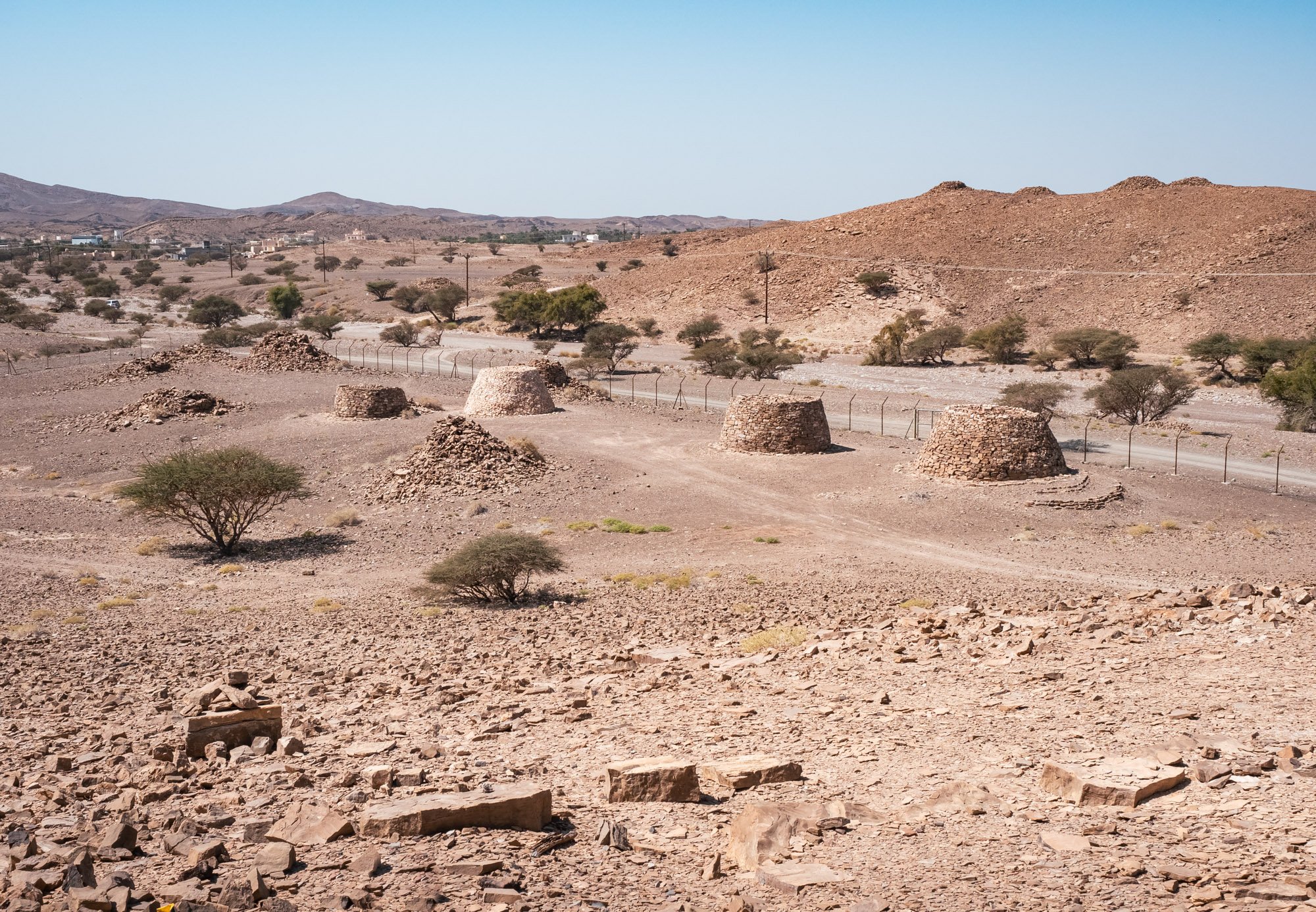
Unesco World Heritage Site
Together with their sister sites in the same region, they form one of the largest protohistoric necropoleis in the world.
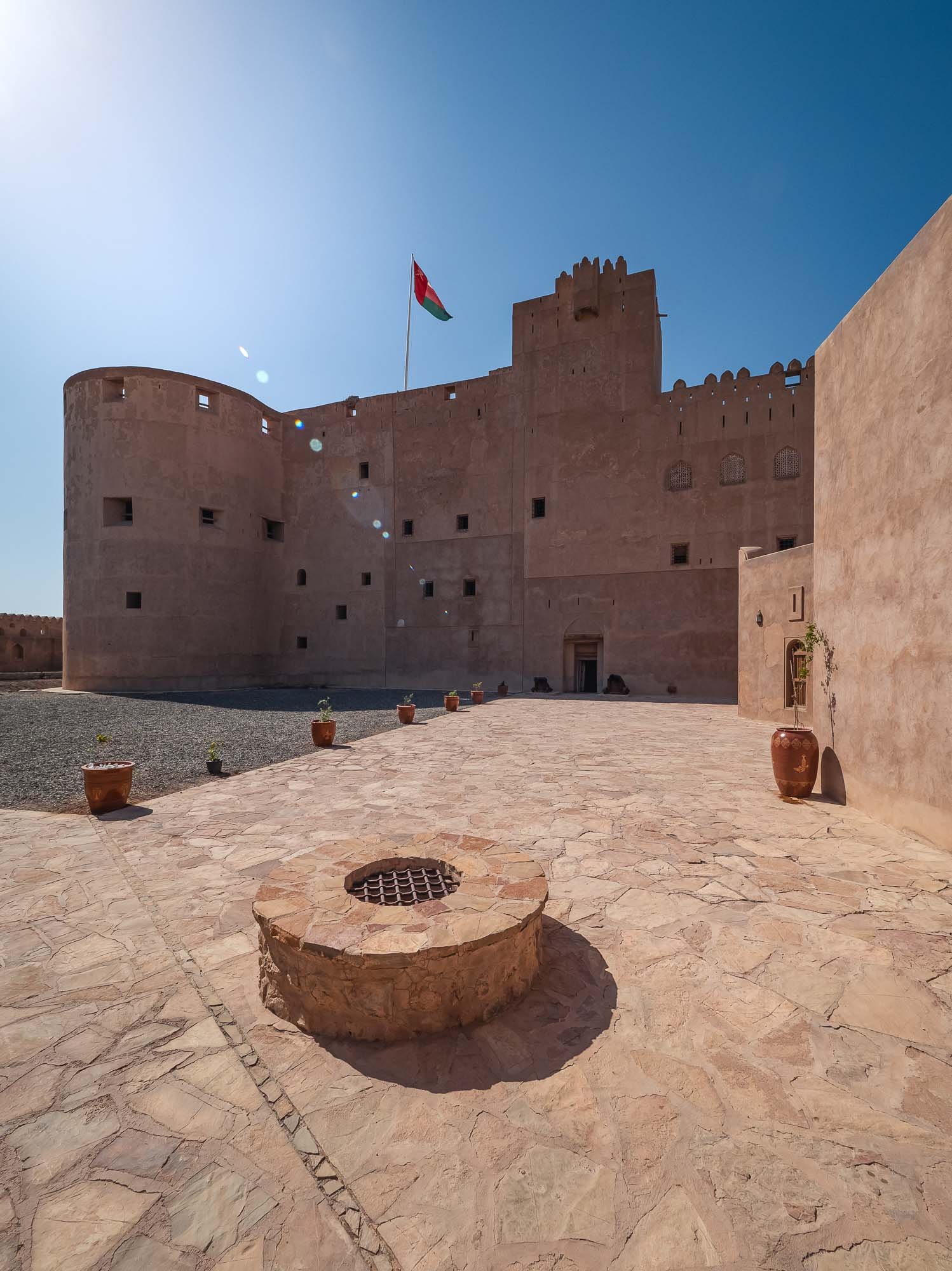
Jabreen Castle
A little further towards Nizwa awaits one of the many castles and forts in the region.
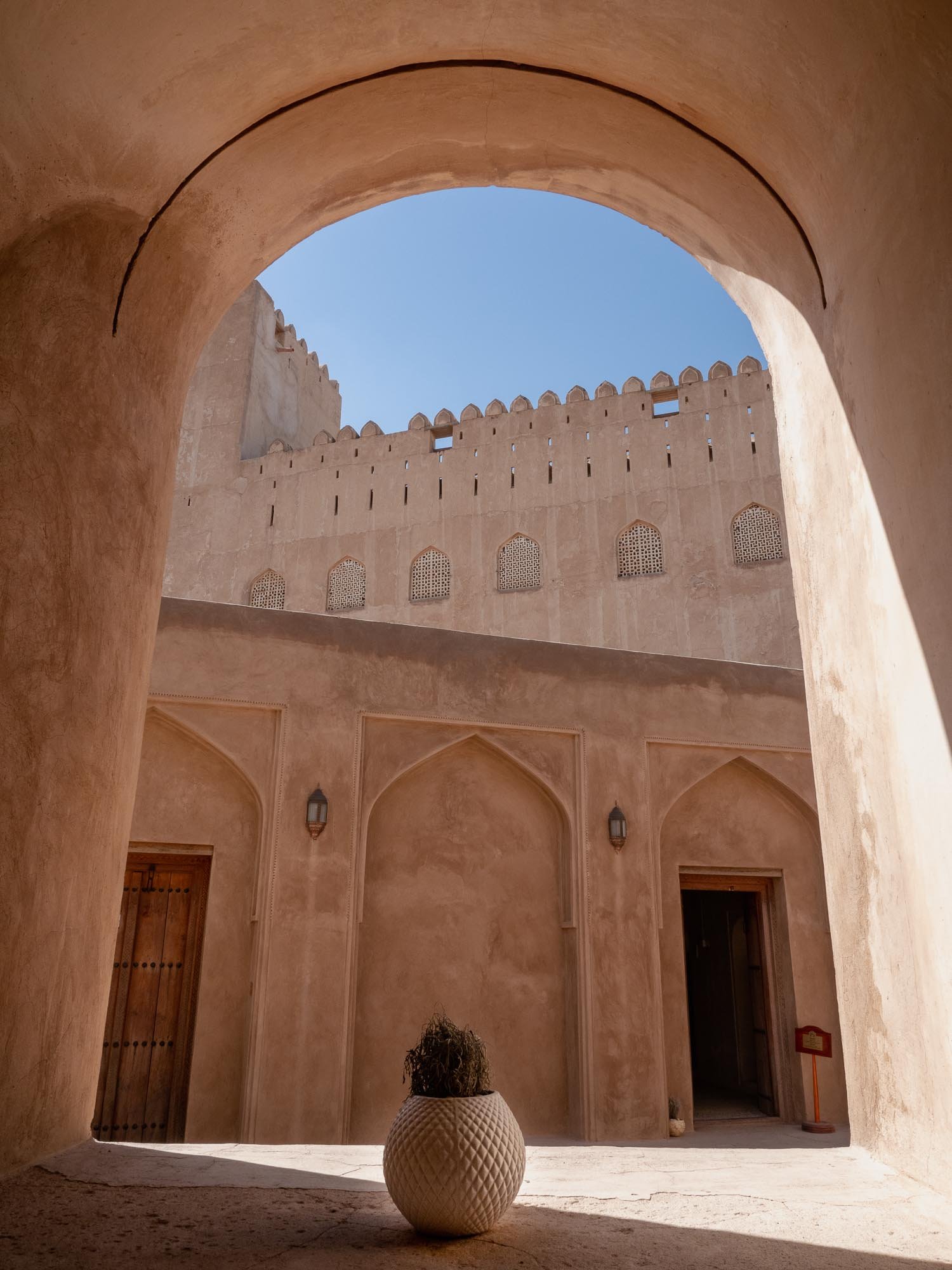
Shapes
This one was arguably my favourite - which says a lot, given the number of forts and castles on this route.
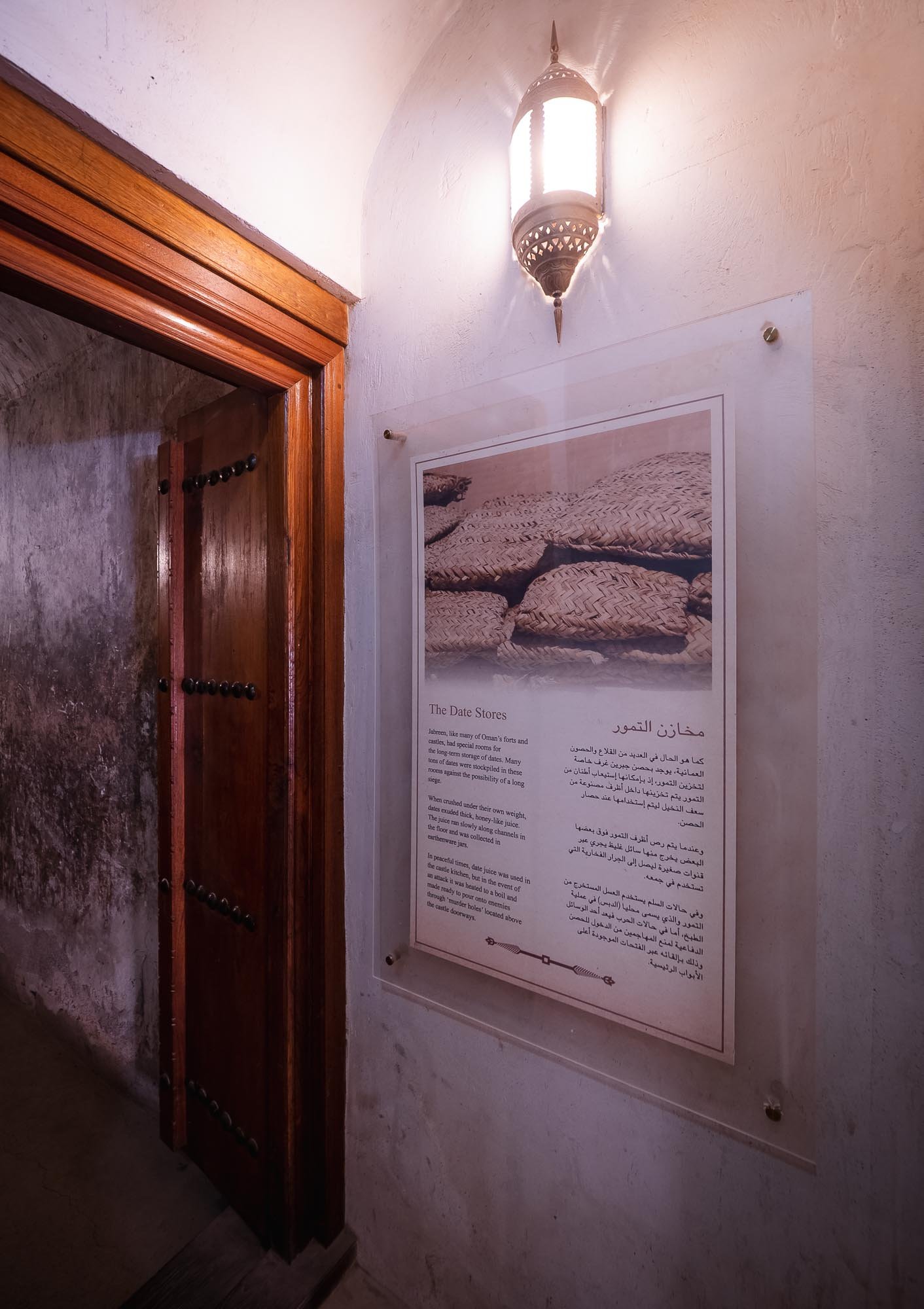
Date Storage
... along with some interesting uses in war times. The castles and forts in Oman feature some clever defense mechanisms you will encounter when exploring them.
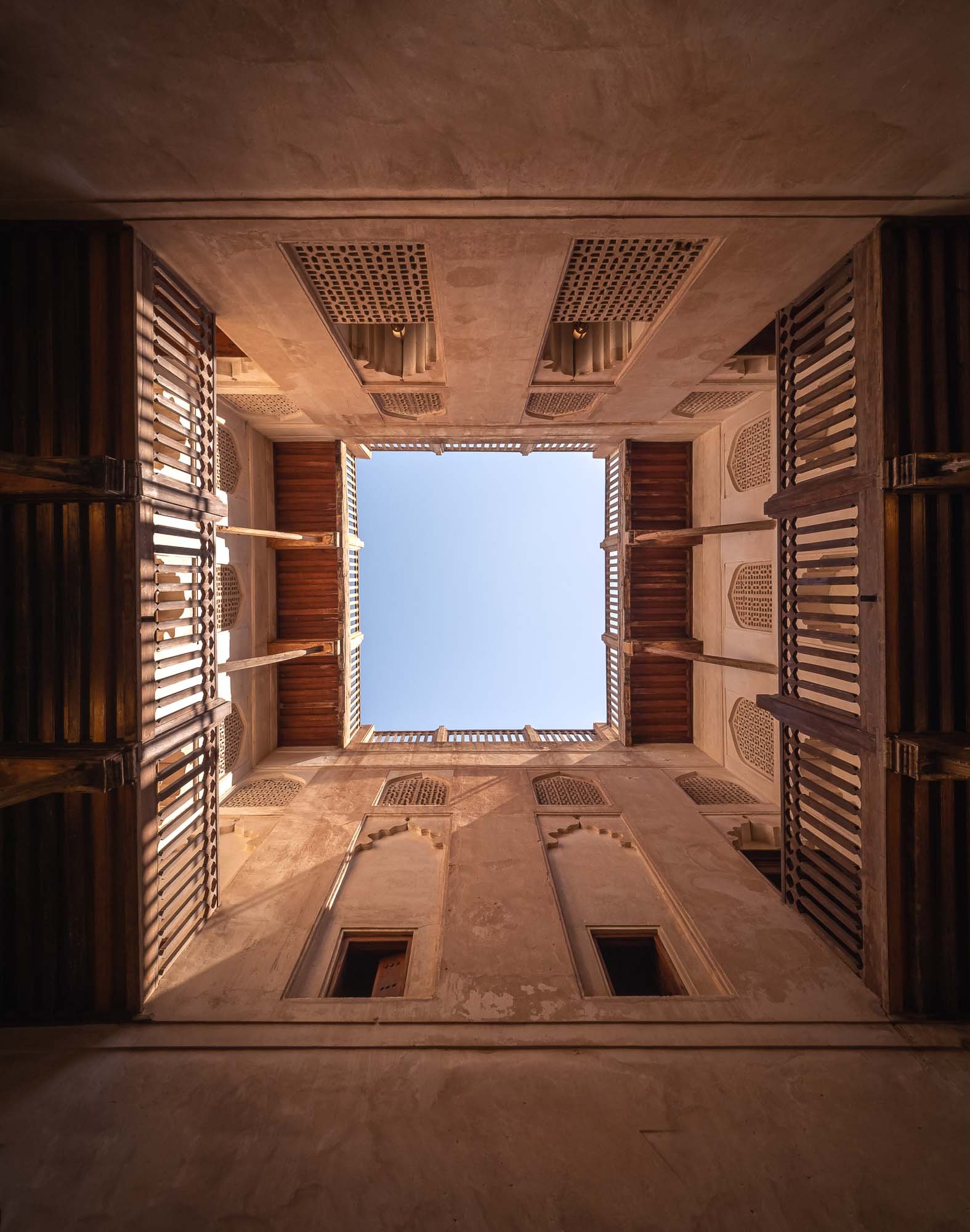
Courtyard
One of the two major courtyards in the castle - this one had its original wooden balconies restored.
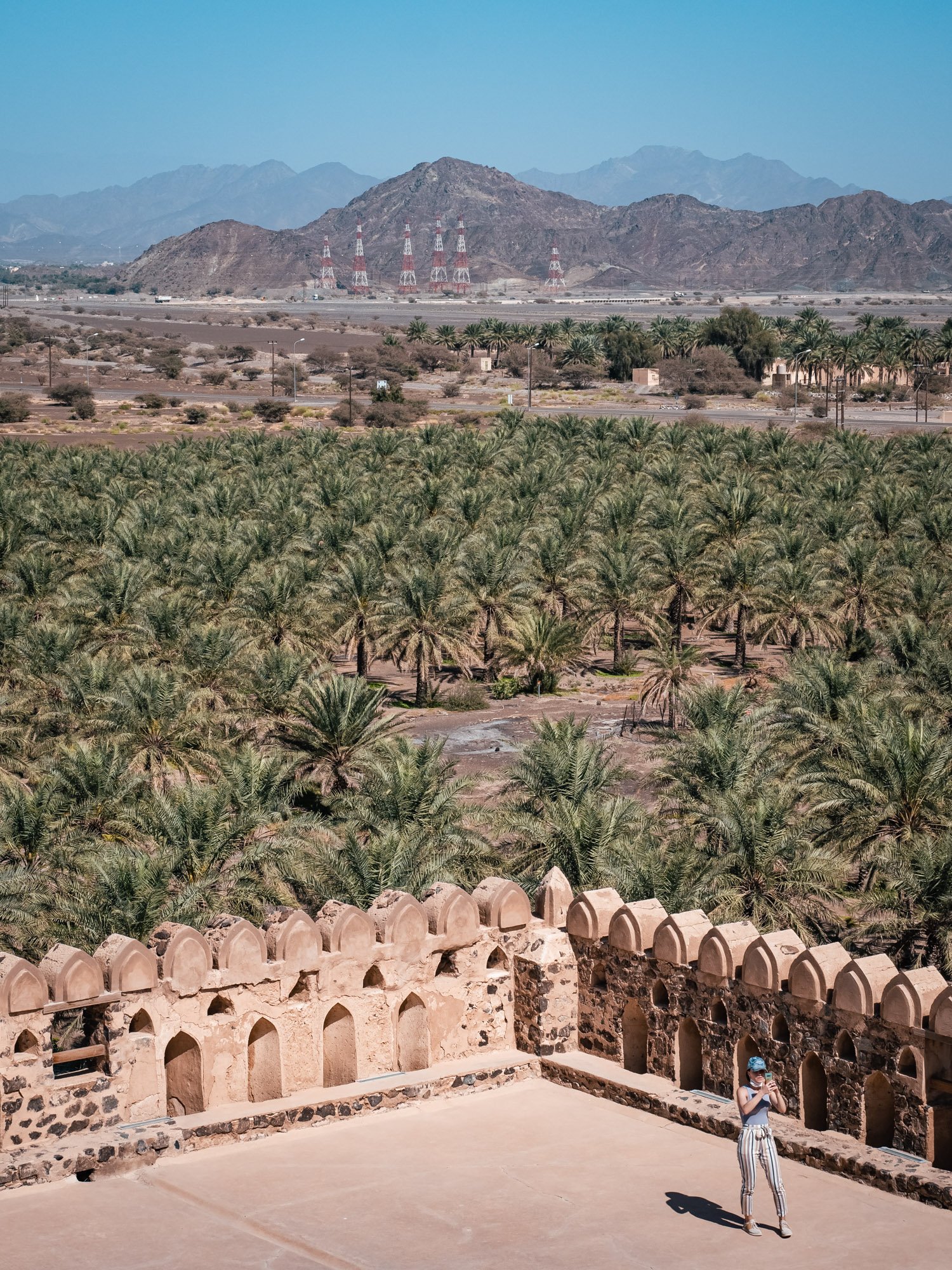
Green surroundings
As with most of the cities in this basin of the Hajar mountains, farms and date palms can be found everywhere.
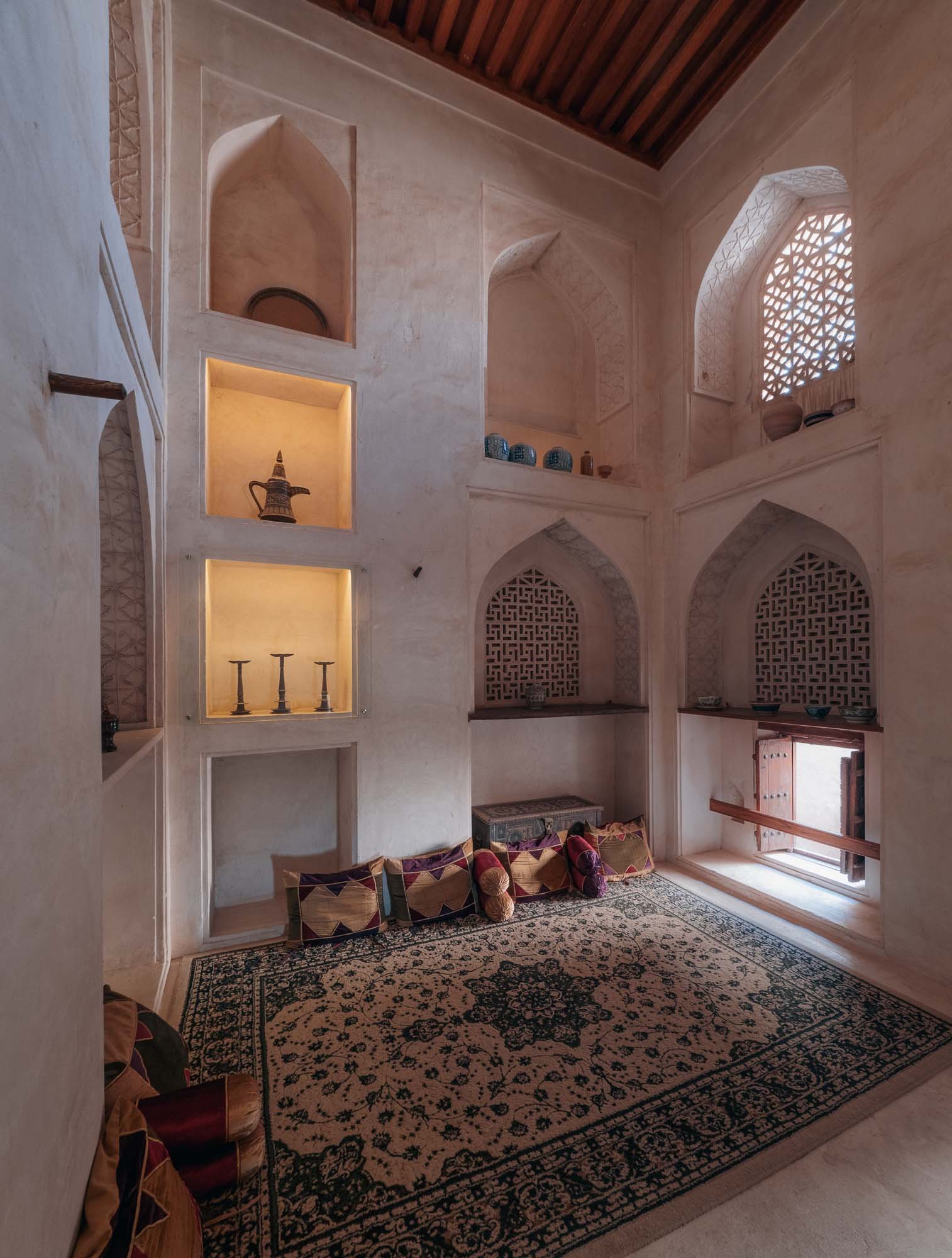
Interior
Some of the rooms have been restored and decorated.
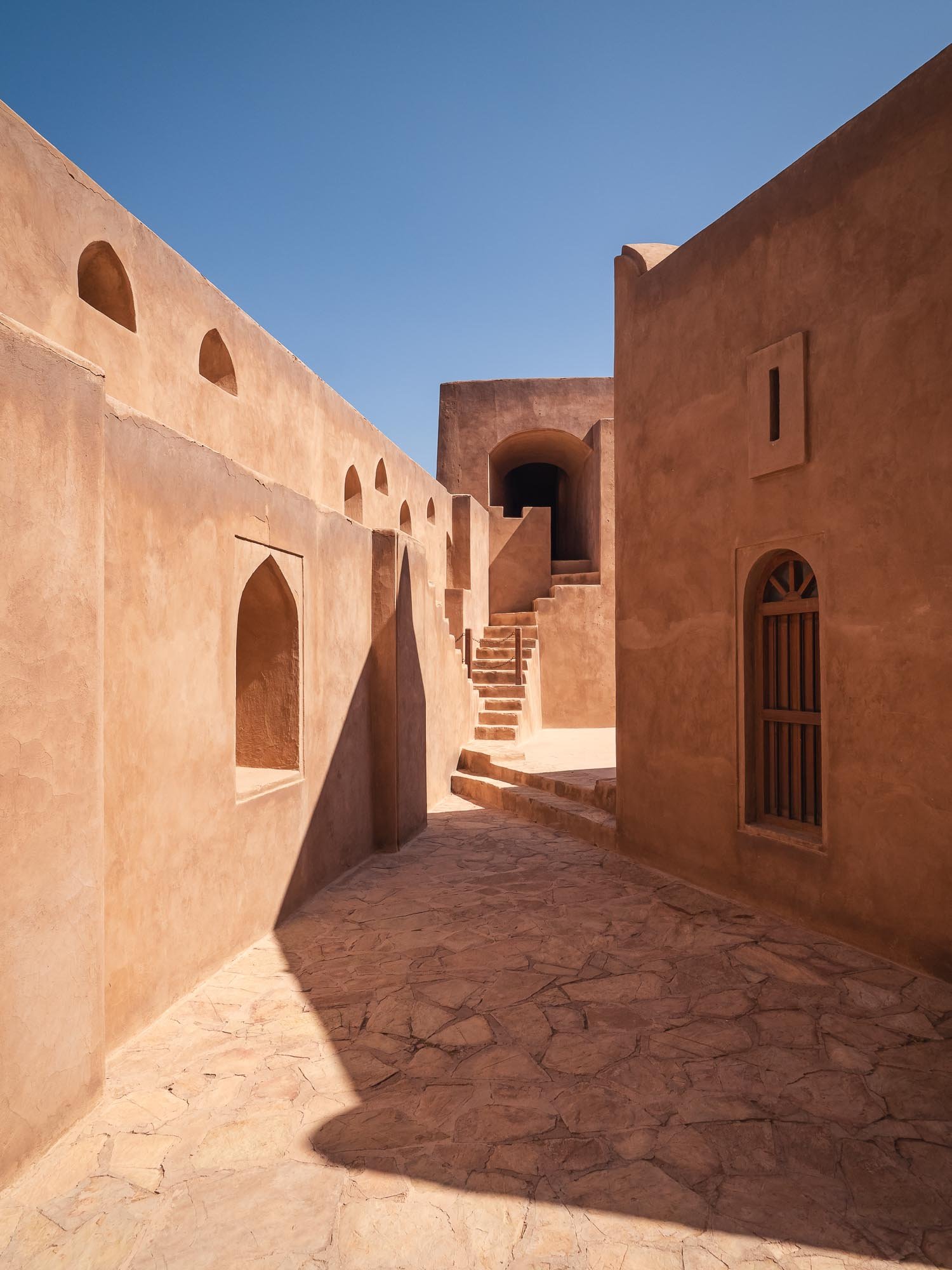
Warm Colours
hiding some of the cruel past of these forts.
Next up, we had planned to visit the ruins of Salut fort, another important archeological site in the area, but were disappointed to find it is currently closed and under development. Check before you go - and avoid getting a flat tire like we did.
Bahla Fort
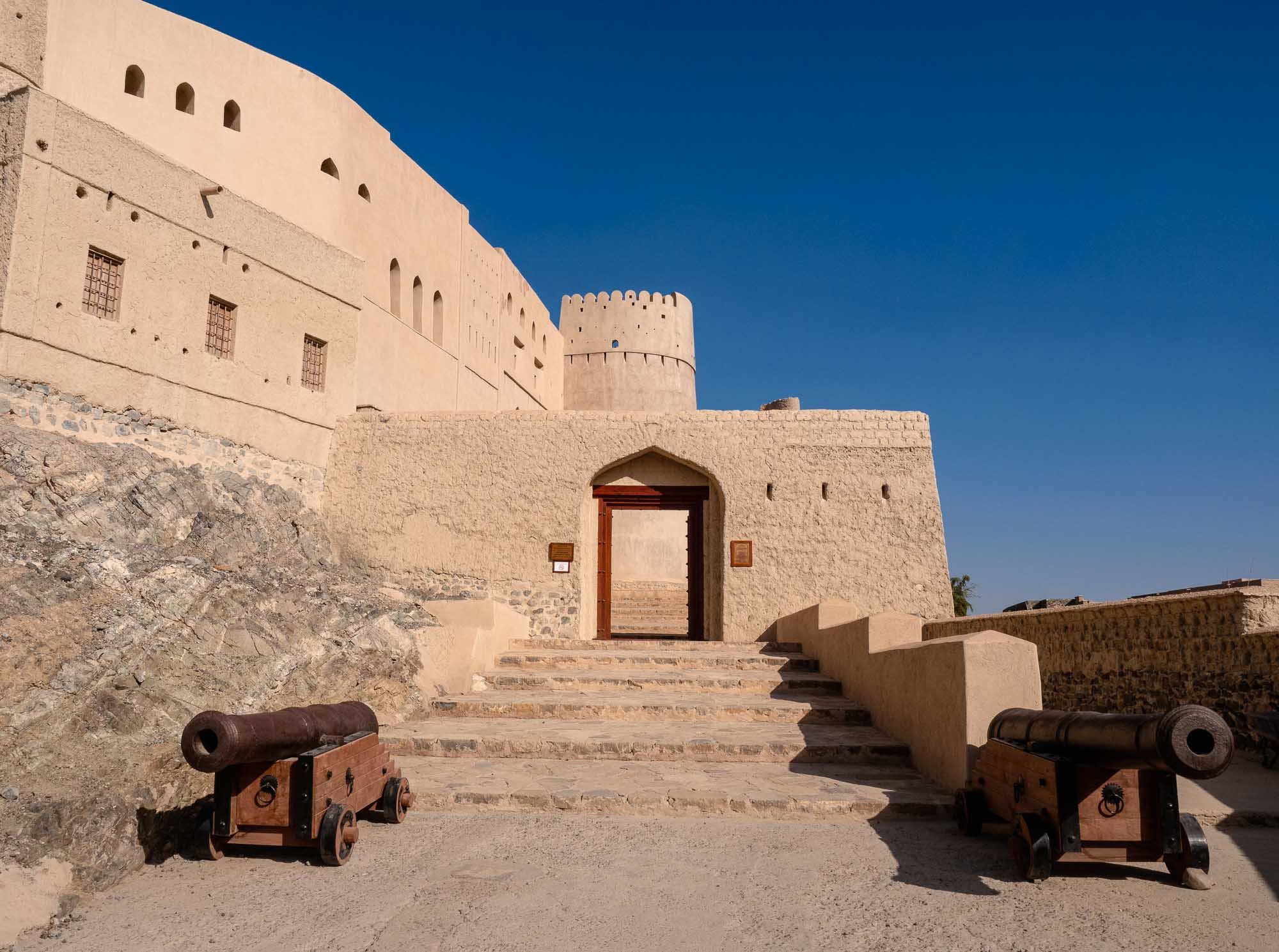
Bahla Fort
We then made it to Bahla Fort, the country's only UNESCO-listed fort, added in 1987.
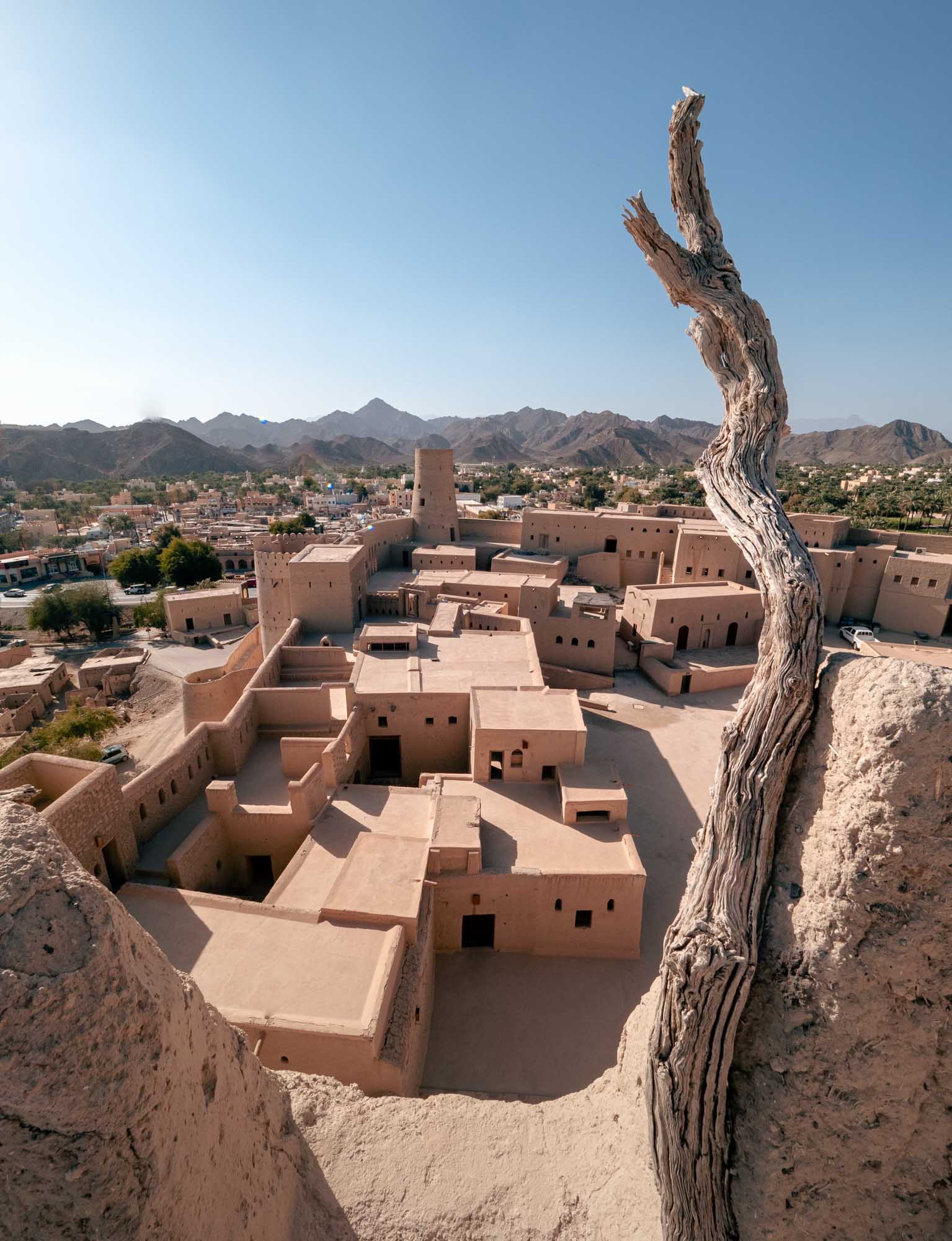
Haunted?
This fort is also the subject of many tales of djinns and black magic.
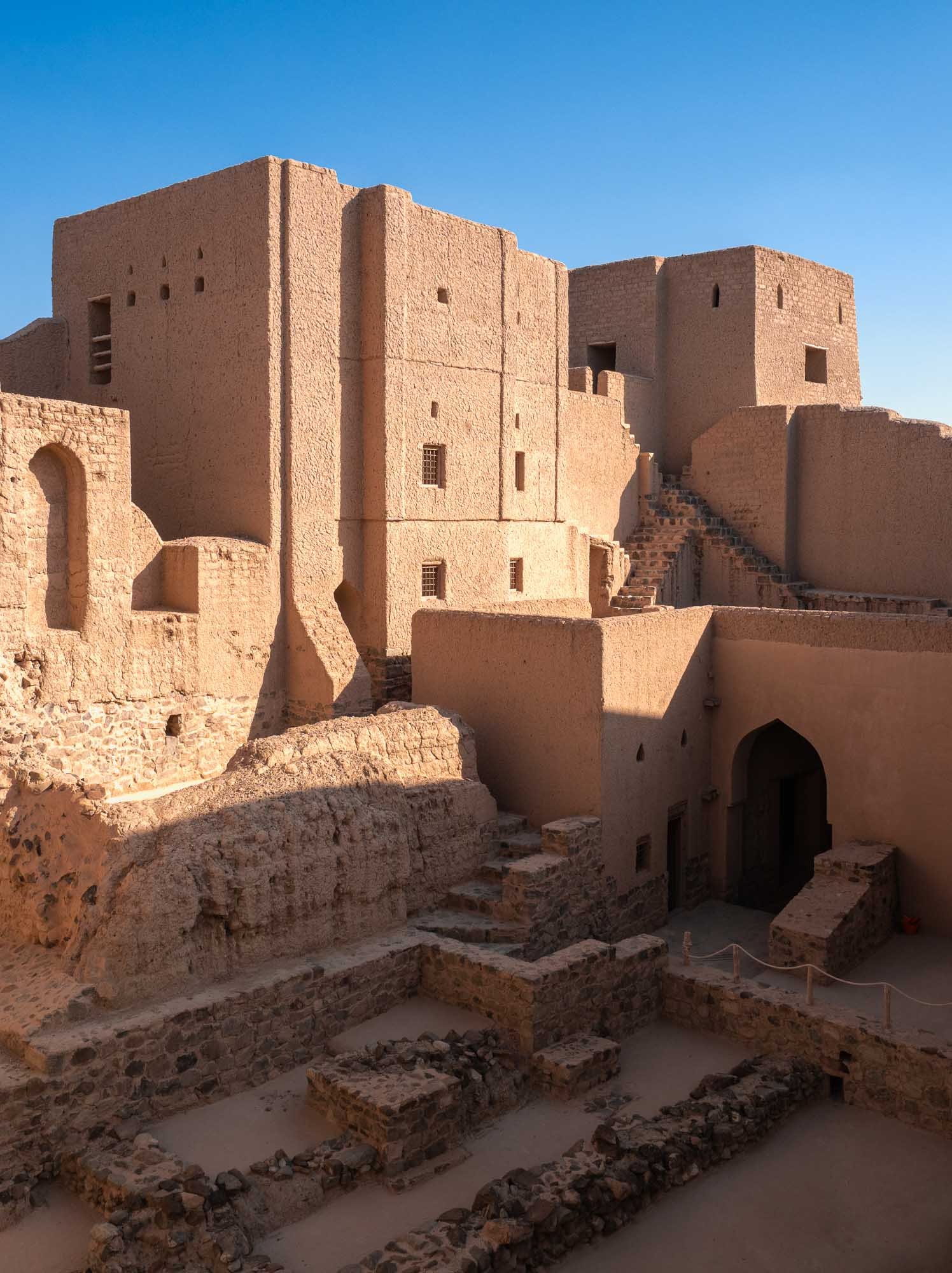
The Real World
We only encountered beautiful architecture and a cat though (not pictured).

Complex
The fort is part of a bigger settlement, including a 13km wall, pieces of which you can still spot in the mountains surrounding it.
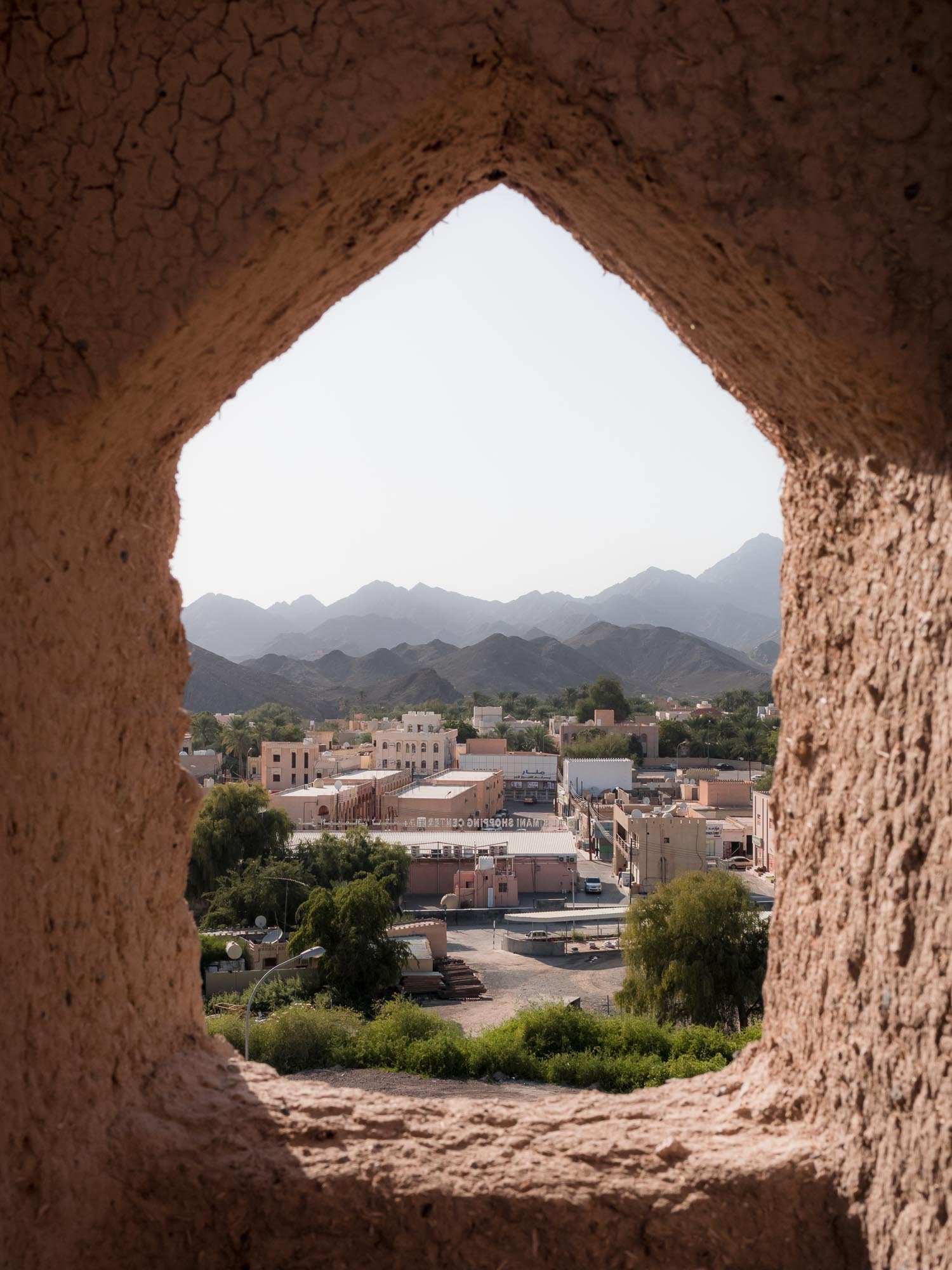
Views
As with all the forts in the area, this one also features beautiful Hajar mountain scenery from its windows.
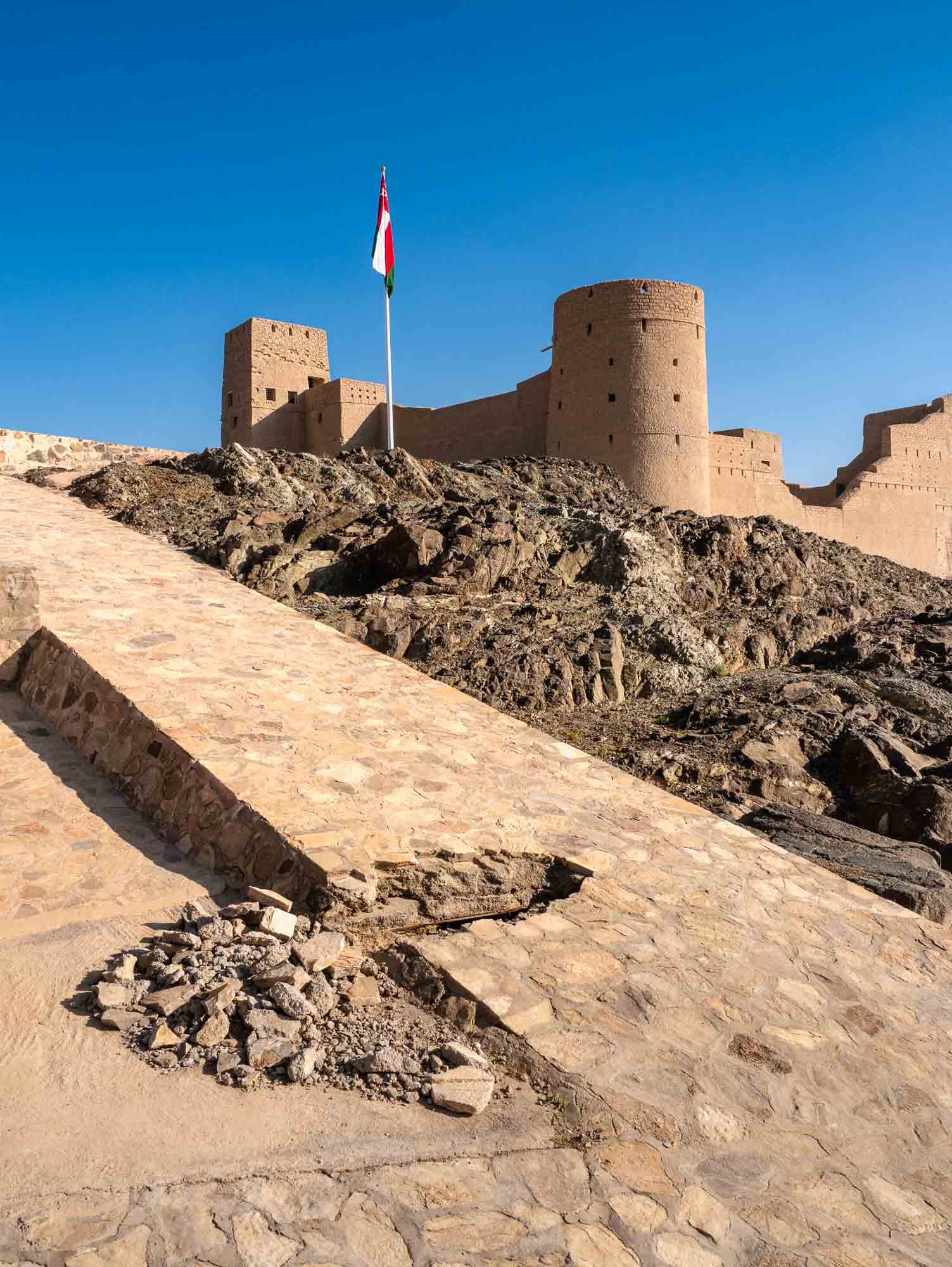
Restoration
The fort was fully restored in 2012, but there is not a lot of visitor information available, unlike in Jabreen or Nizwa.

From Prayer
A group of young local men returning from prayer and walking past the abandoned village area surrounding the fort.
Al Hoota Cave
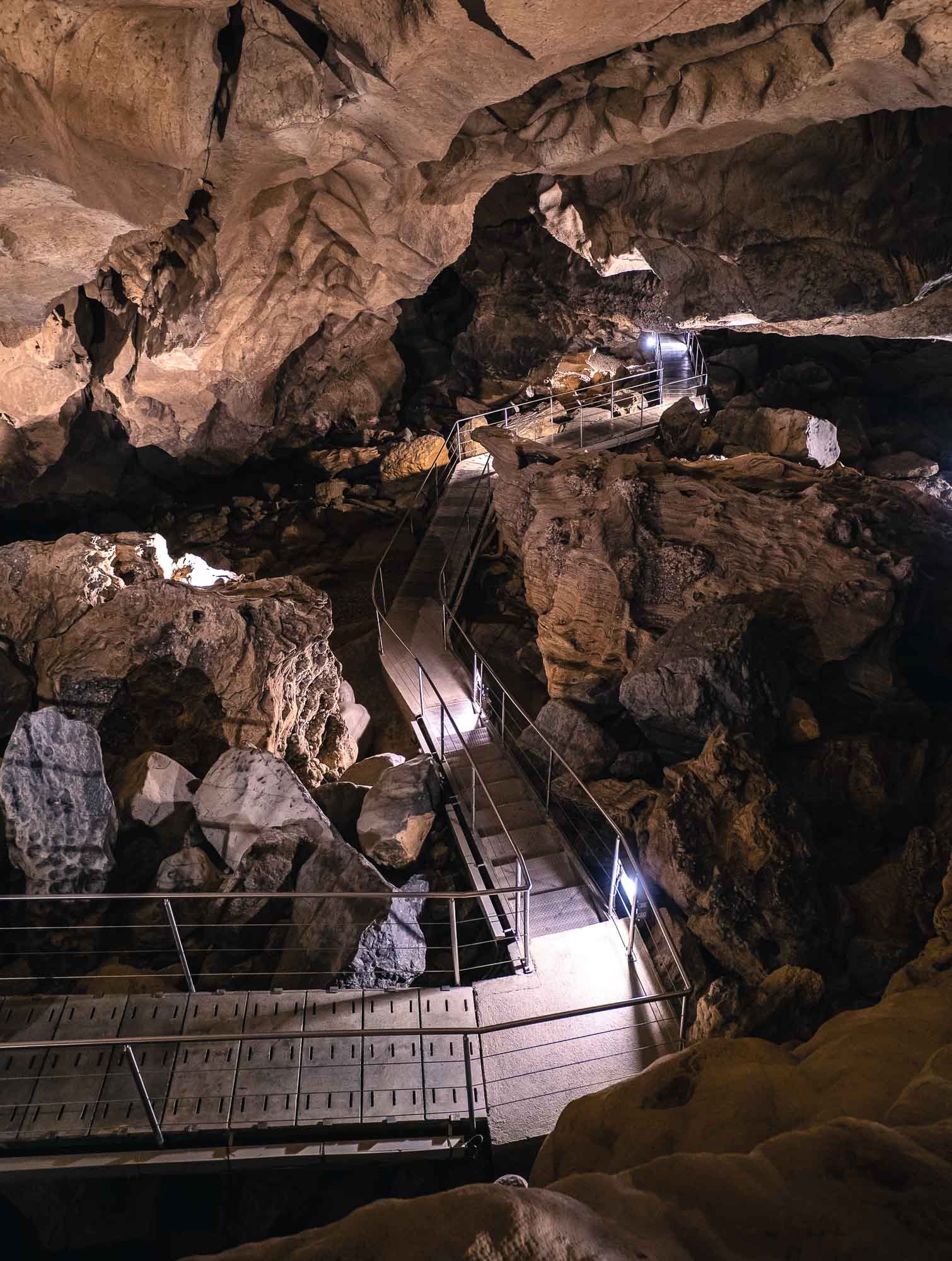
Hoota Cave
Another 30min further and you reach Hoota Cave, probably the most famous (of many) in Oman.
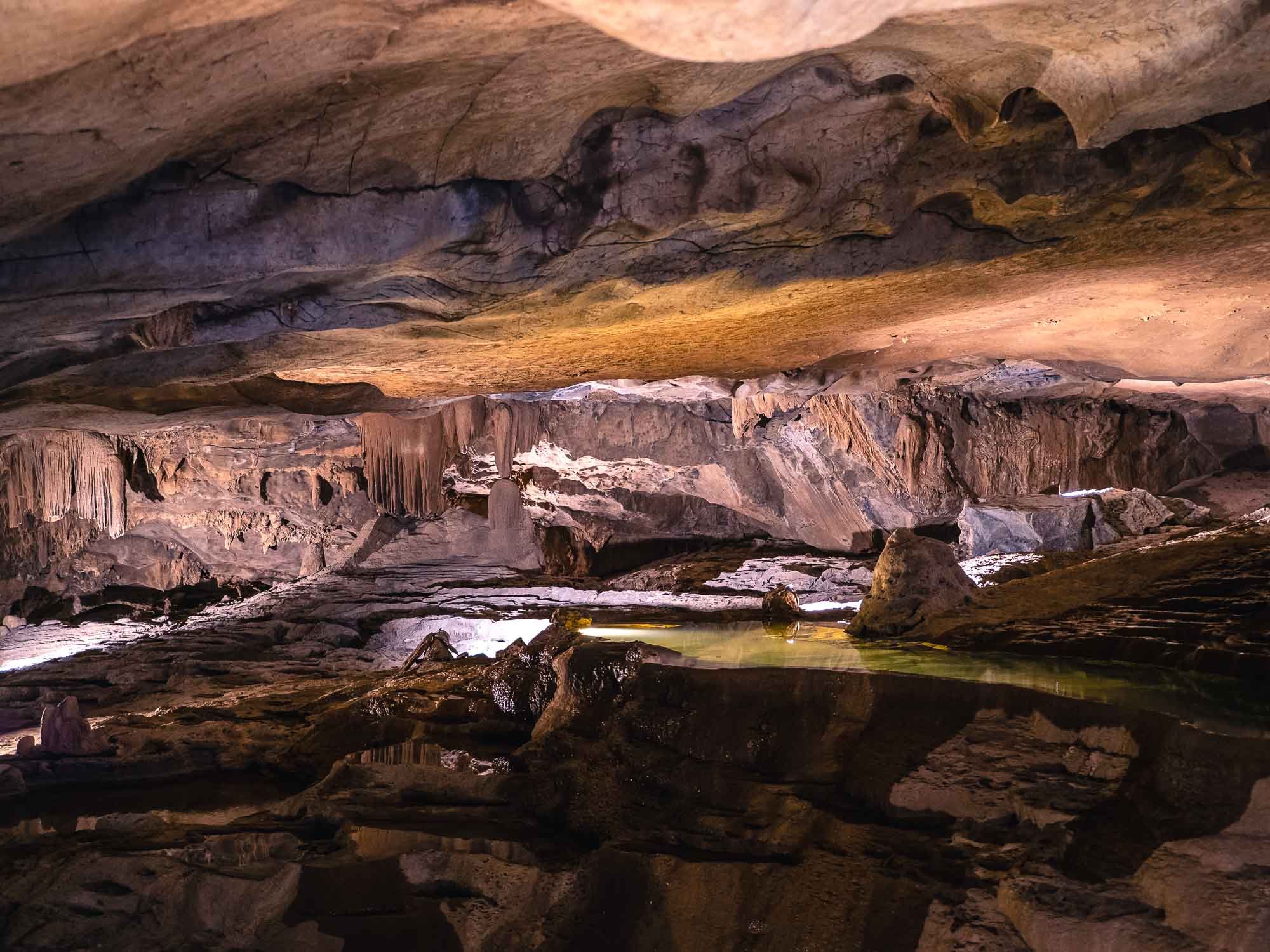
Accessible
It's the only cave in the country that has been developed for tourism, although you can only access 500m of its total 4km length.
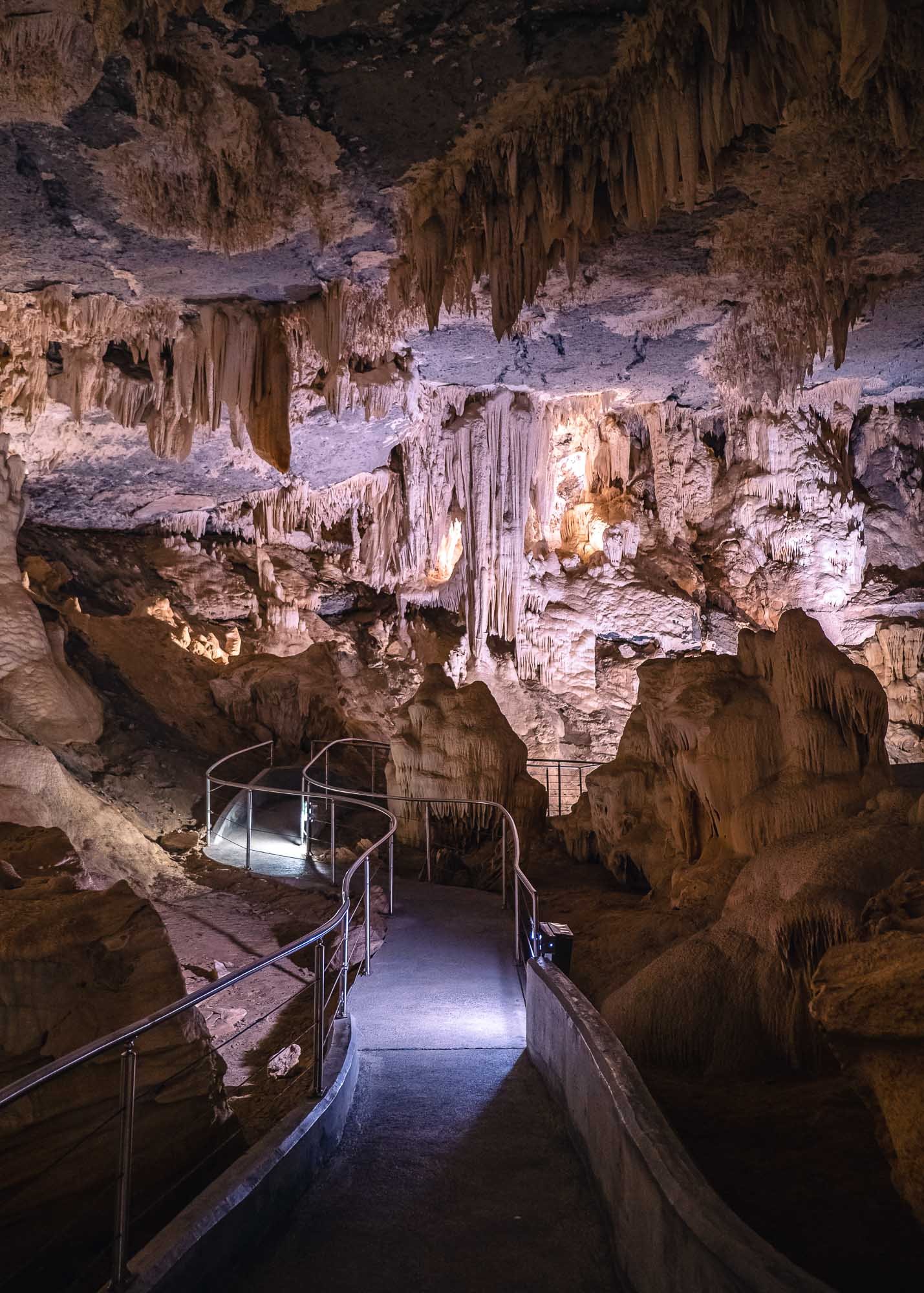
Impressions
The cave is a nice example of a Karst cave with some stalactites and stalagmites.
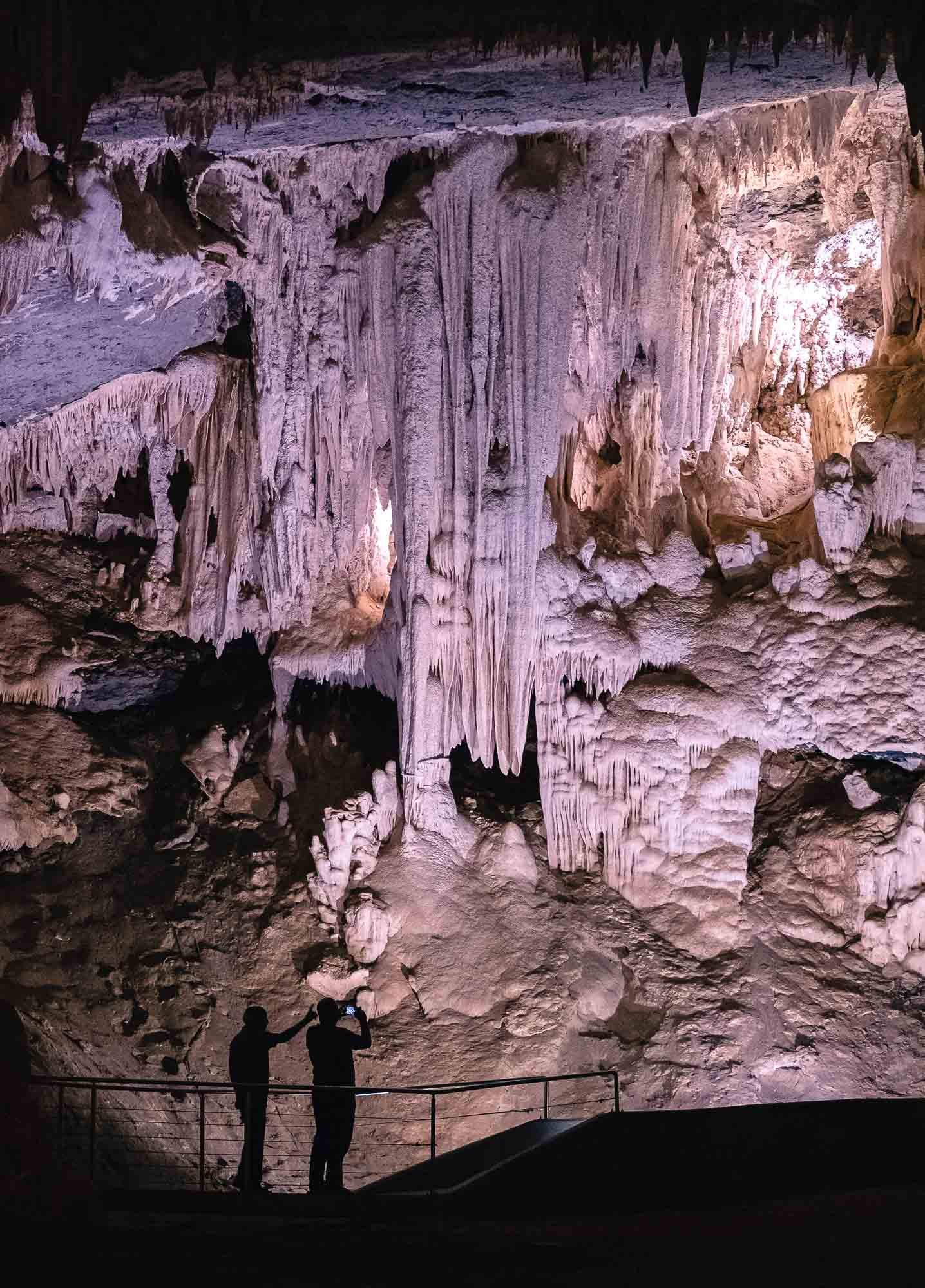
Comparison
Having said that, if you've visited some of the large and famous caves around the world, this one may not completely wow you - it's definitely worth the small detour on this route though.

Blind Fish
The cave features year round water, providing a habitat for tiny blind cave fish living in its 4 lakes, one of which is visible below.
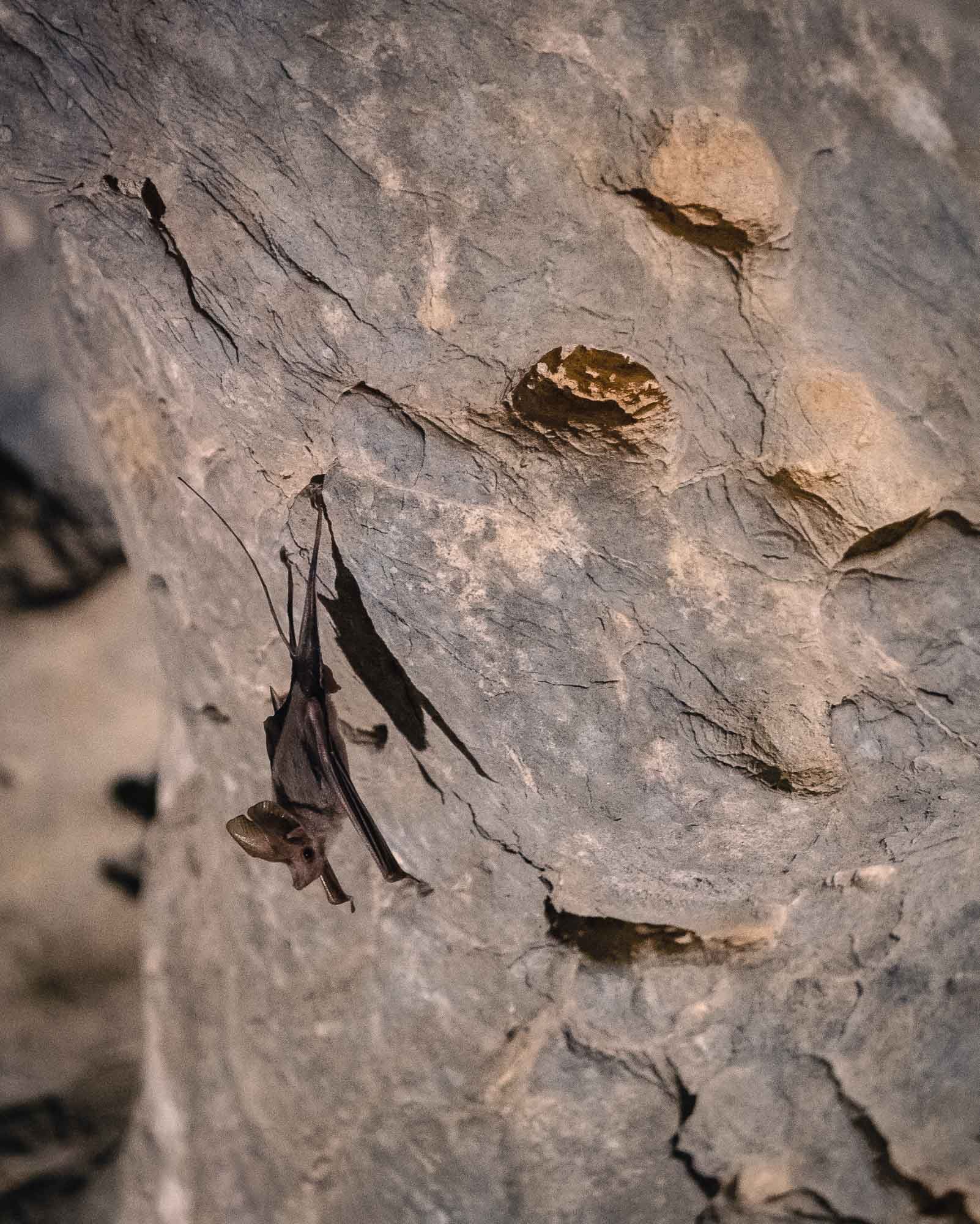
Chilling
...and you get to see some bats hanging from the ceiling.
Nizwa
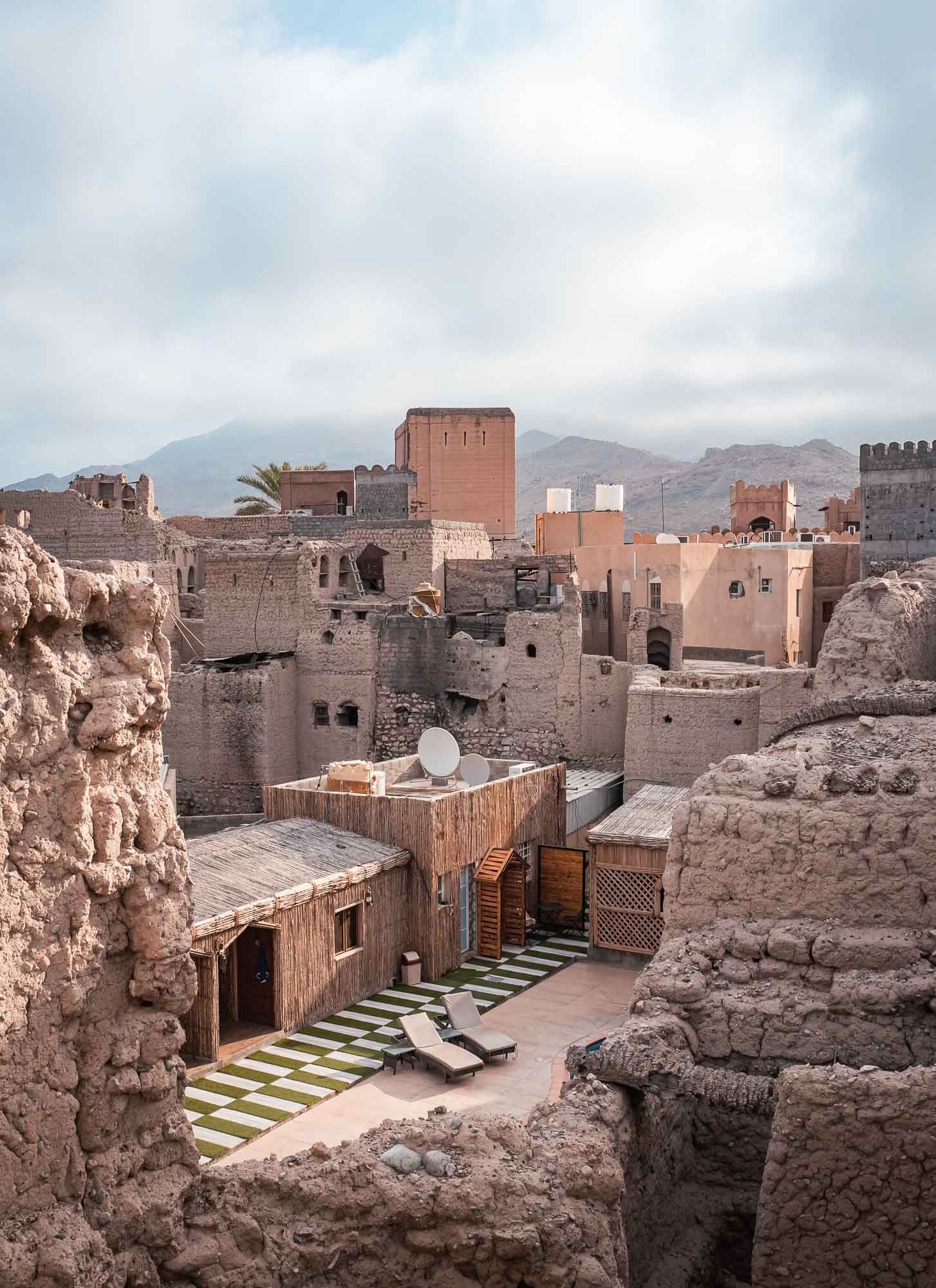
Views of Nizwa
The view from Antique Inn's rooftop in Nizwa, our place for the night.

Former Glory
Nizwa is one of the oldest cities in Oman and was the capital in the 6/7th century.
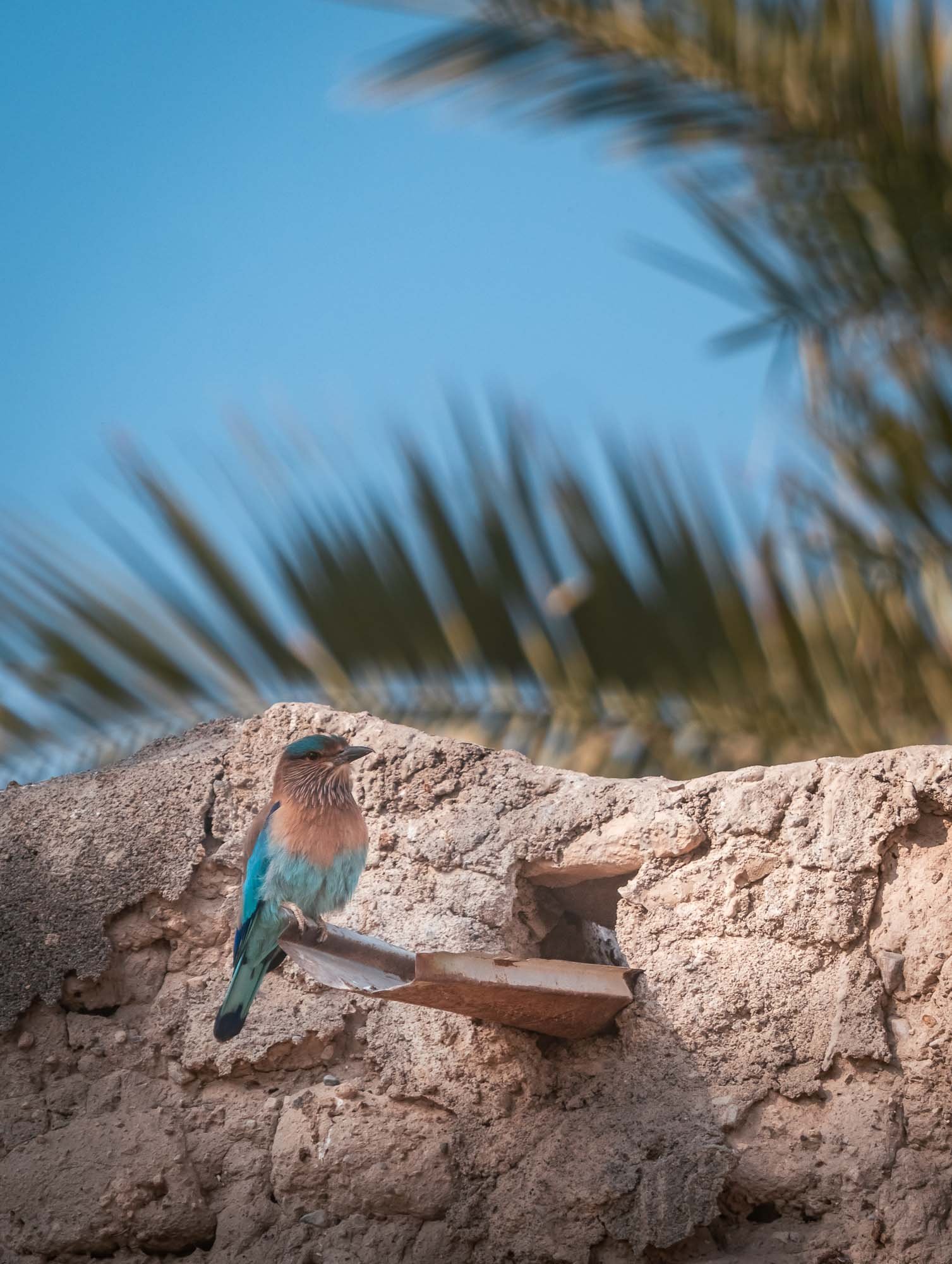
Indian Roller
A very common bird in this area around the farms. Particularly beautiful in flight when it spreads its blue wings.
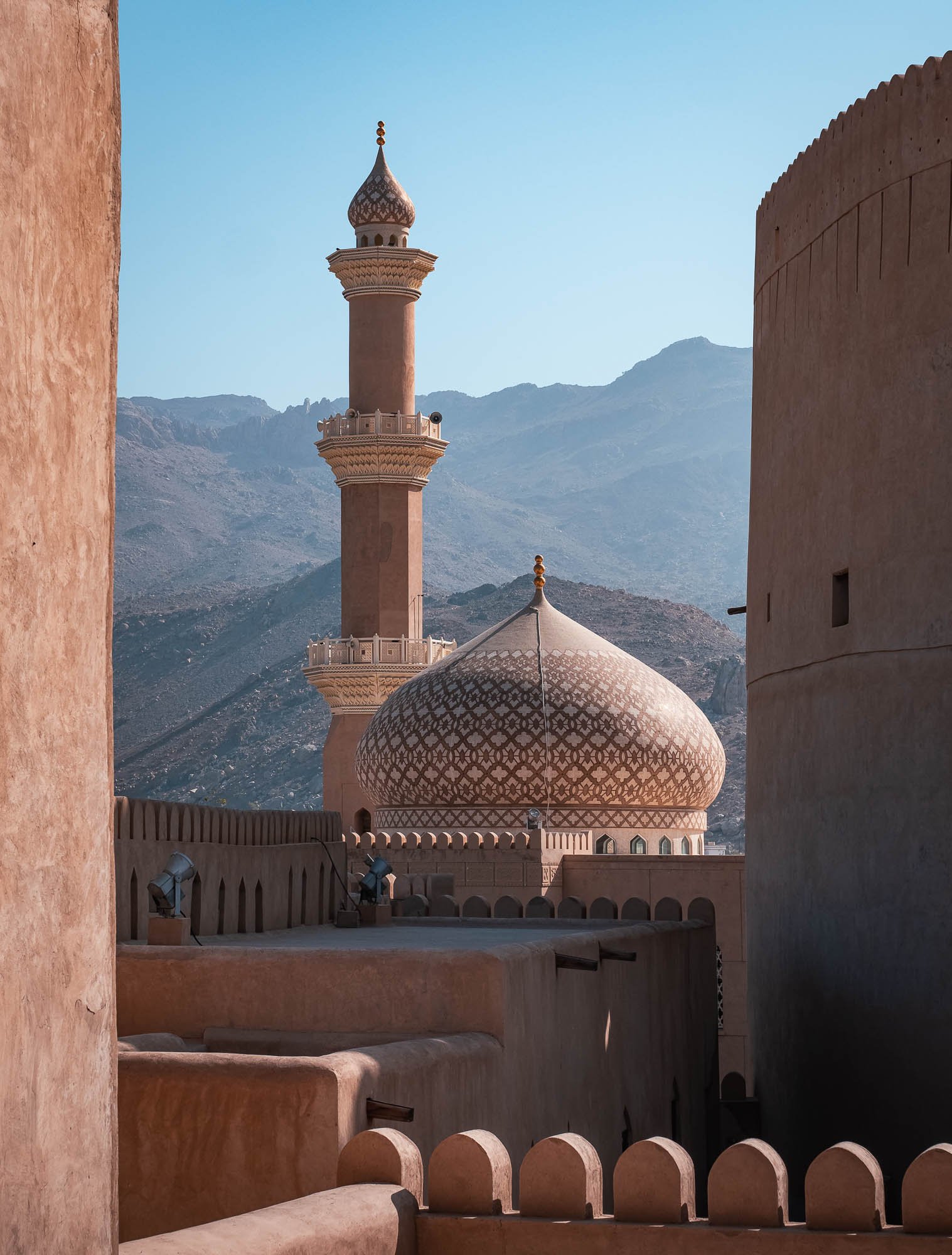
Al Qala'a Mosque
As seen from the fort. Nizwa features some of the oldest mosques in the world.

Fort Views
The fort was built in 1688, and sits above an underground stream.
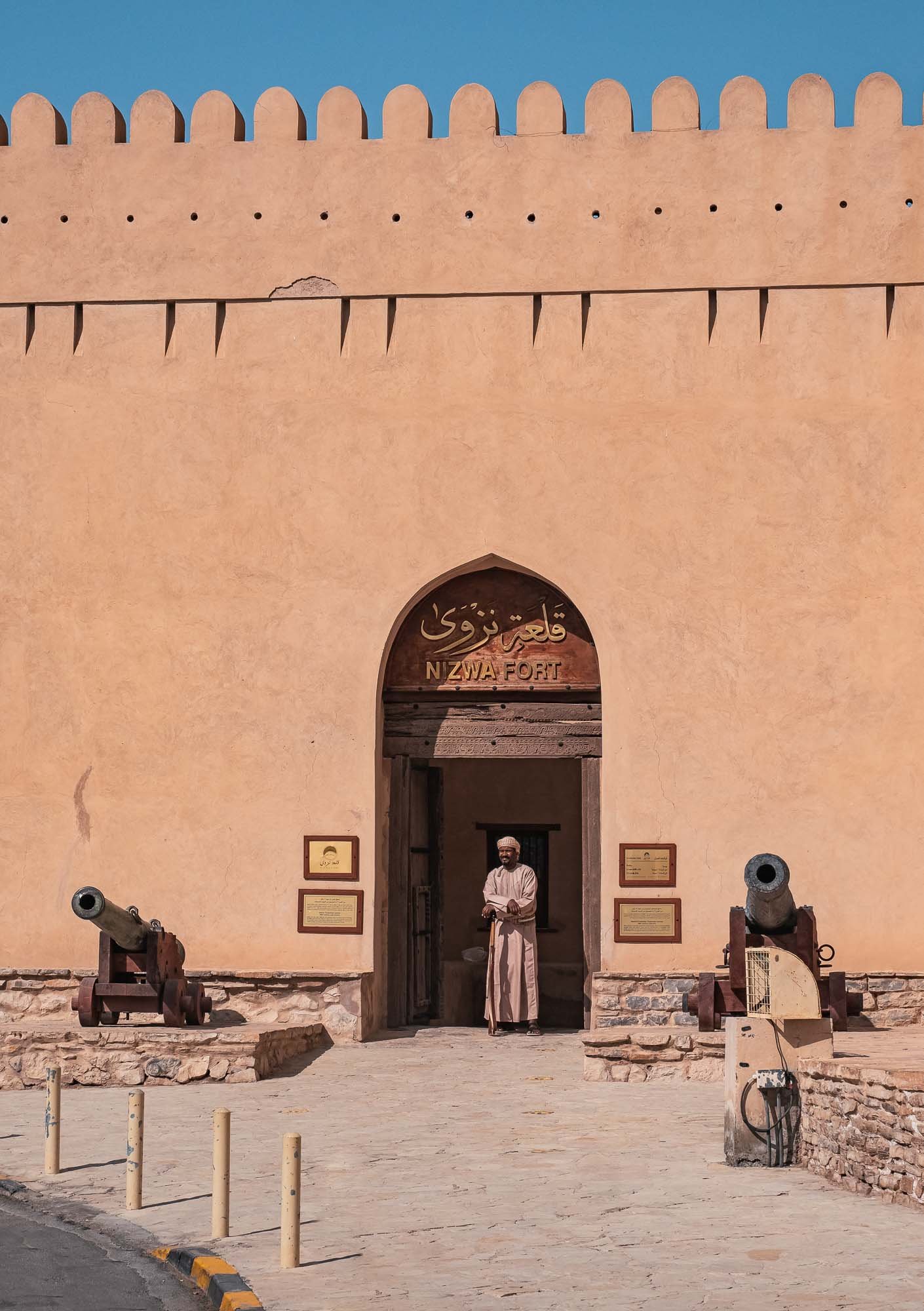
Entrance
The entrance to the fort, coincindentally guarded in this photo for that authentic flair.
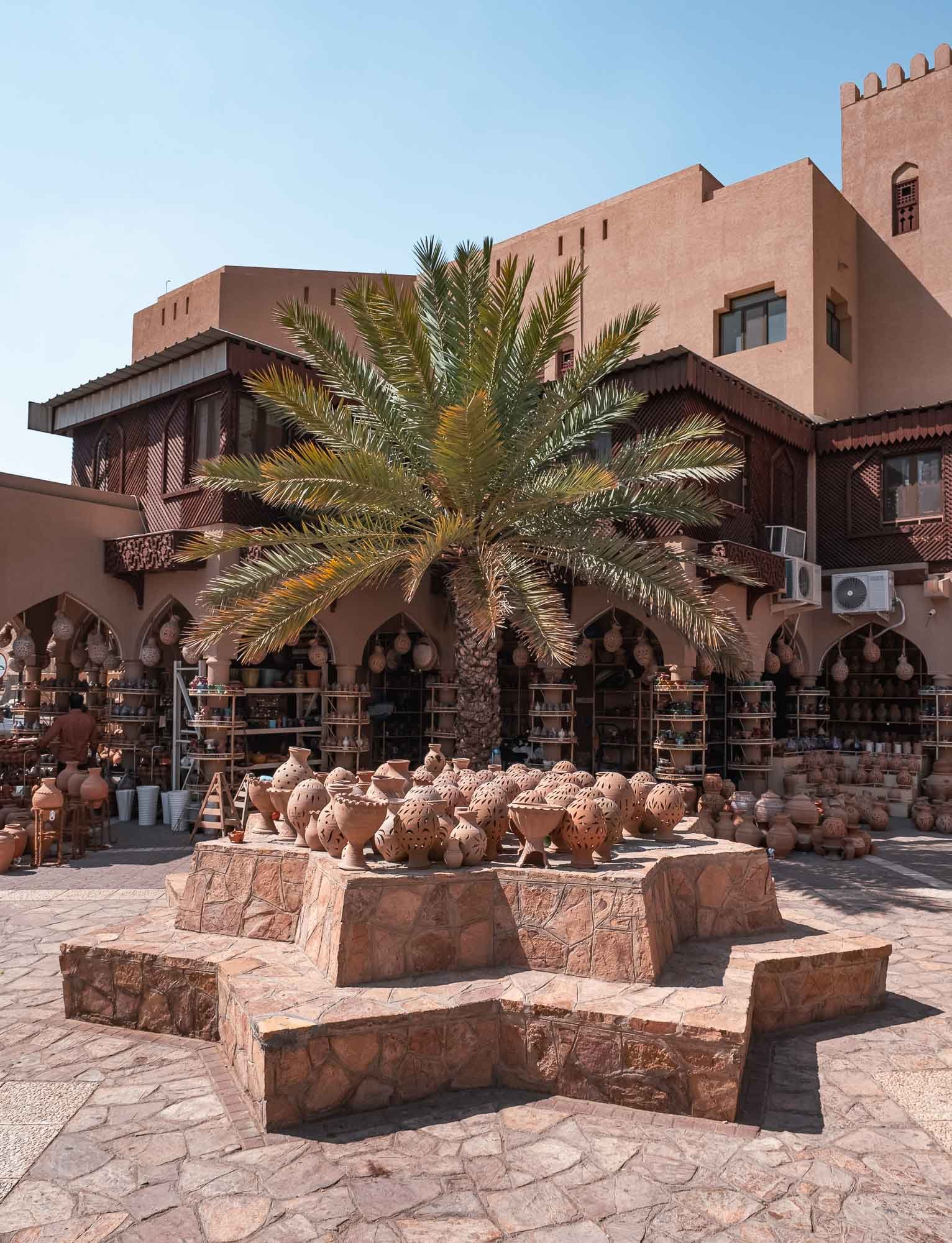
Nizwa Souq
The outside area near the entrance to the souq, selling pottery and other homeware goods.

Alleys
While it doesn't look it in this photo, Nizwa Souq is one of the most important and oldest in the country.
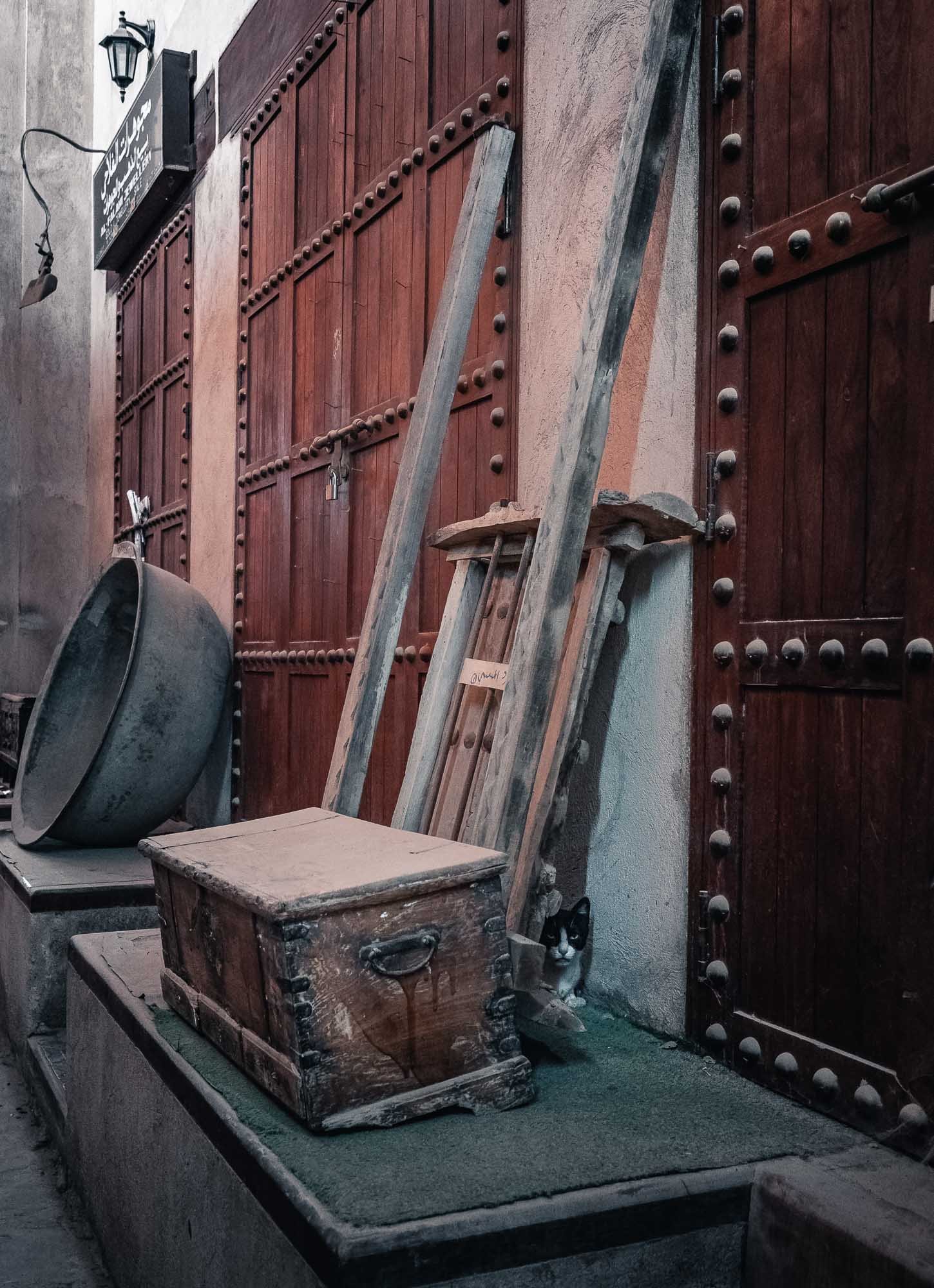
Salesman
During our visit, it was primarily occupied by this fellow.
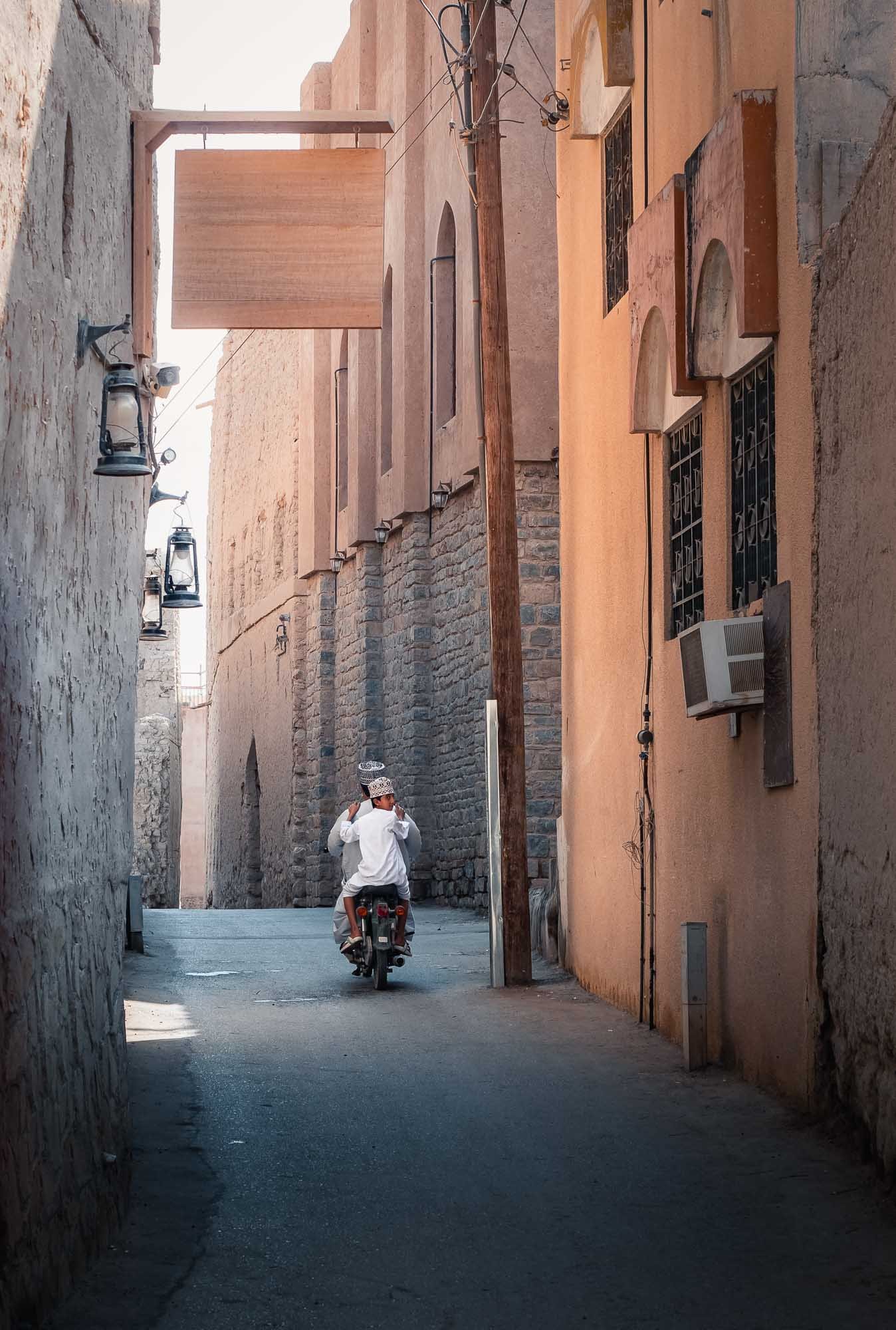
Transport
The small tight roads running through the old town are mainly accessible this way.
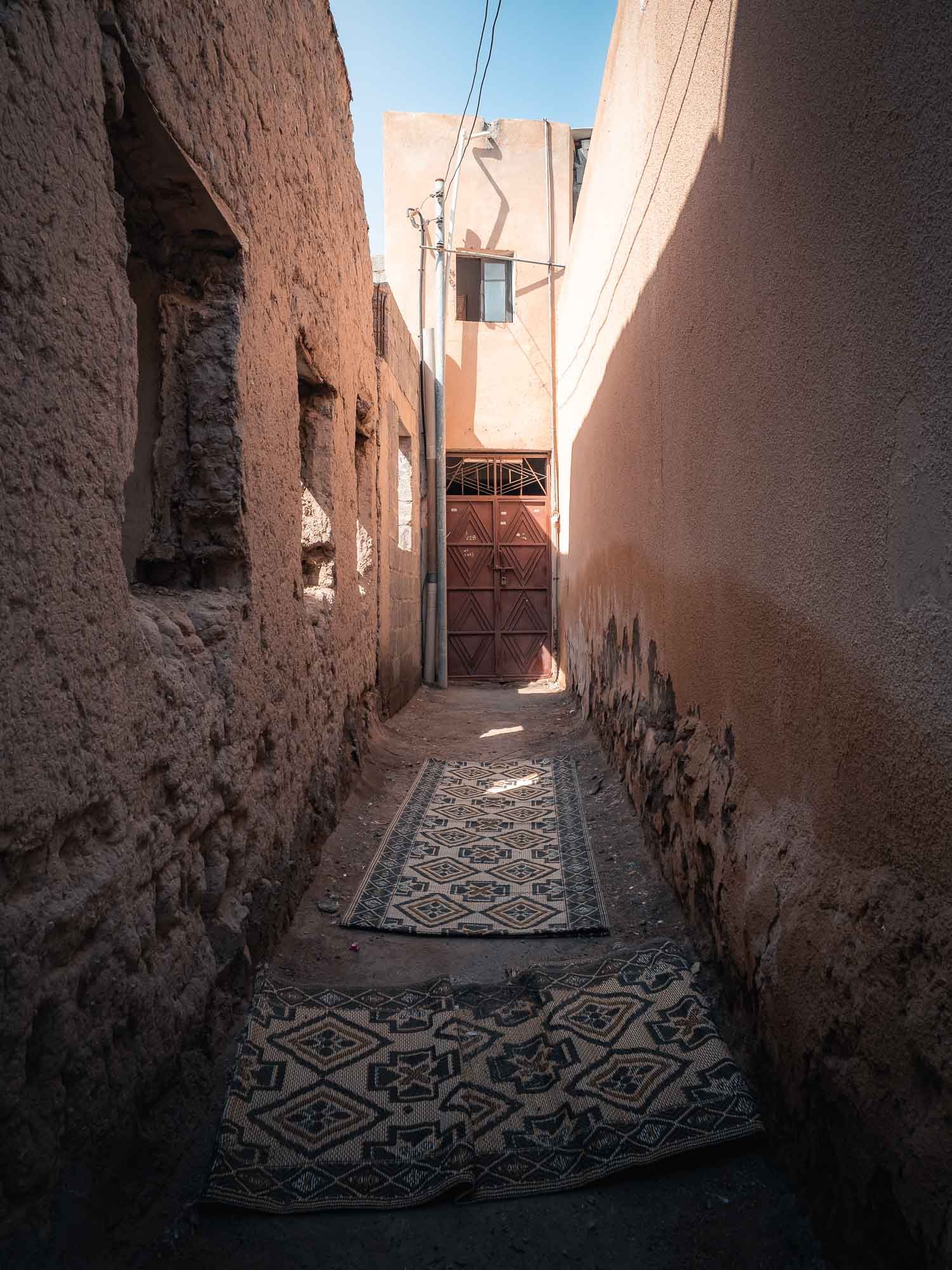
Old Town
While many of the houses are crumbling and abandoned, some are still occupied.
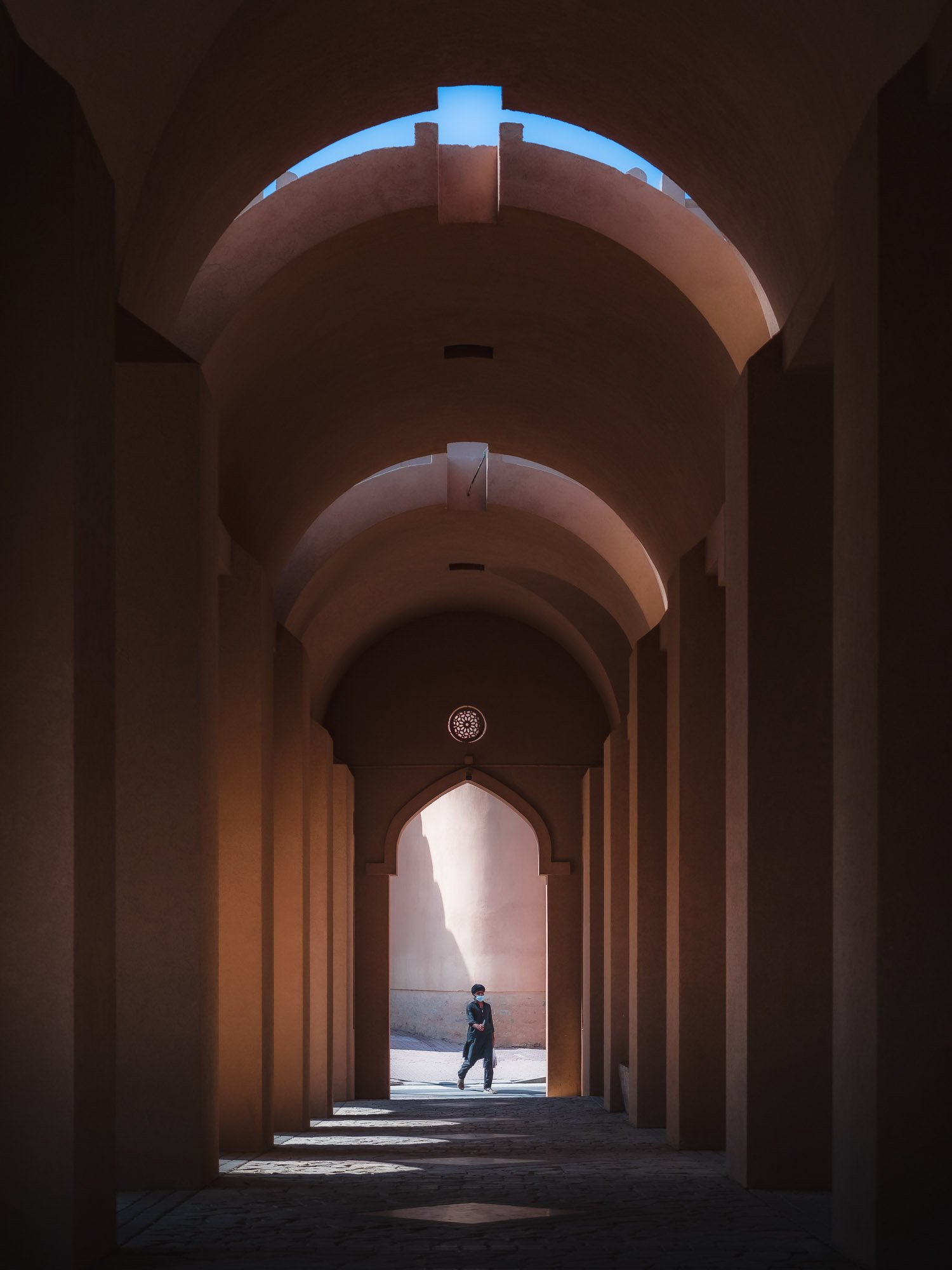
Grocery Duty
An Omani man passing through the shaded walkways of the market courtyard.
Jebel Akhdar
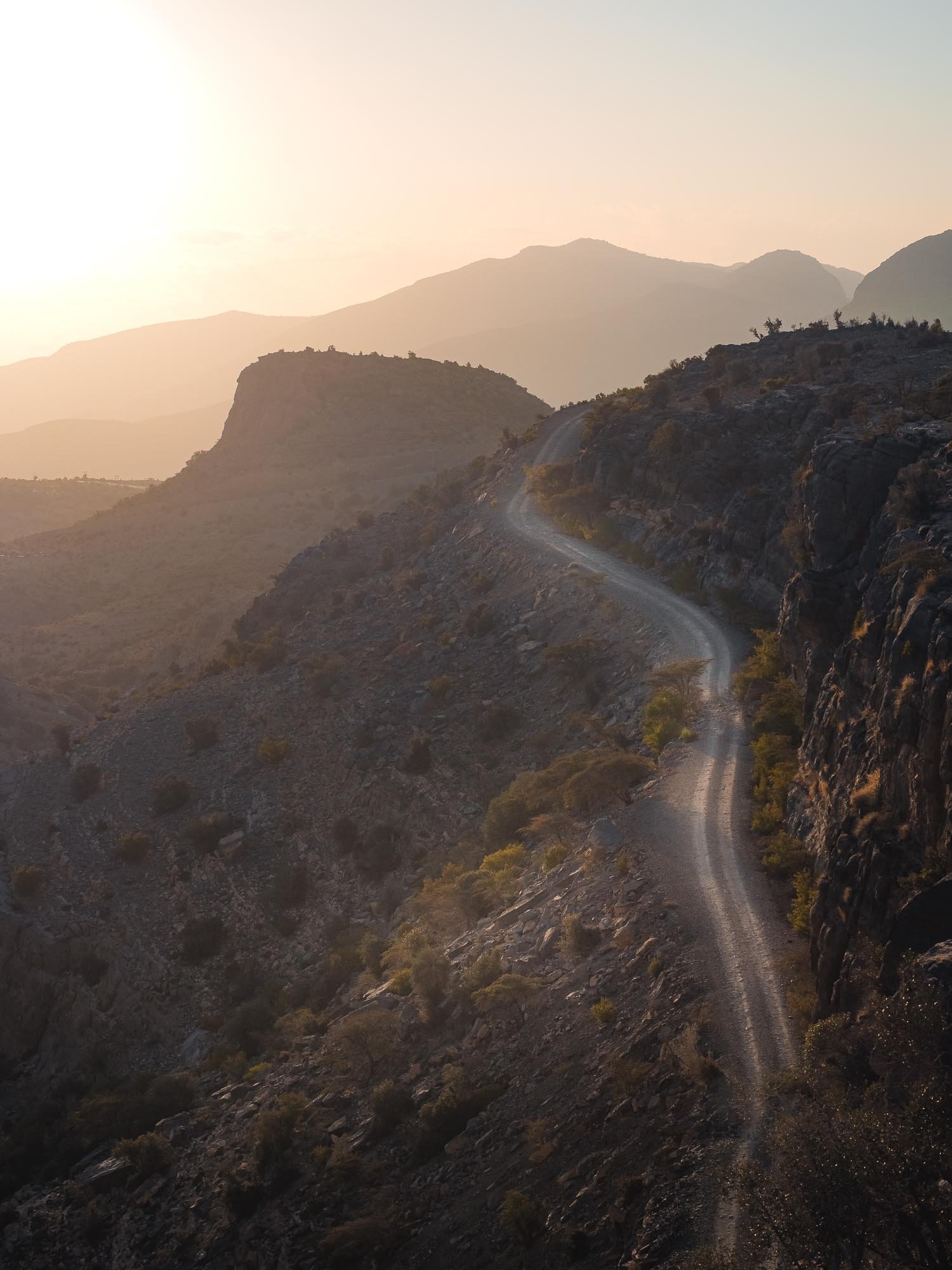
Upwards
Our next destination was Jebel Akhdar. It's an hour drive into the mountains, to an altitude of more than 2000 meteres. Although the roads are ok (better than in this photo), a 4x4 is required, otherwise you cannot pass the police checkpoint.
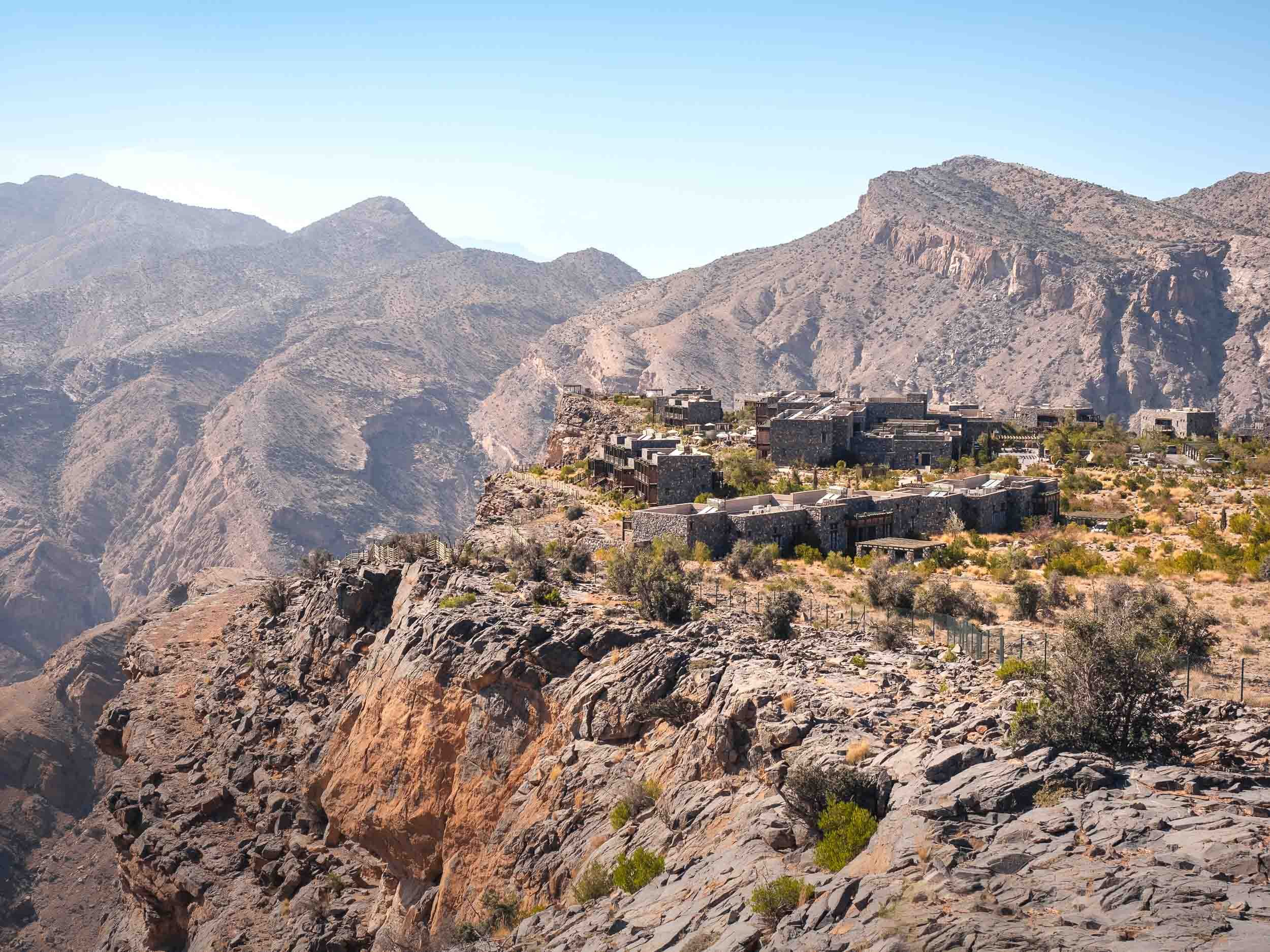
Alila Jabal Akhdar
We spent 2 nights in this amazing property, directly on the cliff of the one of the deepest canyons in the Hajar mountains.
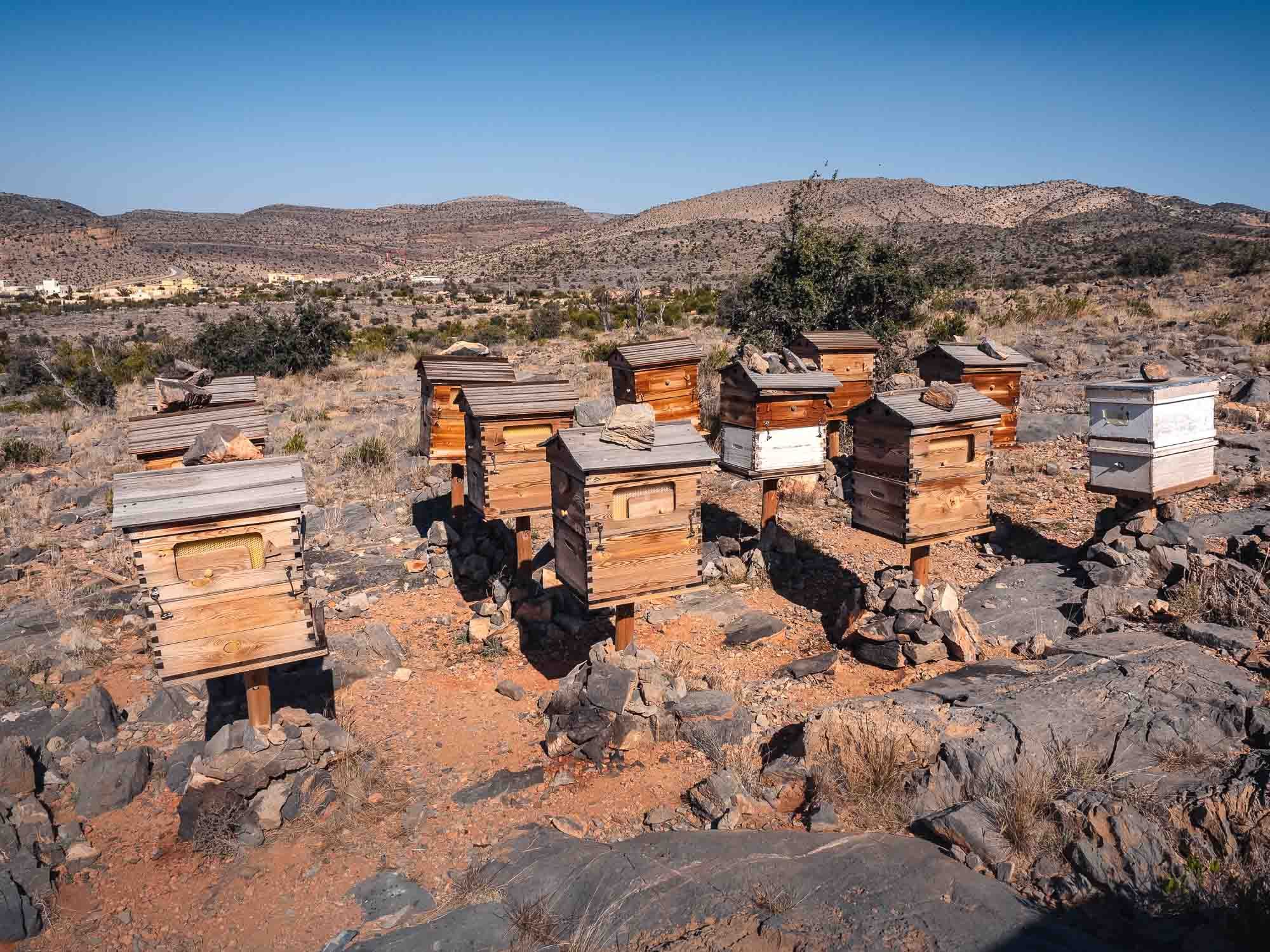
Beehives
The area round the hotel features many hikes, and a small trail directly in the grounds, with several interesting spots such as these beehives.
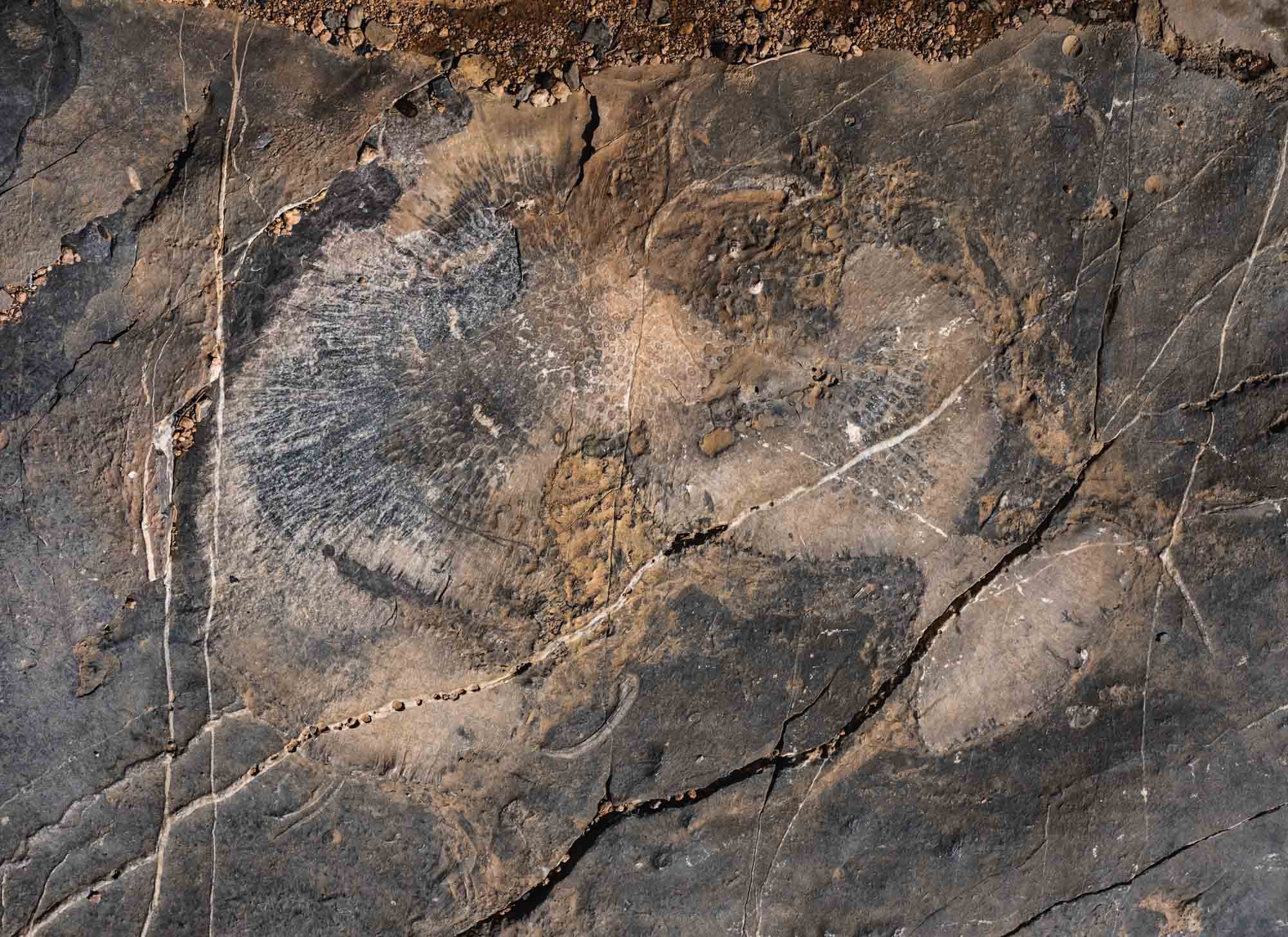
History
You can also find marine fossils everywhere, from millions of years ago when the area was under water.
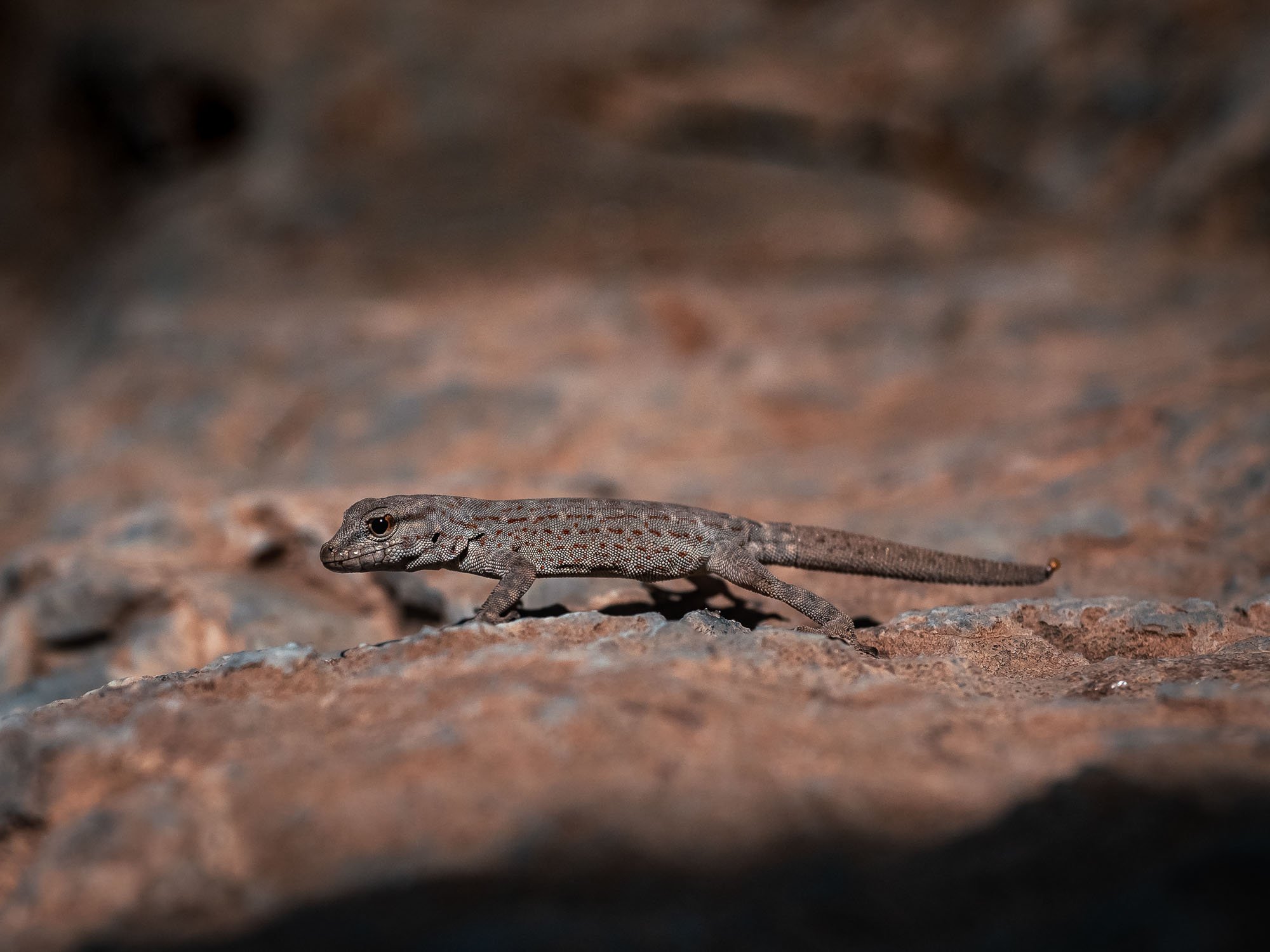
Visitors
Nowadays, the mountain is home to an abudance of Flora & Fauna - Akhdar literally means "green".
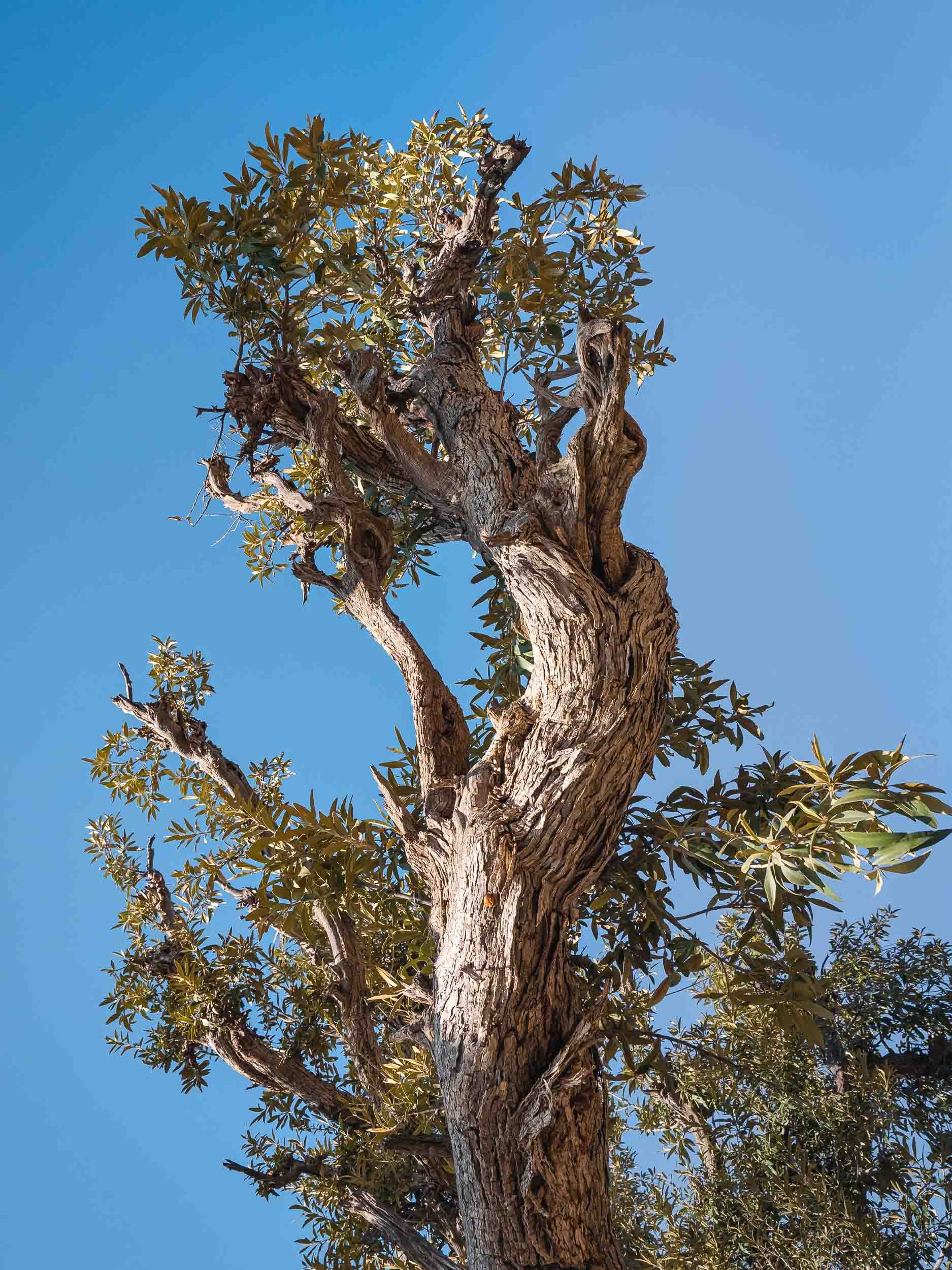
Wadi Walk
We spent the afternoon on a 4h hike through a nearby Wadi. The variety of trees is particularly interesting, including wild olive trees.

Water Source
The end of the trail brought us to this little dam, occupied primarily by frogs.
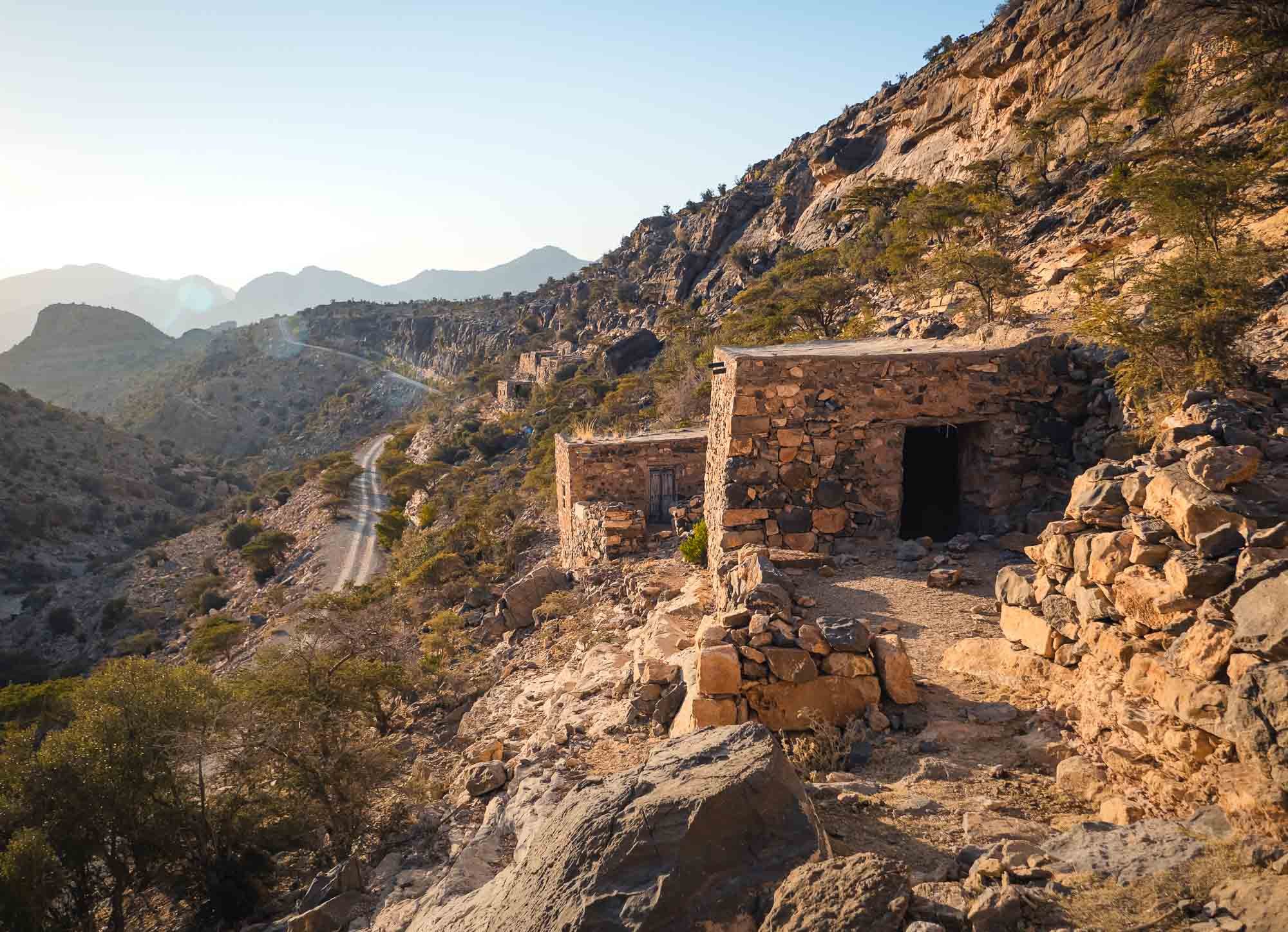
Abandoned
On the way back, we climbed upwards to find the crumbling houses of Sarab, a former village on the slopes of the Wadi.
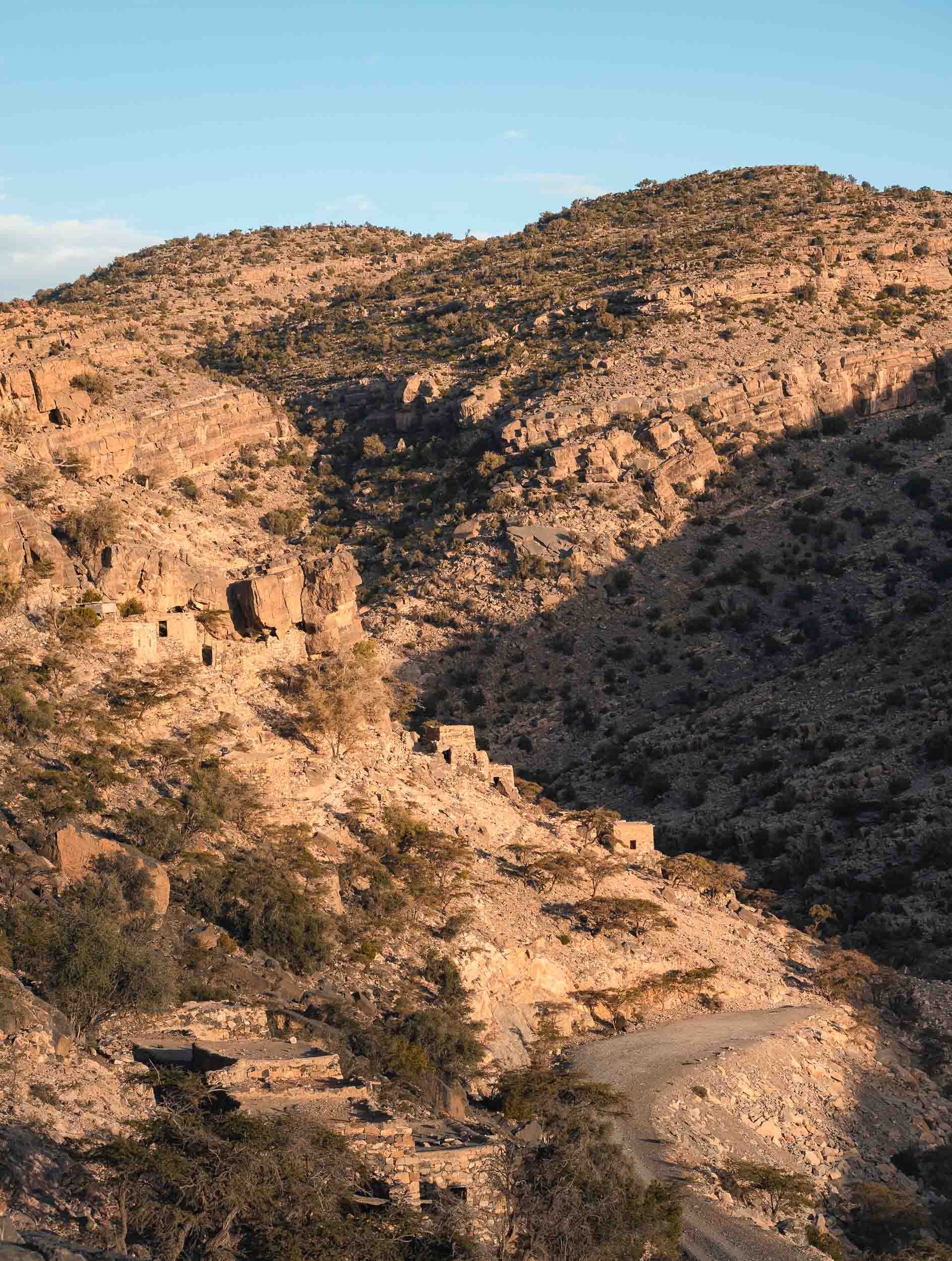
Illuminated
Sunset was the best time for this trail.

Sunset over Alila
Sometimes the scenery speaks for itself.
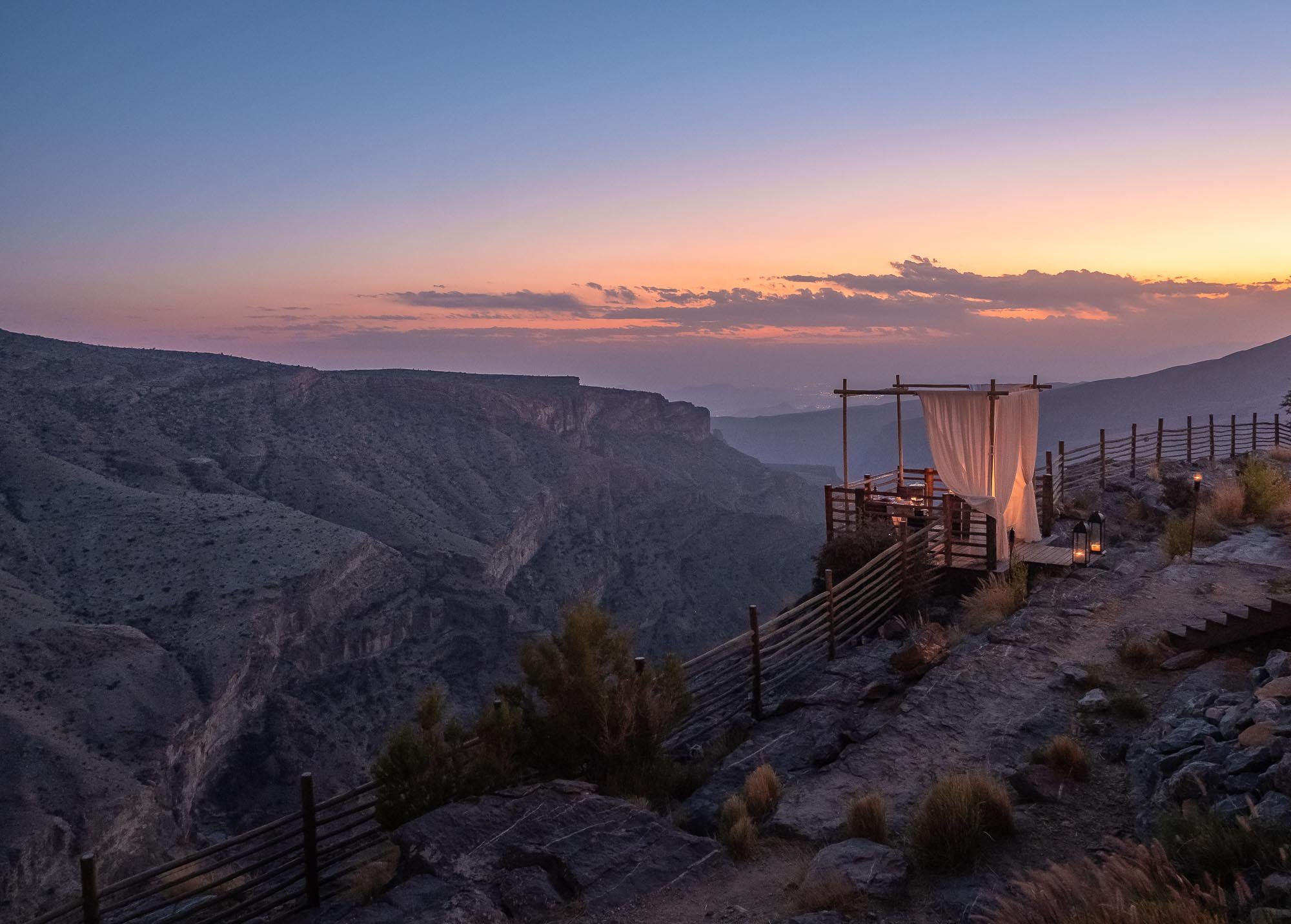
Cliff
Not a bad spot for dinner?
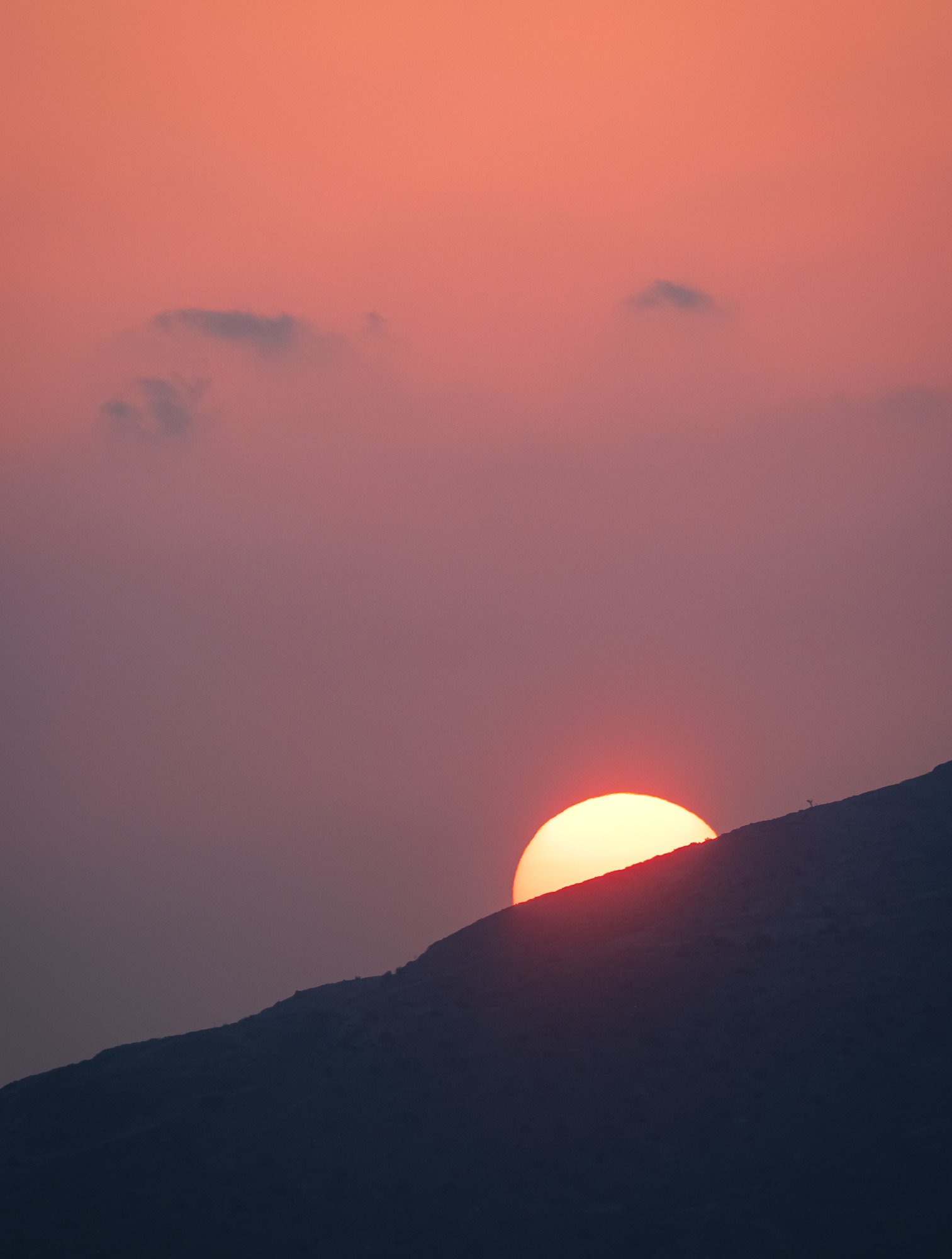
The Day's End
The sun setting behind the Hajar mountains in the distance, next to a little tree.
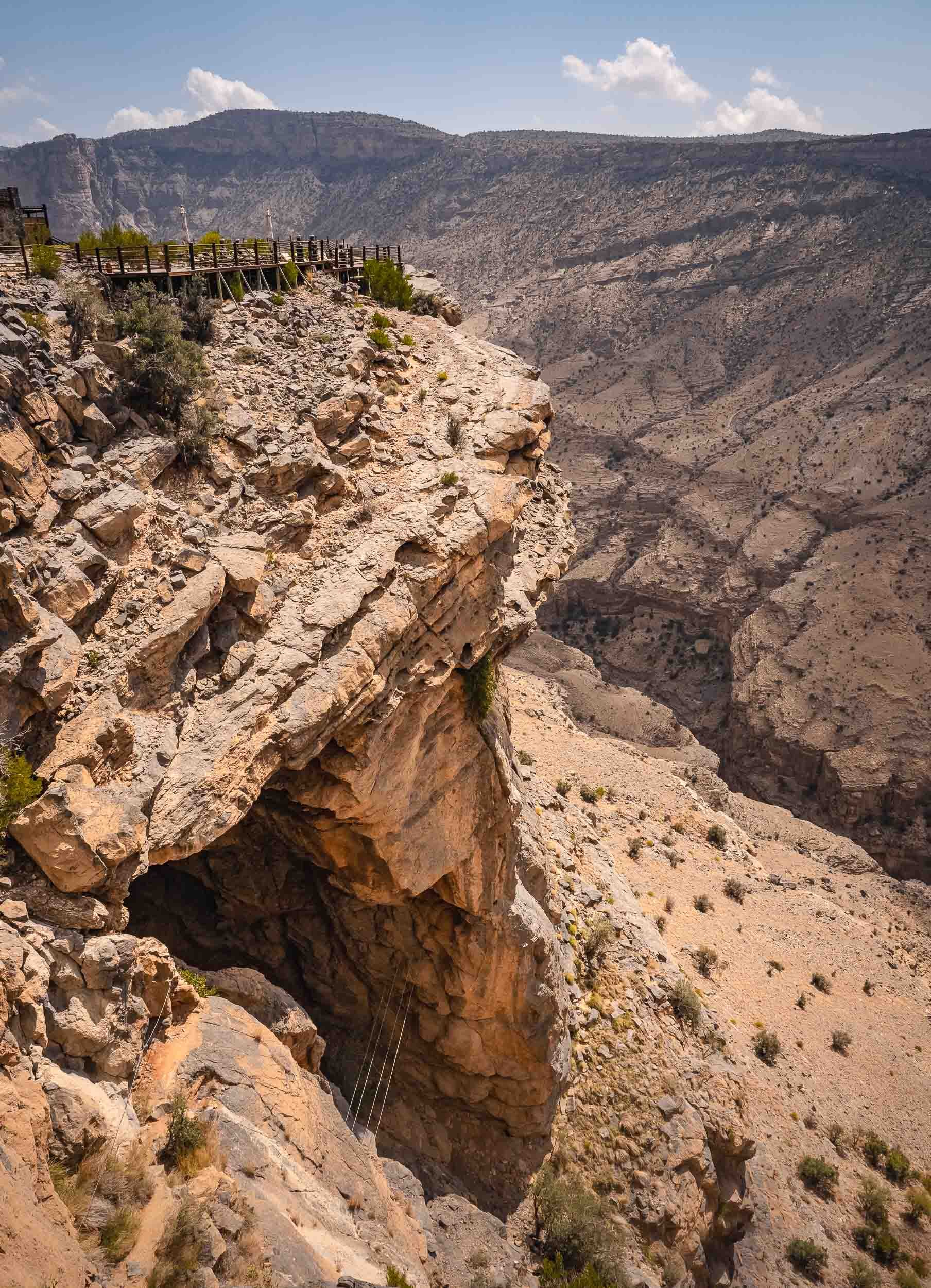
Via Ferrata
The next morning brought some adventure, as we climbed the via Ferrata, which literally starts at the hotel lobby. You can see the iron rope on the bottom left and the rope bridge across the cave in this image.

On the Edge
An incredible experience, and definitely recommended.
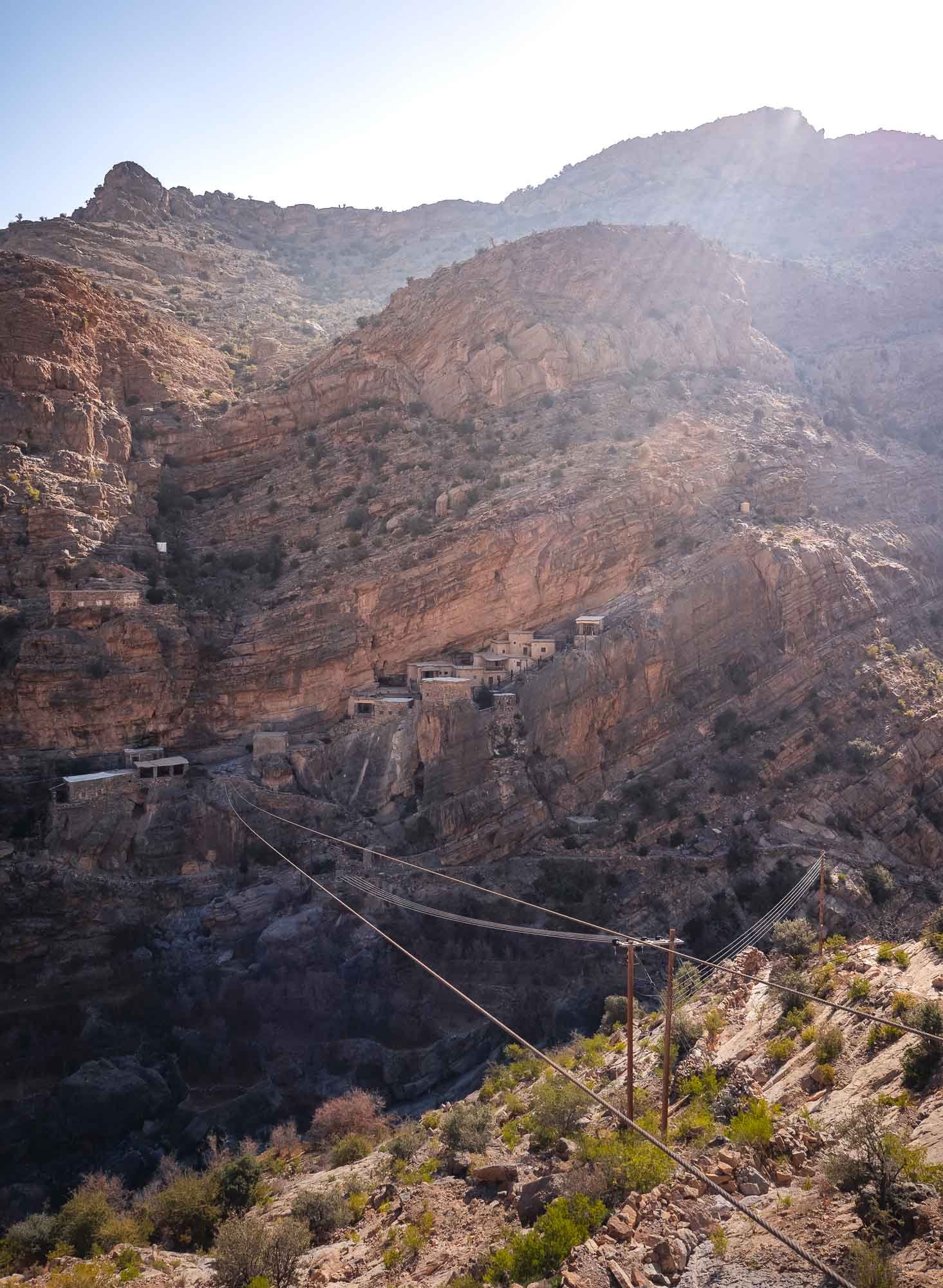
Alsuwjara Village
Our last day at Jabal Akhdar brought us to the cliff guest house, an old village from 500 years ago that is slowly being converted for tourism.
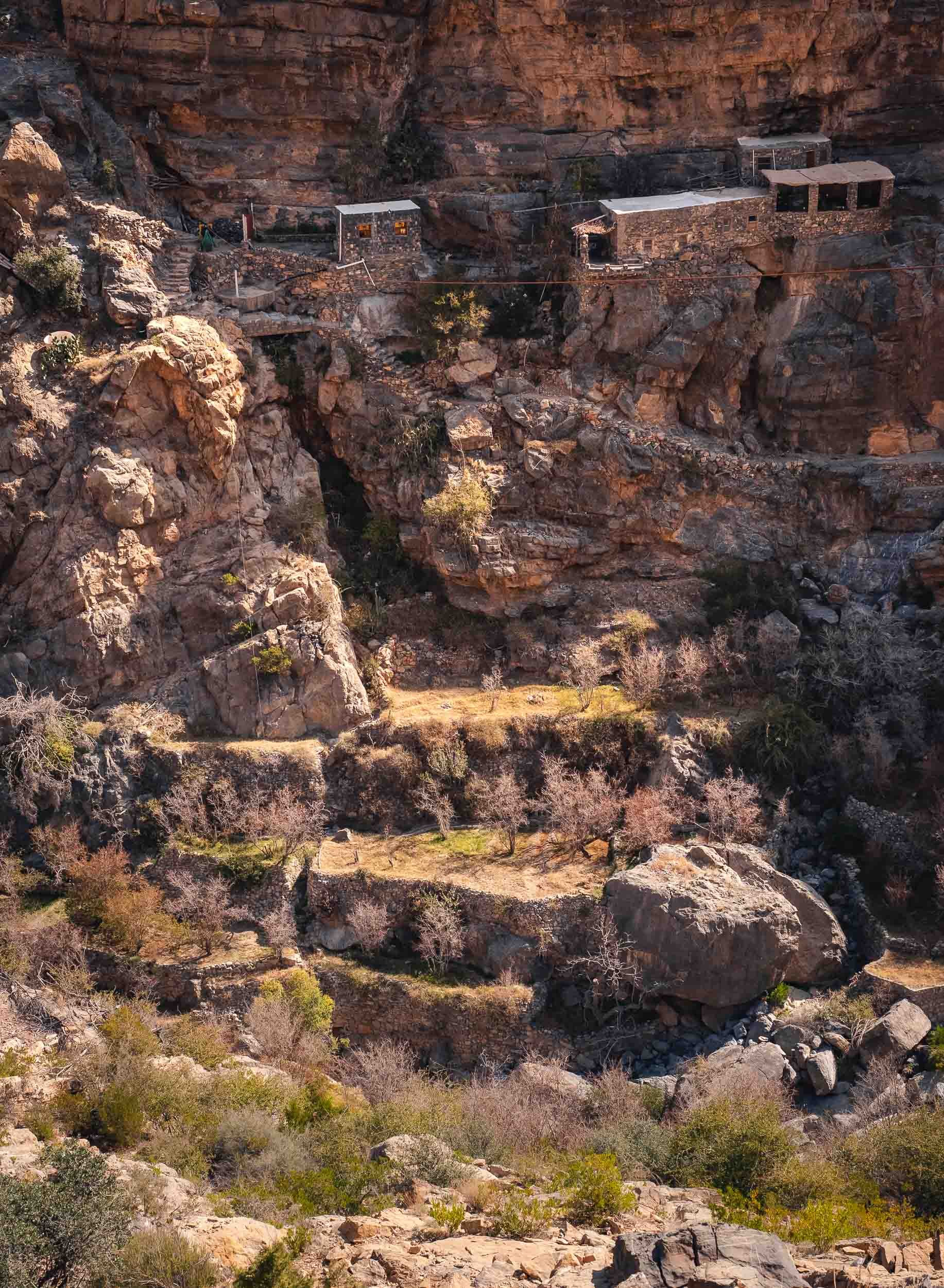
On the Rocks
We were lucky enough to get a tour organised directly by the local Omanis operating the place, who lived in the houses up until a few years ago.

Mountain Villages
We then moved to the towns of Al Aqr, Al Ayn and Ash Shirayjah, famous for their terraced farming, used to grow roses and other crops.
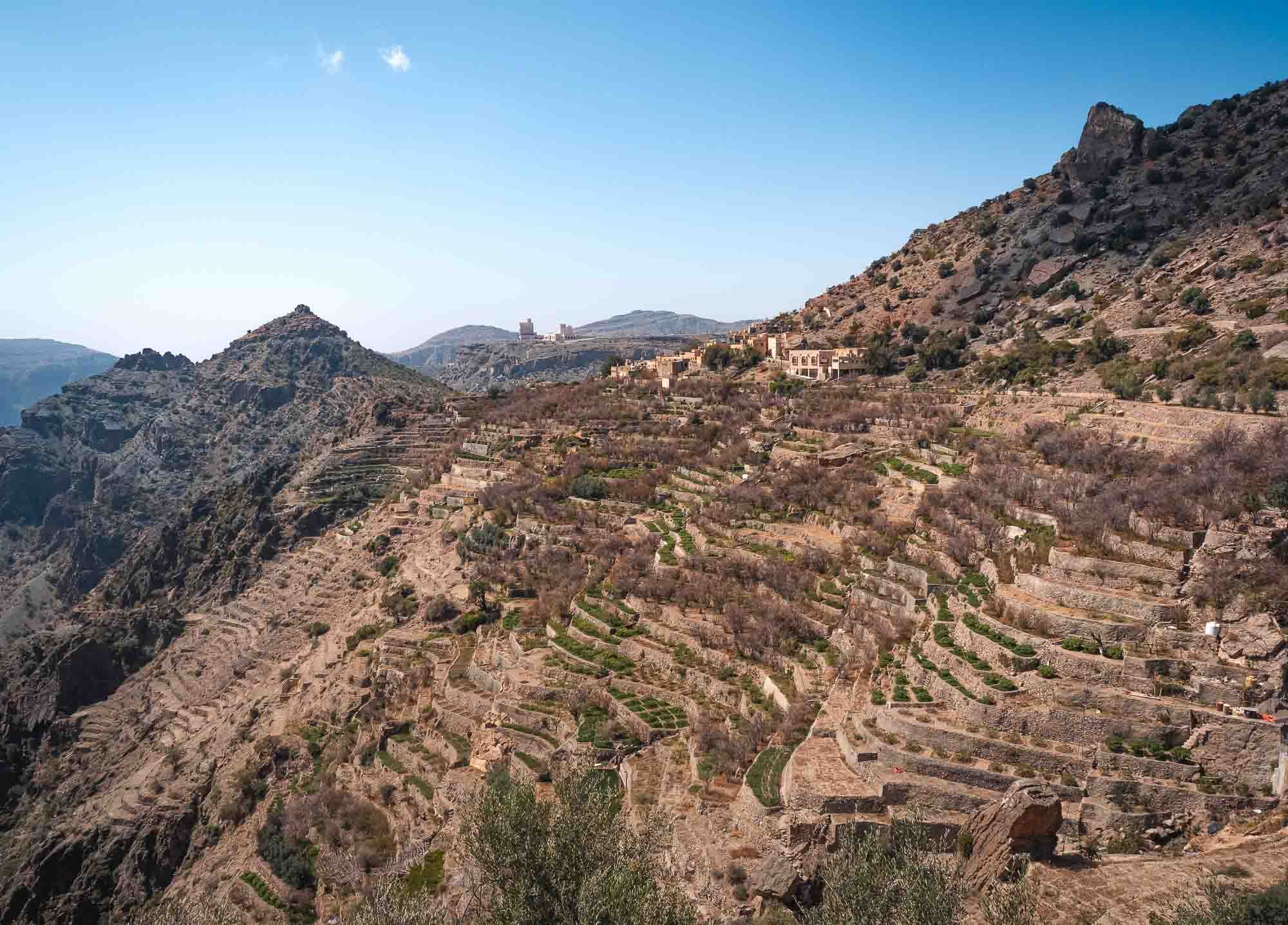
Farming
The terraces used to reach all the way into the wadi, but a lack of water in recent years meant a reduction in usable area. Nevertheless, the entire slope is green during the summer time.
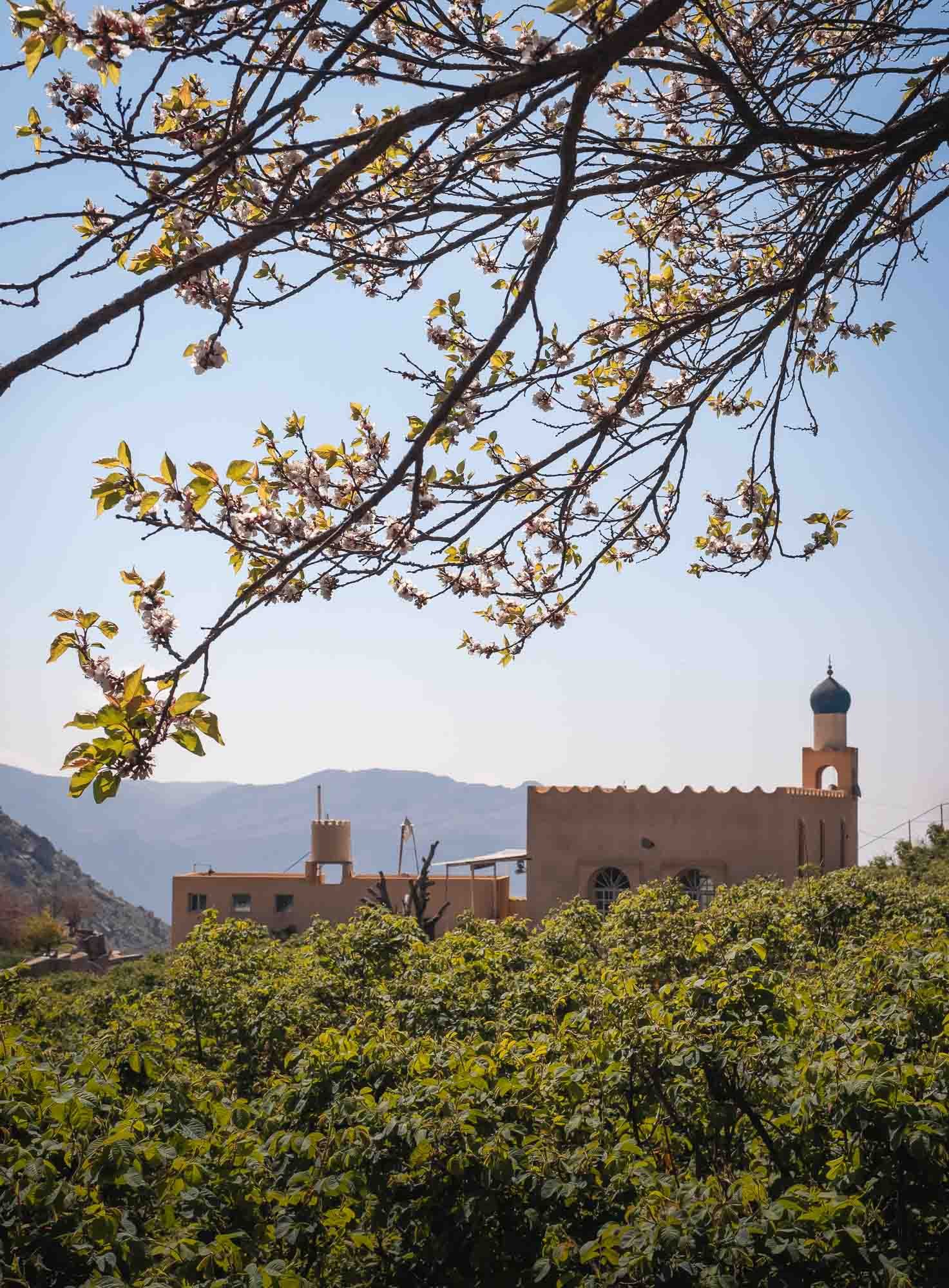
Pomegranate Season
One of the many blooming flowers at the time of our visit. The primary rose season was about to start as well.
Onwards to Muscat
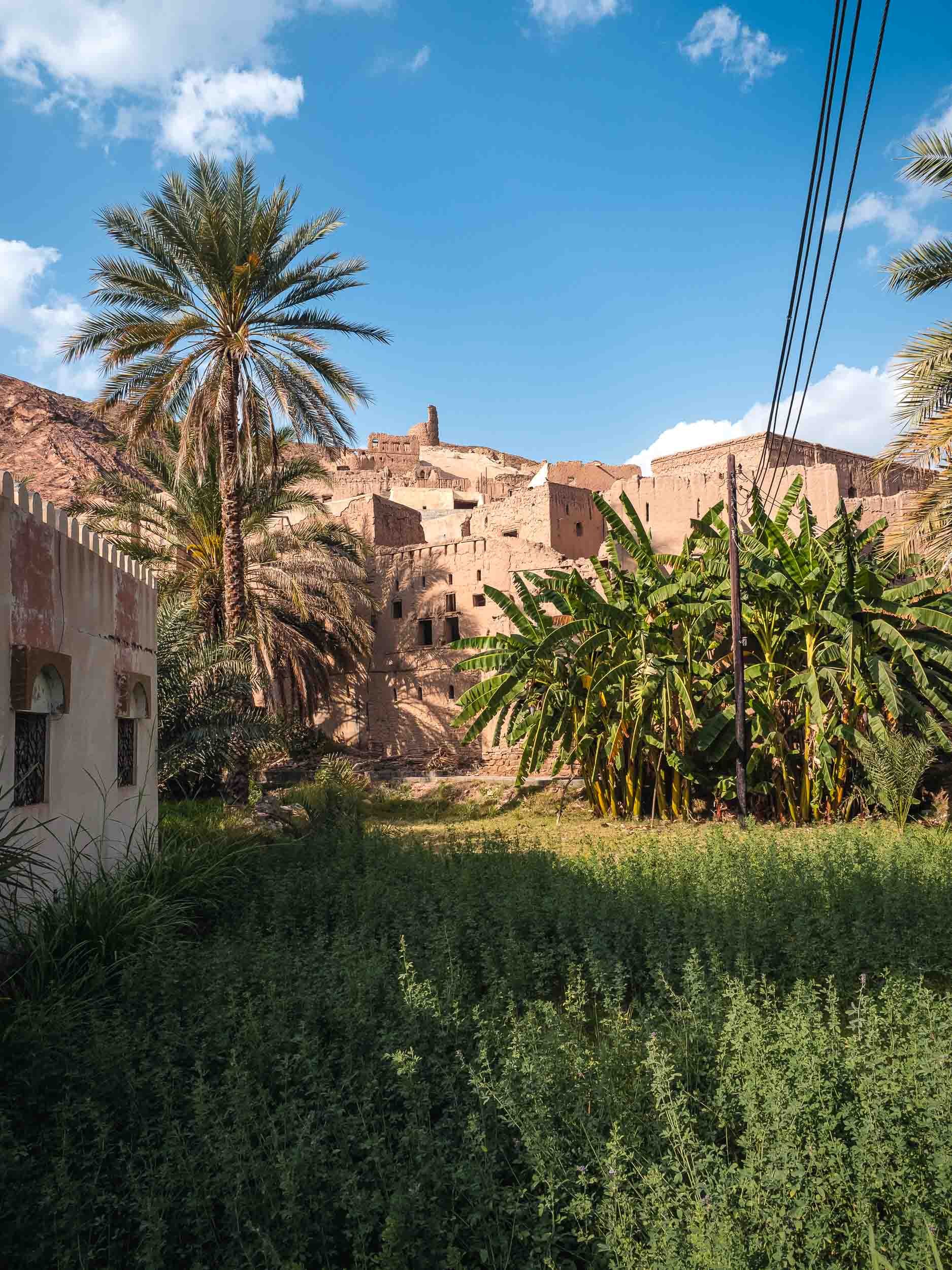
Birkat Al Mouz
This was our next stop on the way from Jebel Akhdar to Muscat.
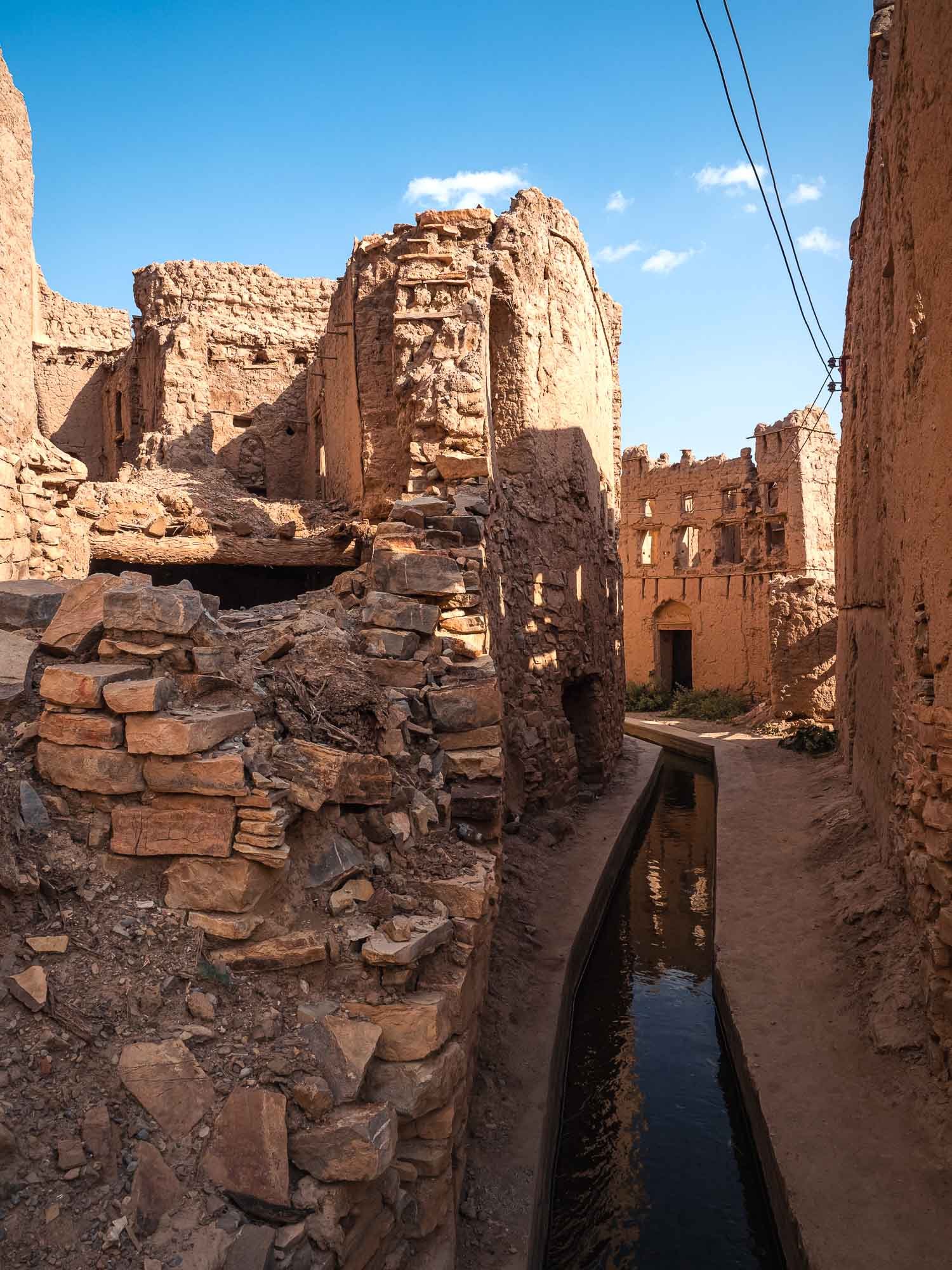
Falaj Al Khatmain
One of the five irrigation systems in Oman listed on the Unesco World Heritage site runs through the abandoned part of town.
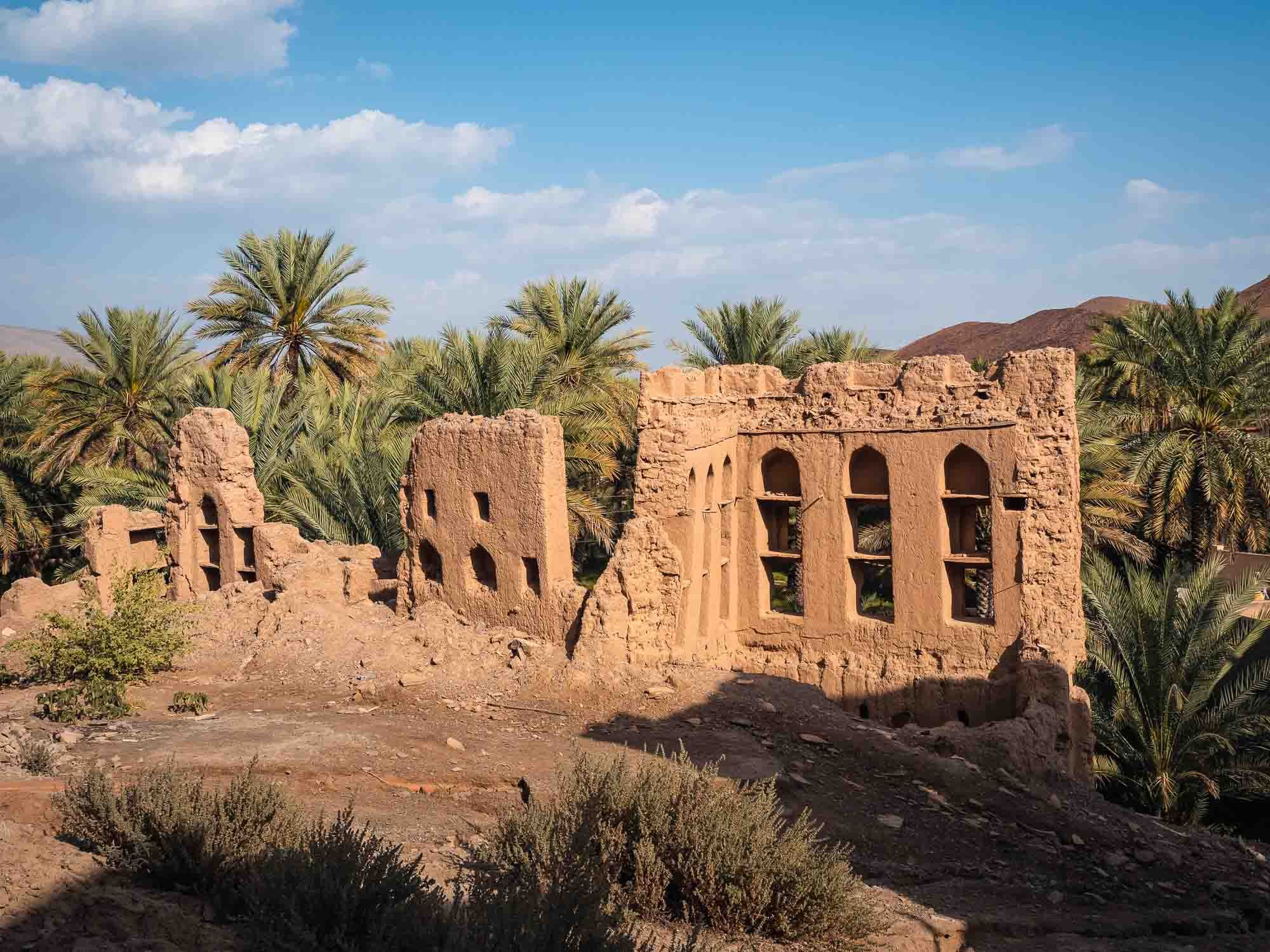
The Last Walls
The village contains two such parts, the larger one called Harat Al Sibani.
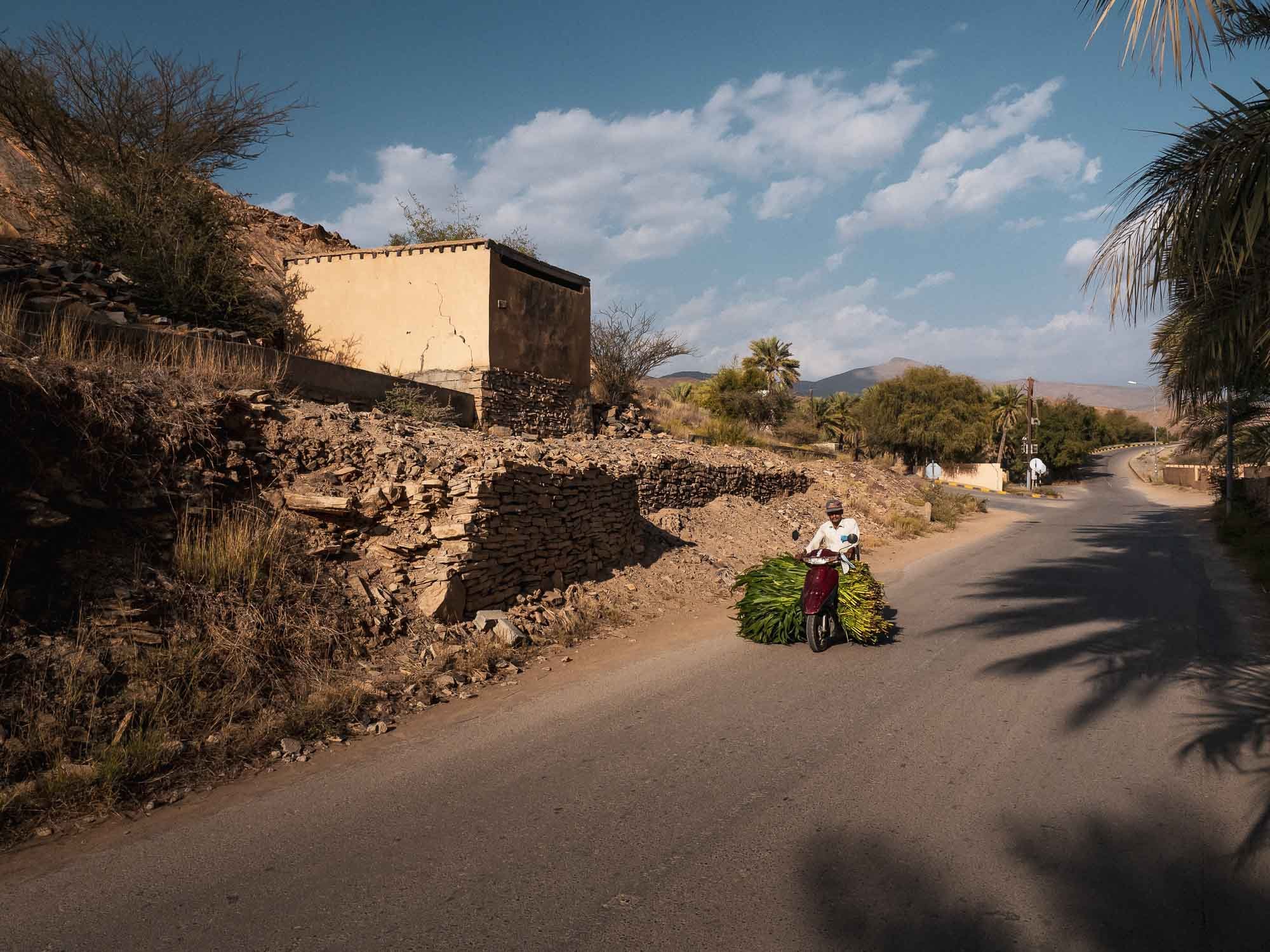
Banana Pool
That's the meaning of the city's name in Arabic - and the farms surrounding it give away why.
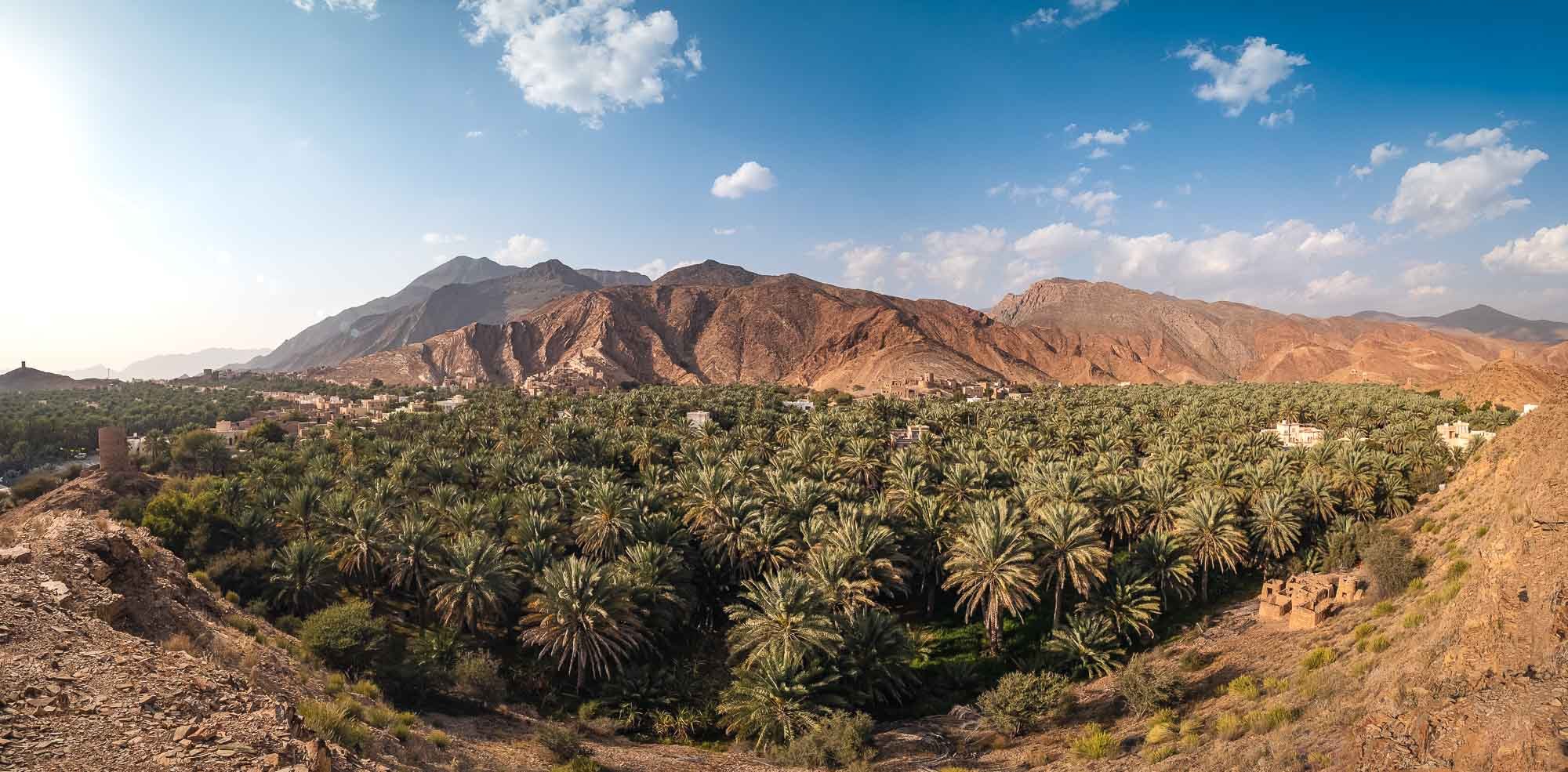
Quintessential Oman
A short climb on the other side of the farms rewards you with this scenery.

Harat Al Sibani
And this stunning view of the abandoned village.
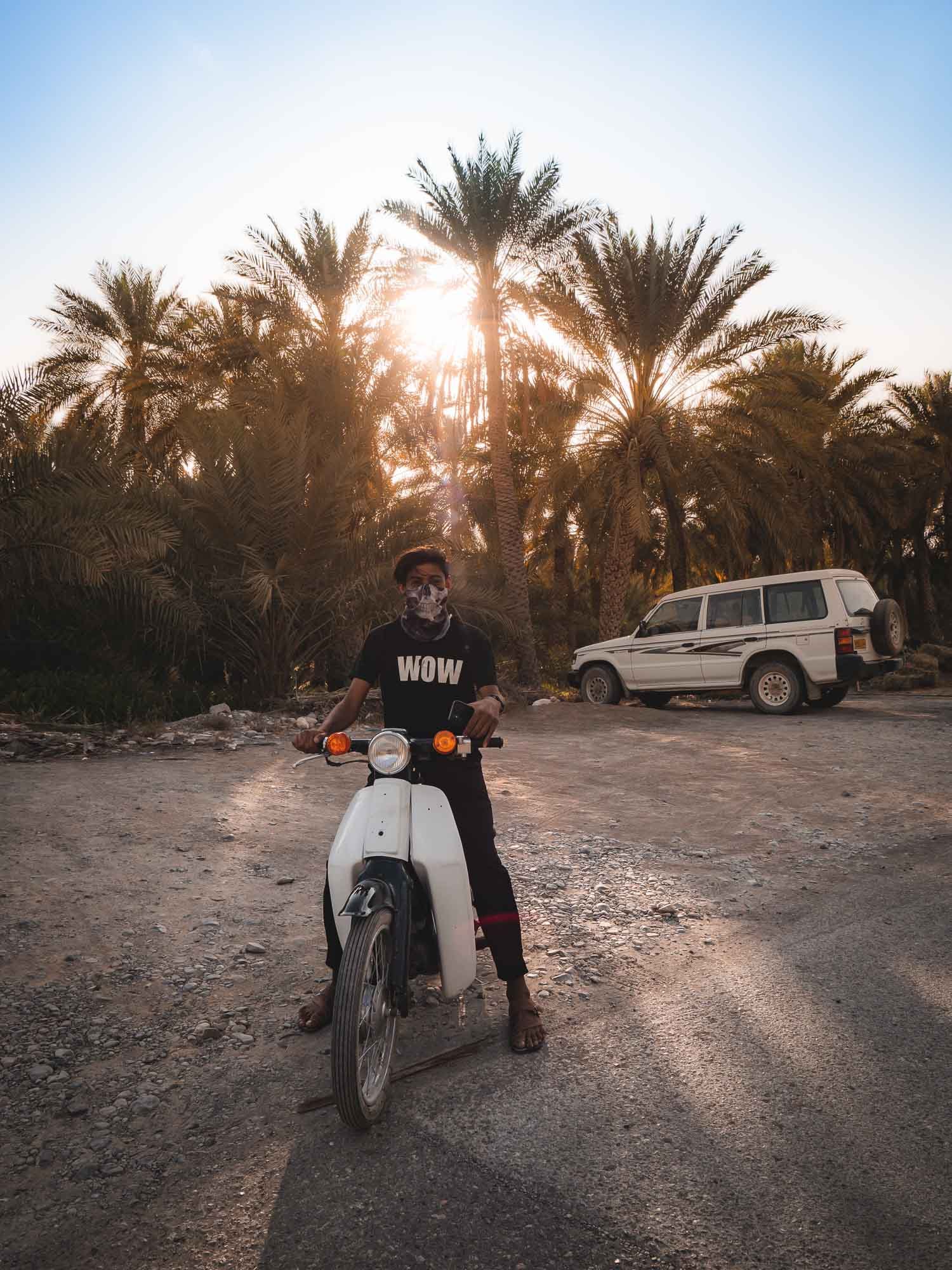
New Friends
Omani people are always curious, polite, and hospitable.
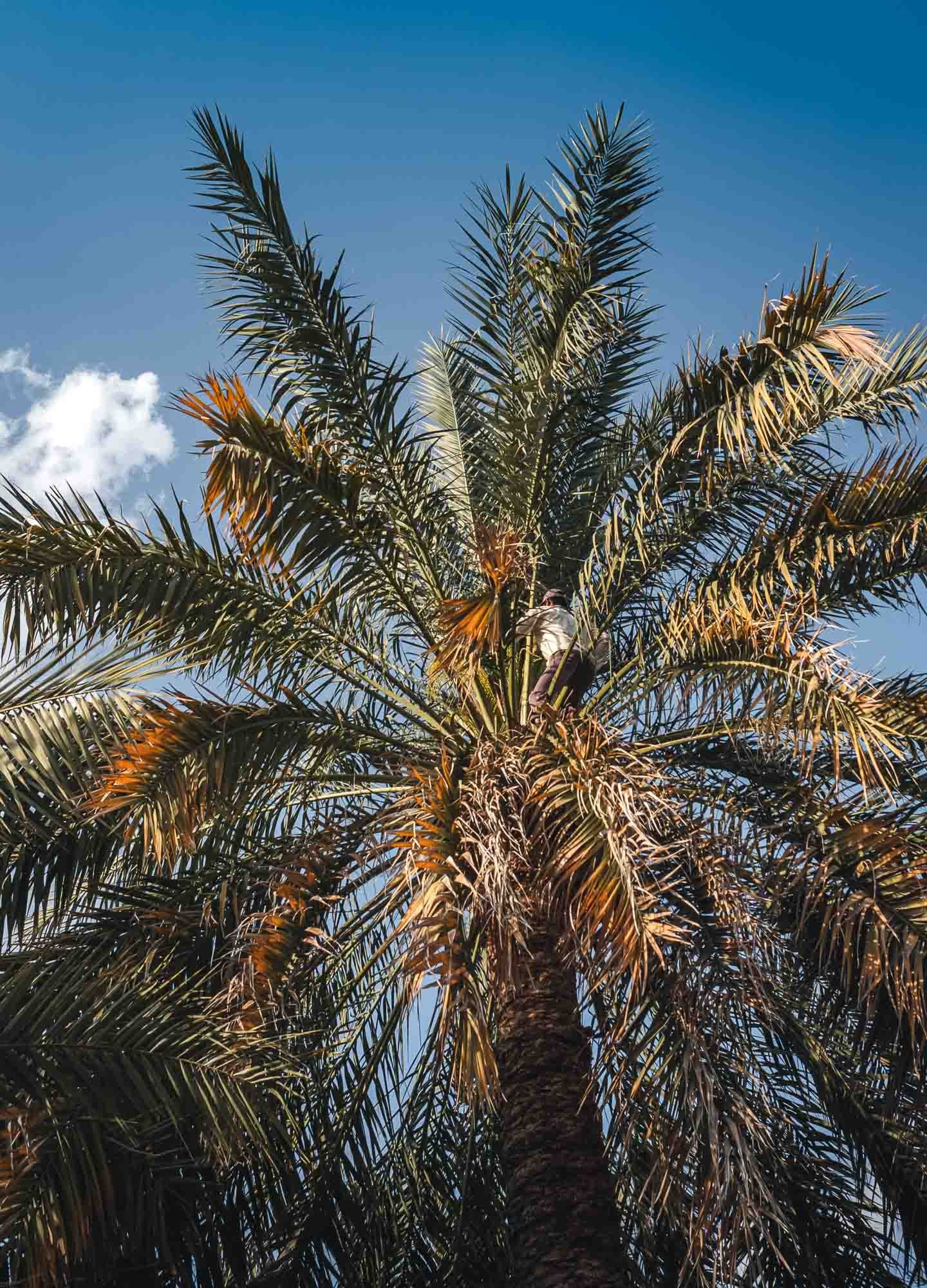
Work In Progress
Farming and plantations still make up a large amount of the economy in this area.
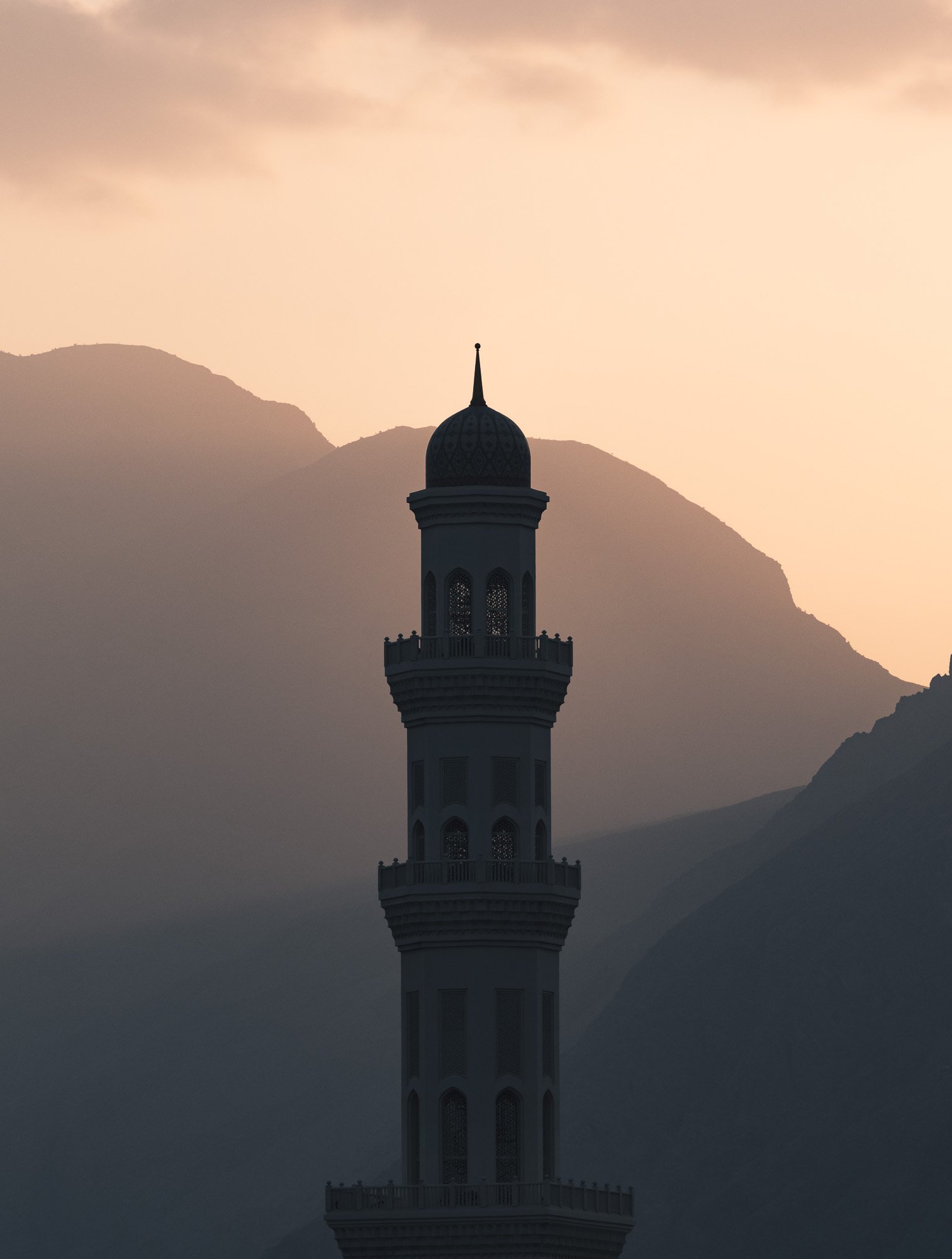
Hajar Layers
One kind of shot I can never get enough of.

Samail
Samail and its fort was our last destination before reaching Muscat - unfortunately we were too late to see it from the inside.
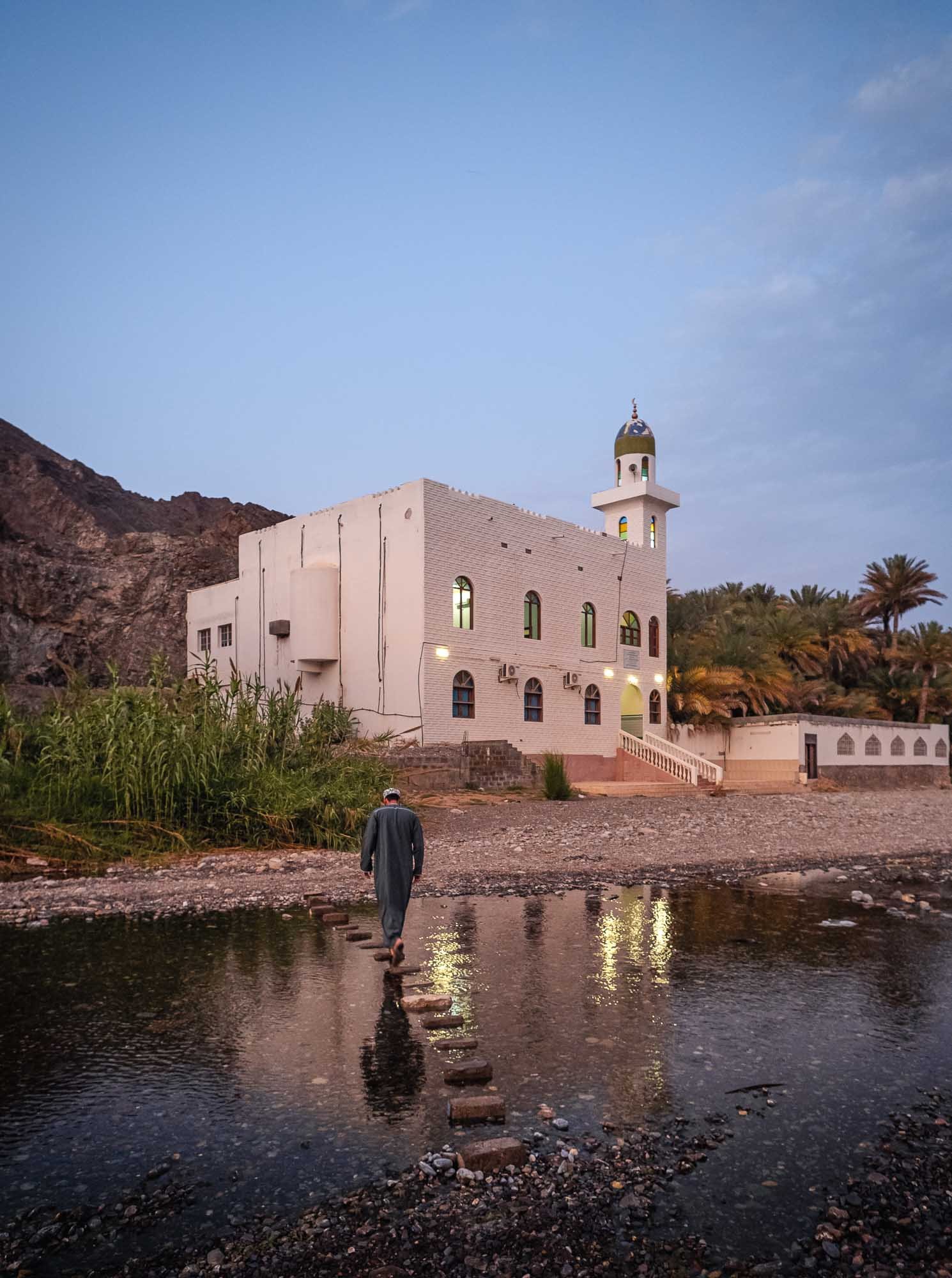
Steps to Prayer
The city is said to feature Oman's oldest mosque from 600 AD - not this one here though, which we found in our search for a good spot to watch the sunset.
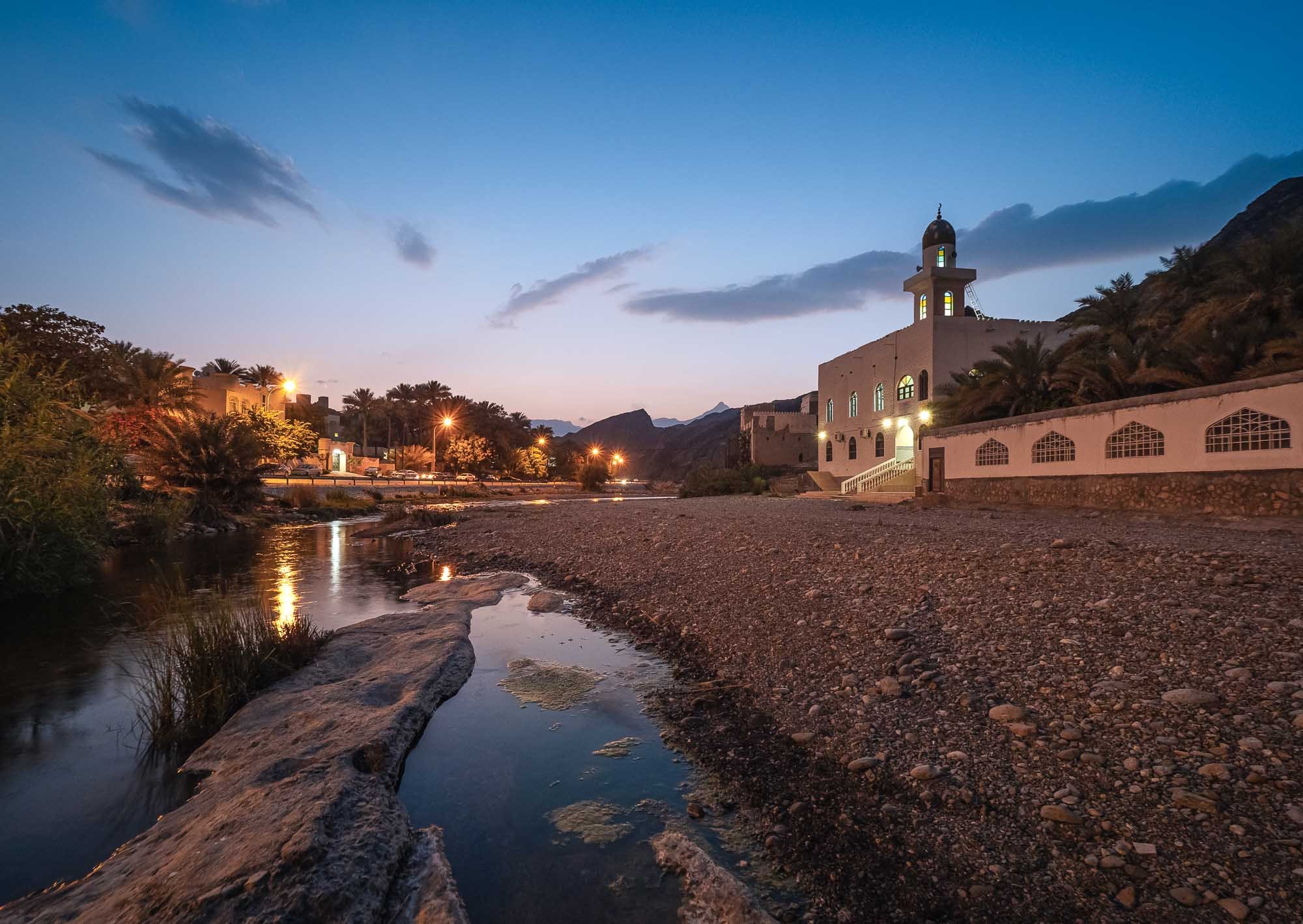
Evening Vibes
The sound of the prayer call and a few lonely frogs accompanied this scenery.
The Capital and its Surroundings
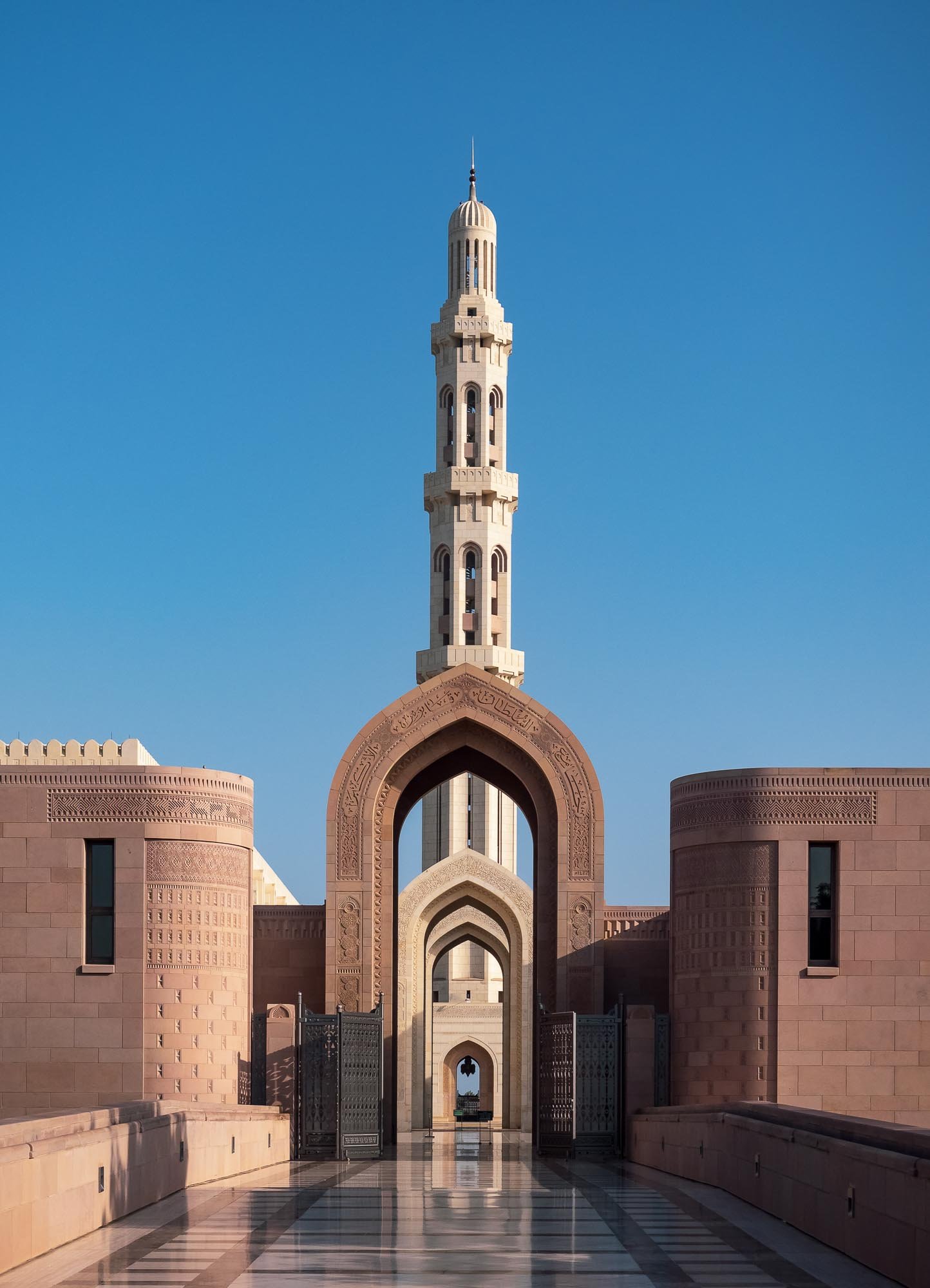
Muscat!
Our first stop in the capital had to be its arguably most famous sight: Sultan Qaboos Grand Mosque.
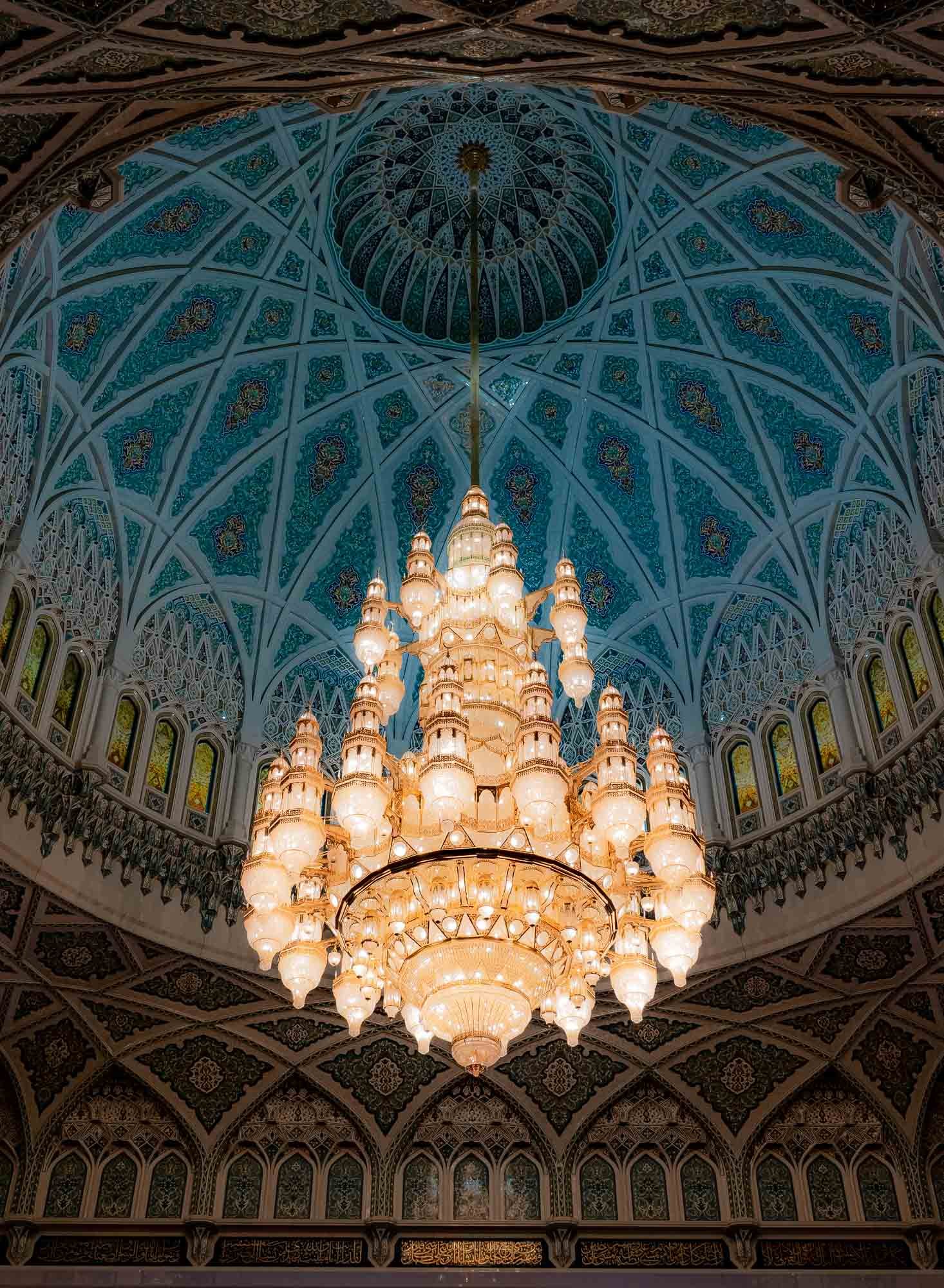
Lighting
The mosque's primary prayer hall can accommodate 6500 people - its chandelier used to be the largest in the world. The same is true for the carpet, with 1,700,000,000 knots over 4300 sqm. Both have been overtaken by Abu Dhabi's Sheikh Zayed Mosque.

Interior Views
In hindsight my OCD is really annoyed that they chandelier doesn't perfectly line up with the window.
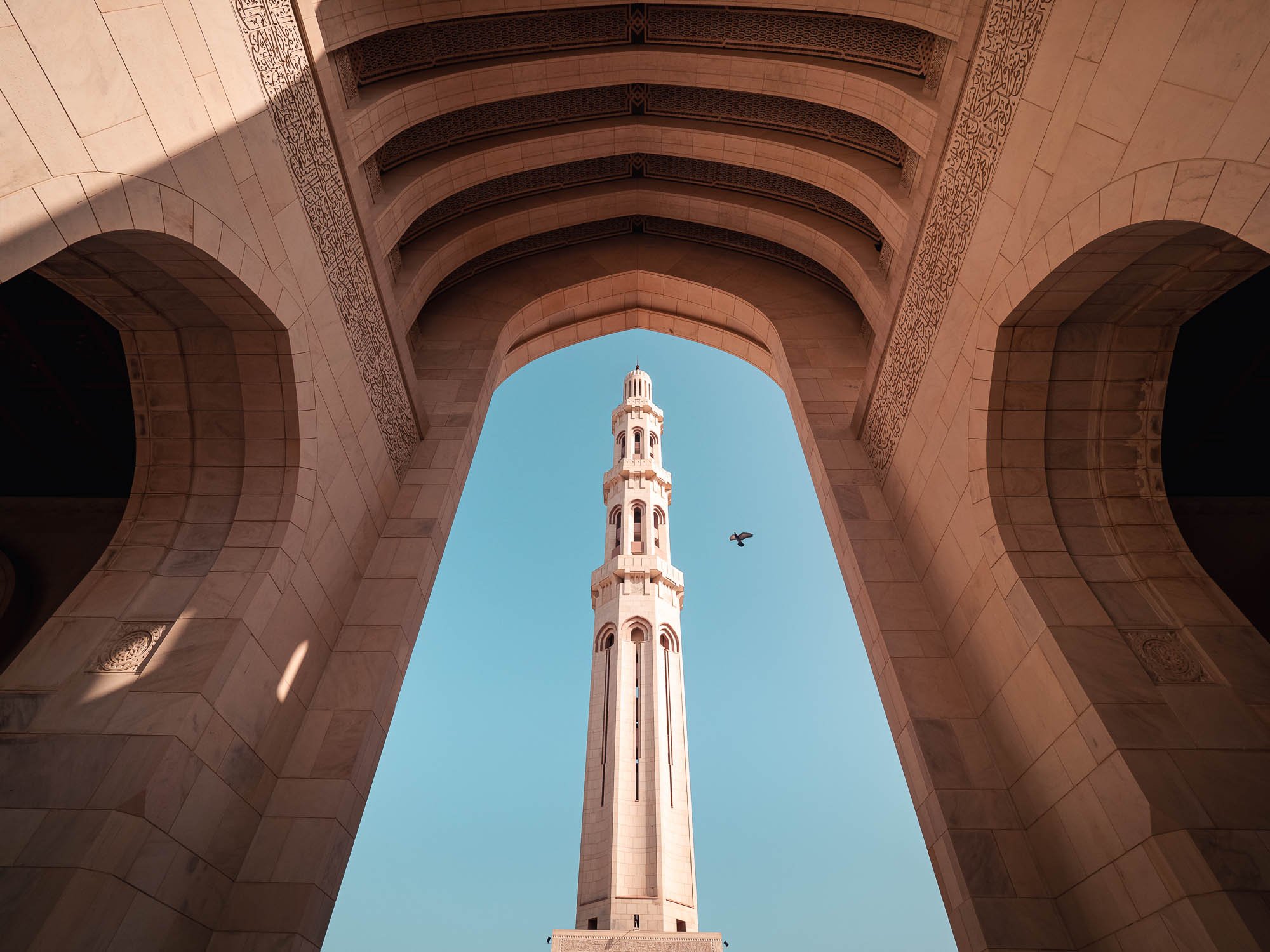
Upwards
The mosque was inaugurated in 2001, after 7 years of construction.
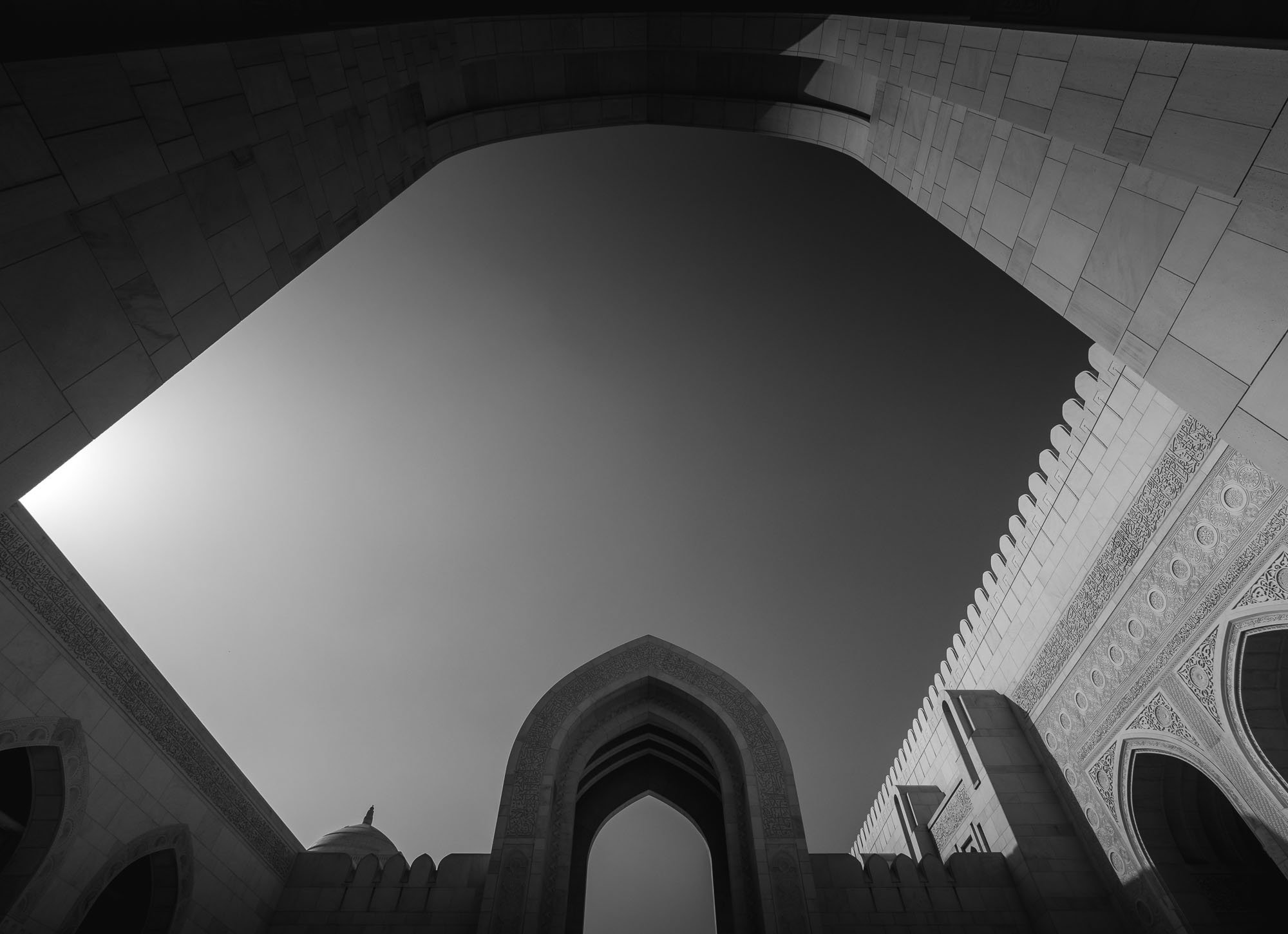
Materials
It was built from 300,000 tonnes of Indian sandstone.
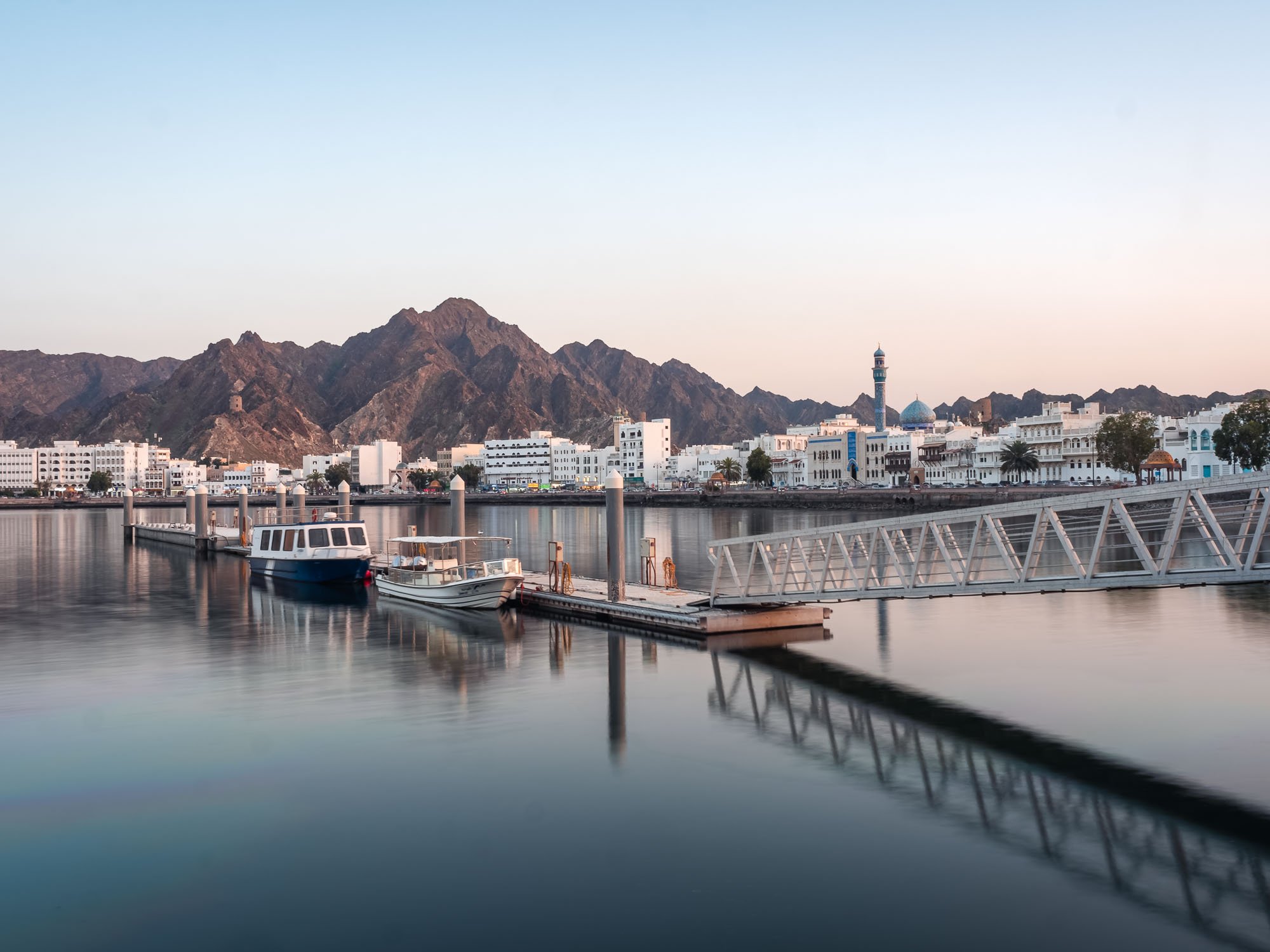
Muttrah Corniche
Our next destination was Muttrah, a trade and seaport city very close to Muscat.
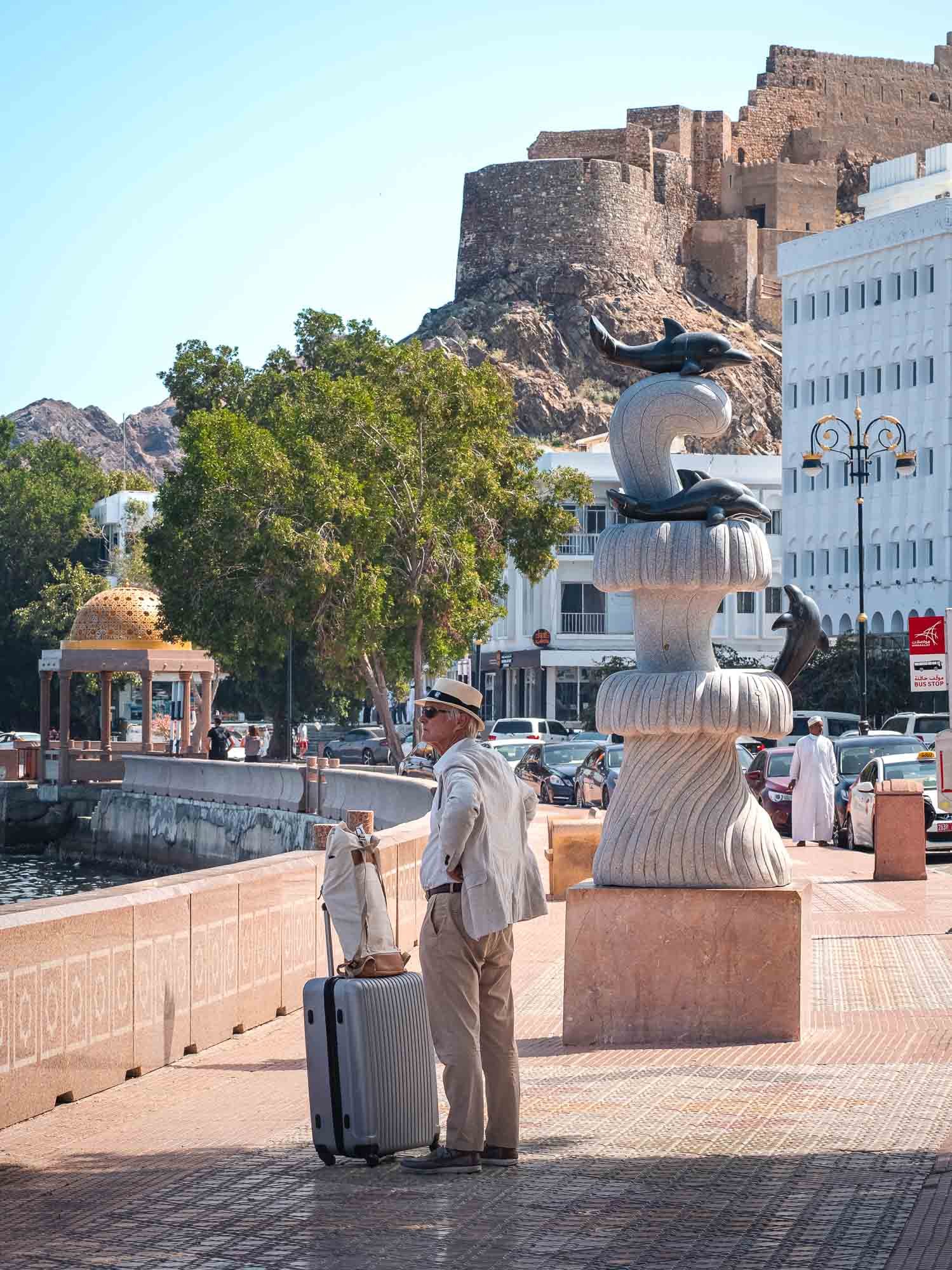
In Style
The presence of large cruise ships sometimes brings more sophisticated travellers than us to the town ;)
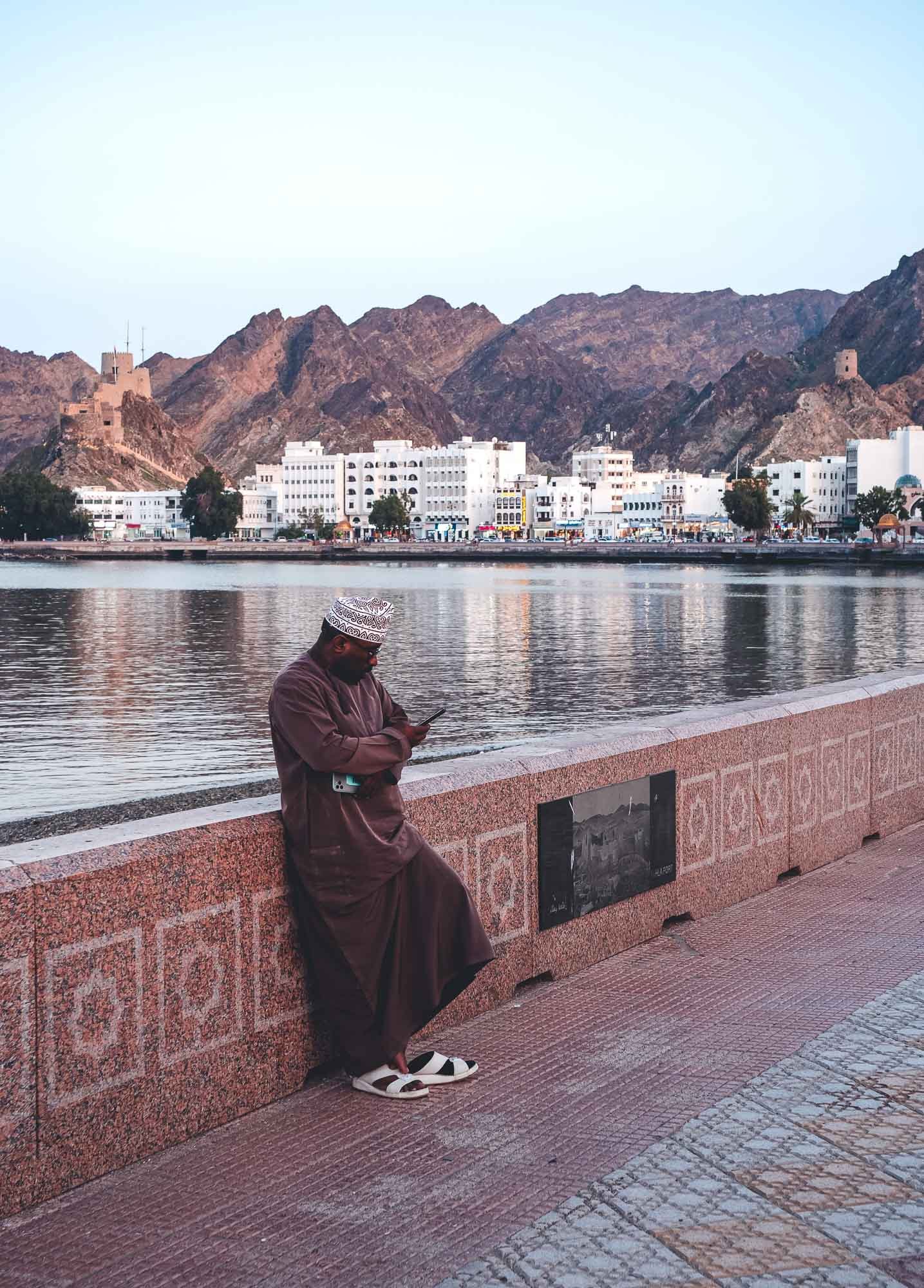
Juxtaposition
It makes for a nice contrast with the traditional Omani style.
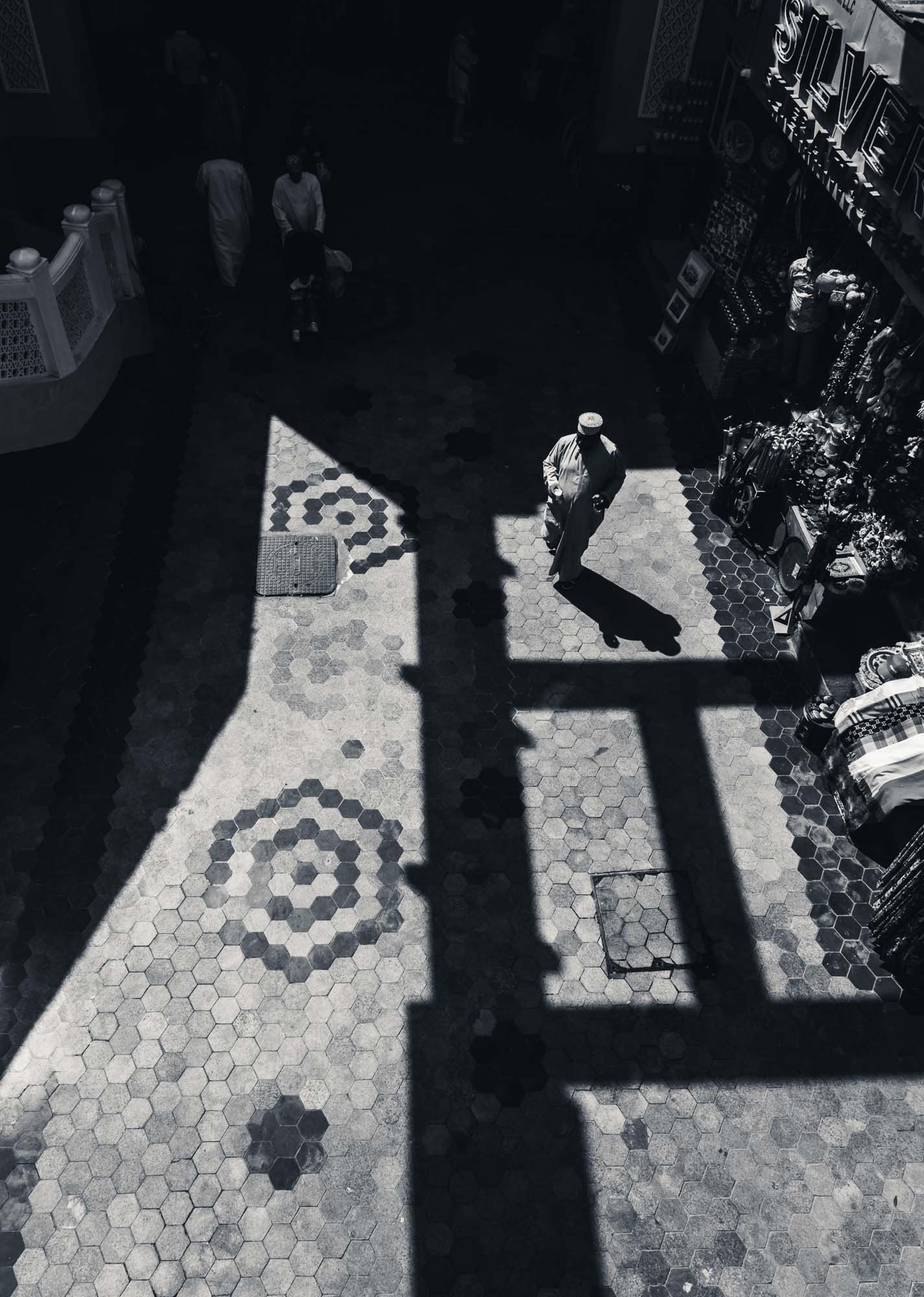
Souq Entrance
The city's souq is one of the most important in Oman, and dates back 200 years.
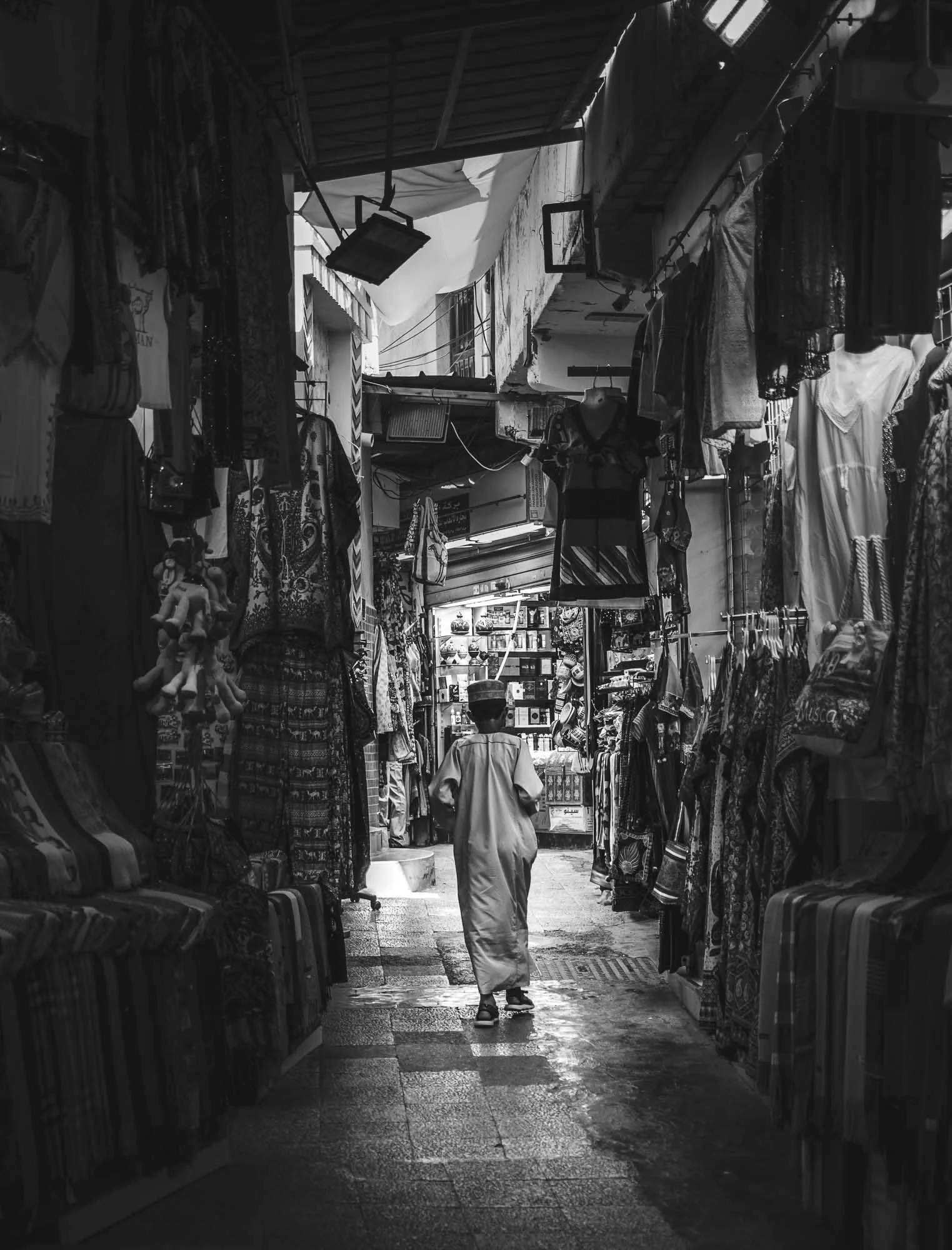
Into the Light
It's nicknamed the "Market of Darkness" due to the roof blocking most of the sunlight even during the day.
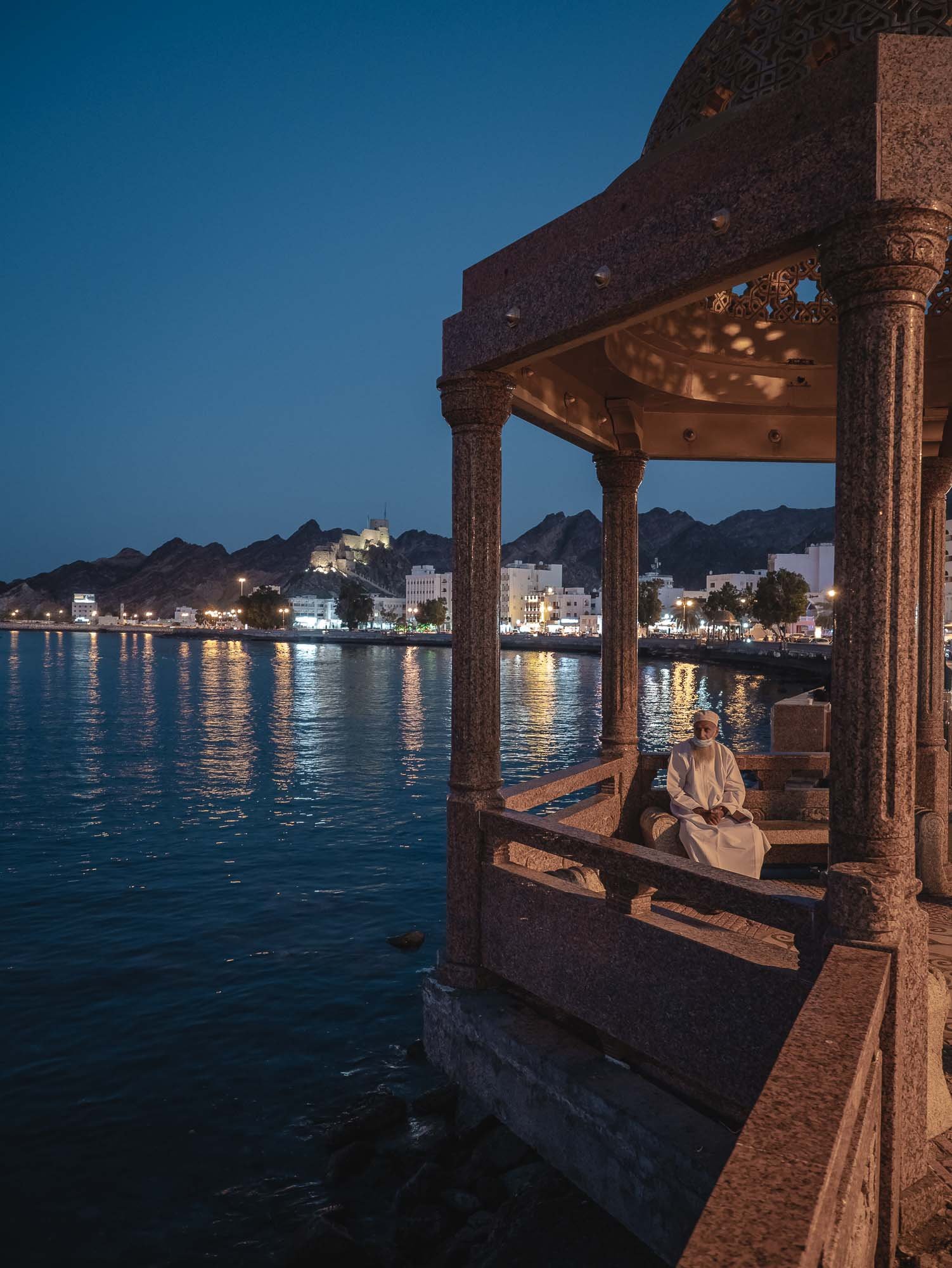
Muttrah
Evening views along the corniche, with the local fort in the distance.
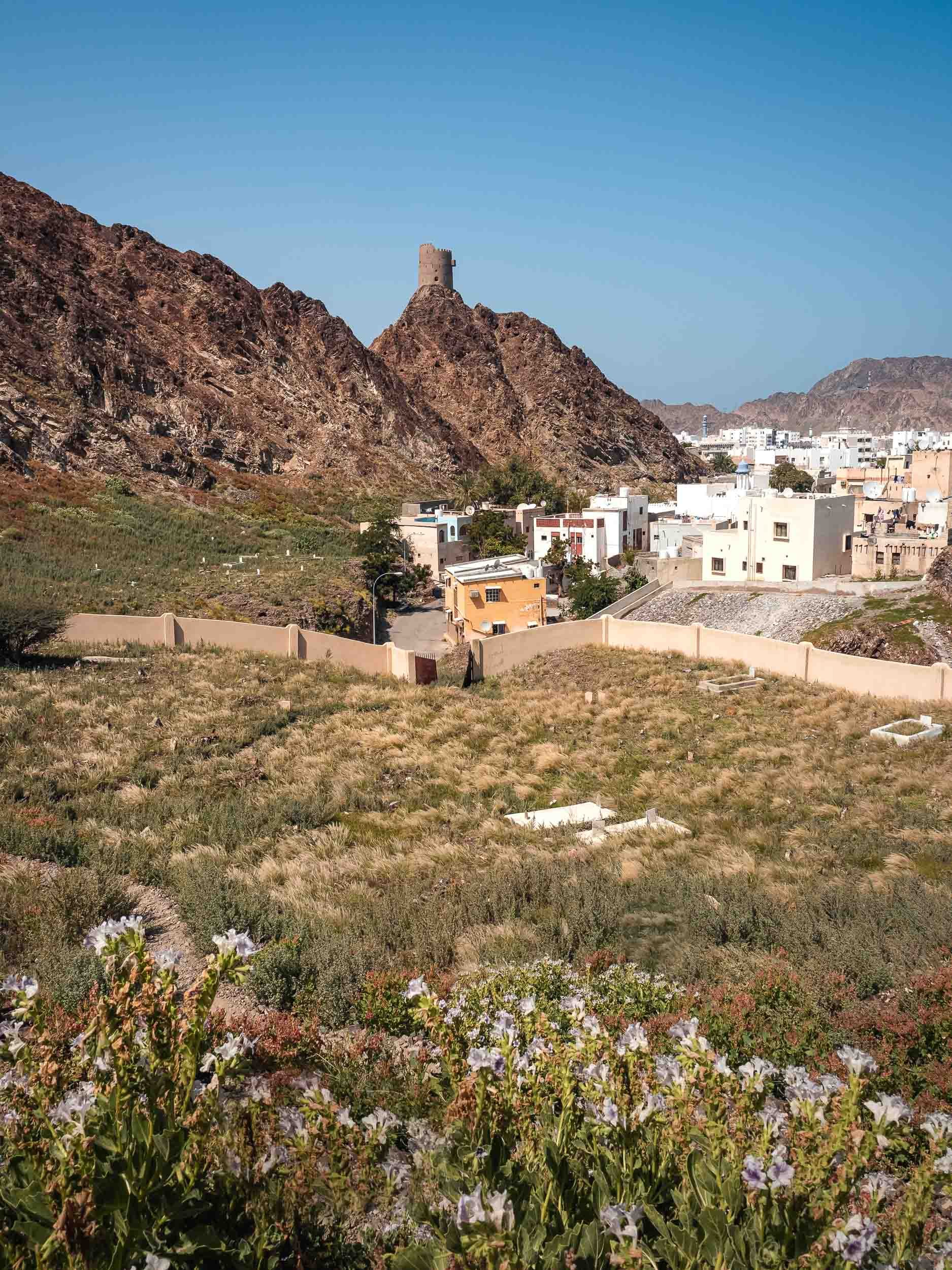
Hiking in the City
There's a 1h hike from Muttrah to Riyam, crossing green flower fields and a beautiful wadi - in our case filled with water - on the way.
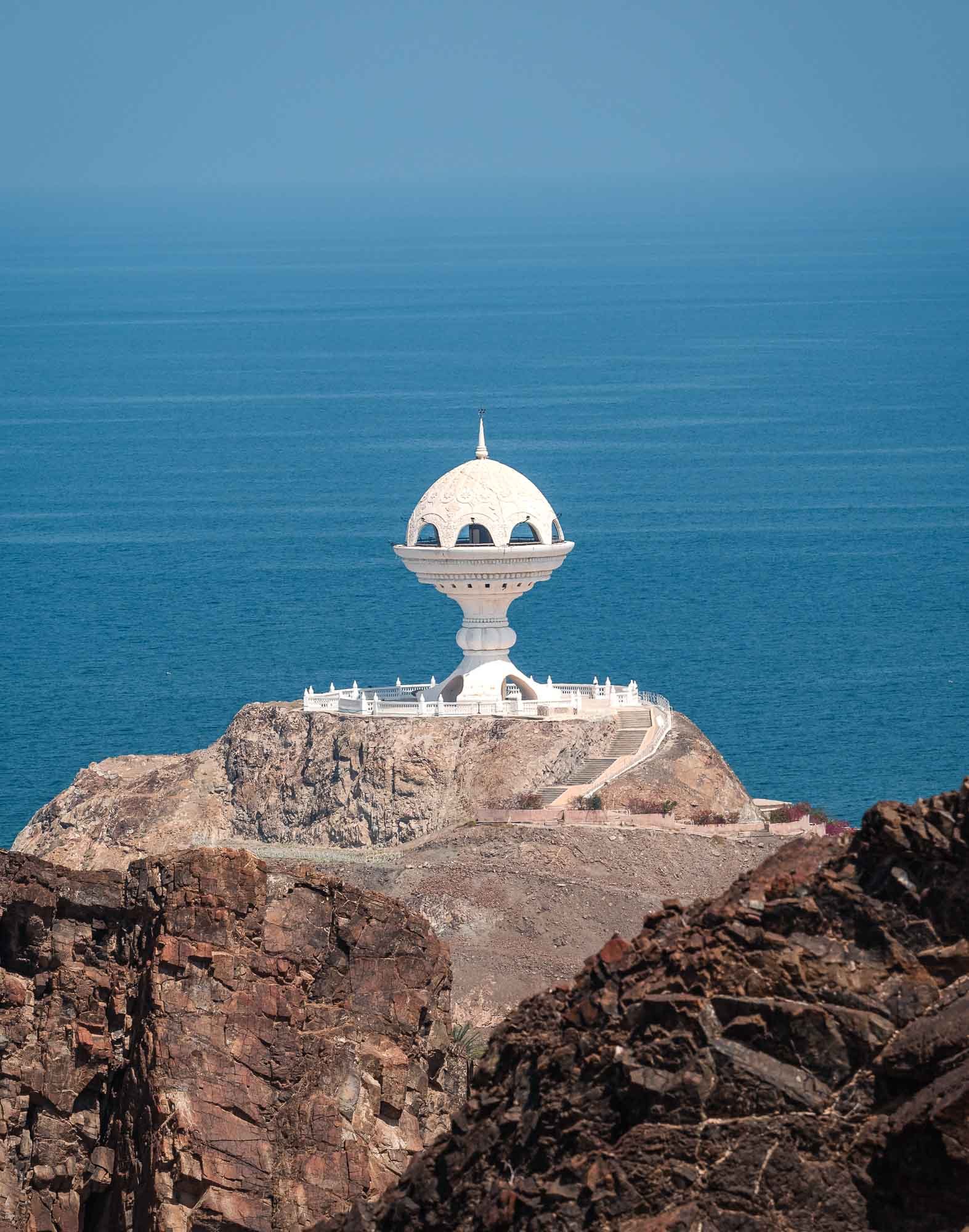
Riyam
At the end of which, you're rewarded with this view of the Riyam Park Monument, often termed as the "giant incense burner" due to its shape.
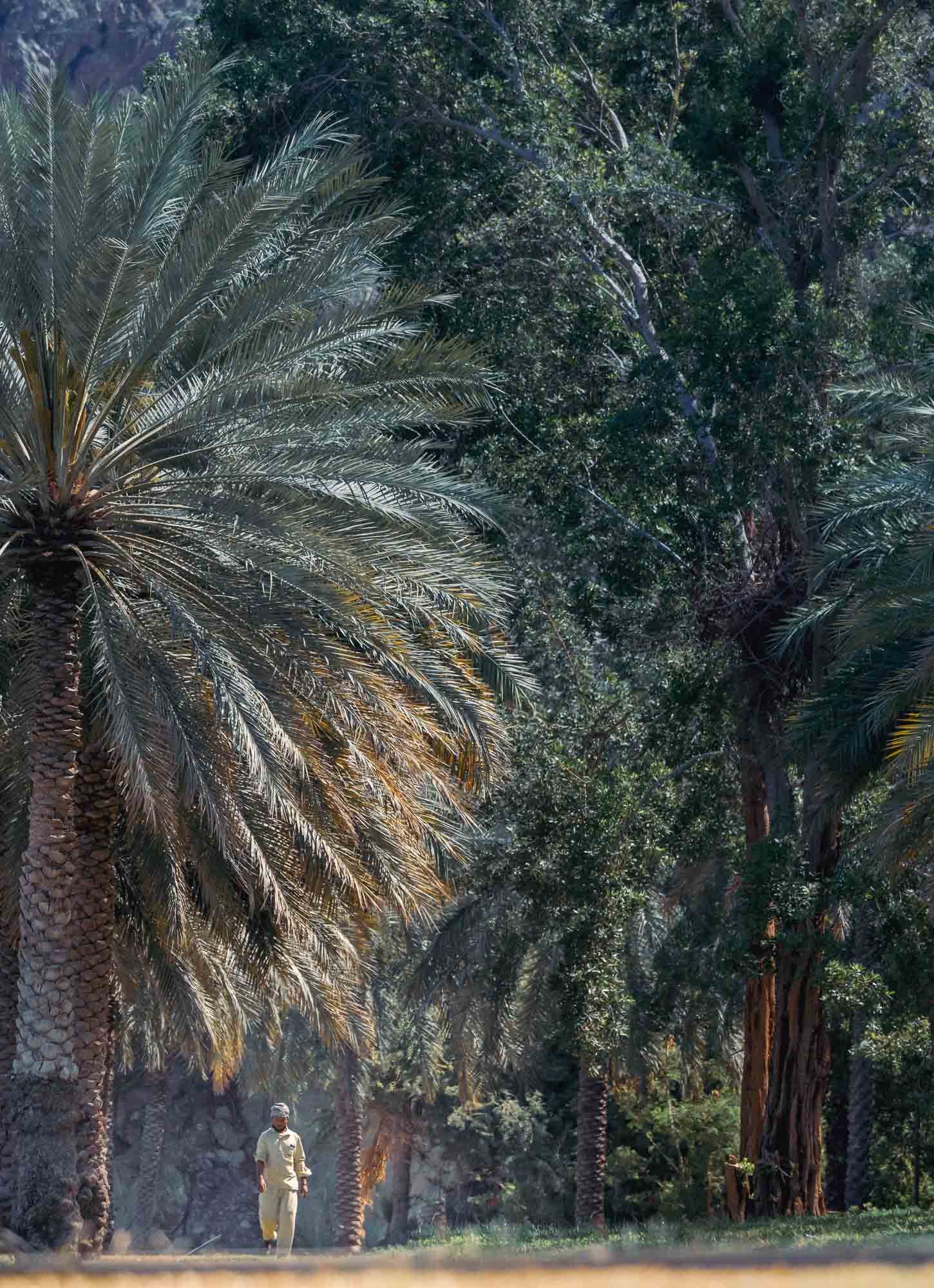
Old Muscat
Our next destination was "Old Muscat", the historic part of the city still housing many government institutions. But not before crossing a few more farms on the way, such as this one.
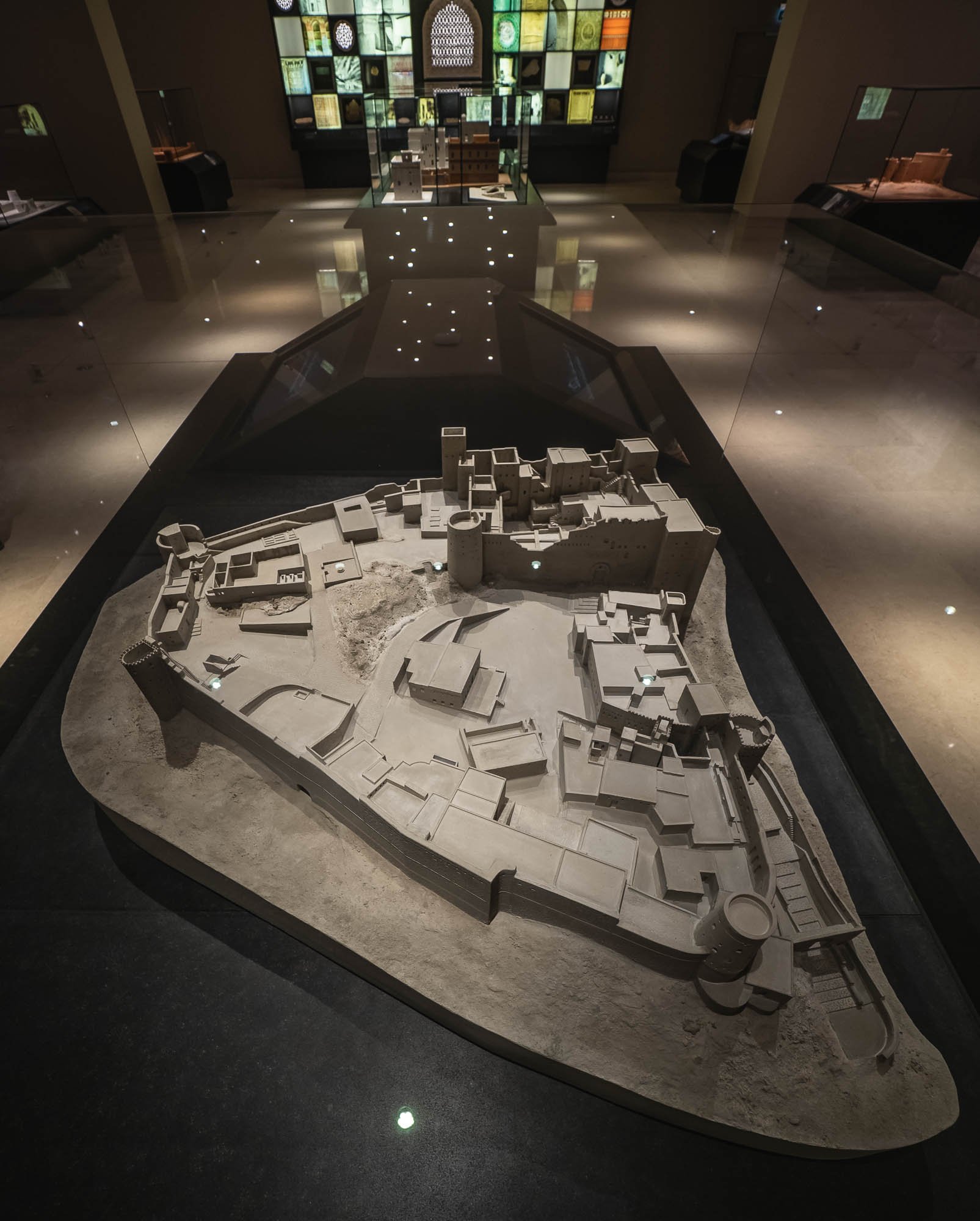
National Musem
The city is also home to the National Museum, with some interesting exhibits. I often find the history of the Middle East to be completely underrated and possibly overshadowed by its recent development. Humans have set foot here some 400,000 years ago, and there is an incredibly rich and accessible past. Reognise this fort model? It's Bahla!
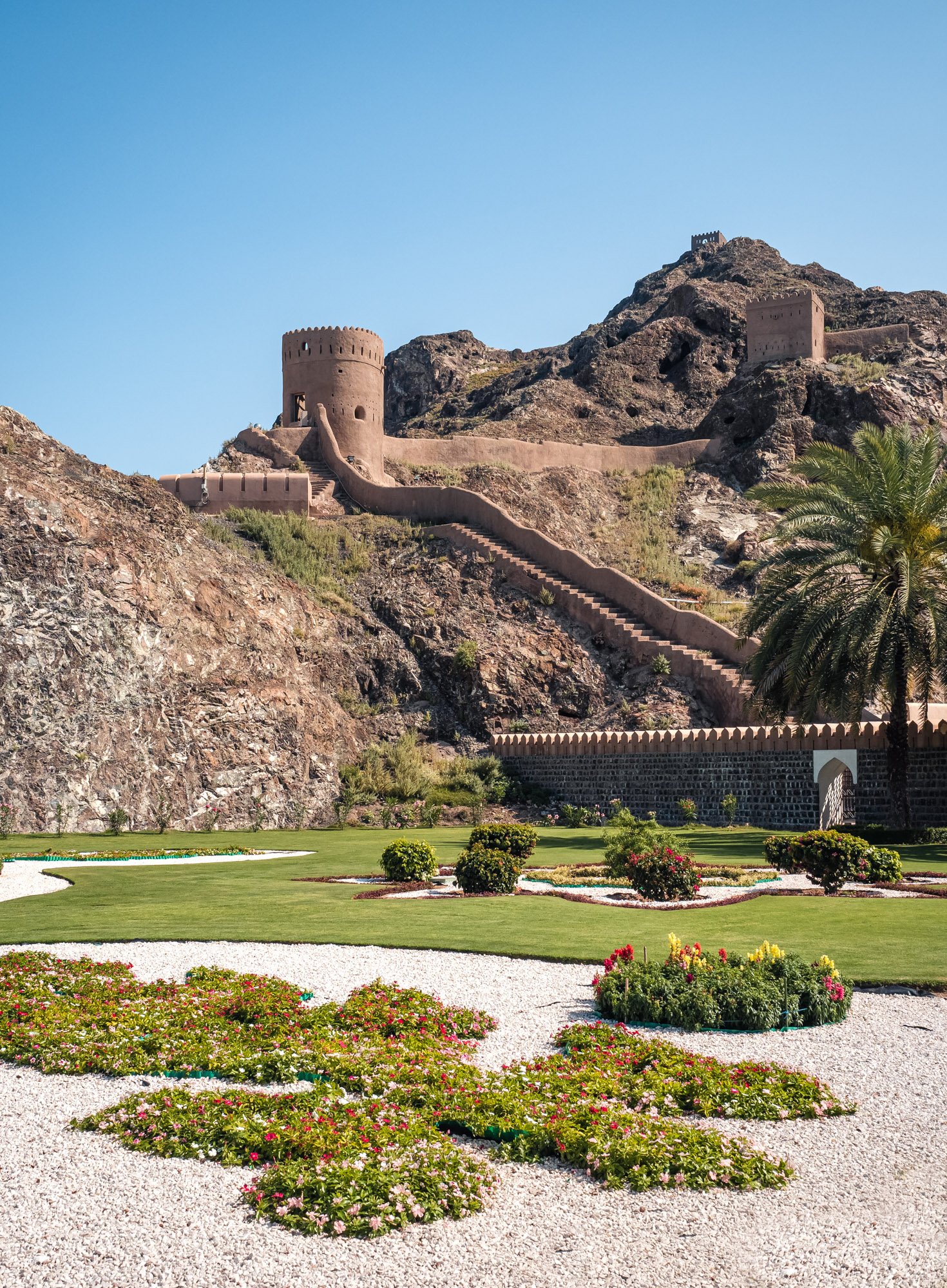
Jalili Fort
Old Muscat is also home to Al Jalili fort, built by the Portuguese in the 1500s and said to have been used as both a jail & refuge for the Omani royals. This one does not seem open to the public.
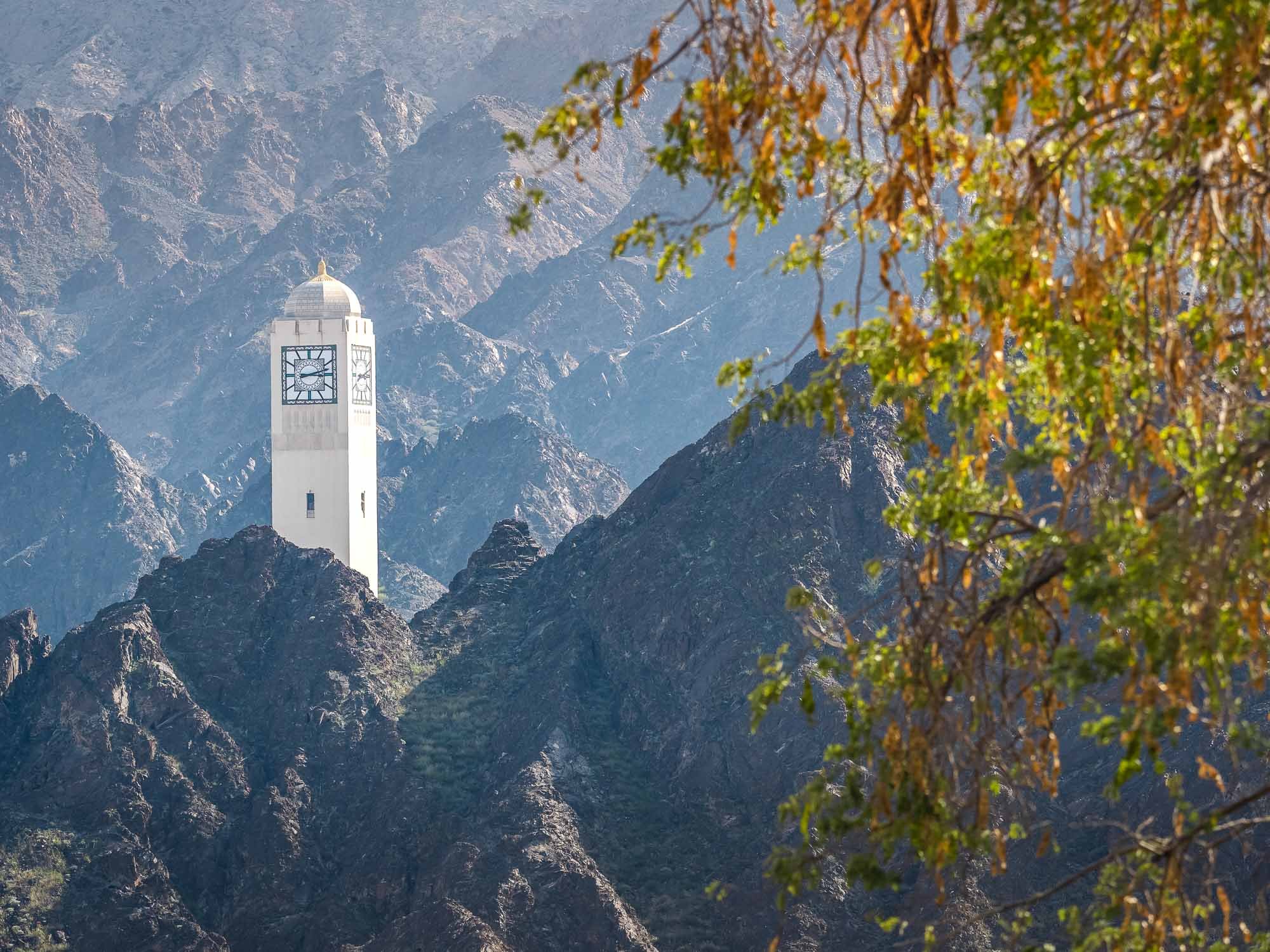
Al Bustan
Driving a bit further along the coast brings you to the Al Bustan, home to the famous hotel (also where my grandmother used to stay in the 80s) and the State Council, which is the building this clock tower belongs to.

Qantab
Another few kilometres and you reach Qantab, home to this beauitful beach and a natural stone arch in the sea, which we will see later...
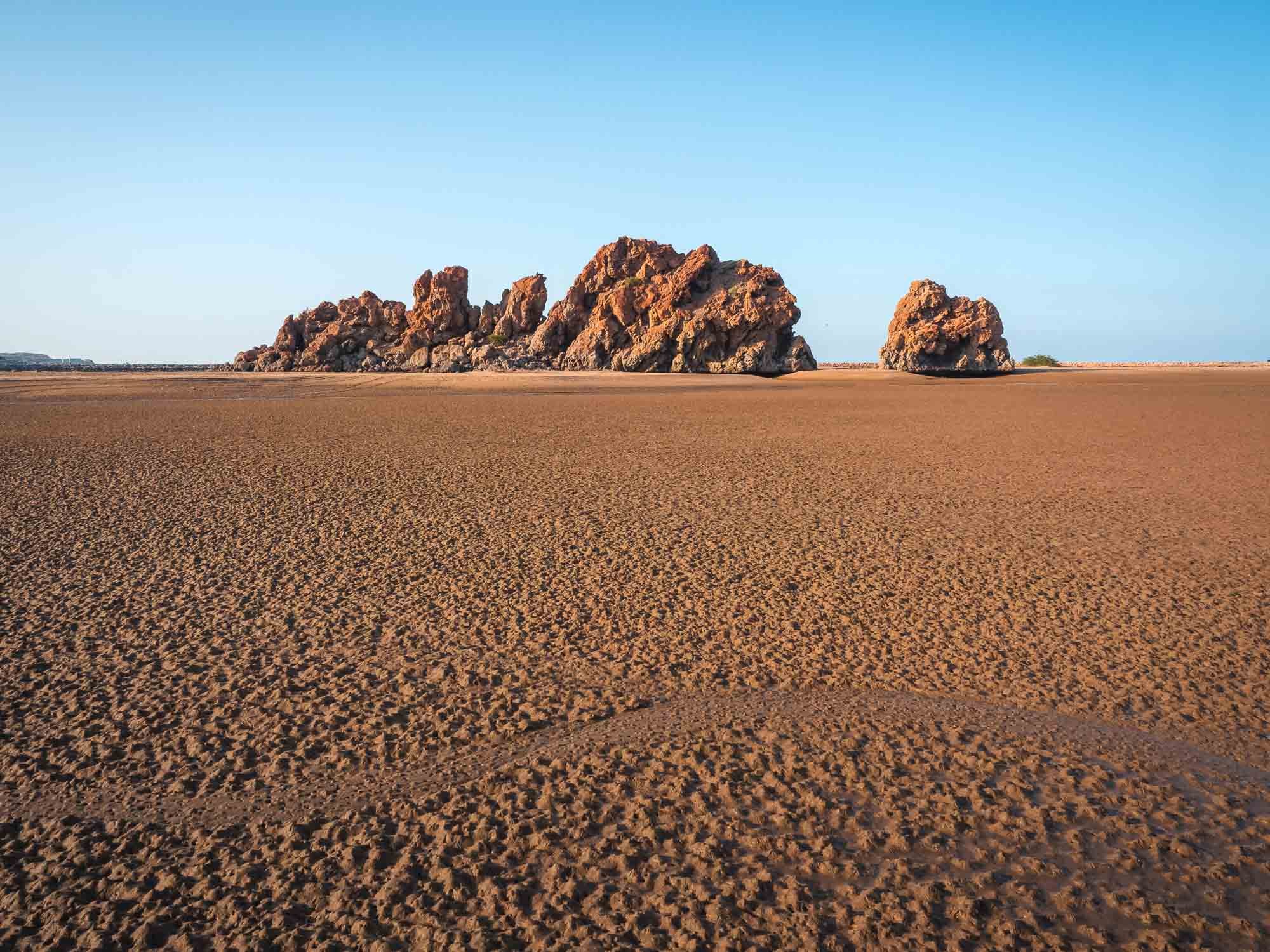
Rock Formation
This formation near Yiti was our last spot for the day, before heading back to Muscat.
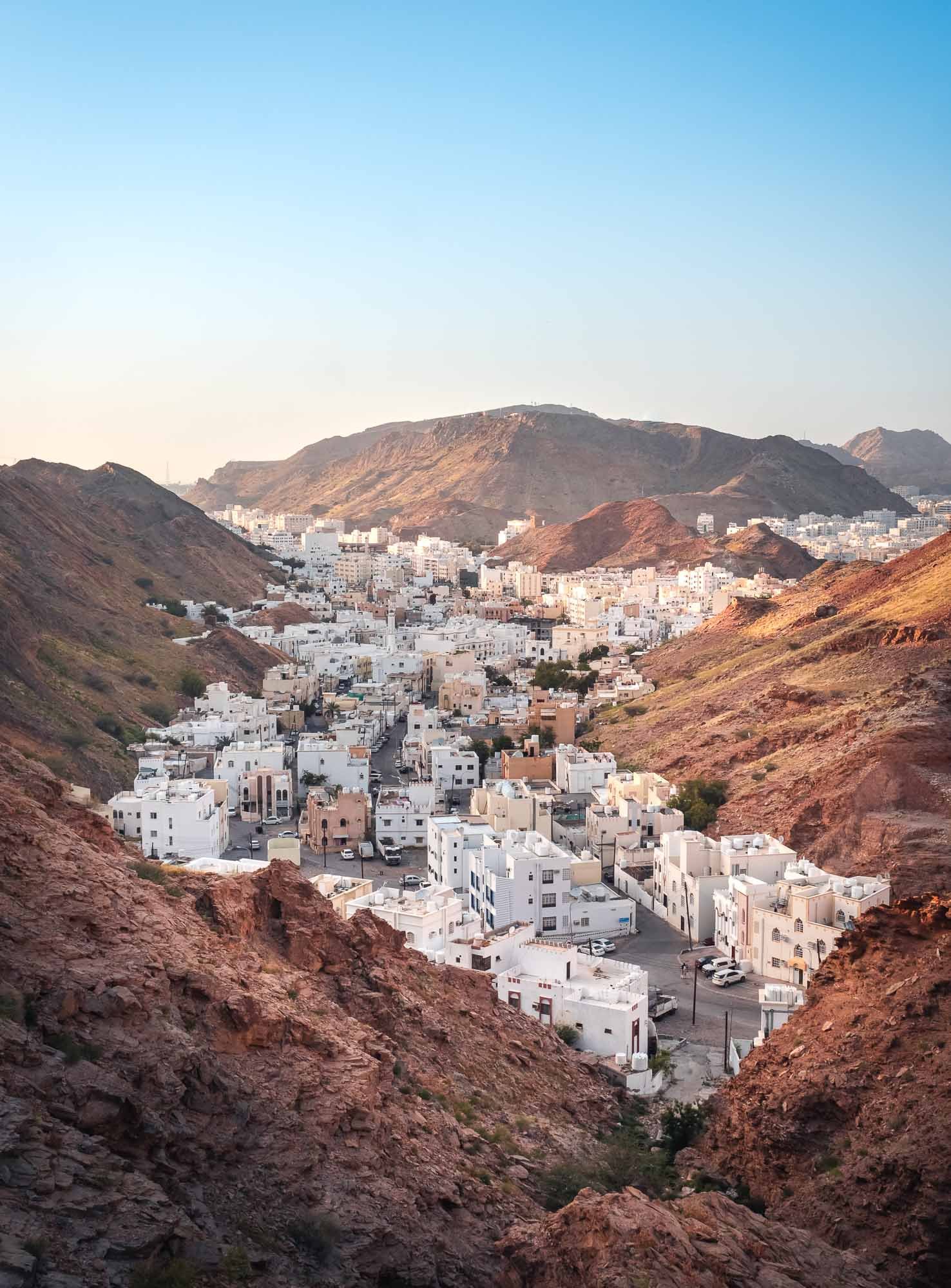
Making it Fit
On the way back we stopped at this viewpoint over Hamriya.
Along the Coast
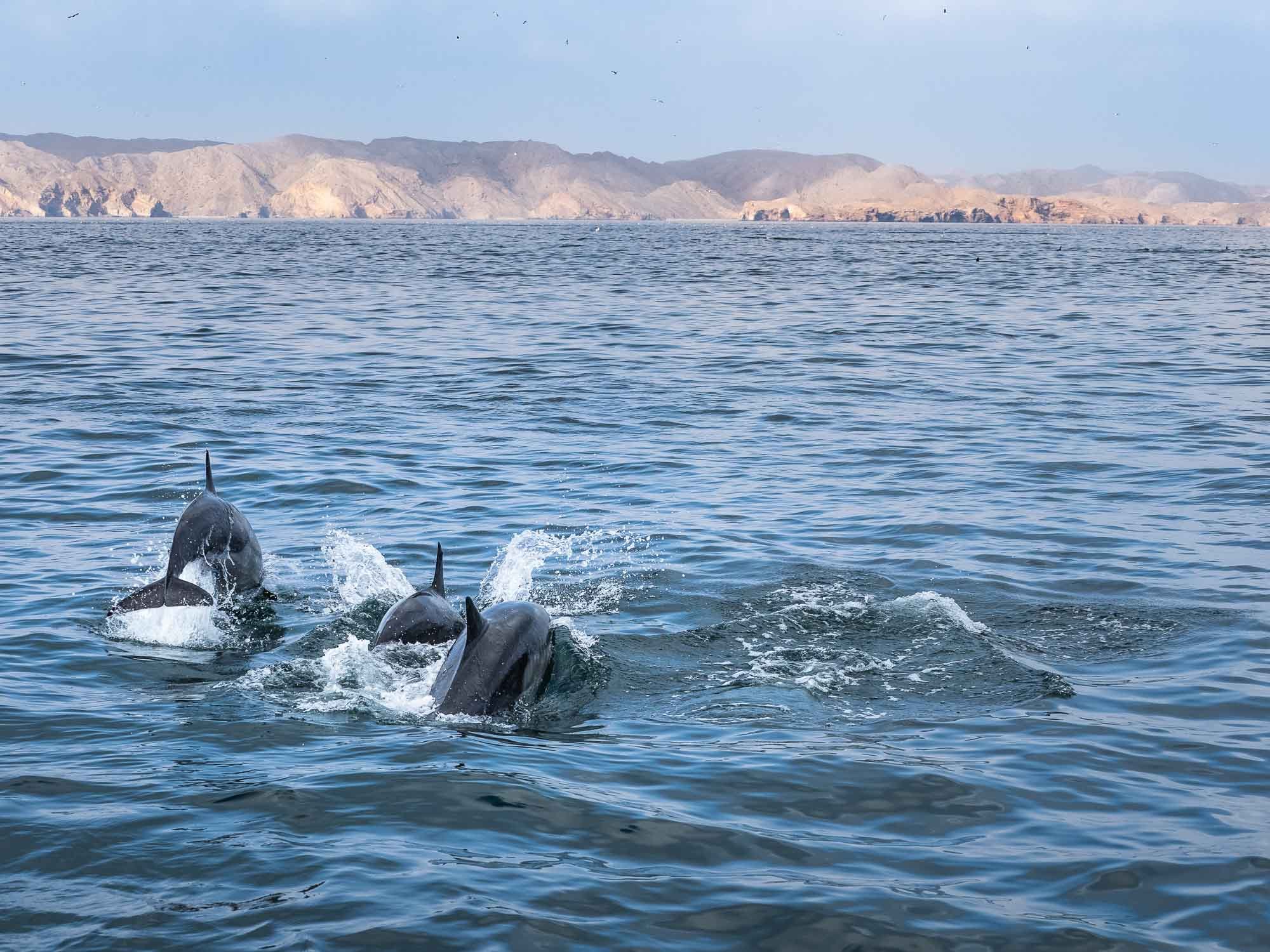
Into the Sea
An early morning boat trip the next day rewarded us with this sight - a large pod of dolphins enjoying themselves with the backdrop of the Hajar mountain coastline.

Bottlenose Dolphins
I would estimate the pod was at least 100-200 individuals in size.
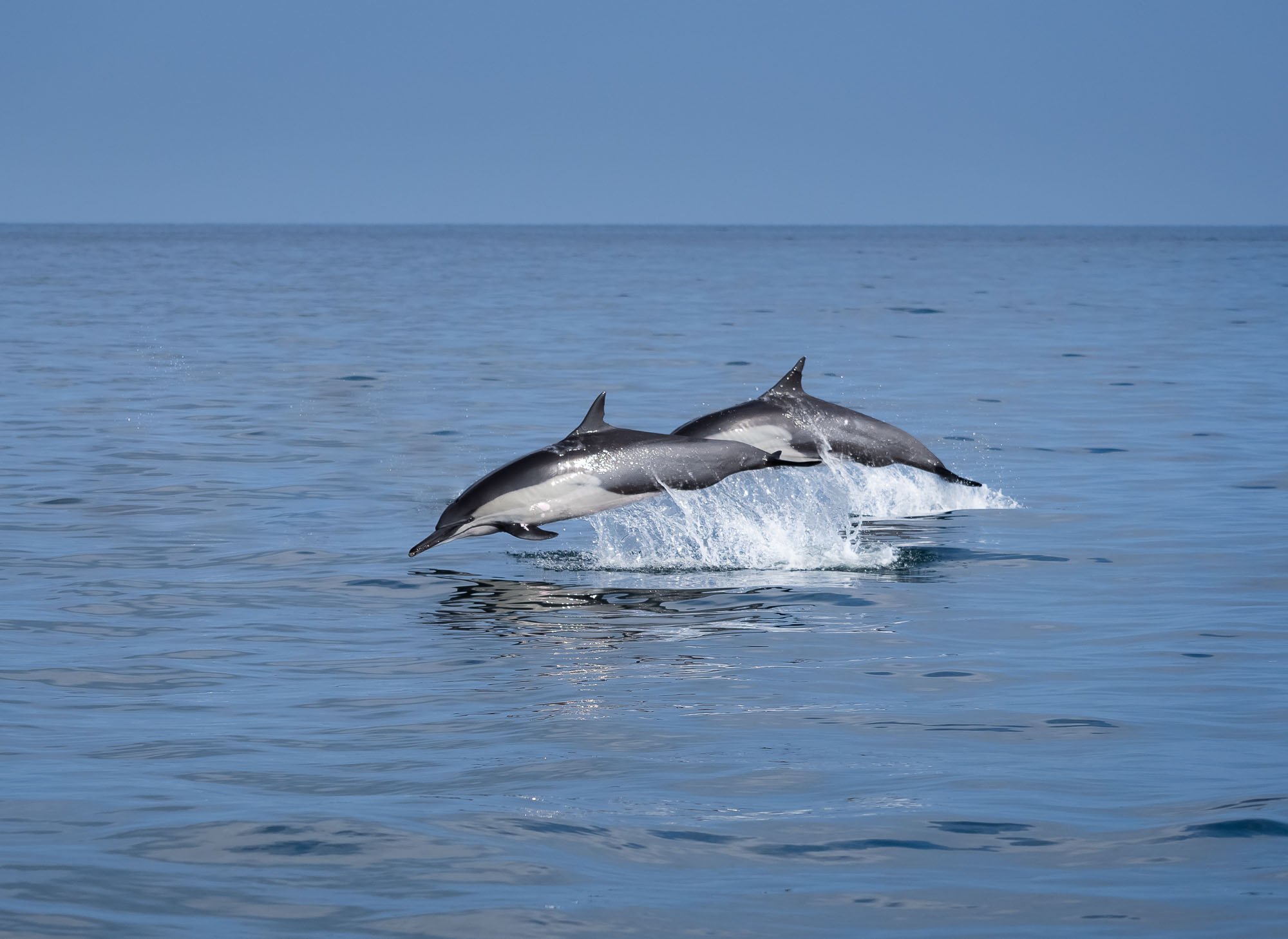
In the Air
They were calm this morning, and so there weren't many opportunities to get a photo like this, but I was able to time one correctly with the help of Olympus' ProCapture feature.
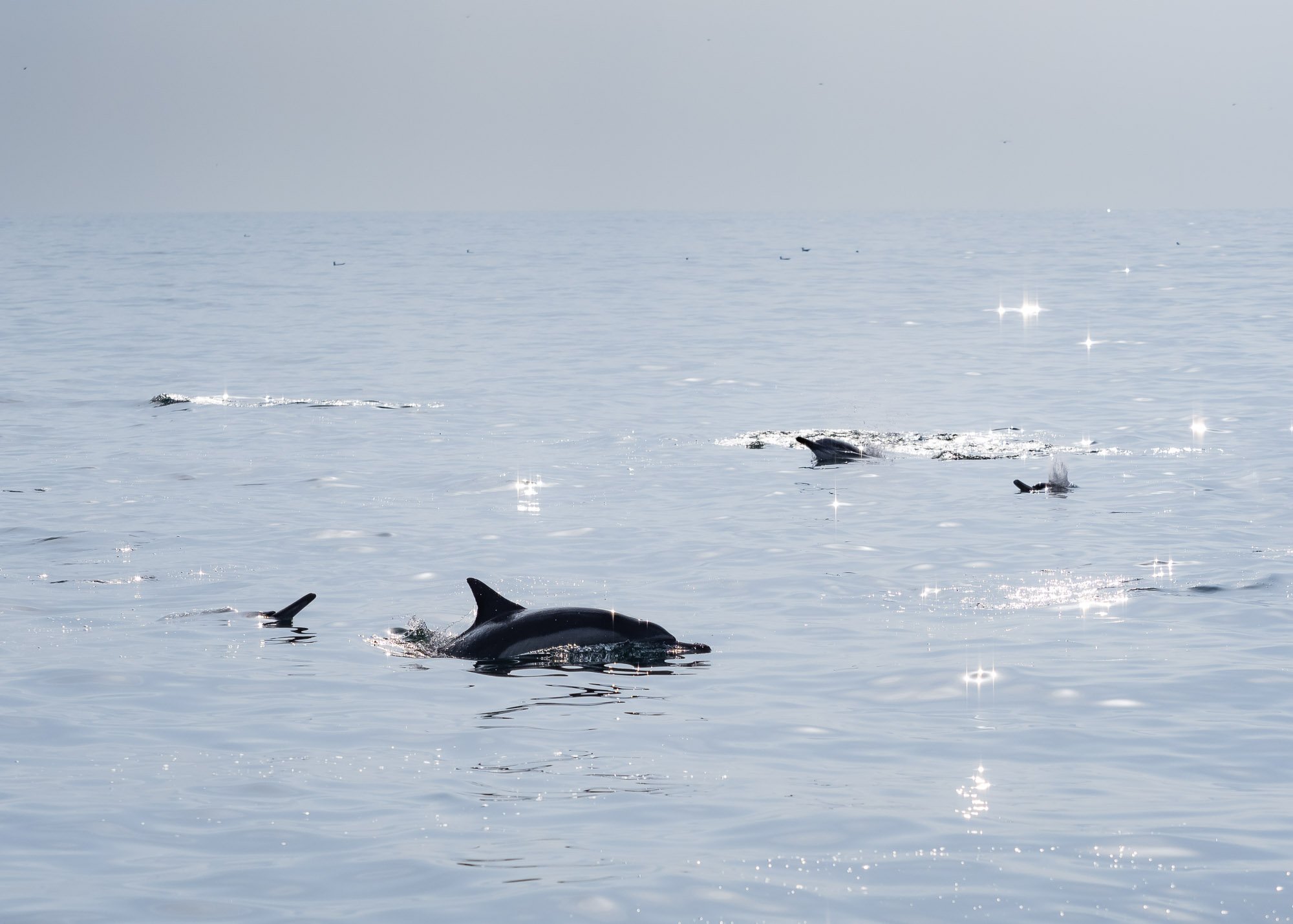
Marine Variety
The Omani Waters are home to turtles, dolphins, and wales at the right time of the year.
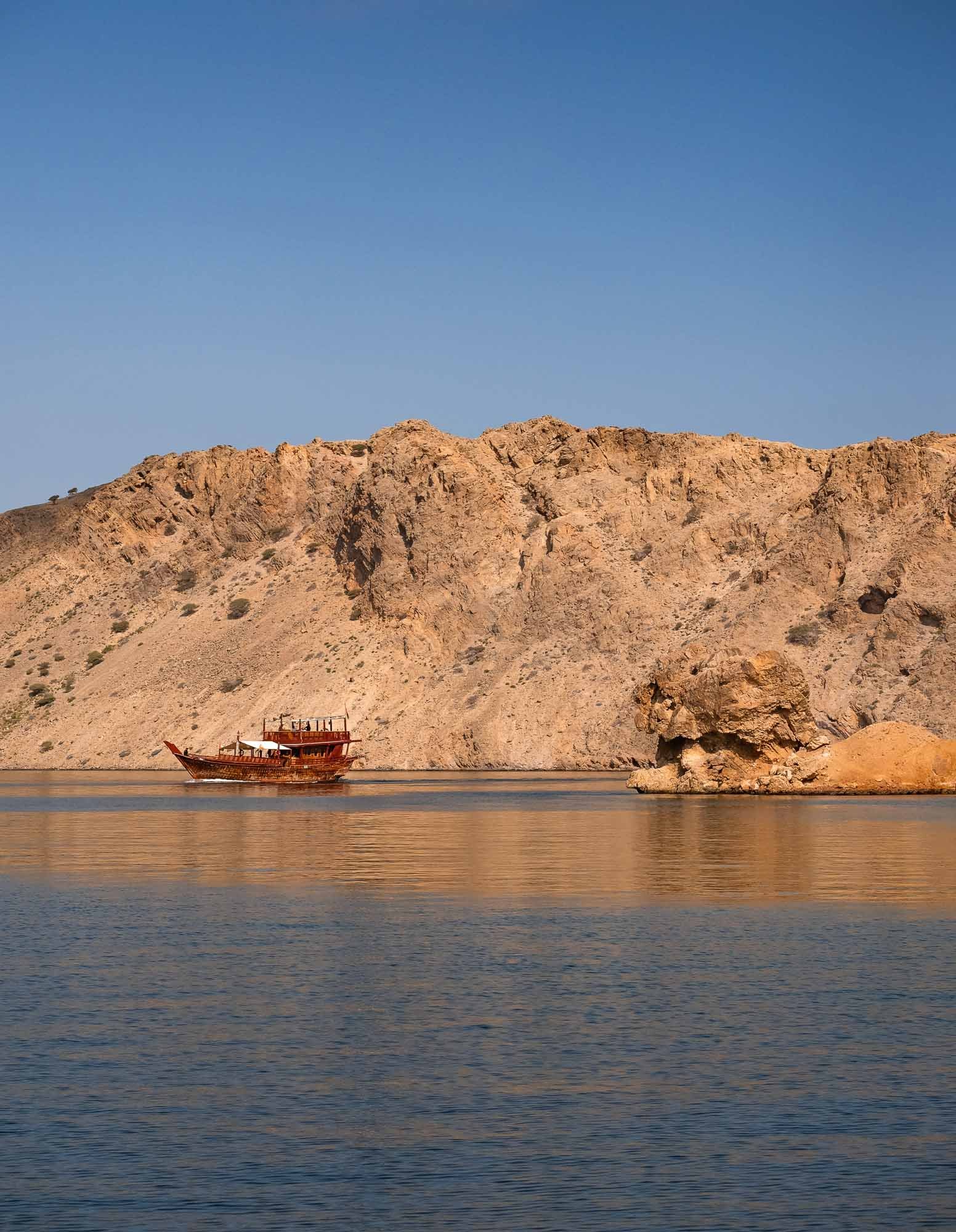
Dhow
A traditional dhow exploring the beautiful coastline.
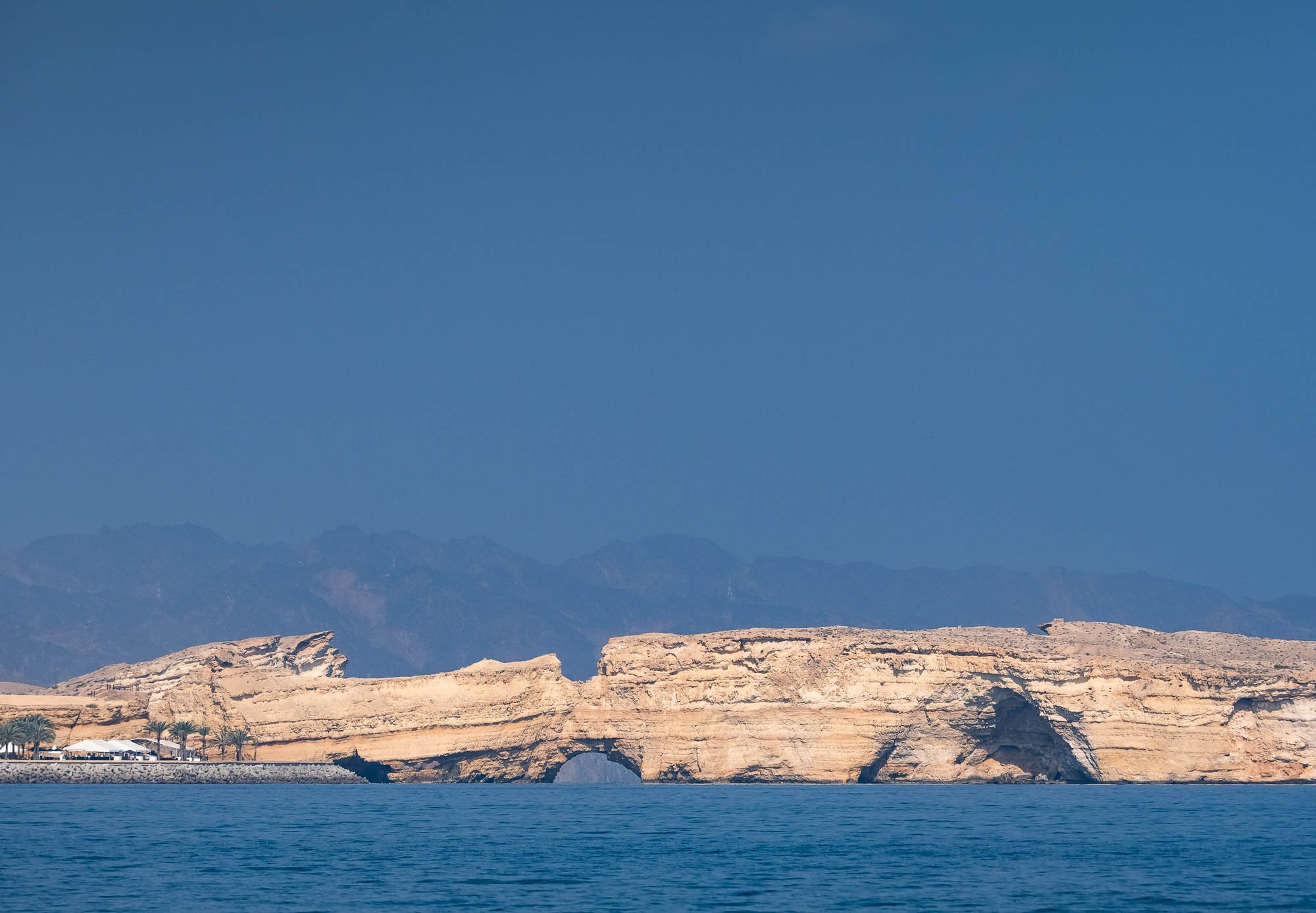
The Natural Arch
We also got to see the aforementioned stone arch near Qantab...
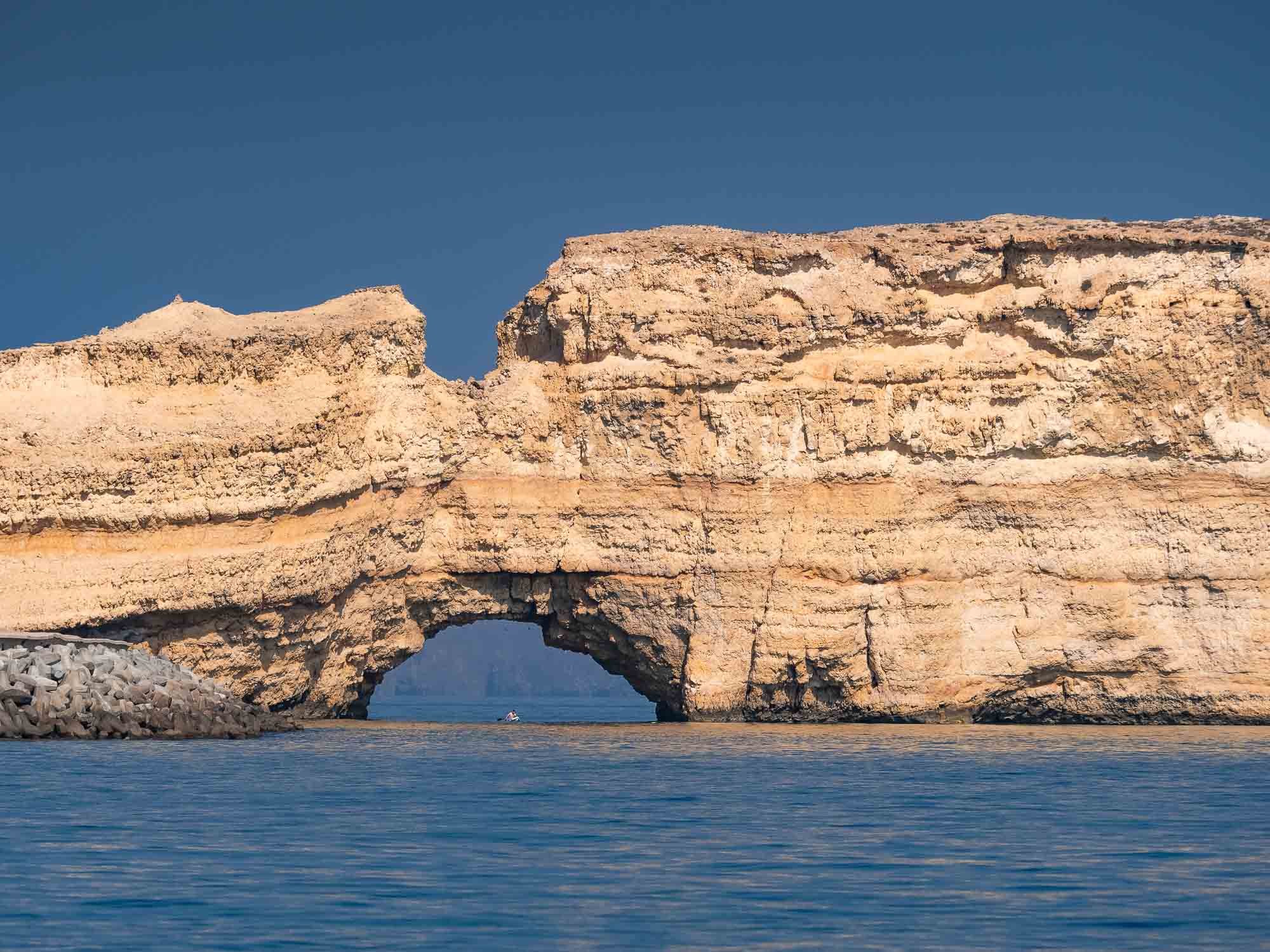
Passage
...with a single explorer on his canoe.

Morning Light
Al Bustan and the State Council buildings from the sea side.
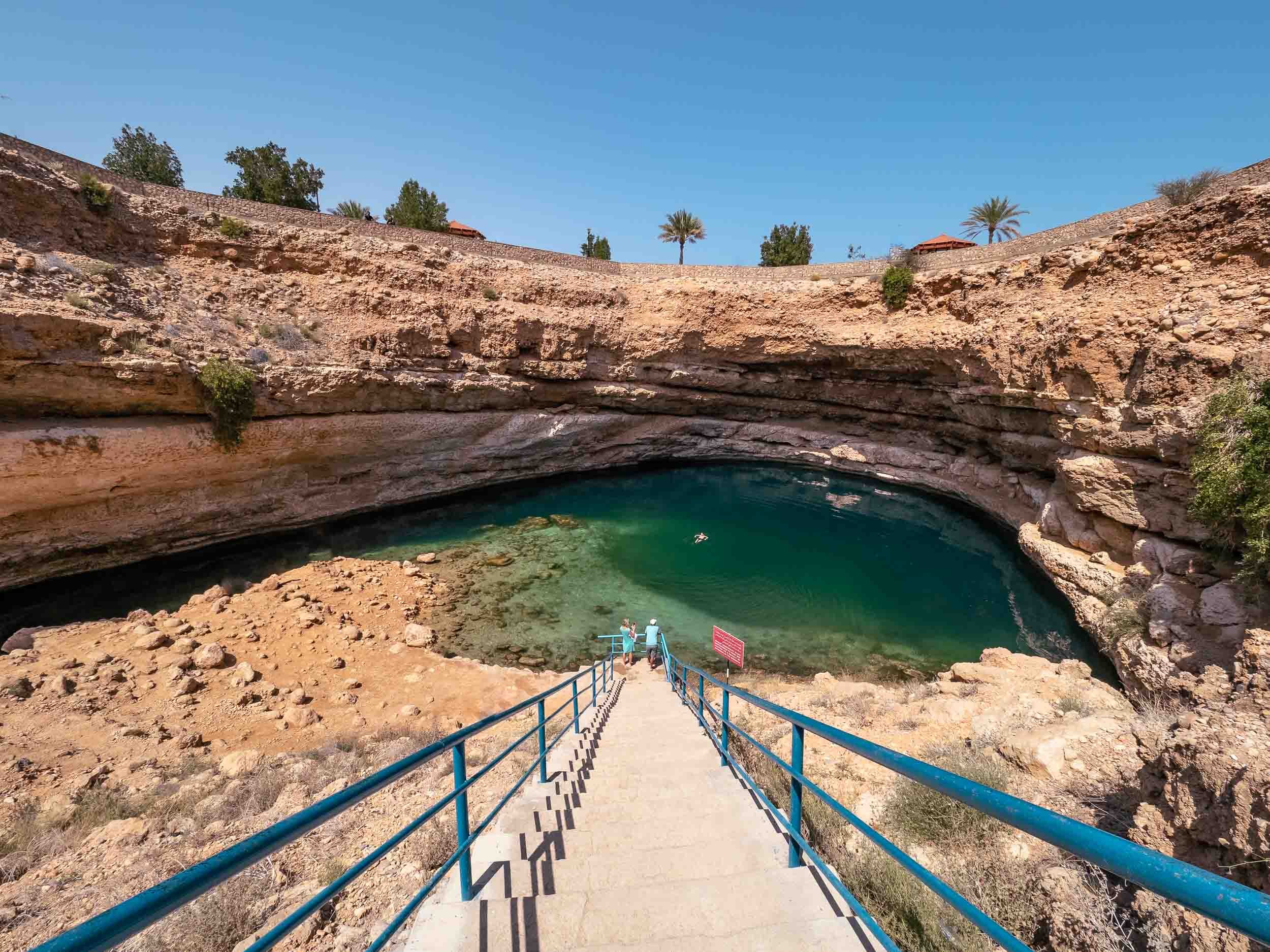
The Way Down
Stairs have been built into it, but I can testify that some people prefer jumping (not me).
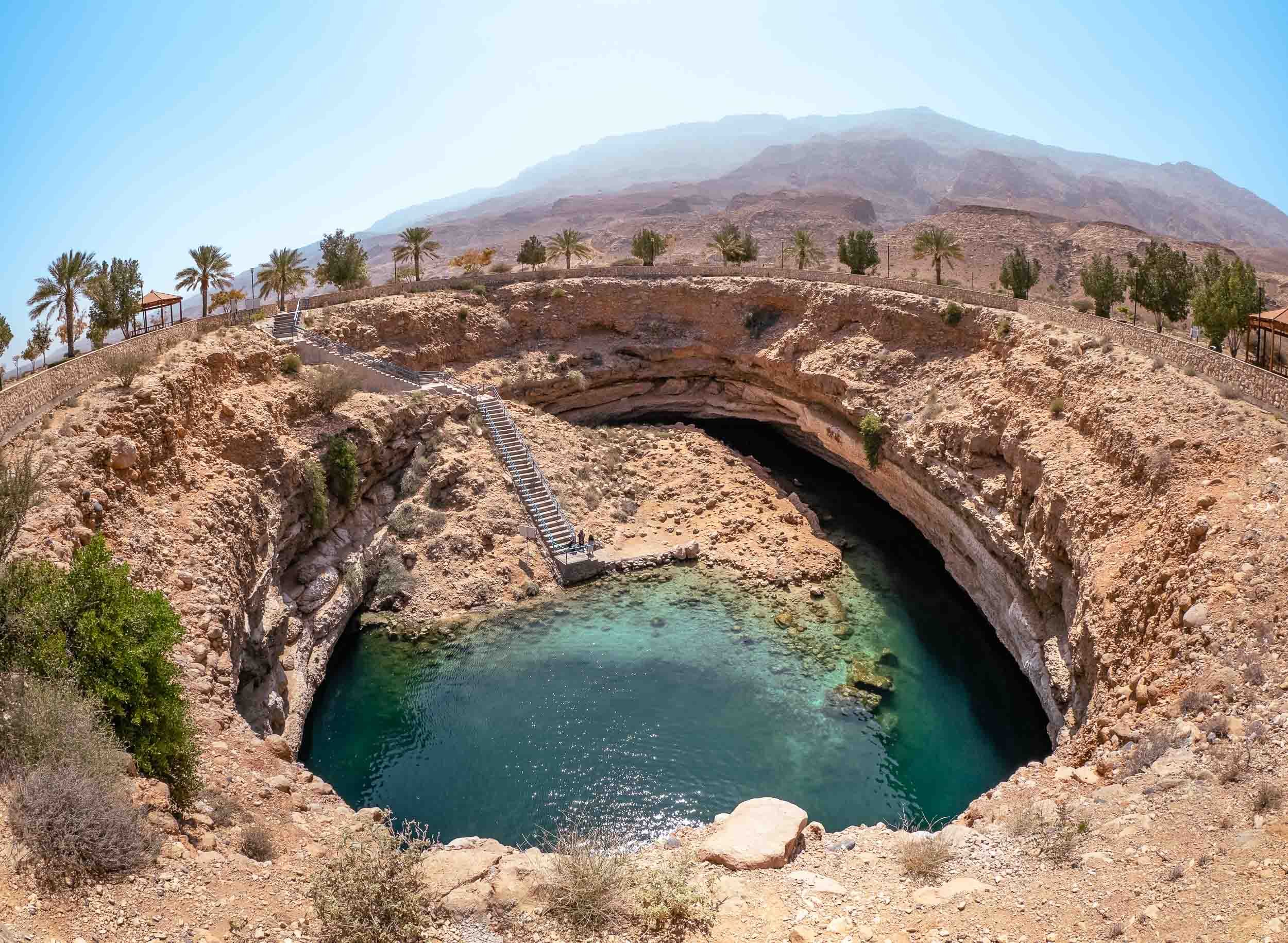
Bimmah Sinkhole
Another incredible spot of natural beauty is this sinkhole near Bimmah, about 100km from Muscat.
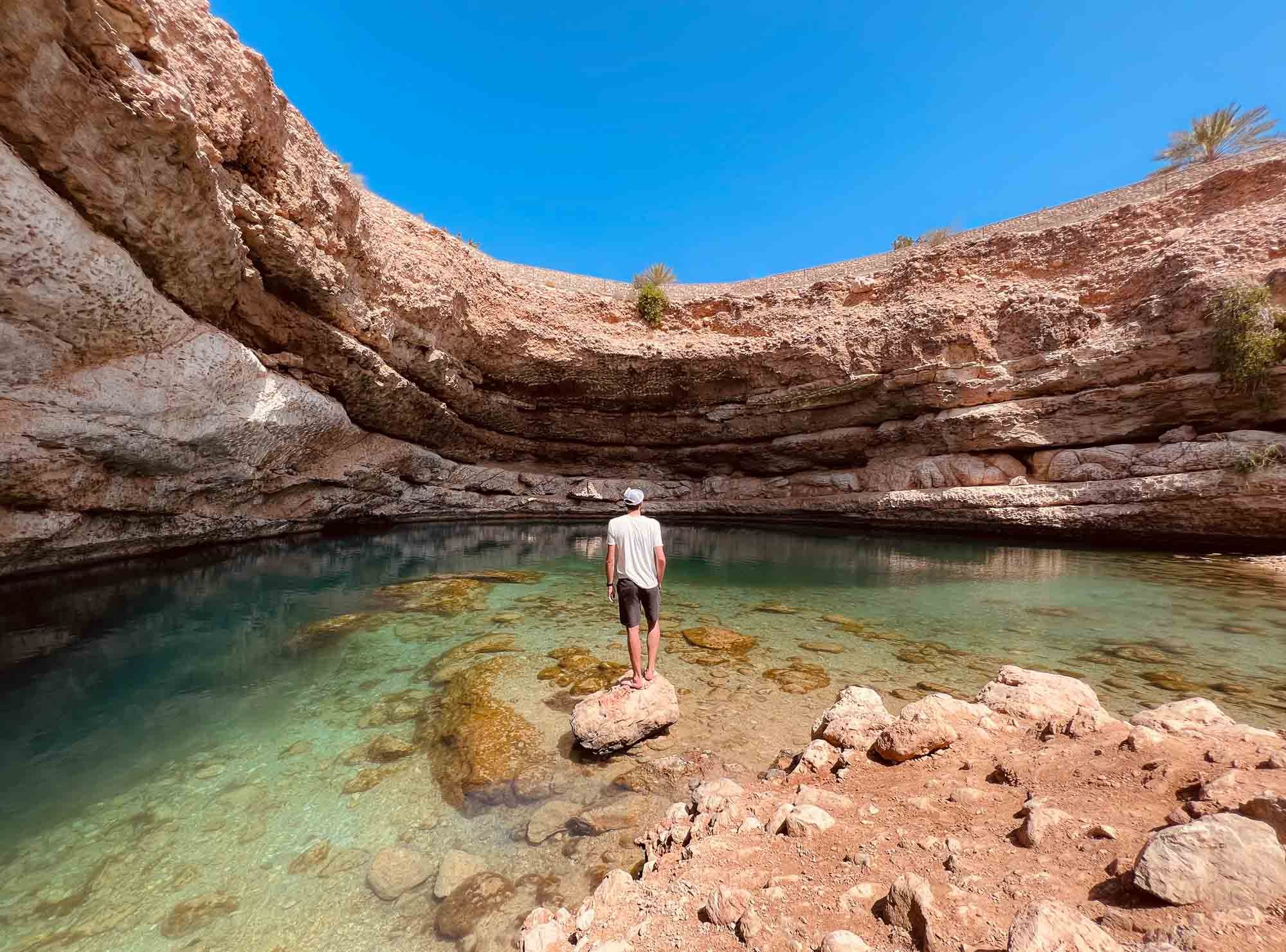
Cyrstal Clear
What a spot for a swim - or just hold your feet into the water and be treated to a fish spa.

Egyptian Vulture
Spotted this guy on the beach.
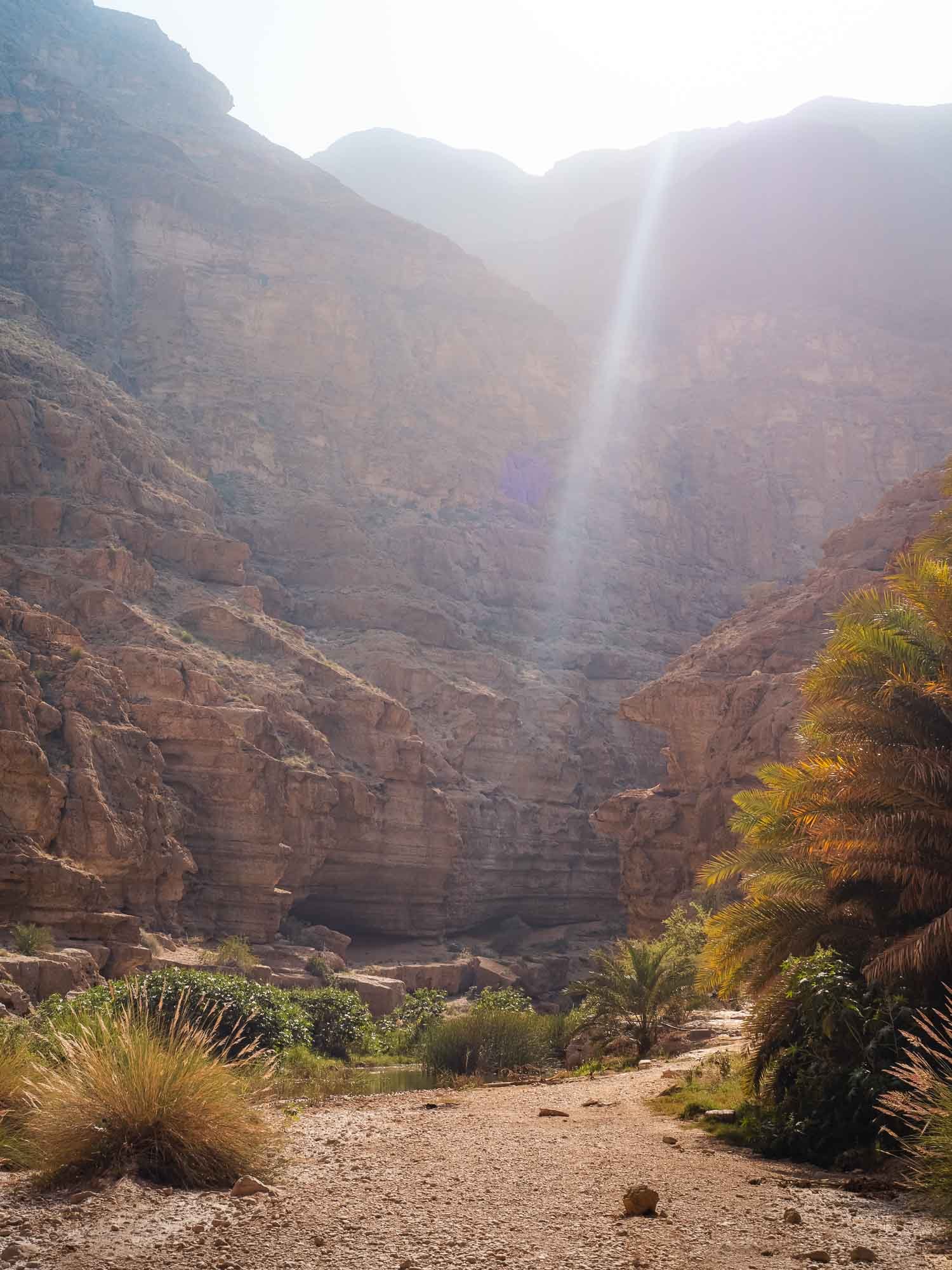
Jurassic Park or Wadi Shab?
Next up, one of the most amazing Wadi's I've seen to date - makes you feel like entering Jurassic Park.

Scale
The size of the canyon and rock formations was amazing.
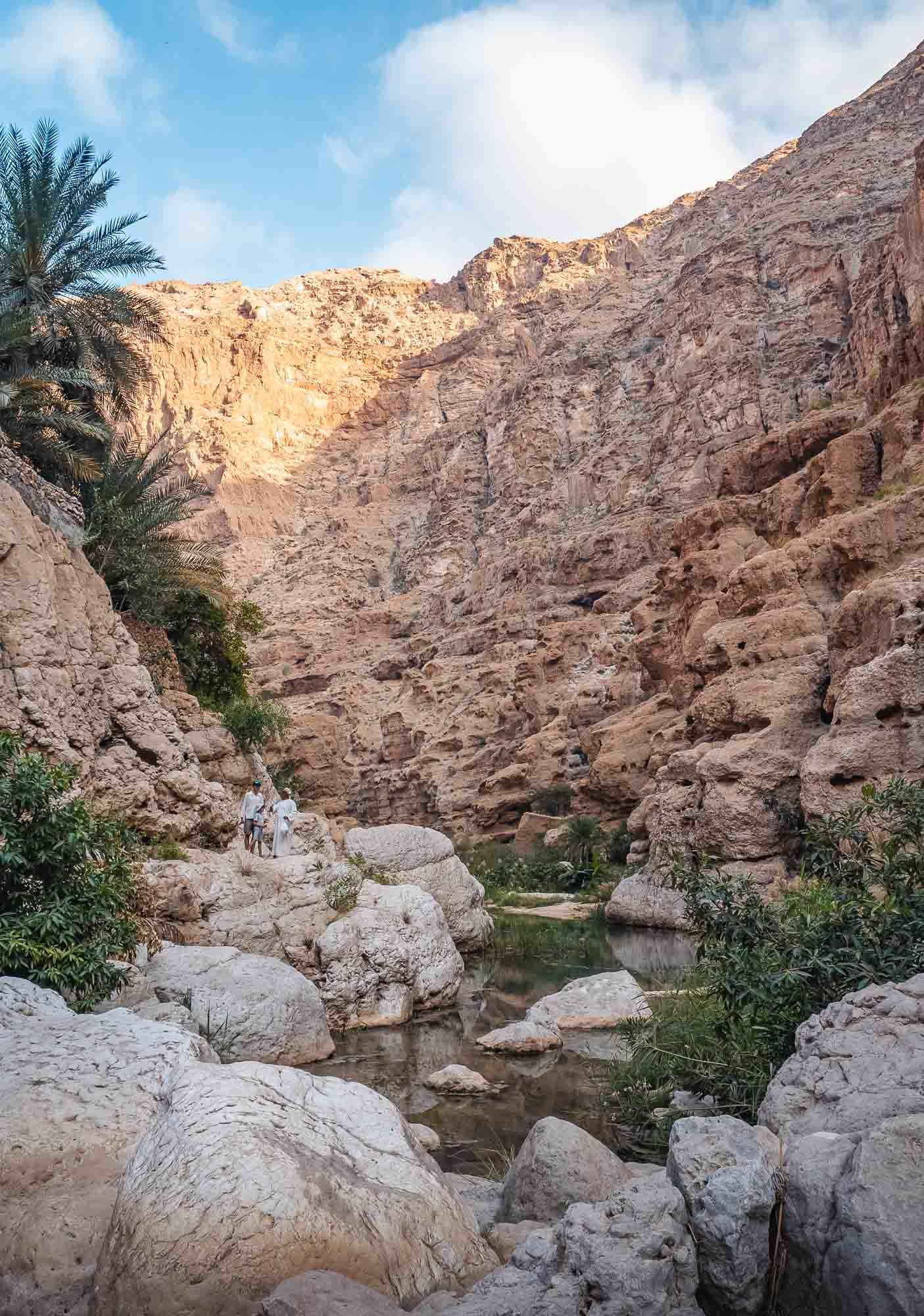
No Photos
After a 10 minute swim into the Wadi you arrive at a small cave, accessible by a narrow opening that barely fits one's head. No photos for that, got to explore yourself!
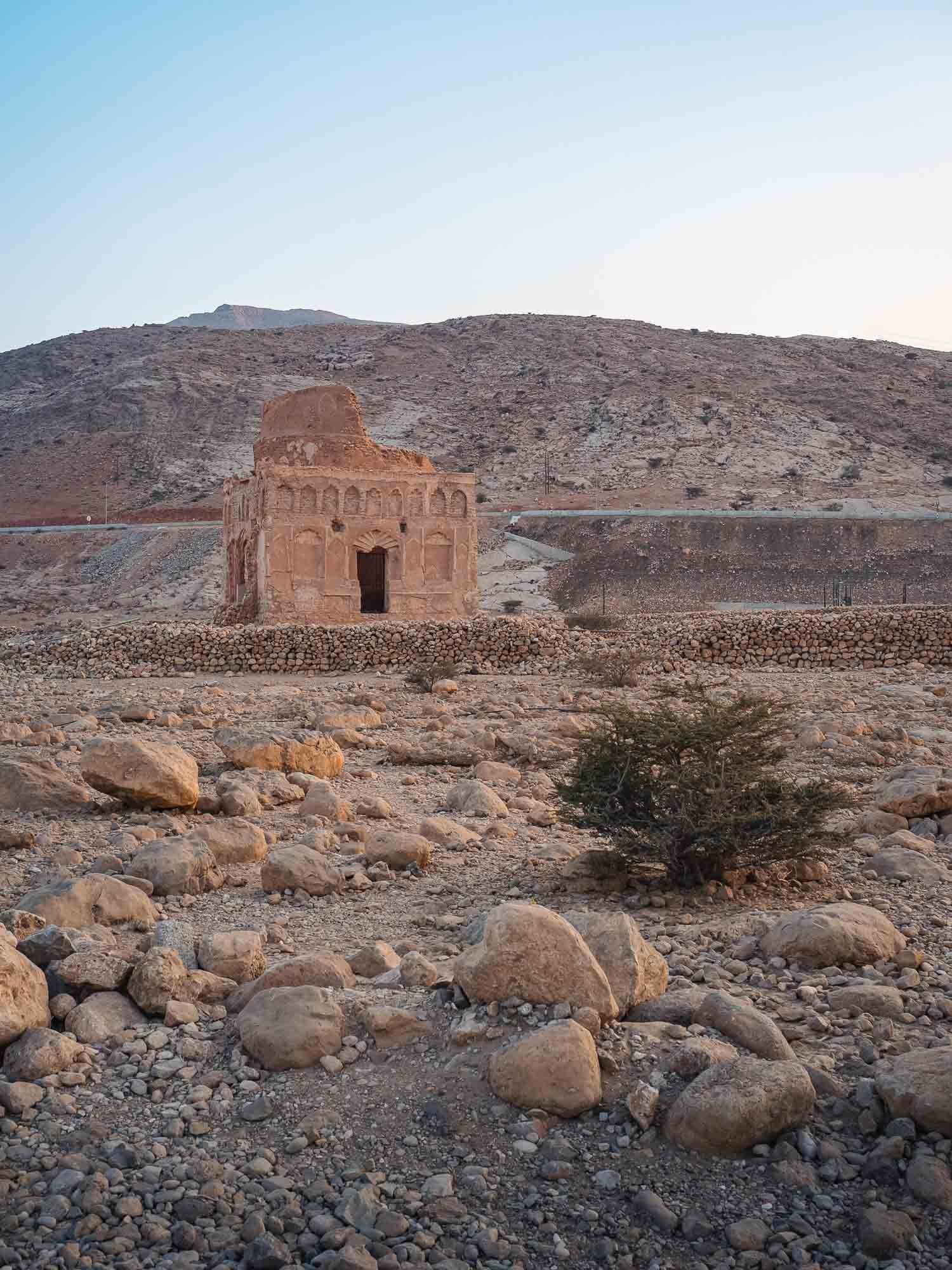
Incredible History
We drove a little further on the coast to see another World Heritage Site: Qalhat. It is unfortunately currently closed, but you can spot its most significant remaining site, the Bibi Maryam mausoleum. This city was visited by Ibn Battuta, Zeng He, and Marco Polo!
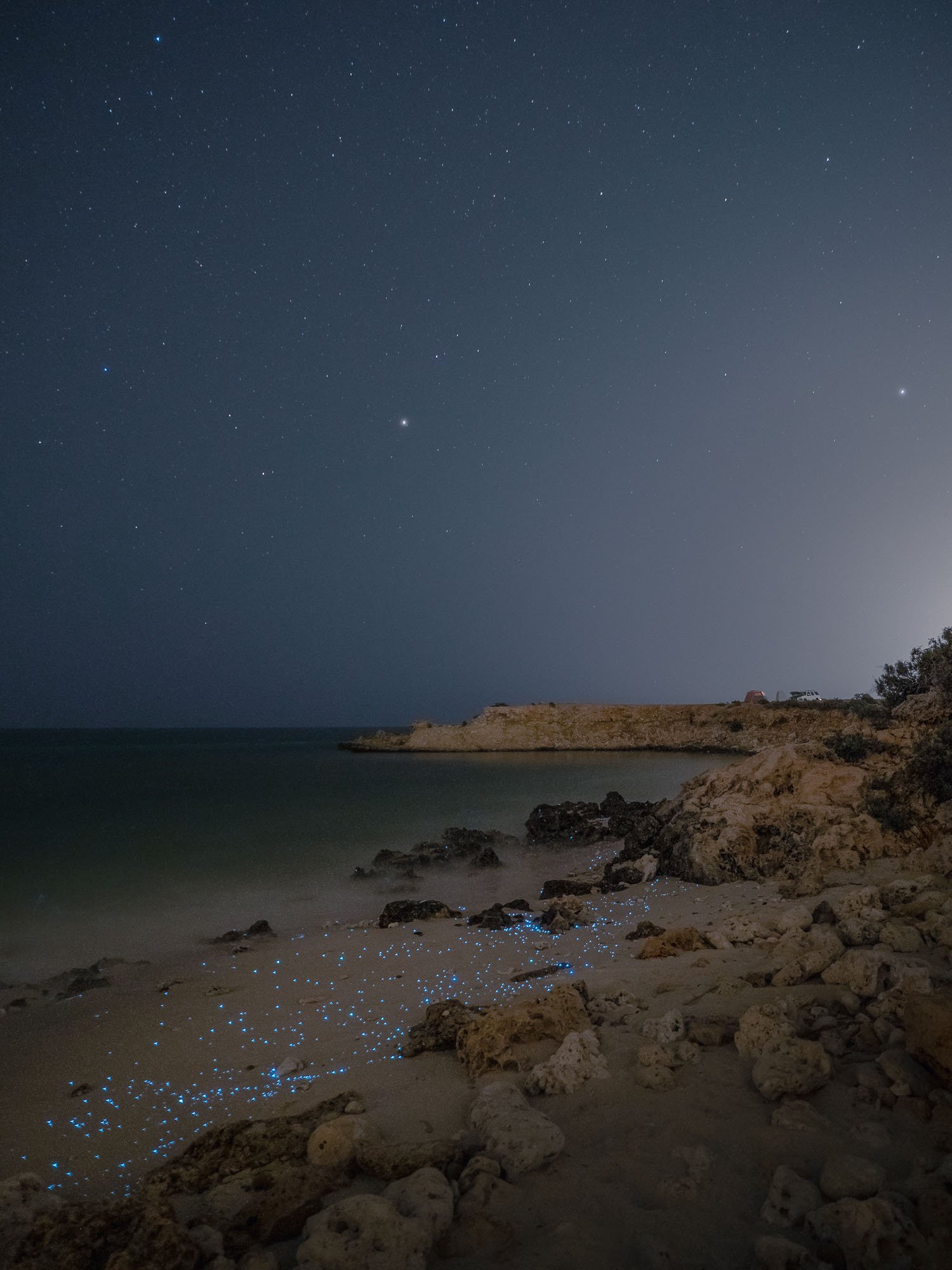
Sometimes You Get Lucky
Our plan was to spend the night on the way back to Muscat somewhere on the coast - we knew chances to see the bioluminescent plankton on the beach were next to nothing, but there was always the Milky Way or some deep sky photography...
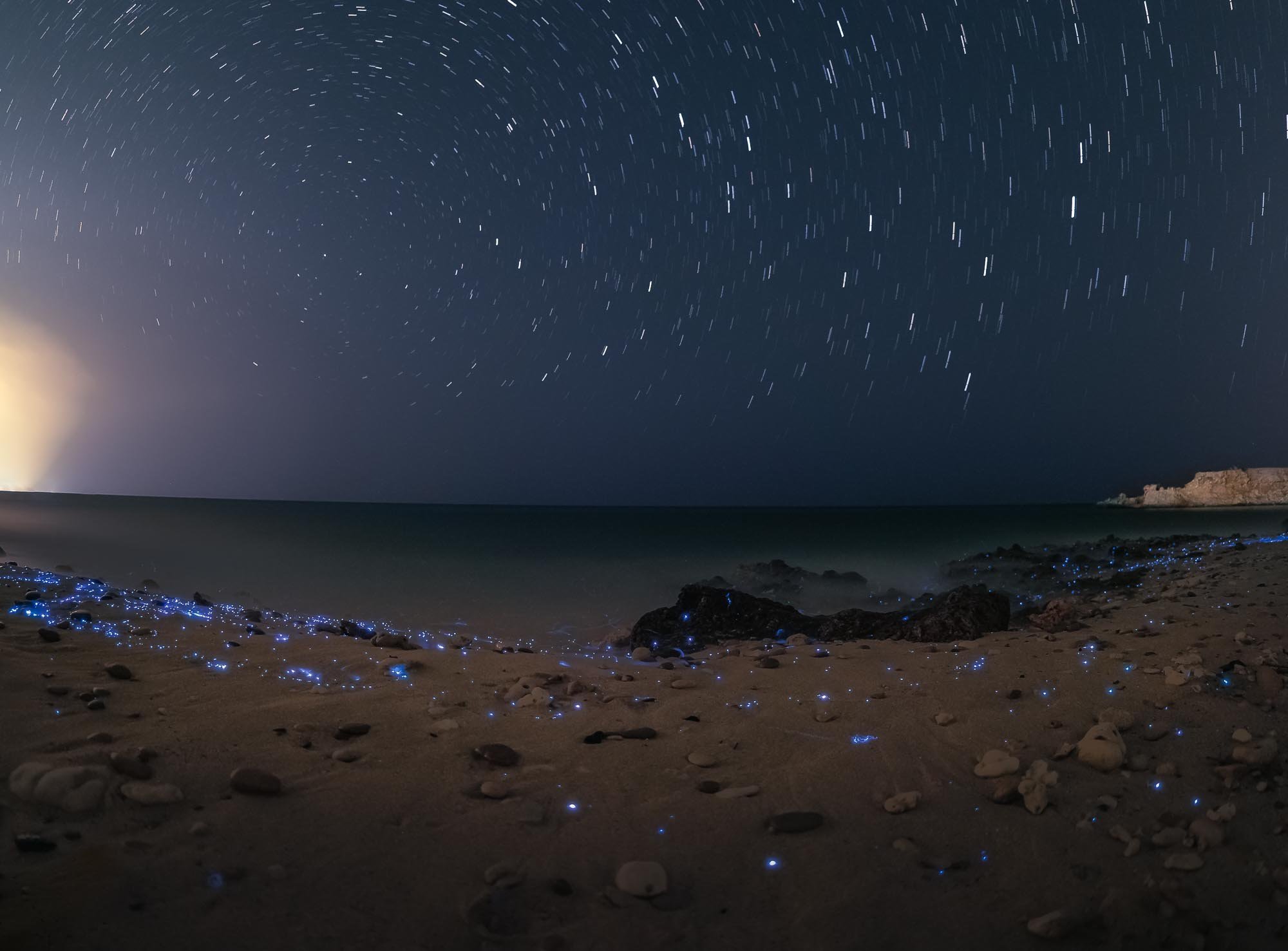
Natural Wonders
When we explored good locations to set up for the night, our second spot proved to be the golden one, and we spotted little blue dots on the beach and rocks as the waves hit.
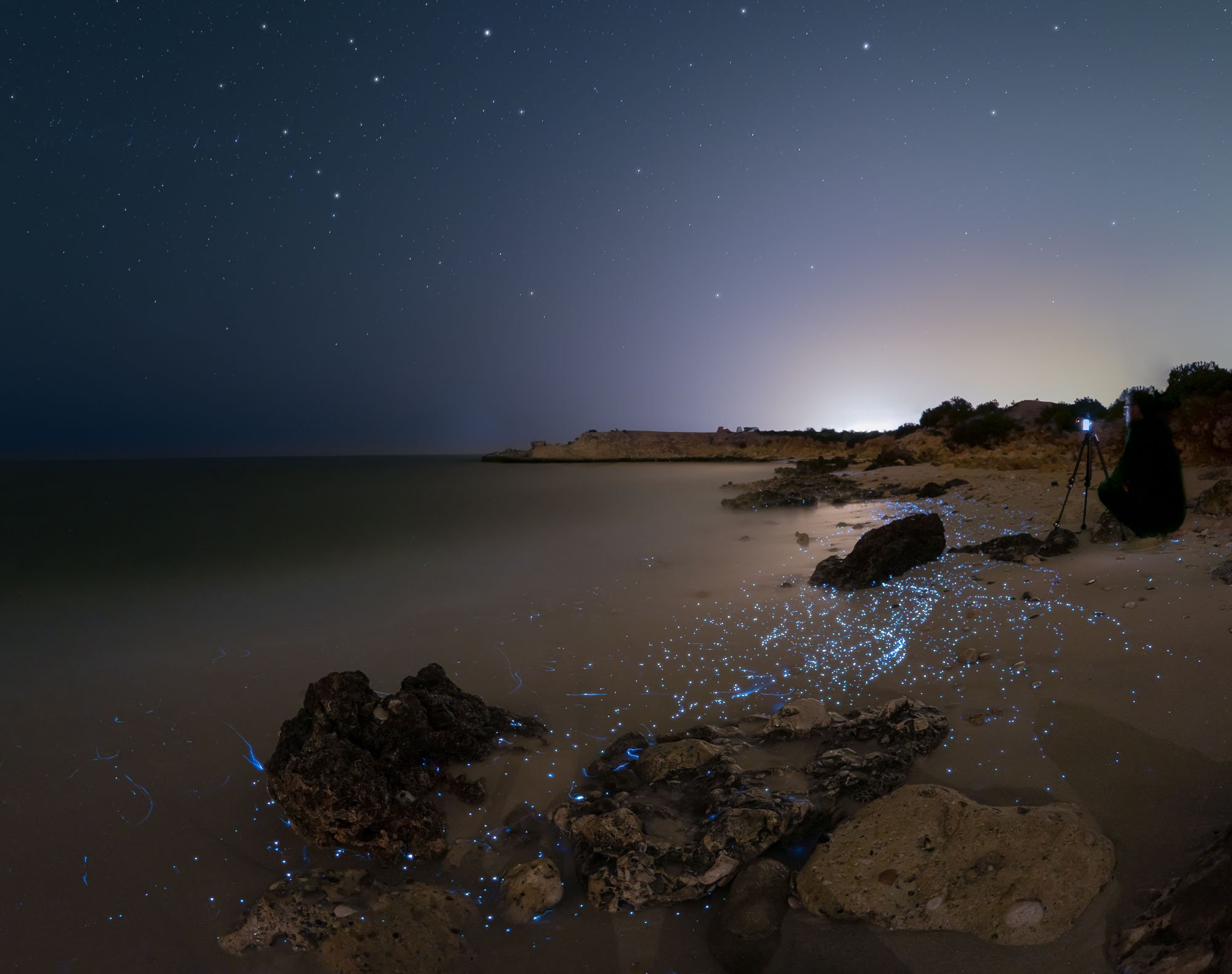
Magical
After turning off the flashlight, we saw it for what it really was - the elusive glowing blue bioluminescent phytoplankton. The blue light is produced by energy released from chemical reactions occurring inside these organisms - what a sight.
The Last Day in Muscat
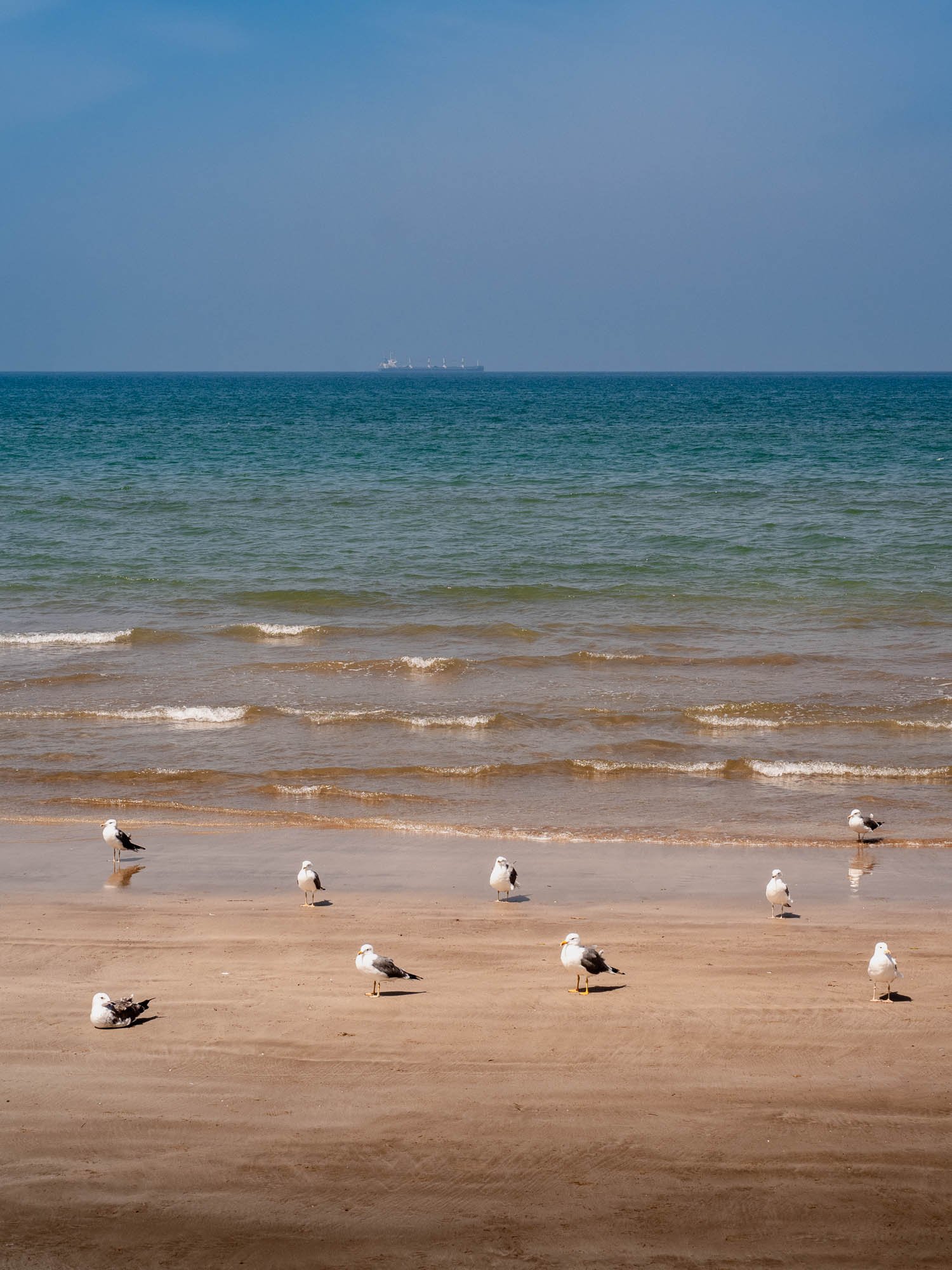
Beach Vibes
The next day was a later and slower start after the night on the coast, walking on the beaches of Muscat.

Friday Vibes
Oman retains the Friday weekend, so the locals were enjoying the day out.
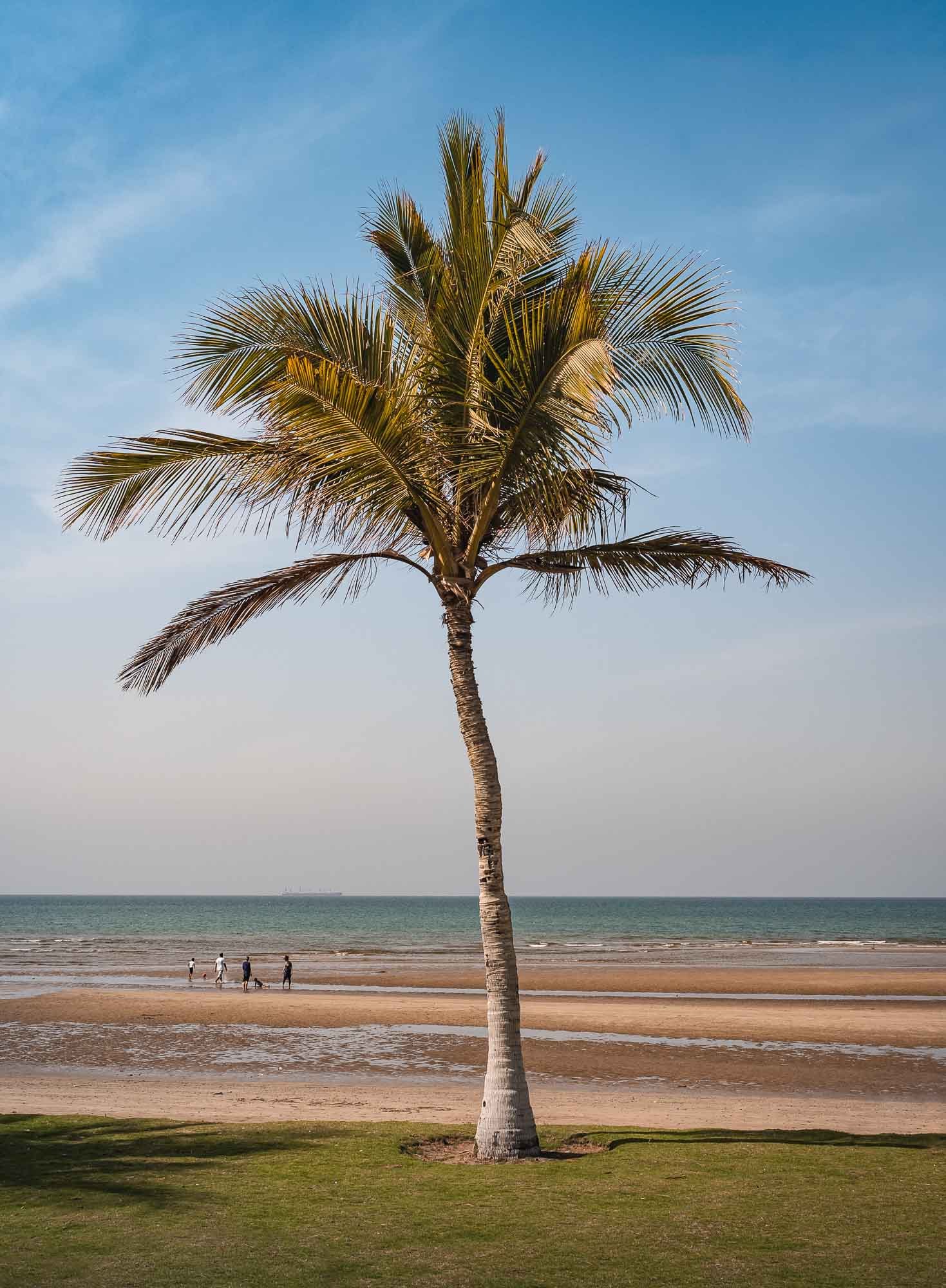
Postcard Views
All around in Oman!
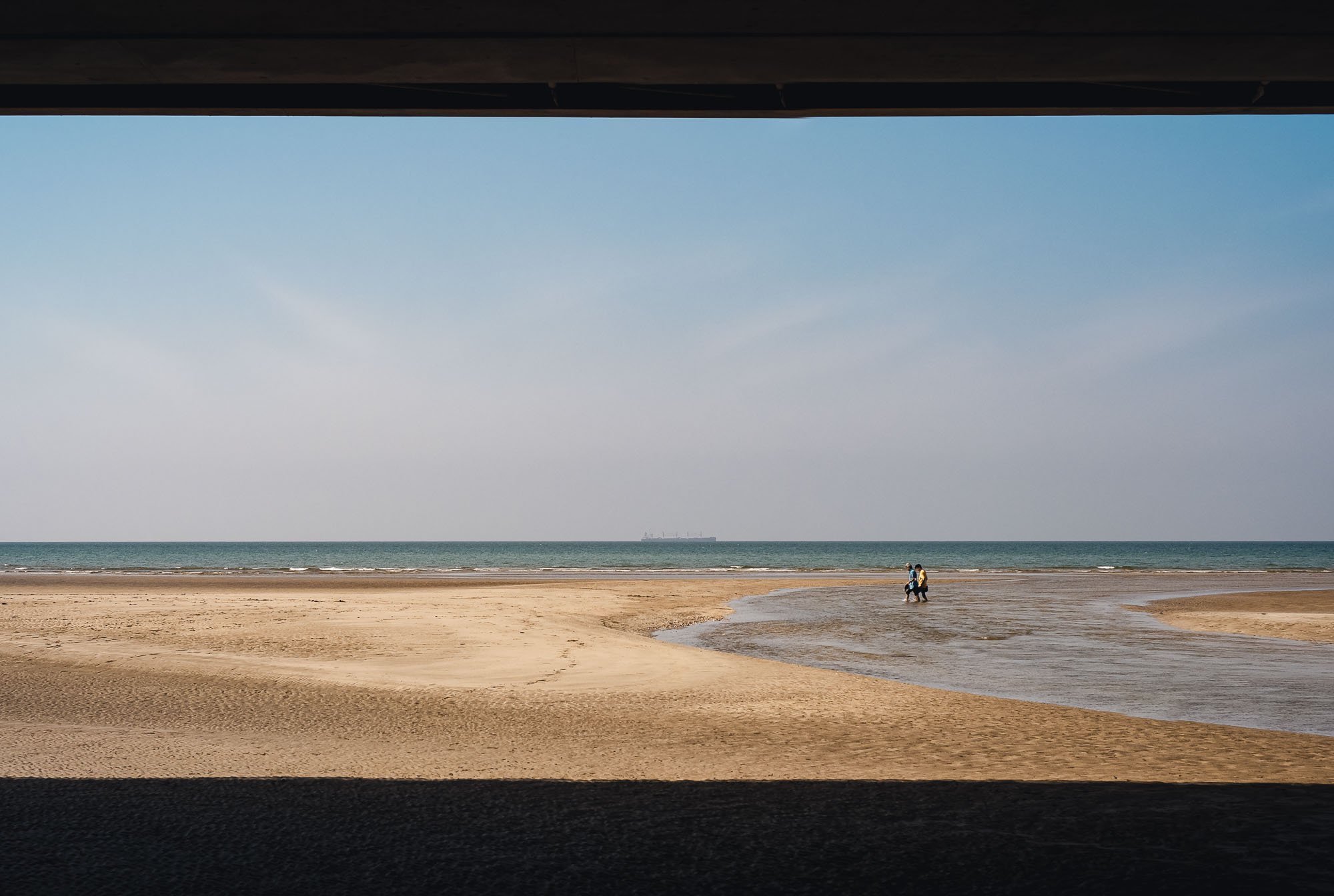
Qurum Beach
This was taken at the beach near the city's national park.
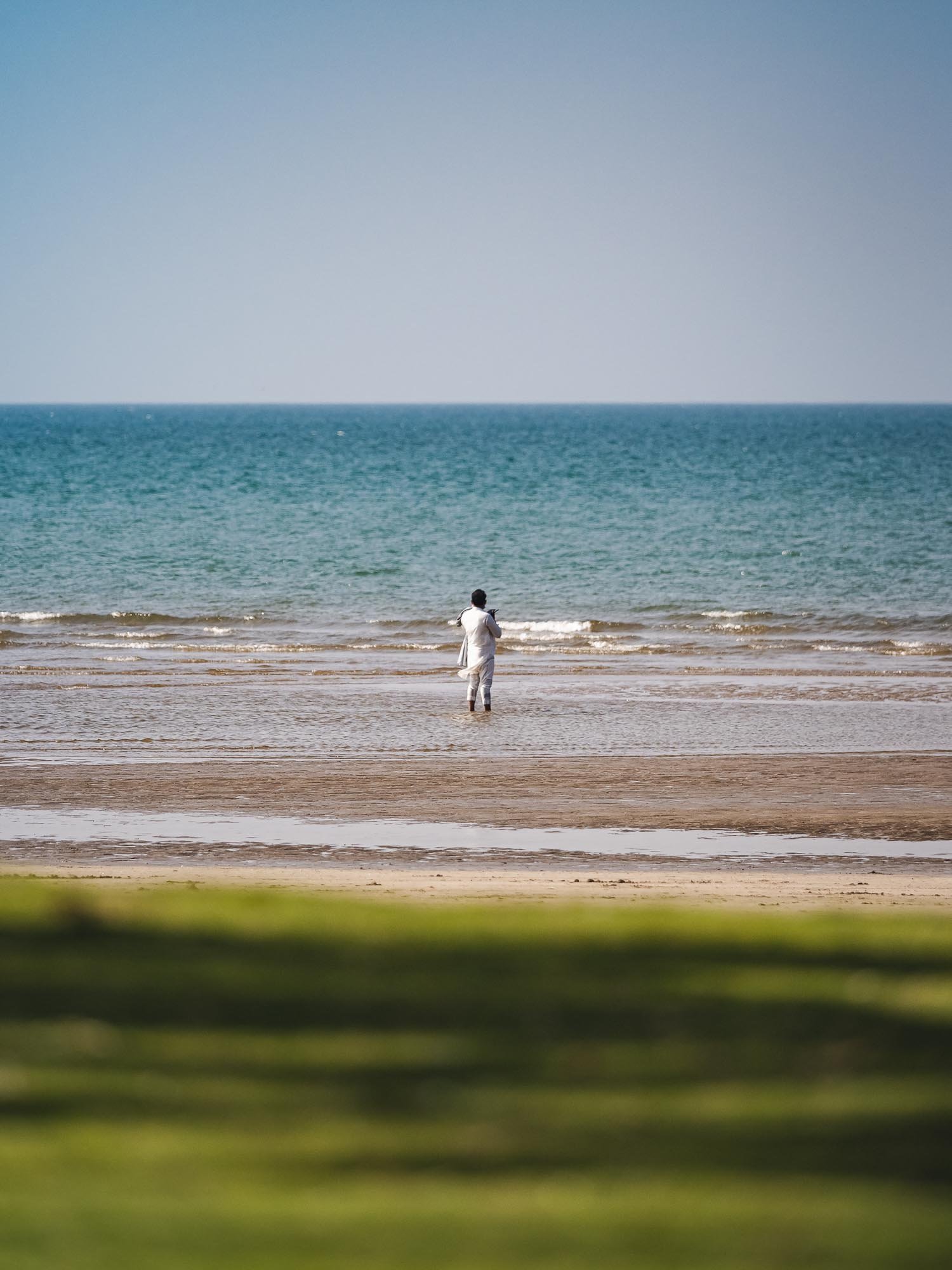
Nice Day
for a walk alone...
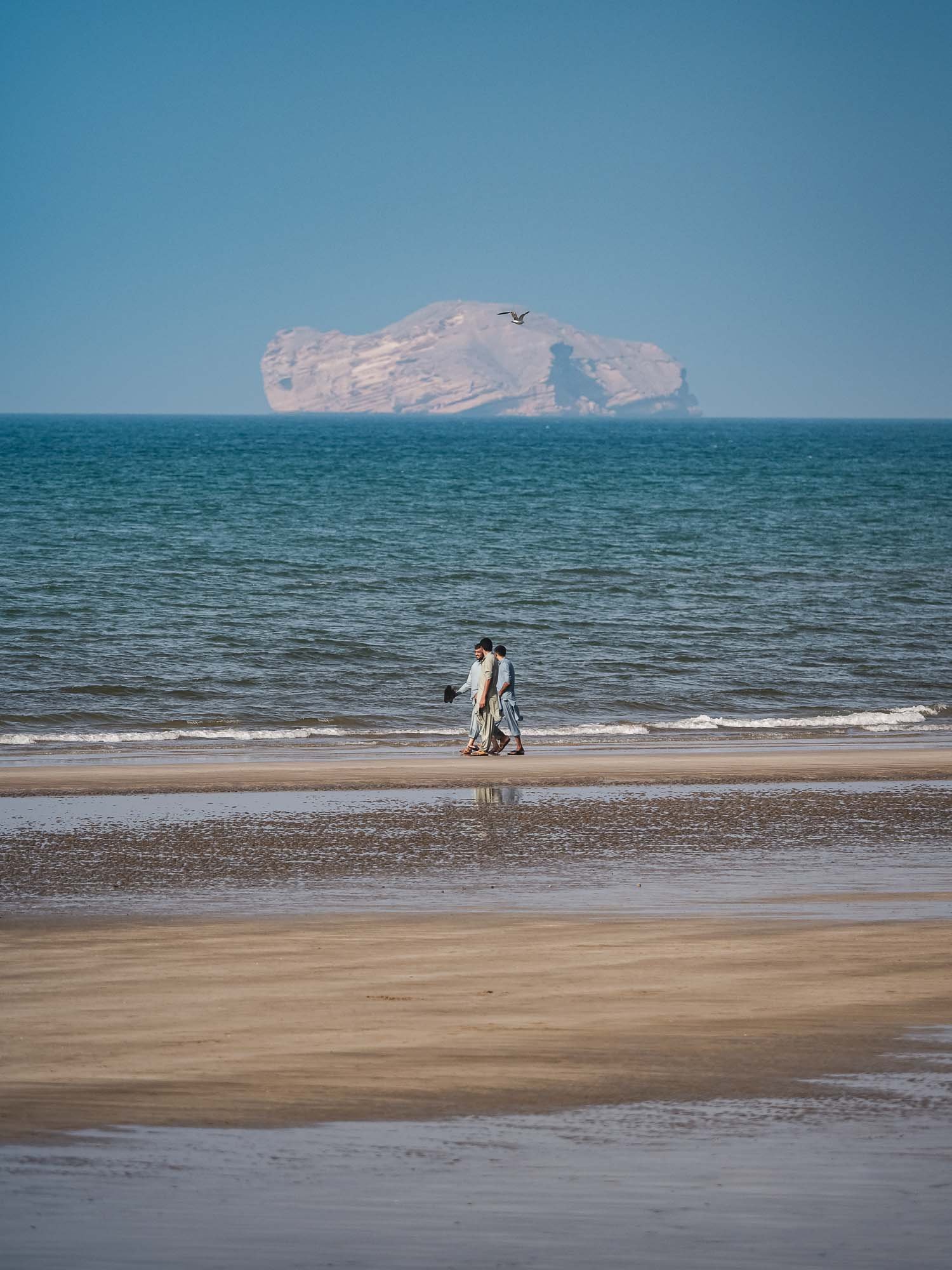
Or
...with friends.
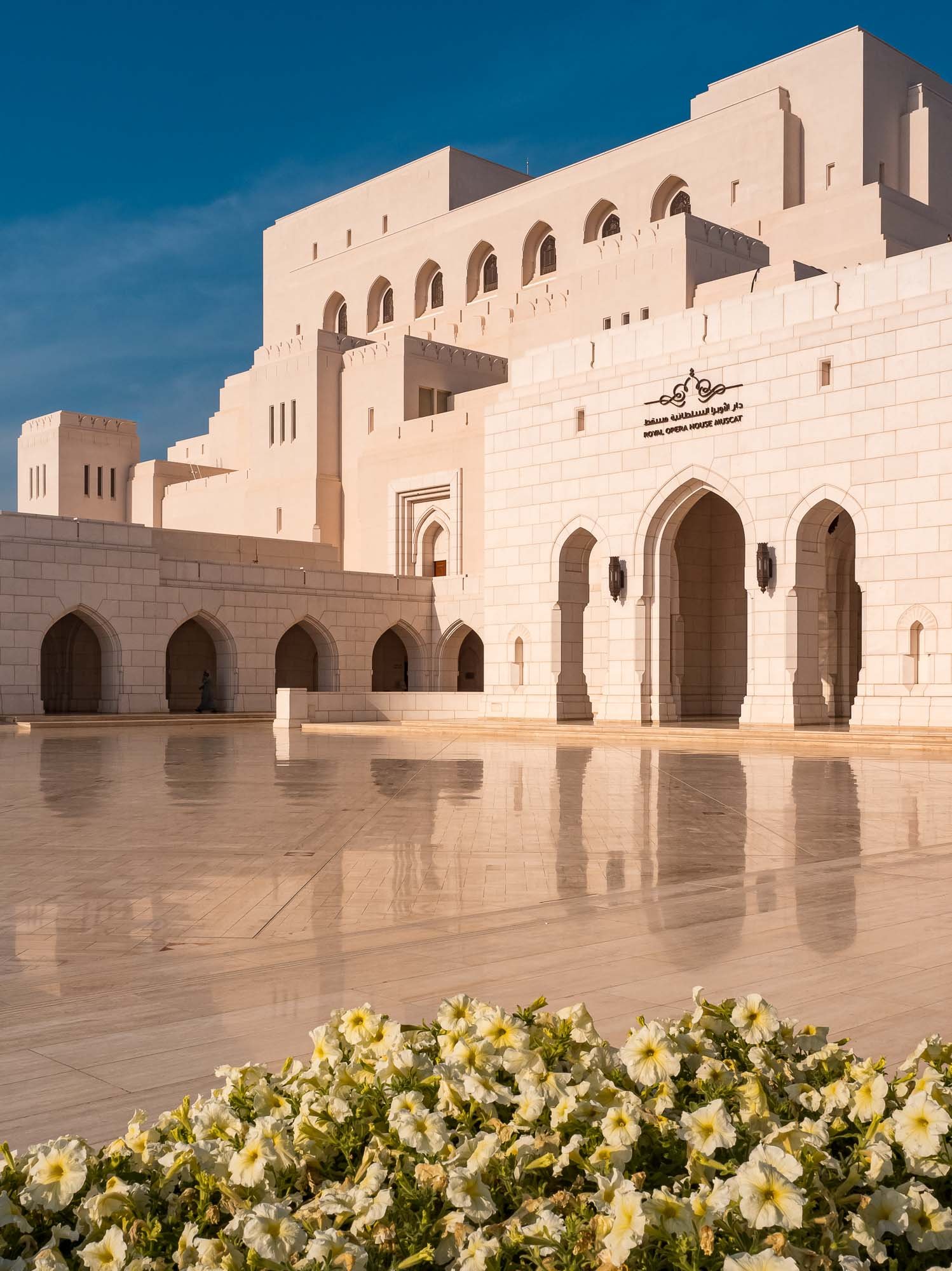
Royal Opera House
We also visited the Royal Opera House, which opened in 2011 and has seen performances by Plácido Domingo and Andrea Bocelli. Unfortunately the interior wasn't open for visits that day.
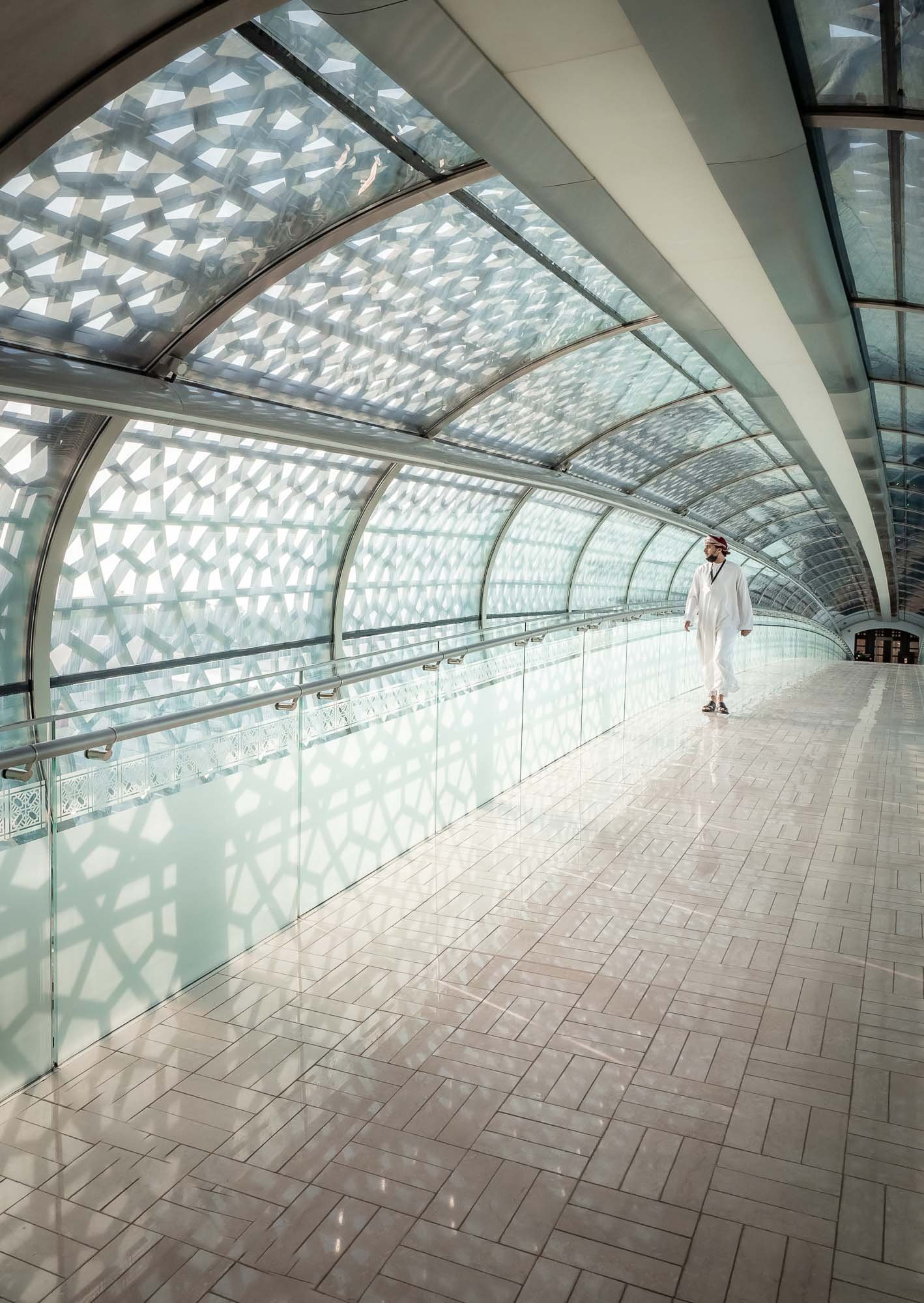
Architecture
It did feature this neat bridge crossing to the House of Musical Arts.

In Flight
Couldn't resist causing a bit of a stir up when we passed Al Bait Mosque.
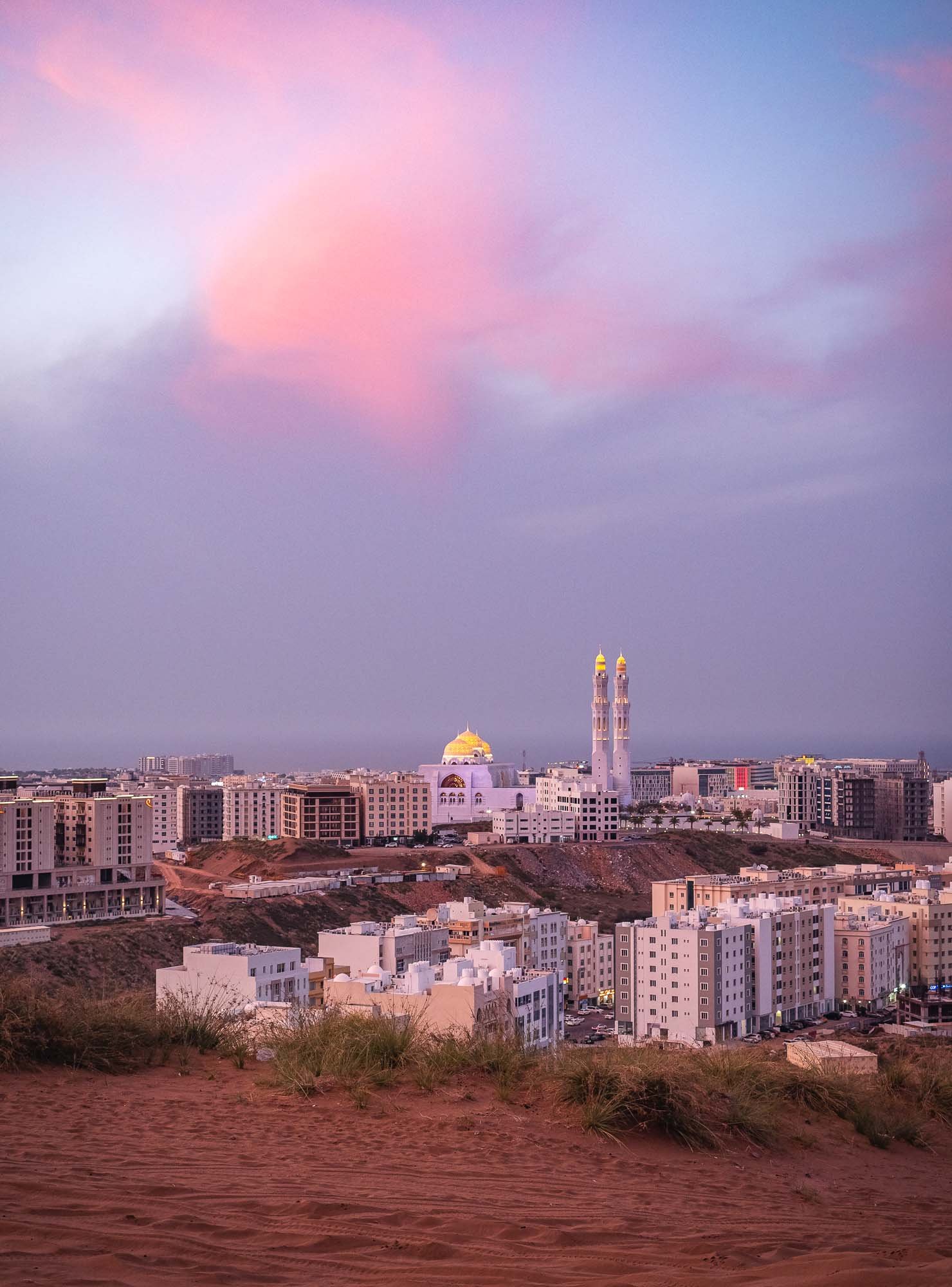
Golden Hour Vibes
We spent the evening hiking up some dunes in the city for sunset.

Fun Times
We weren't the only ones up there, as a group of people on motorbikes, quads and 4x4s made the most of the evening.
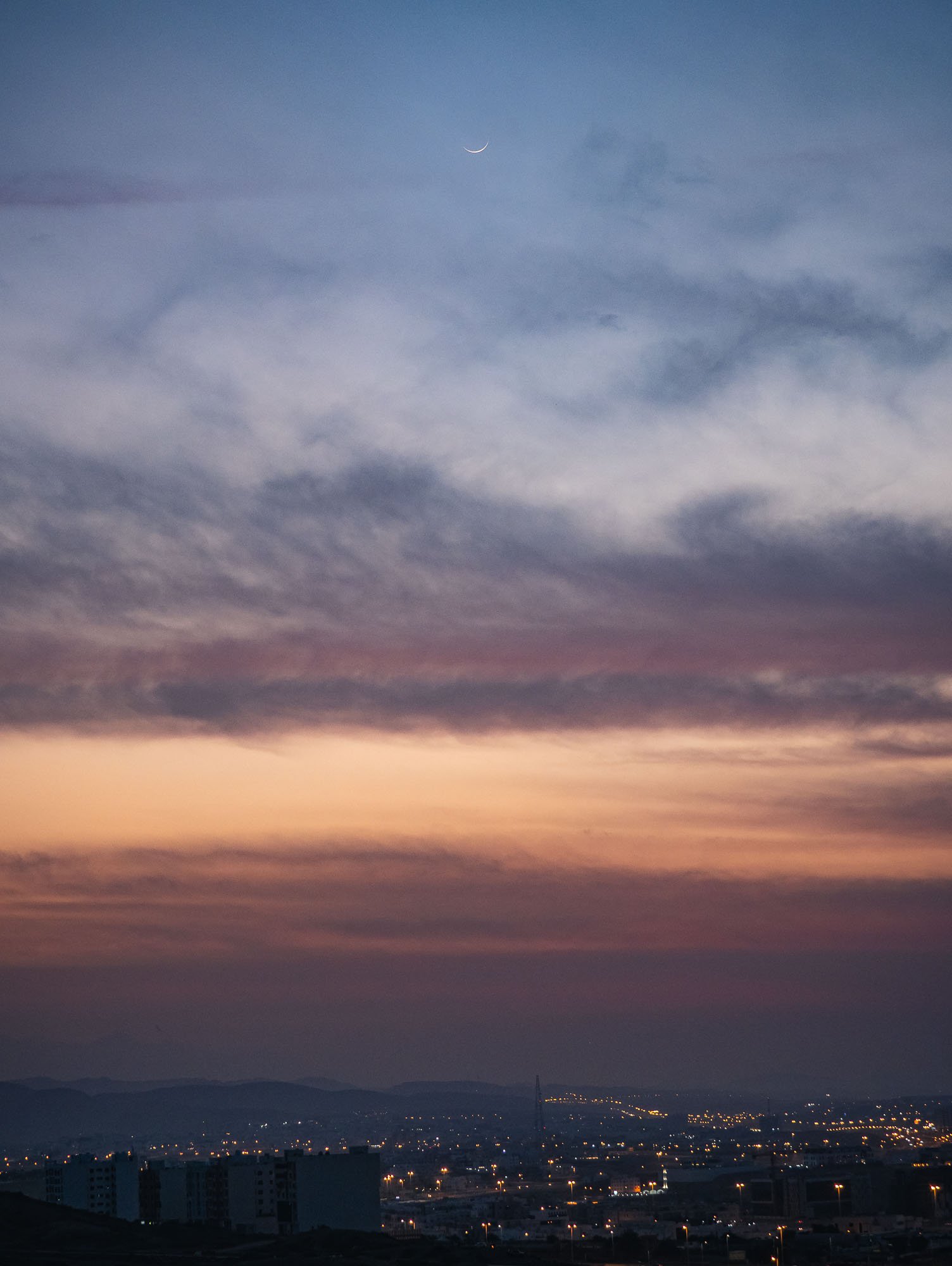
Luna
The moon came out to play as well.

Favourite Subject
Of course I had to play along.
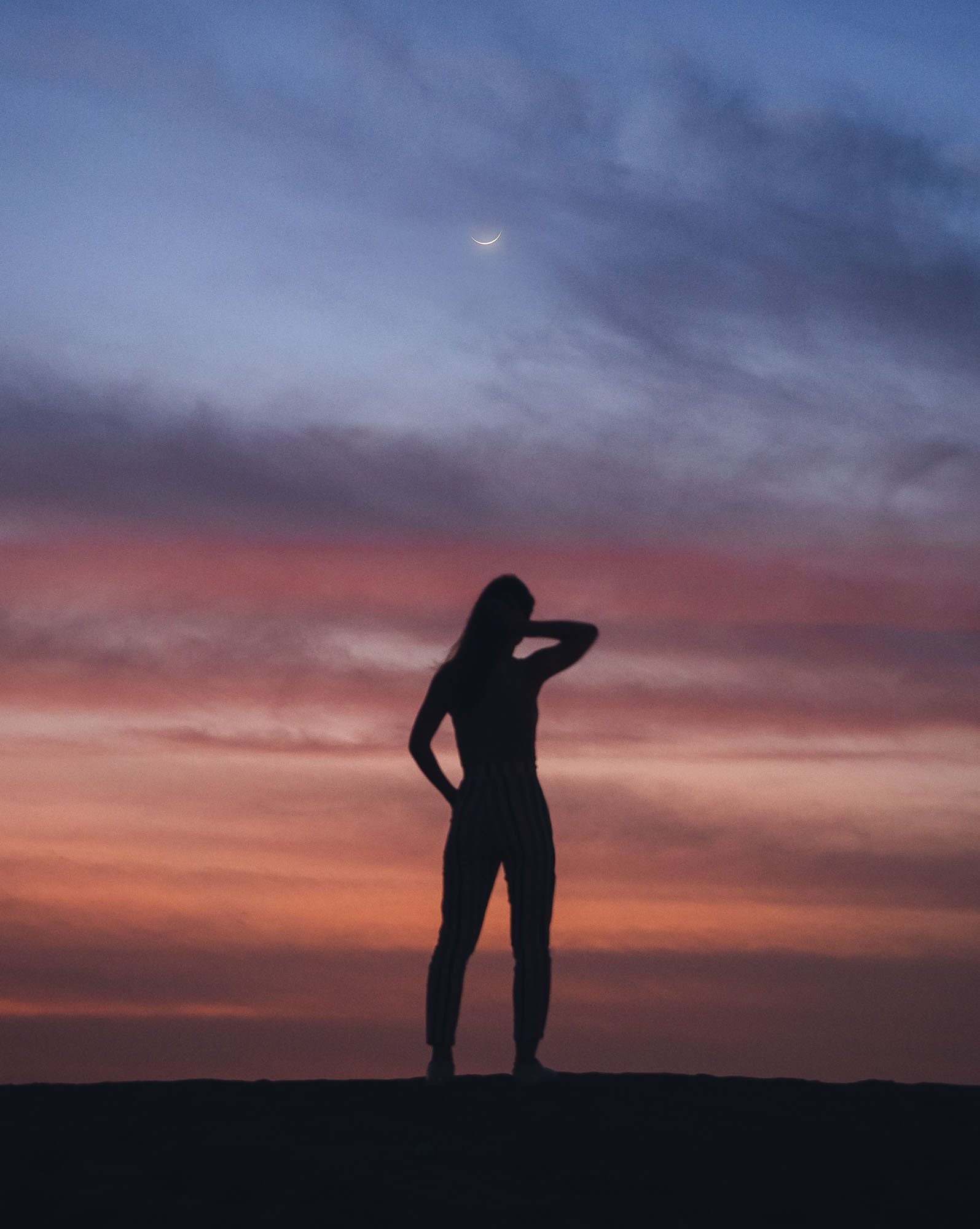
Last Sunset
An appropriate one.
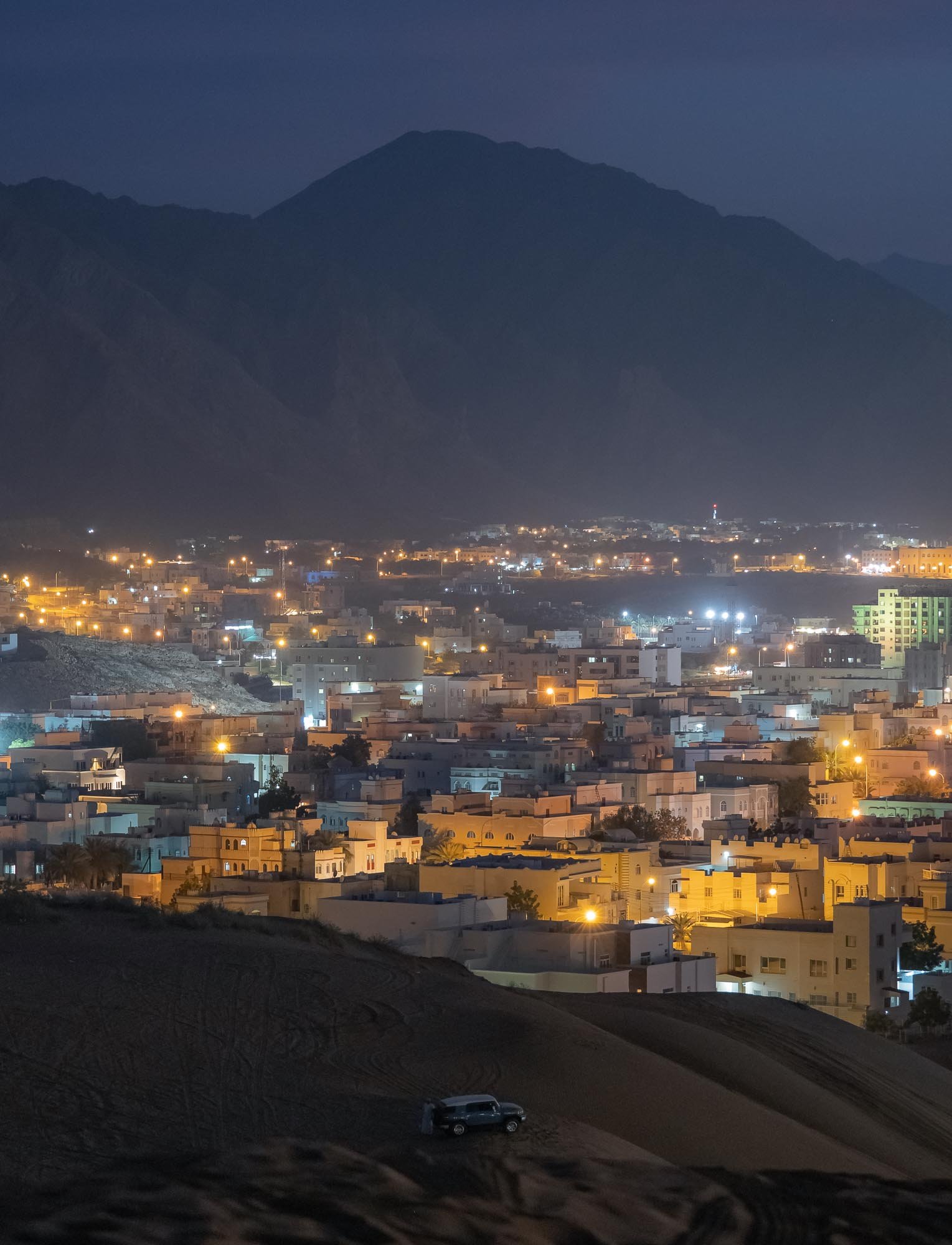
City Lights
The last light of the day disappearing over Muscat.
Back to Dubai
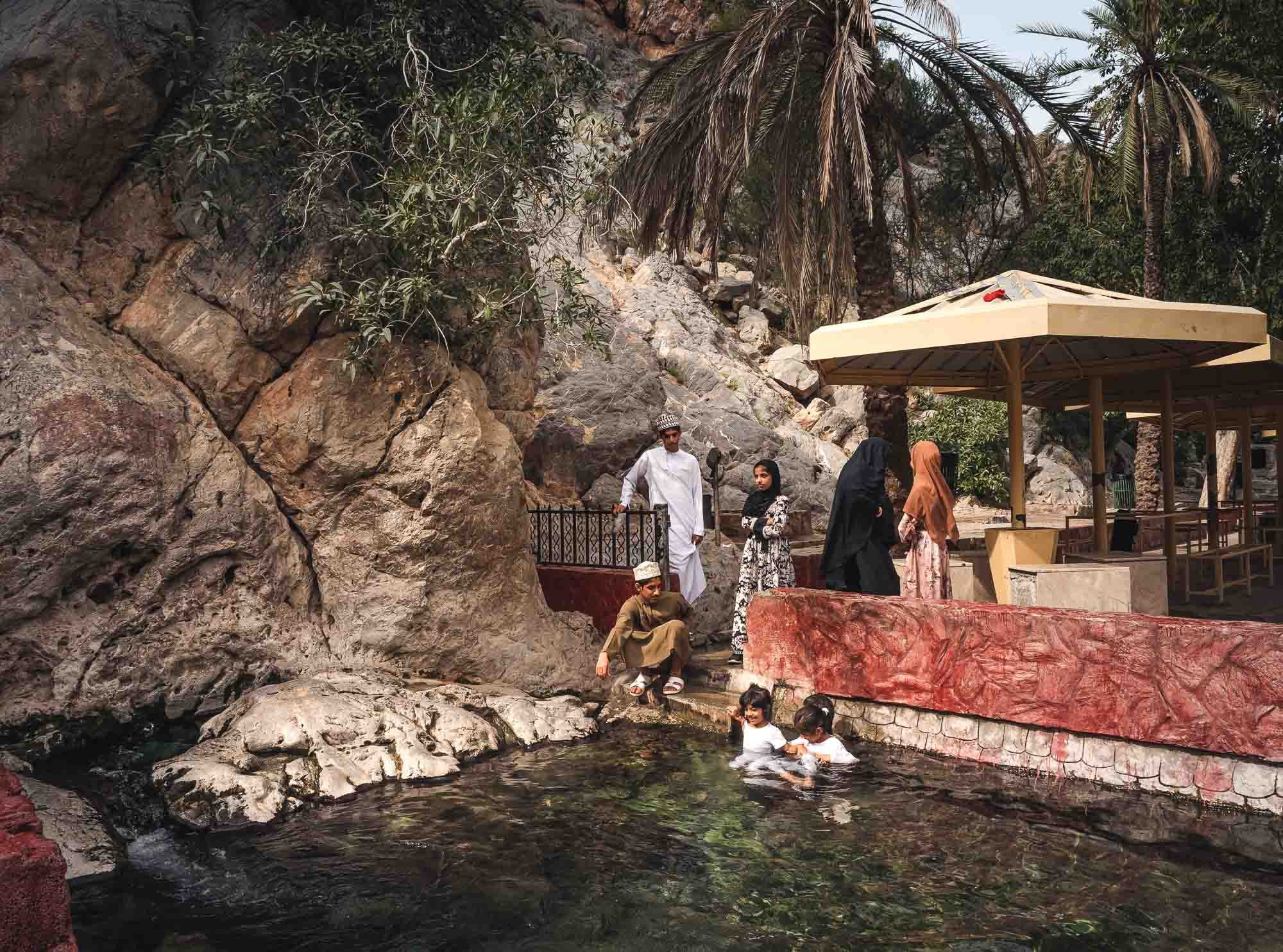
Athawarah Hot Spring
On our way back to Dubai we took a different route, passing by the hot spring of Nakhla. The hot water originating on the bottom left runs directly into the Wadi, keeping it surprisingly warm.
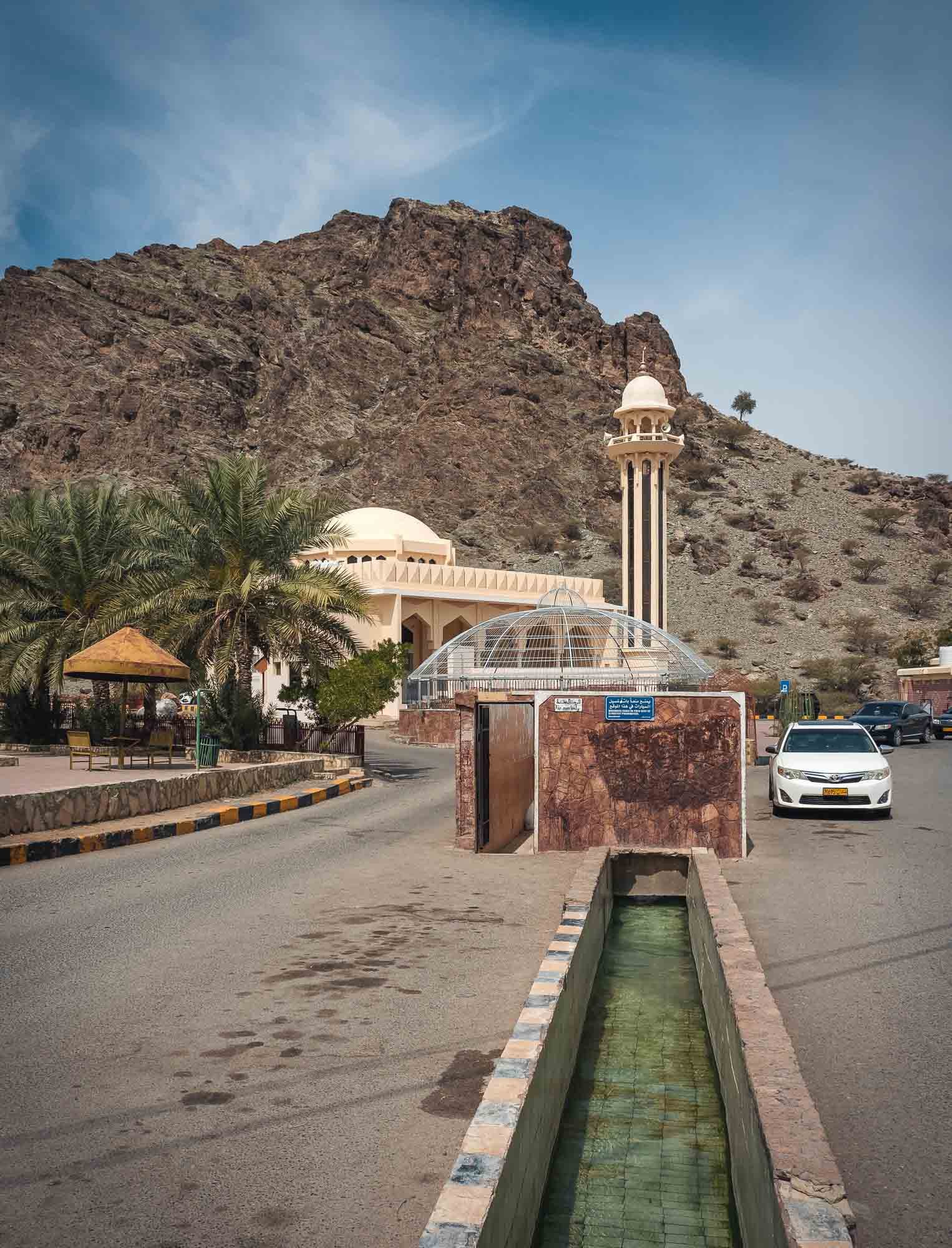
Al Kasfah Hot Spring
We also stopped in Rustaq at another spring - this one is said to have healing powers owing to the sulphur traces in the water. It originates under the caged dome in the background and then runs in a kind of channel through the streets, with stalls for people to take baths in the water visible in the foreground.
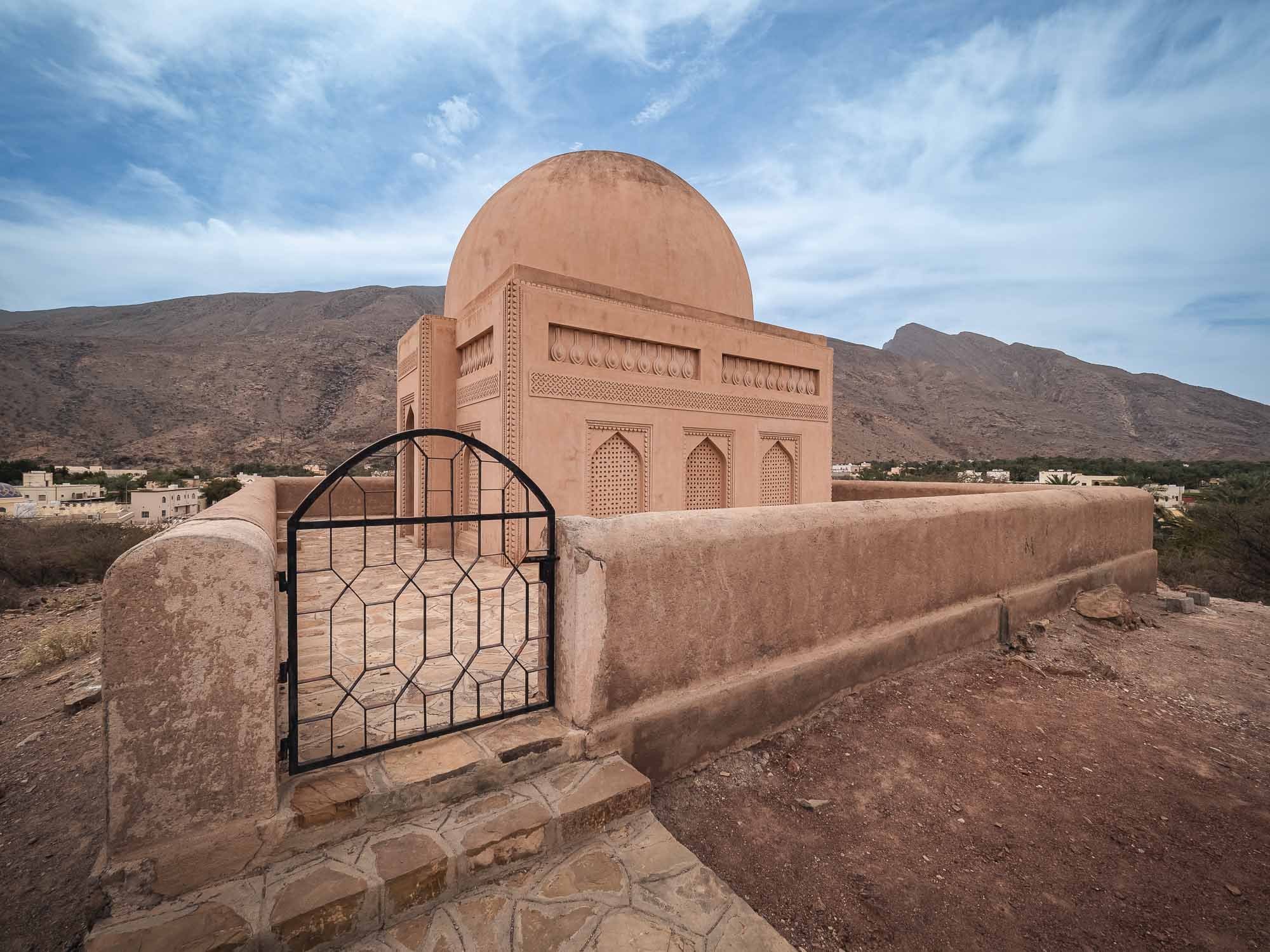
18th Century Tomb
The city is also home to this restored Ibadi tomb of the Imam Ahmad bin Said al-Busaidi, first ruler of Oman of the Al Said dynasty - took me quite a while to find this info, as there are very few signboards around and the Google Maps pin is in Arabic only.
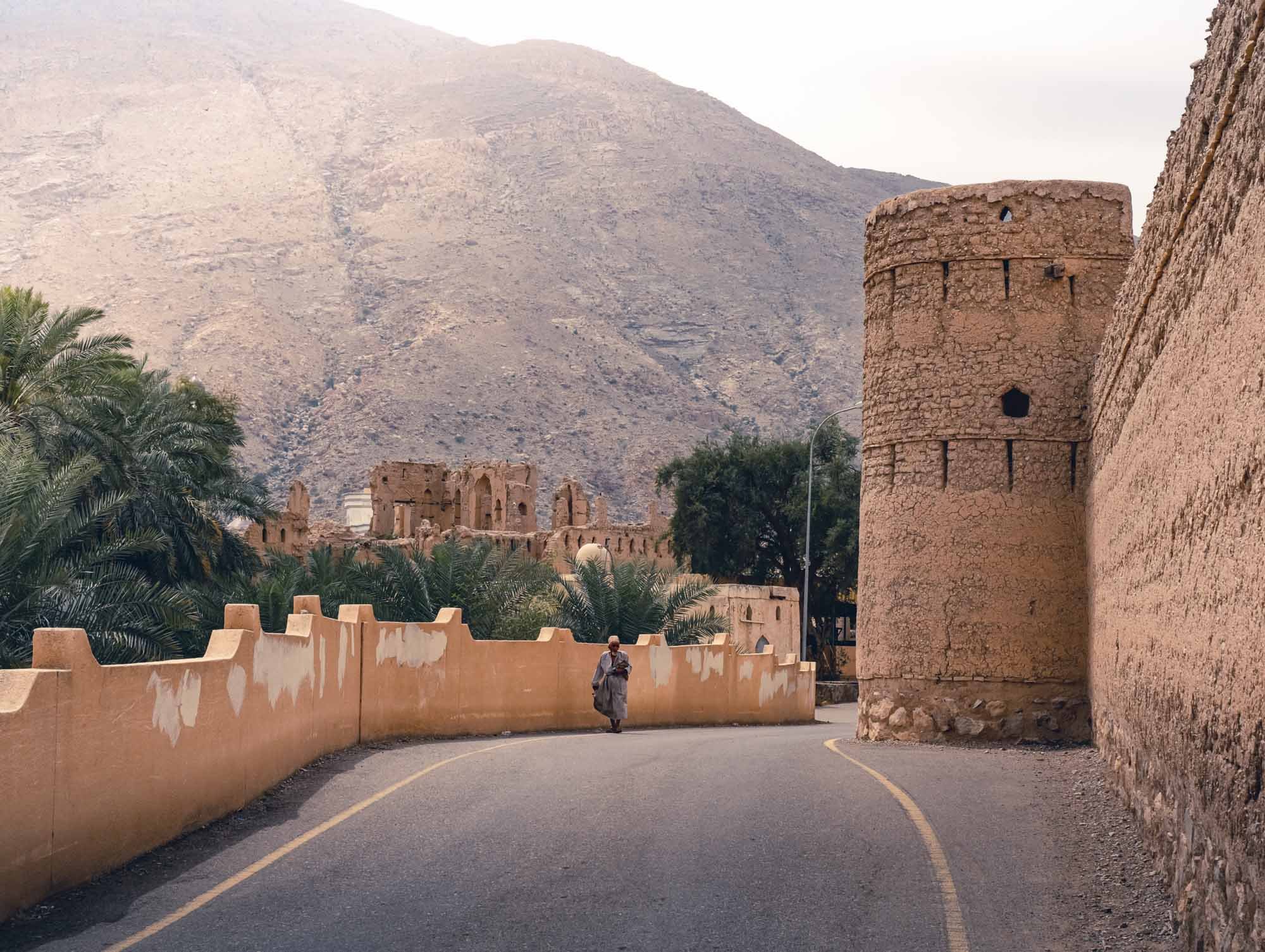
Rustaq Fort
The fort itself is currently closed for maintenance, but its imposing walls are nevertheless impressive.

Transport
We did encounter this fine gentleman who allowed us a quick glimpse into the fort, and then took us to the older parts of the city in this... vehicle, which he imported from China.

Qusra Museum
This was one of the places he showed us, a restored 300 year old family house, now converted and adorned with various artifacts.
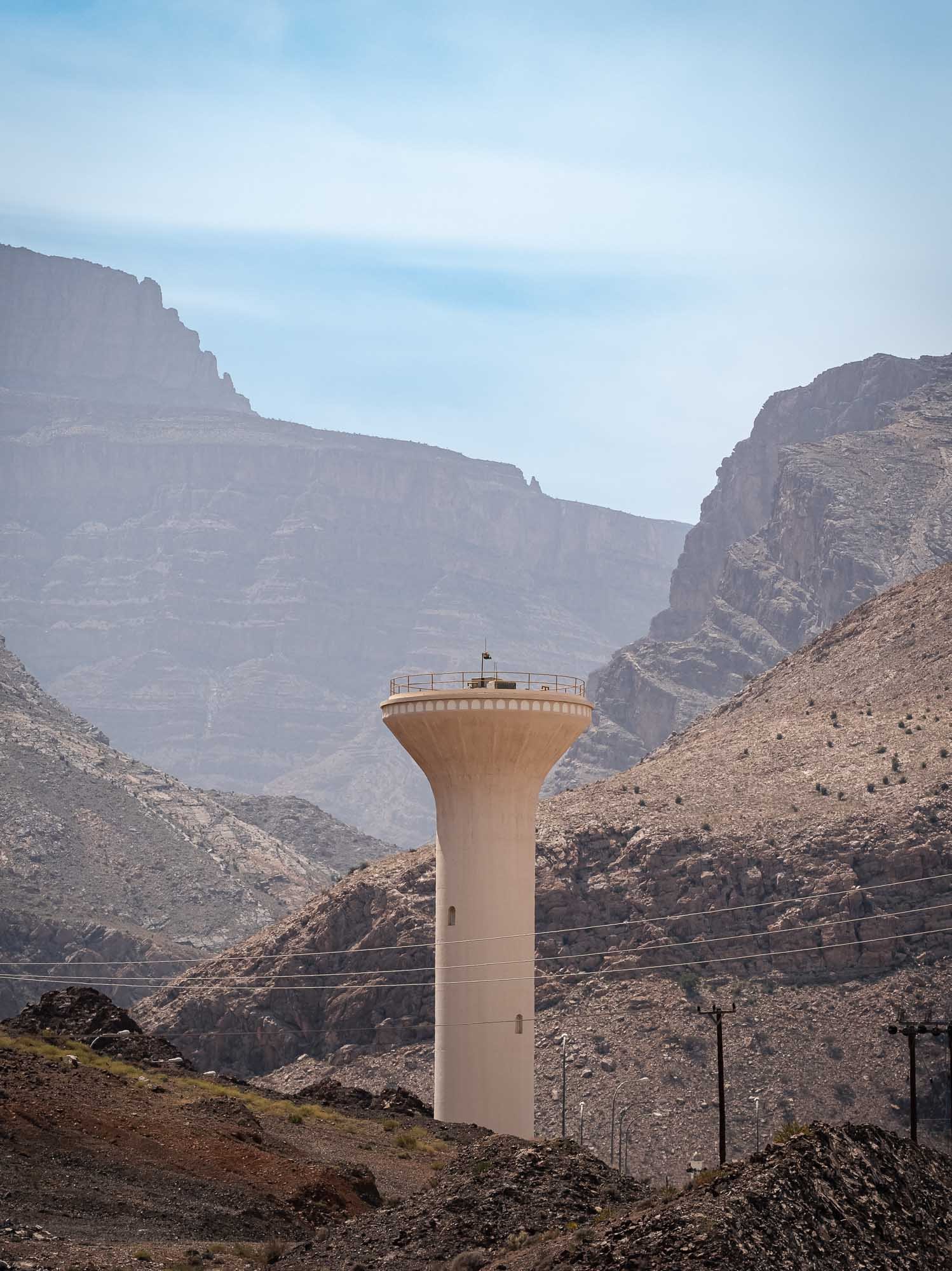
Water Towers
On our way to the final destination. You can find these towers dotted around the landscape, used for storage and to generate pressure.

Framed
Owing to questionable road conditions, we had to take quite a detour, but a few sights on the way made it enjoyable.

Al Ayn Beehive Tombs
When we finally made it, the scenery was worth it. I had initially failed to add this location to the route on the first day, but really didn't want to miss out after seeing the Beehive Tombs of Bat.
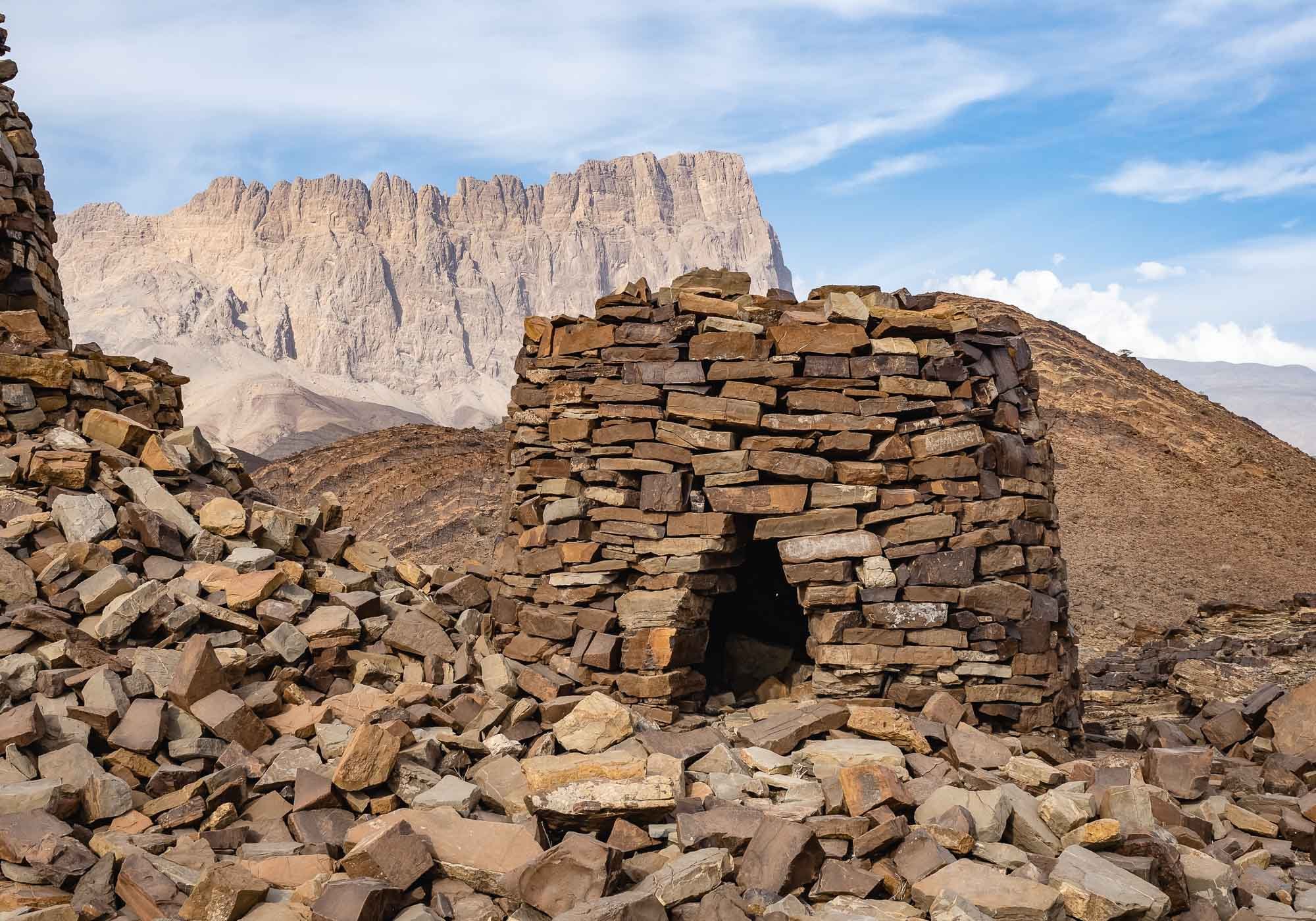
Awe-inspiring
Looking at these 5000 year old tombs with the imposing Jebel Misht in the background was truly amazing.
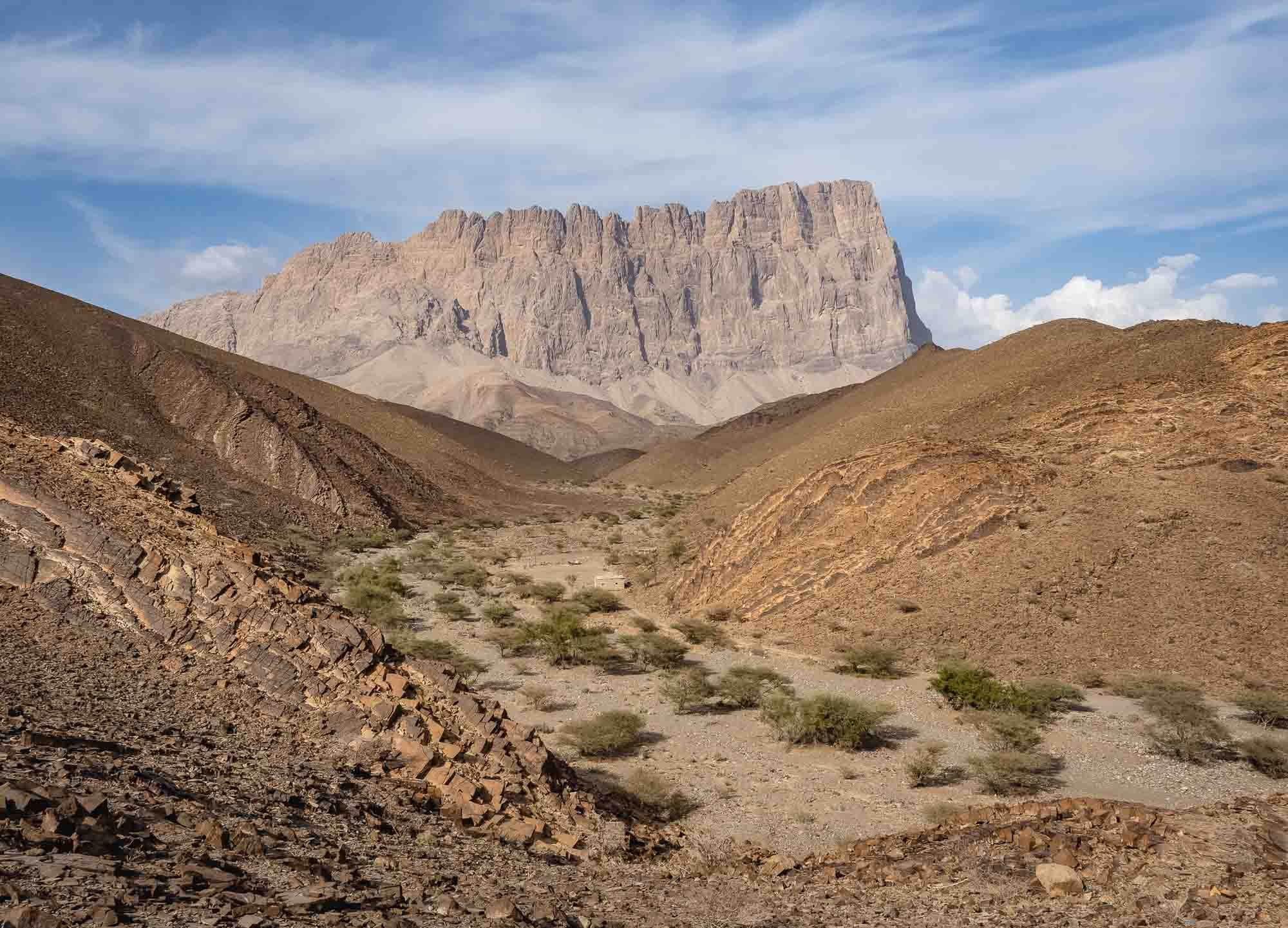
Jebel Misht
The striking landscape from the hill on which the tombs are located.
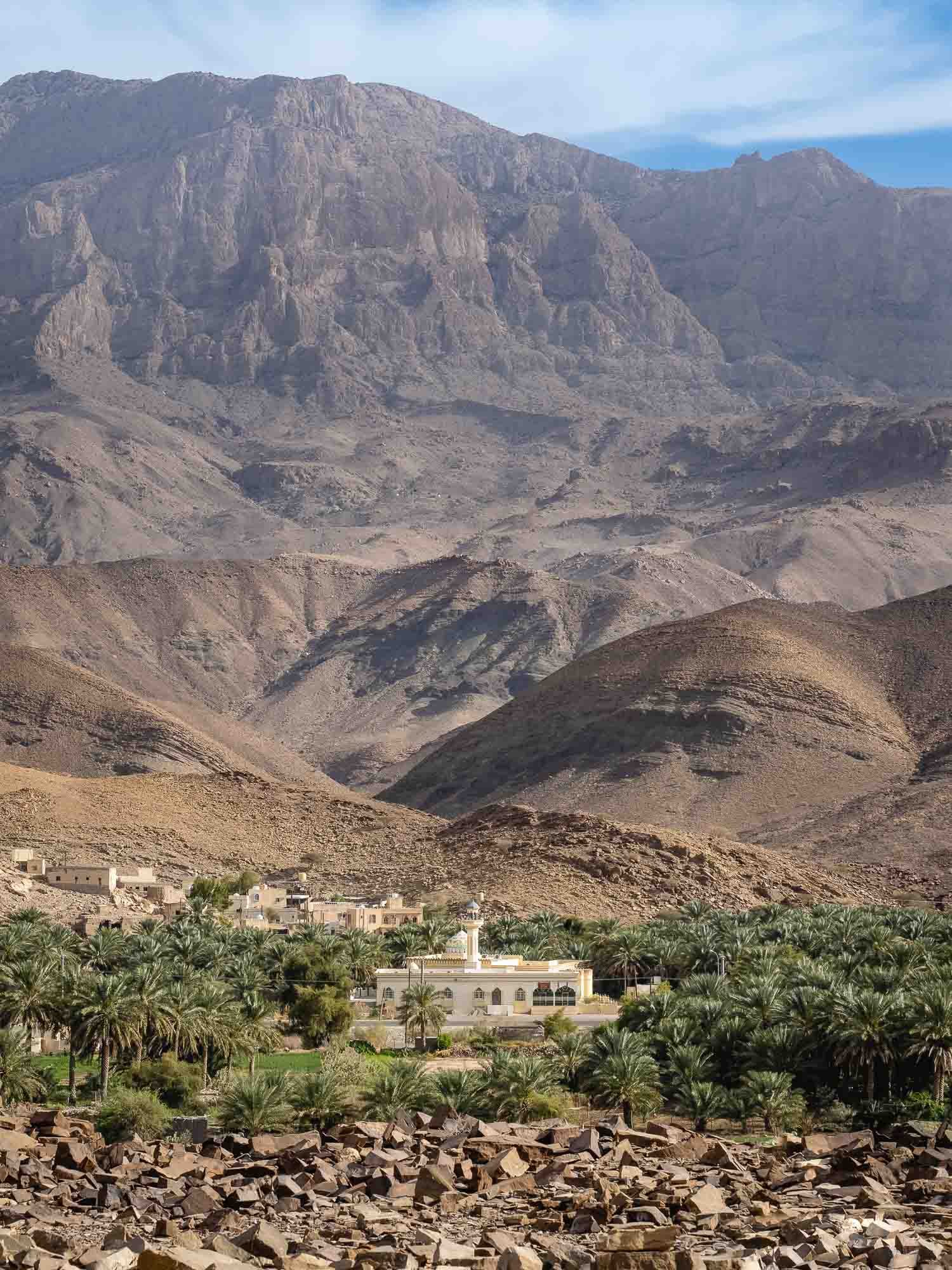
Hajar Views
Looking the other way into the date farm.
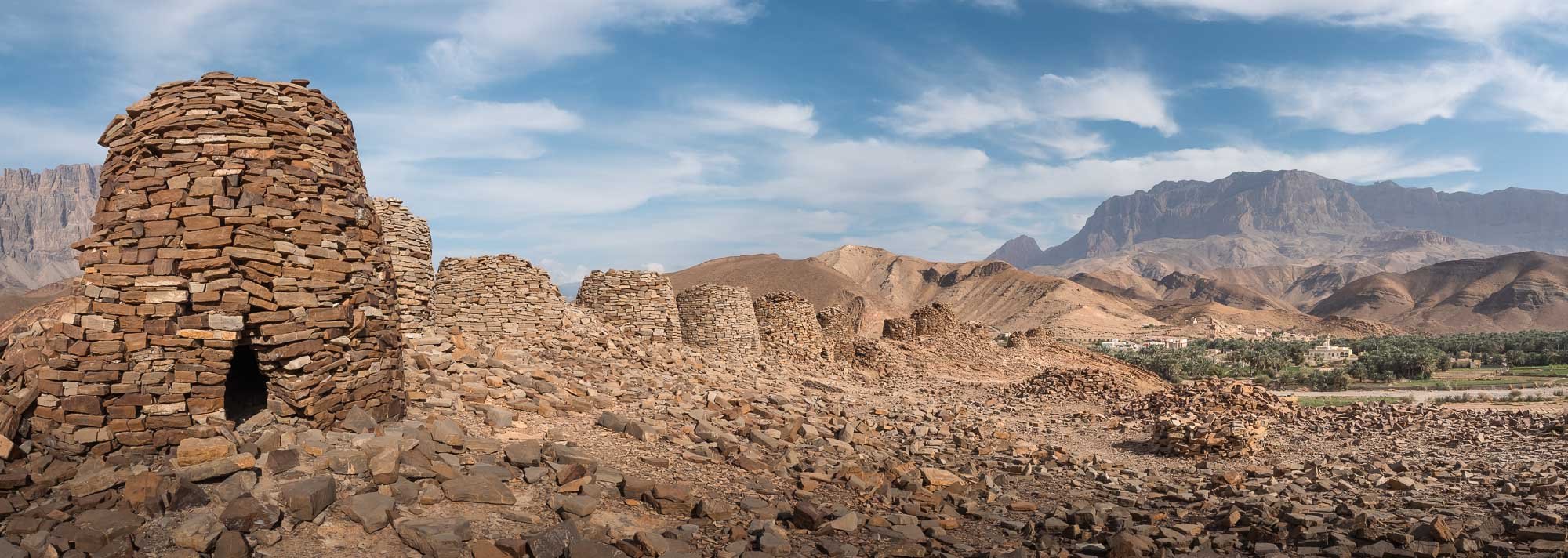
World History
According to Unesco, together with the neighbouring locations, this site forms the most complete collection of settlements and necropolises from the 3rd millennium B.C. in the world. It's almost a bit humbling (and a little concerning for their future) that you can just walk up to these fragile structures with no fences or rails of any kind.

Panoramic View
A full view of the site, which features a total of 19 tombs in almost a straight line. A definite highlight for me.

The End
Obligatory cat photo.
I really hope you enjoyed this small documentary series of my trip to Oman. I’ve known about the beauty, geology, and history of the Hajar mountains from exploring the UAE, but Oman really took this to another level. It is probably a good thing for these sites that the country hasn’t had the same level of attention as some other more famous destinations in the Middle East, but on the other hand Oman and its people really deserve to be recognized alongside them. Will definitely come back.
Six Senses Zighy Bay - A Musandam Refuge
The Six Senses Zighy Bay on the Musandam Peninsula, named after the small fishing town right next to it, just off the UAE boarder at Dibba, has always been on my list of must see places. This April I was lucky enough to spend a few days at the resort.

The Six Senses Zighy Bay on the Musandam Peninsula, named after the small fishing town right next to it, just off the UAE boarder at Dibba, has always been on my list of must see places. This April I was lucky enough to spend a few days at the resort.
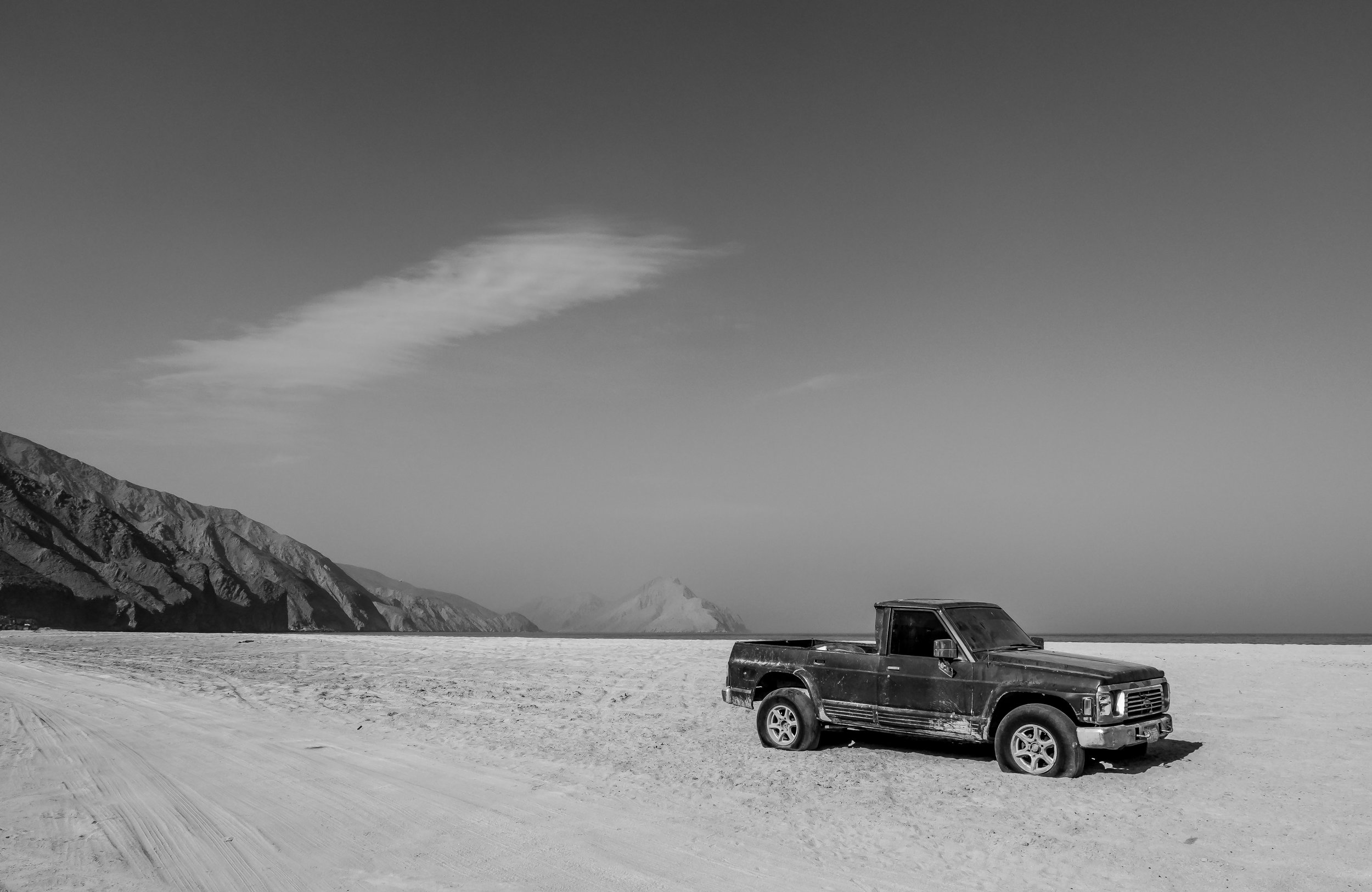
Stuck
Some parts of Zighy Bay and Musandam feel stuck in the past, sometimes willingly, sometimes less so.
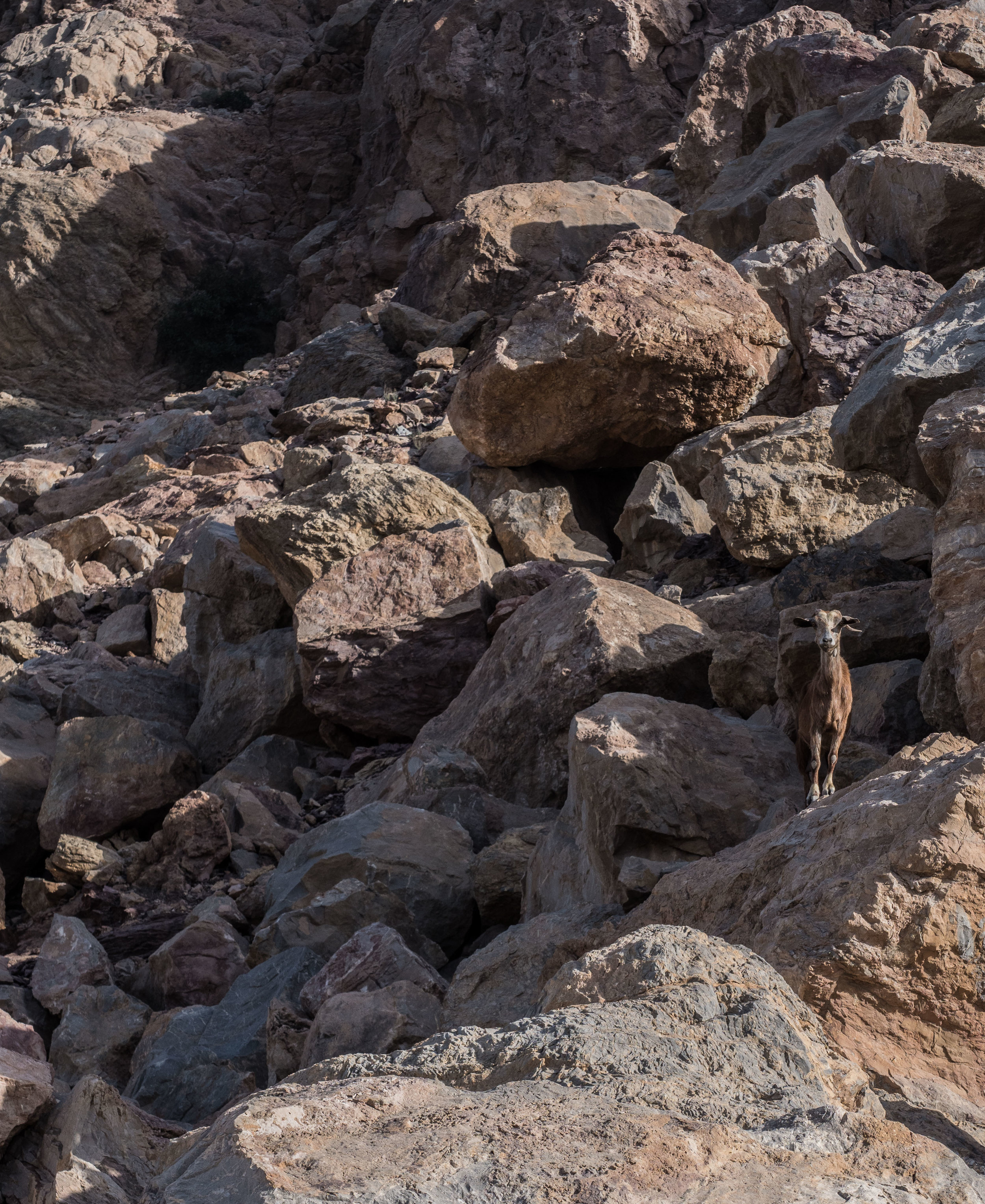
The True Rulers
Rumour has it there are more goats than humans in Musandam. Can neither confirm nor deny that.

Bay Views
The north easterly view of the Zighy Bay

Graveyard
The same mountain contains an old village, the remnants of its graveyard are still visible.

Hiking
I joined a group of people on a hike up the mountain - rock climbing is the more appropriate description.
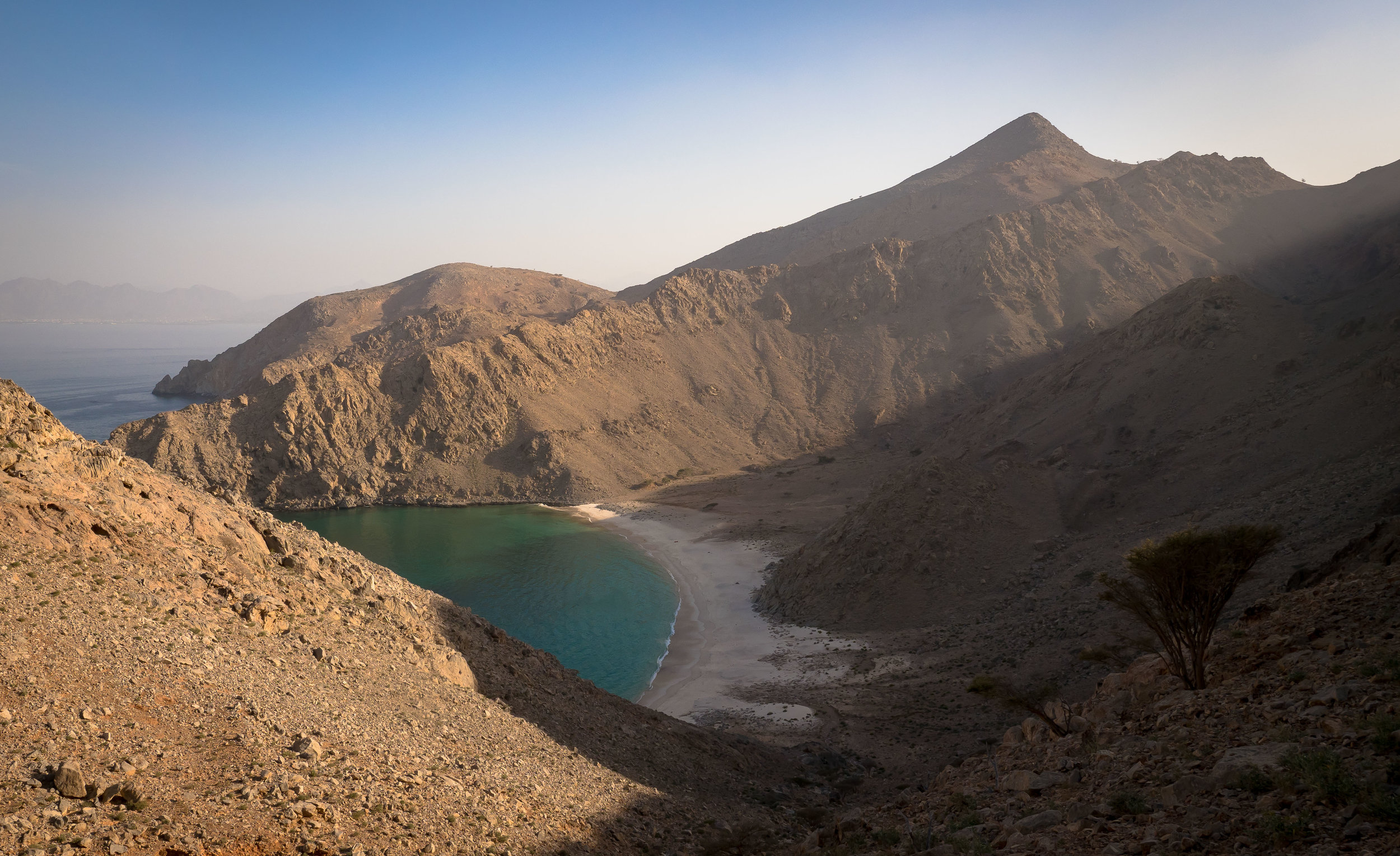
Hidden Bay
The southern view revealed this beautiful empty beach, appearantly owned by a local private person.
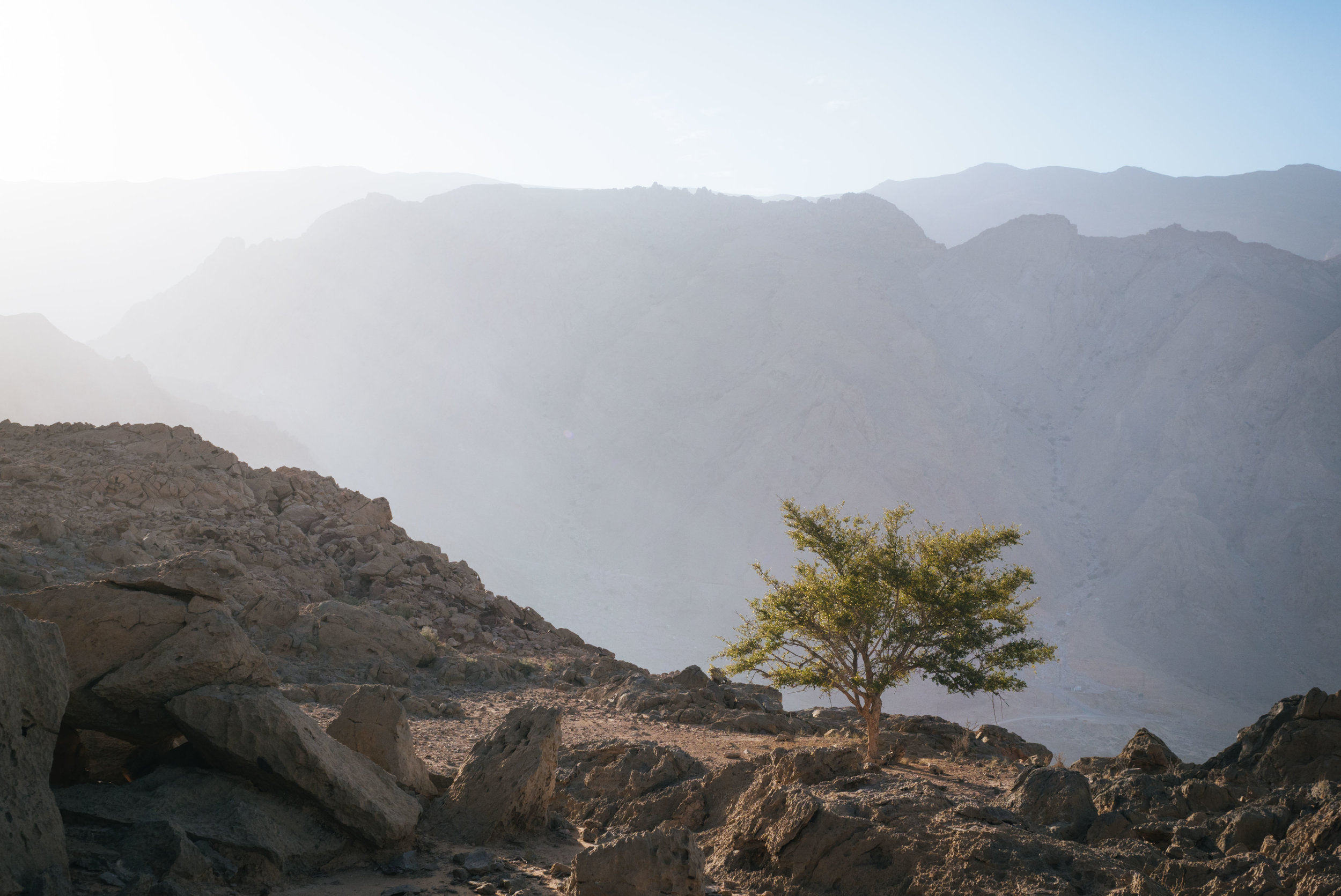
Lonely
It's amazing how some of the trees can grow on this soil, with almost no water.
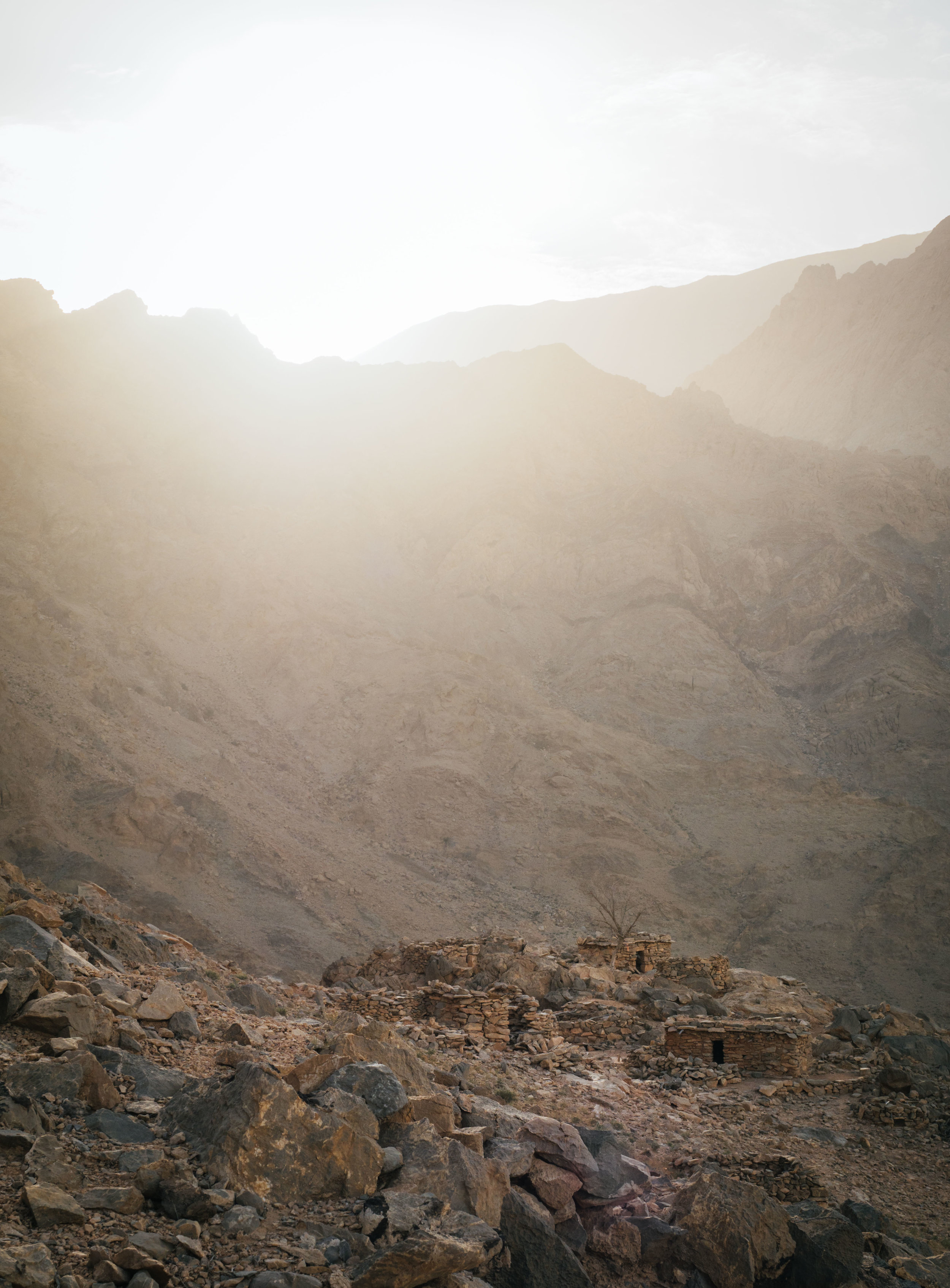
Stone Villages
The ruins of these kind of houses are common in the Hajar mountains - some are still occupied, usually in a slightly more modern form though.

Ruins
The scenery is amazing around every corner. In the past, many of the locals used to live in the mountains on the bay to be able to spot pirates from far away.
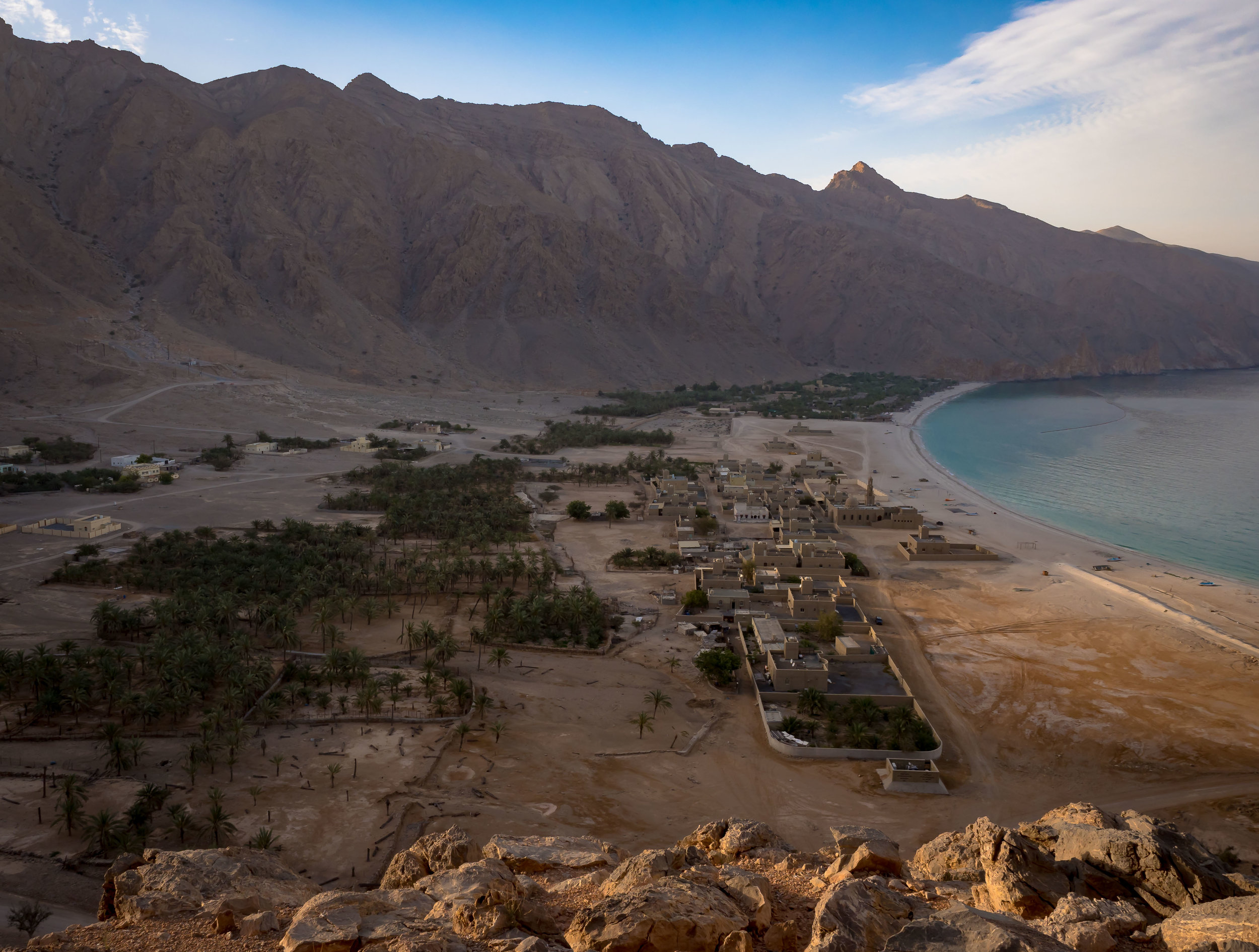
Zighy Bay
A view of the bay with the Six Senses in the background, and the houses that were built for the local fishermen alongside the resort, replacing some of the previous stone houses.
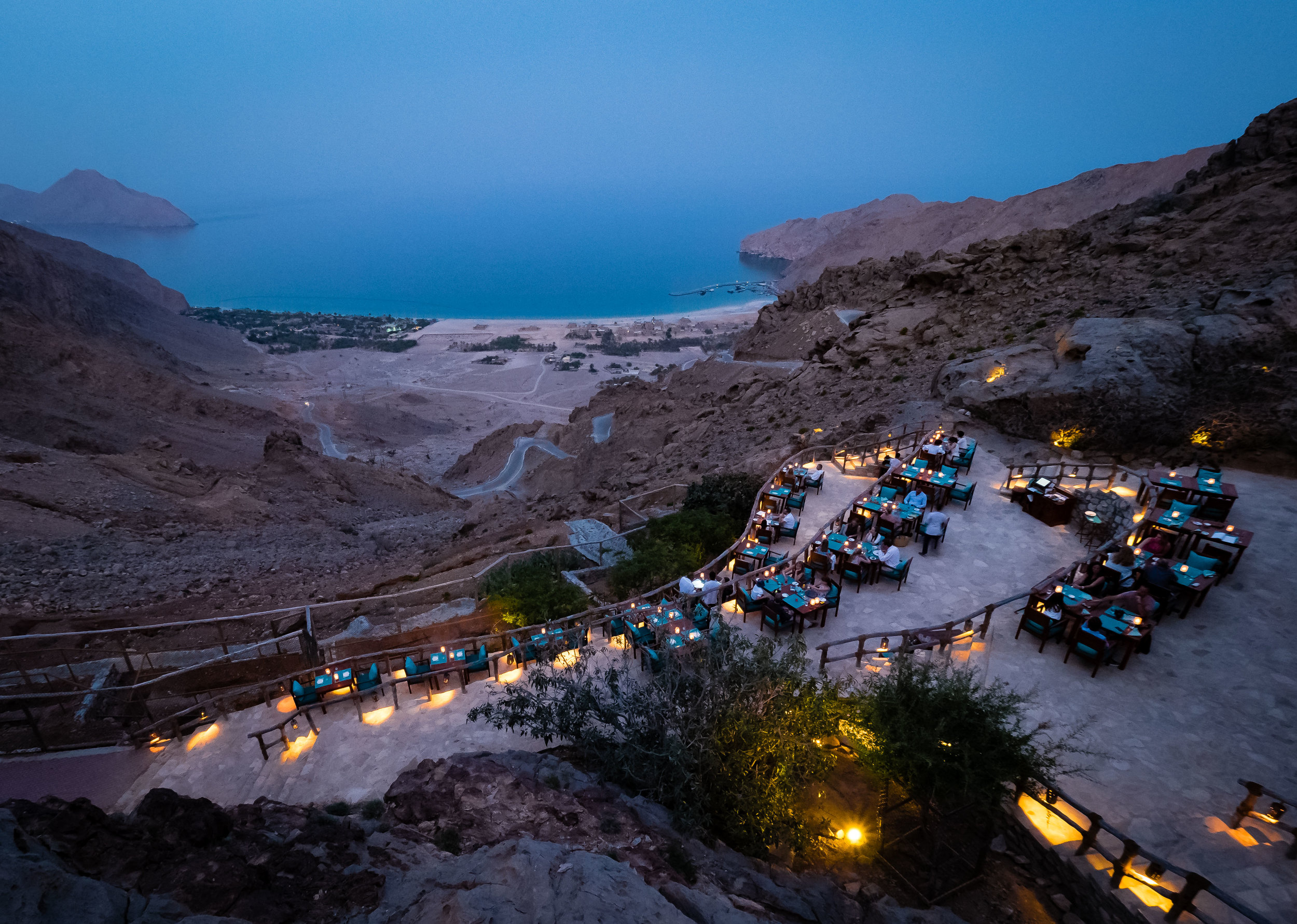
Dining On The Edge
One of the restaurants of the hotel is located right on the cliff next to the road crossing the mountain.
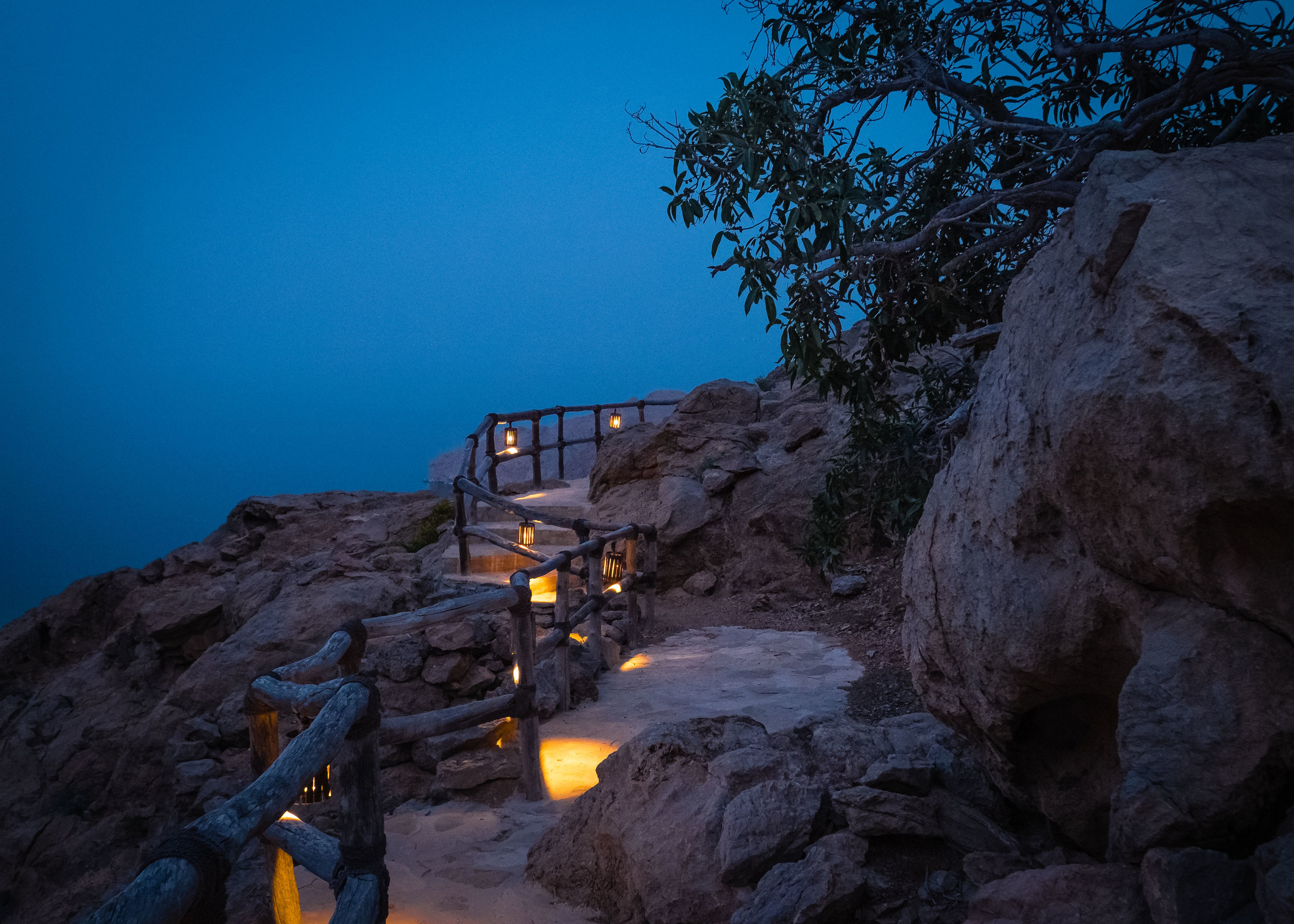
Pathways
This path runs to the top of the mountain, for a private dining spot and a great view.

Into the Mountains
We took a drive into the Hajar mountains, with their narrow cliffs and gravel roads.
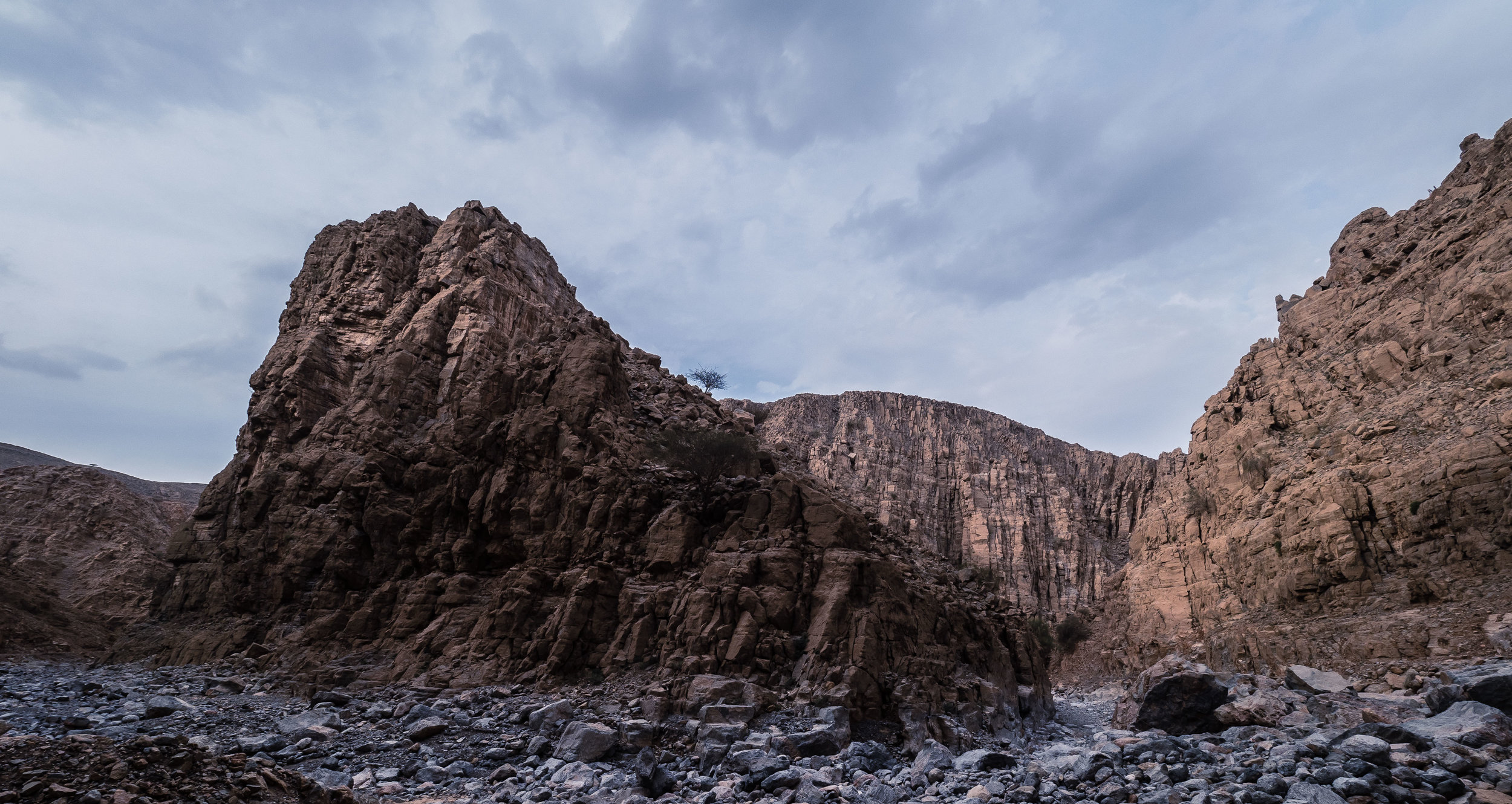
Riverbed
The colour of the stones reveals the riverbed, filled with water when it rains - which isn't often.

Upwards
The path leading upwards was built by an old local, who still lives on top of the mountains, carrying water and food with a donkey. The small hut is a storage area he built.
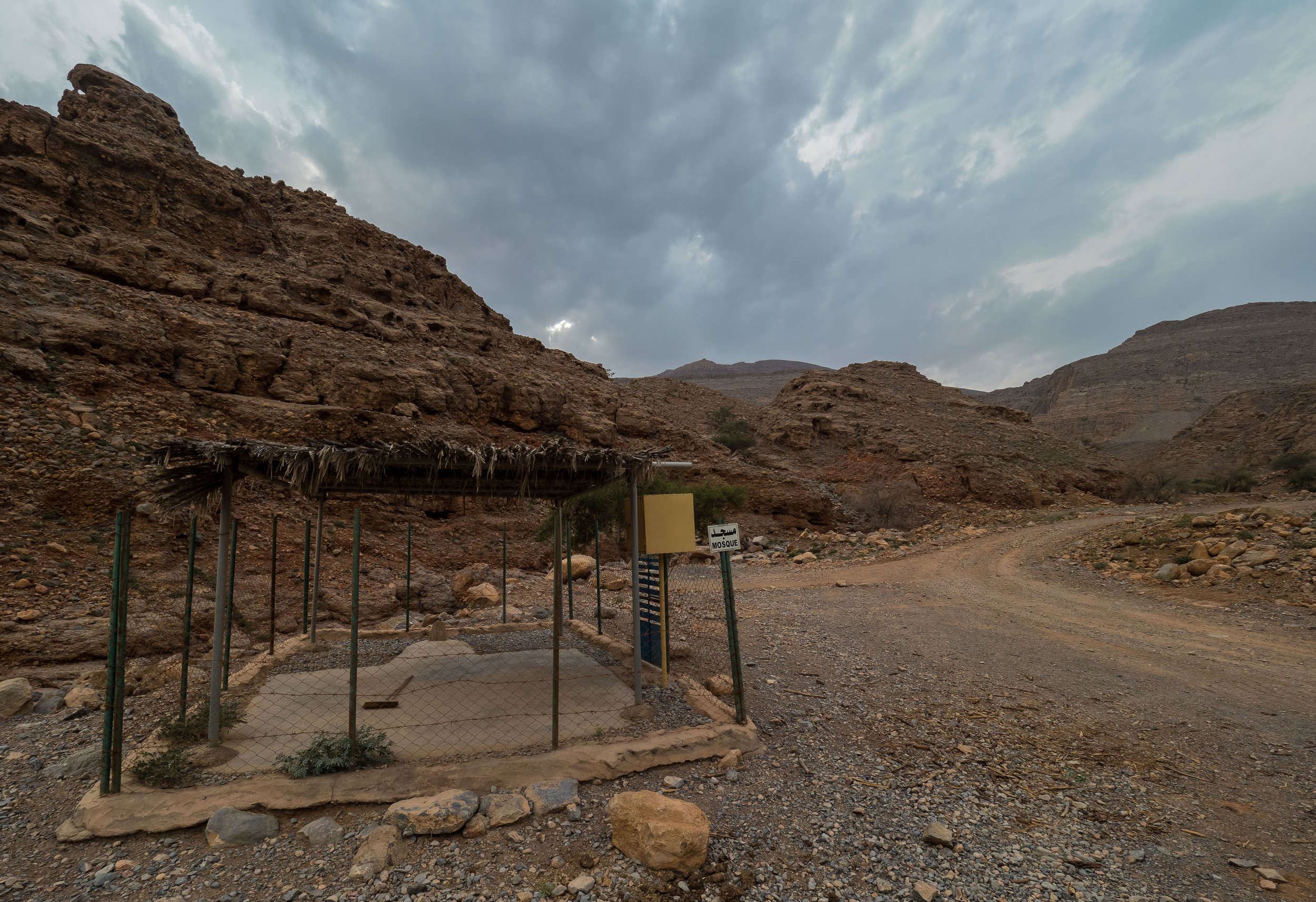
Mosque
And the award for the most minimalistic mosque goes to...

Houses & Goats
The few signs of life in the mountains. We did spot two small foxes as well.
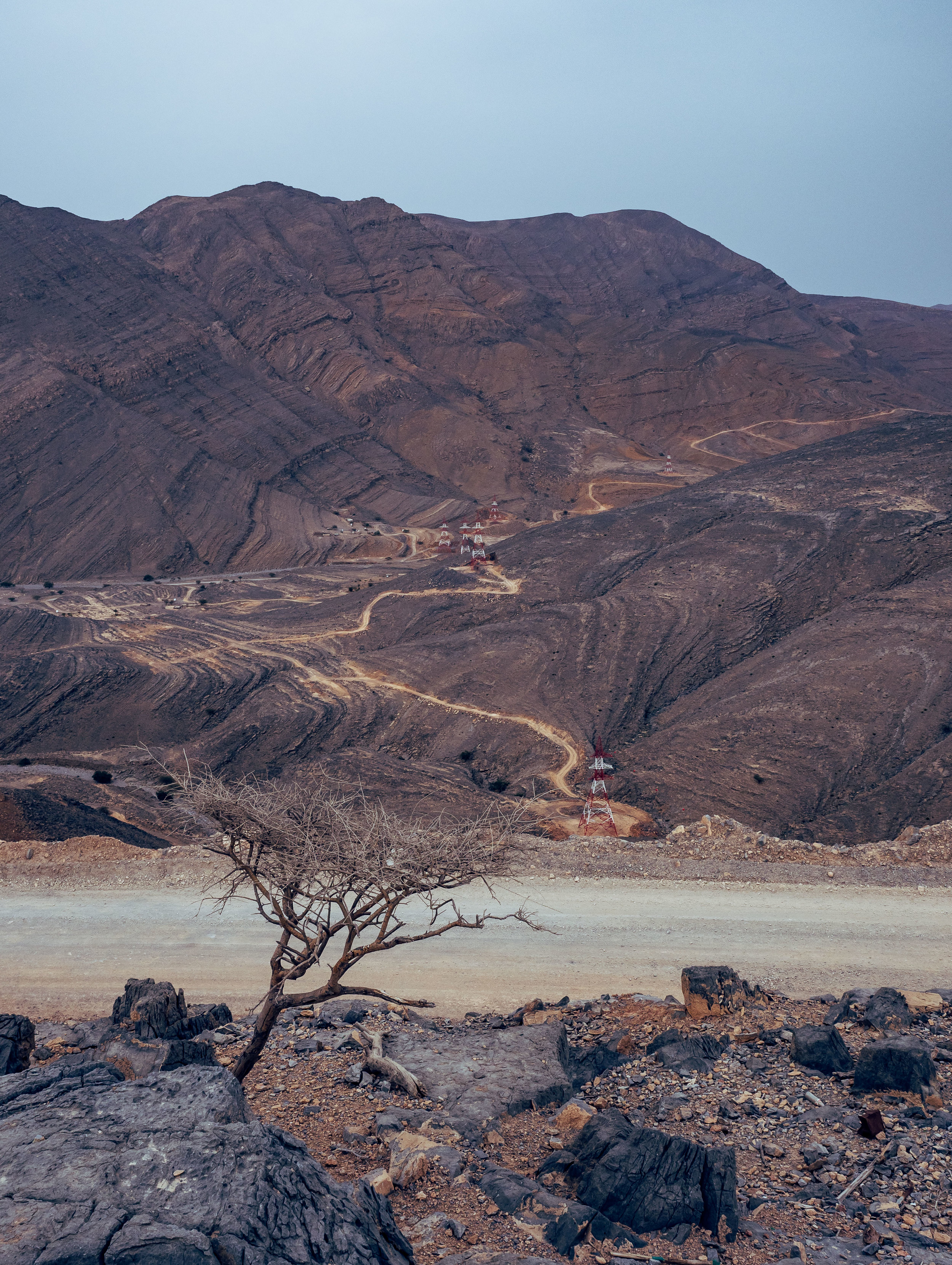
Power
A new power line is being built in the north from Khasab to Dibba, to serve most of the Musandam peninsula.
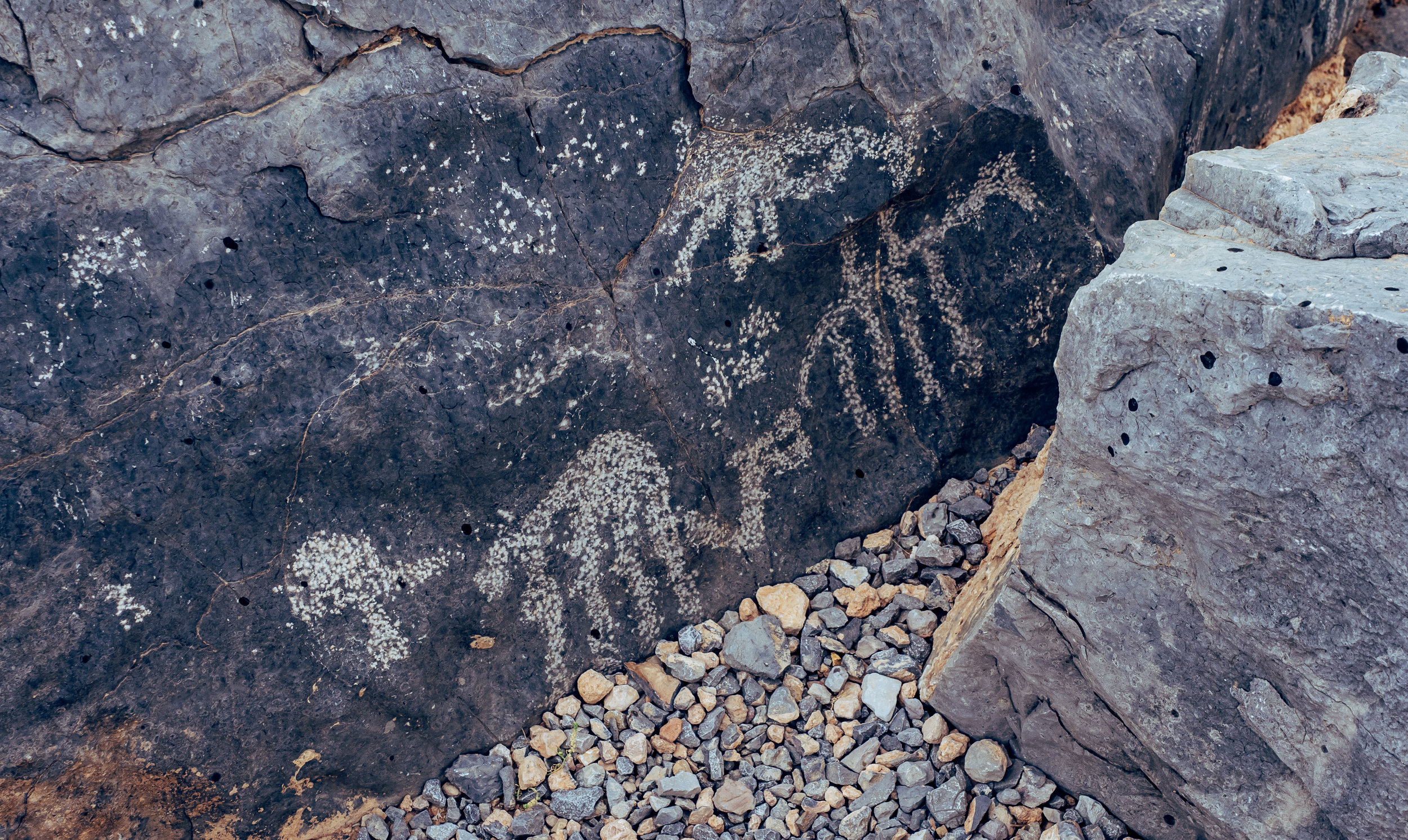
Signs Of Early Civilisation
I am not convinced whether these are genuine - we've been told they're a few hundred years old.
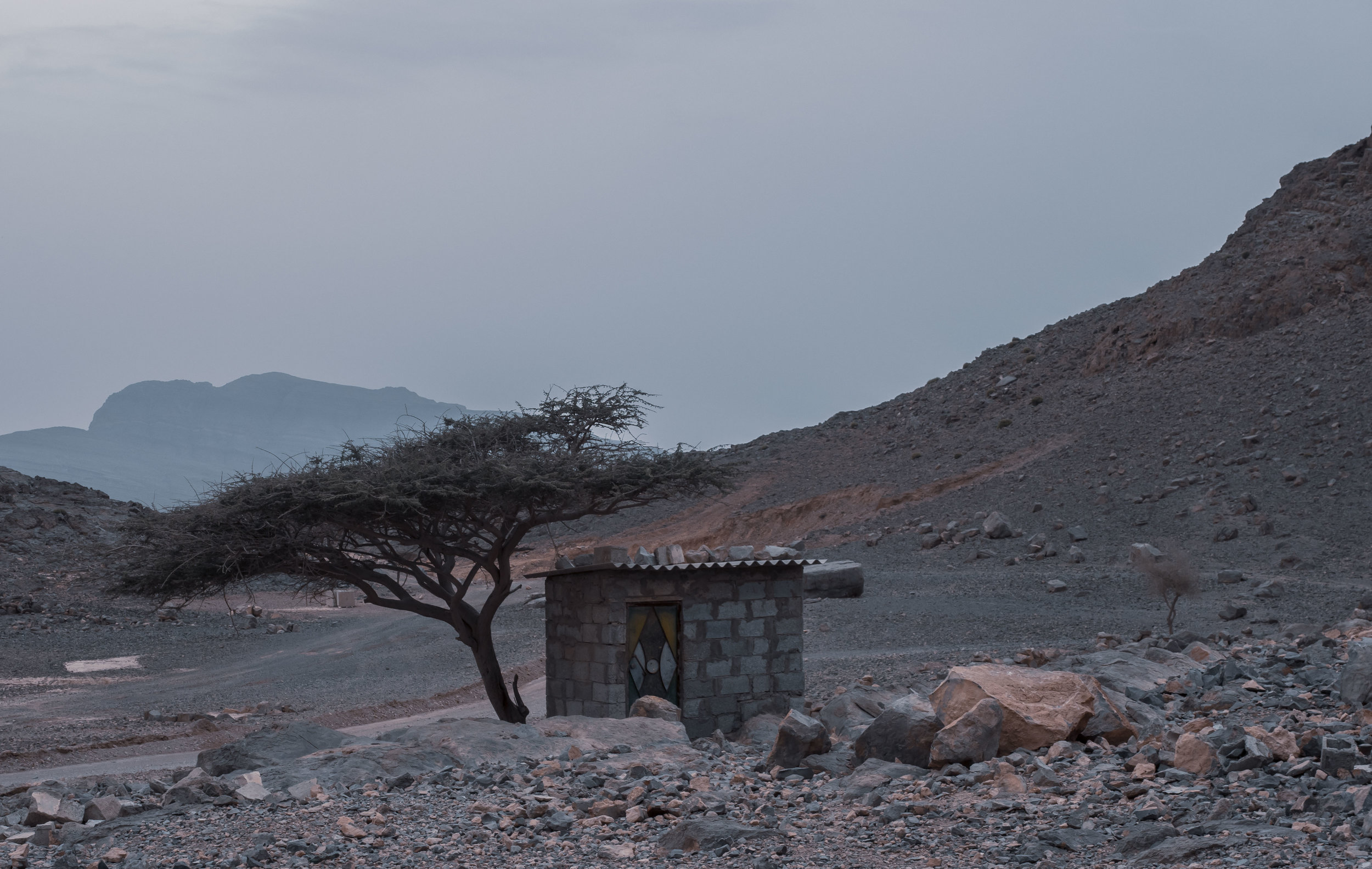
Barren Land
One of he houses still in use in a small village on top of this mountain - most likely for storage.

Signs
Fierce wars were fought decades ago in this area. The remnants are still visible.

Flora & Fauna
Signs of life are sparse.
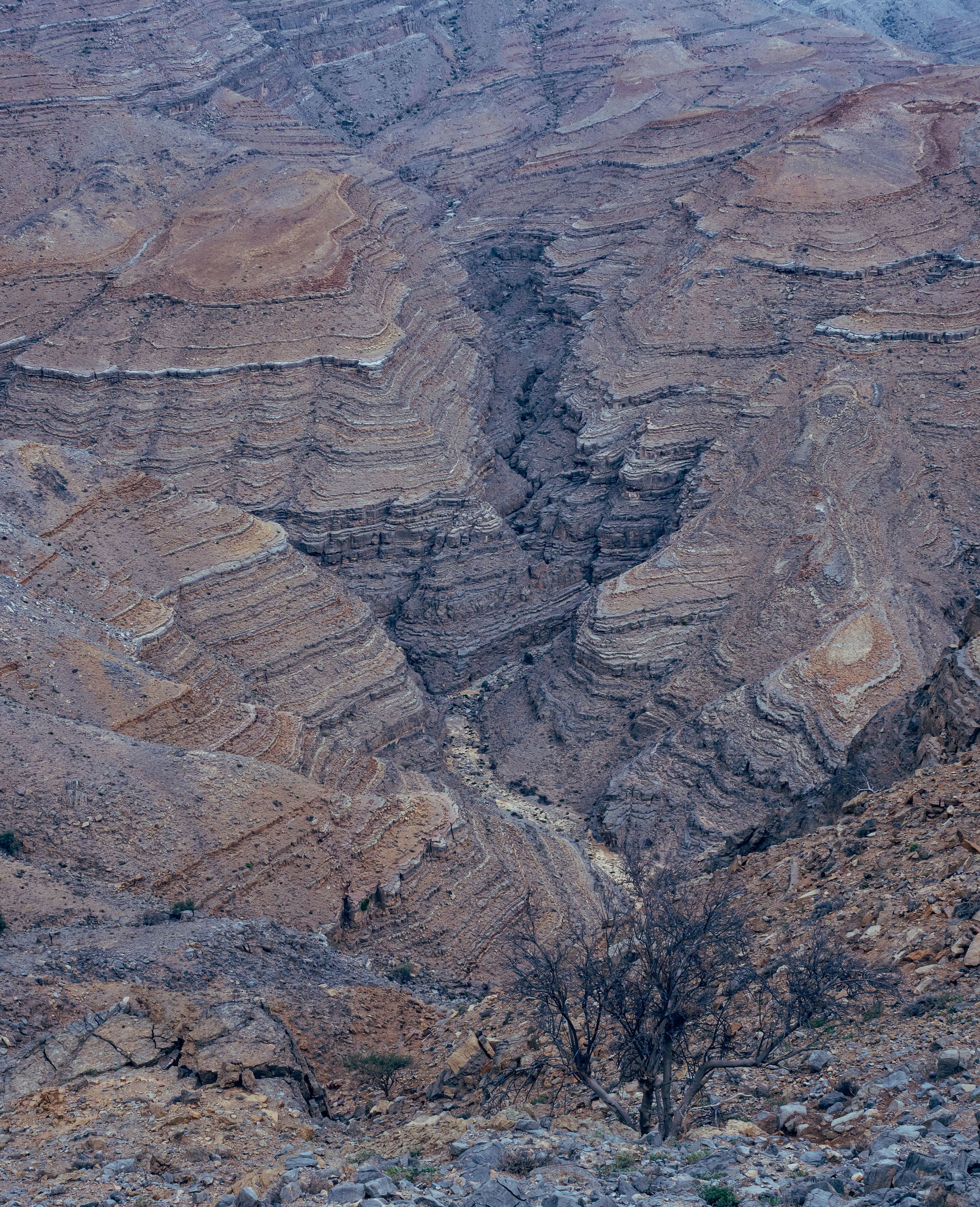
Scenery
The view and rock shapes and patterns are amazing, this is up at about 1200m, half way to Khasab from Zighy Bay. The photo doesn't do the size of this canyon justice.
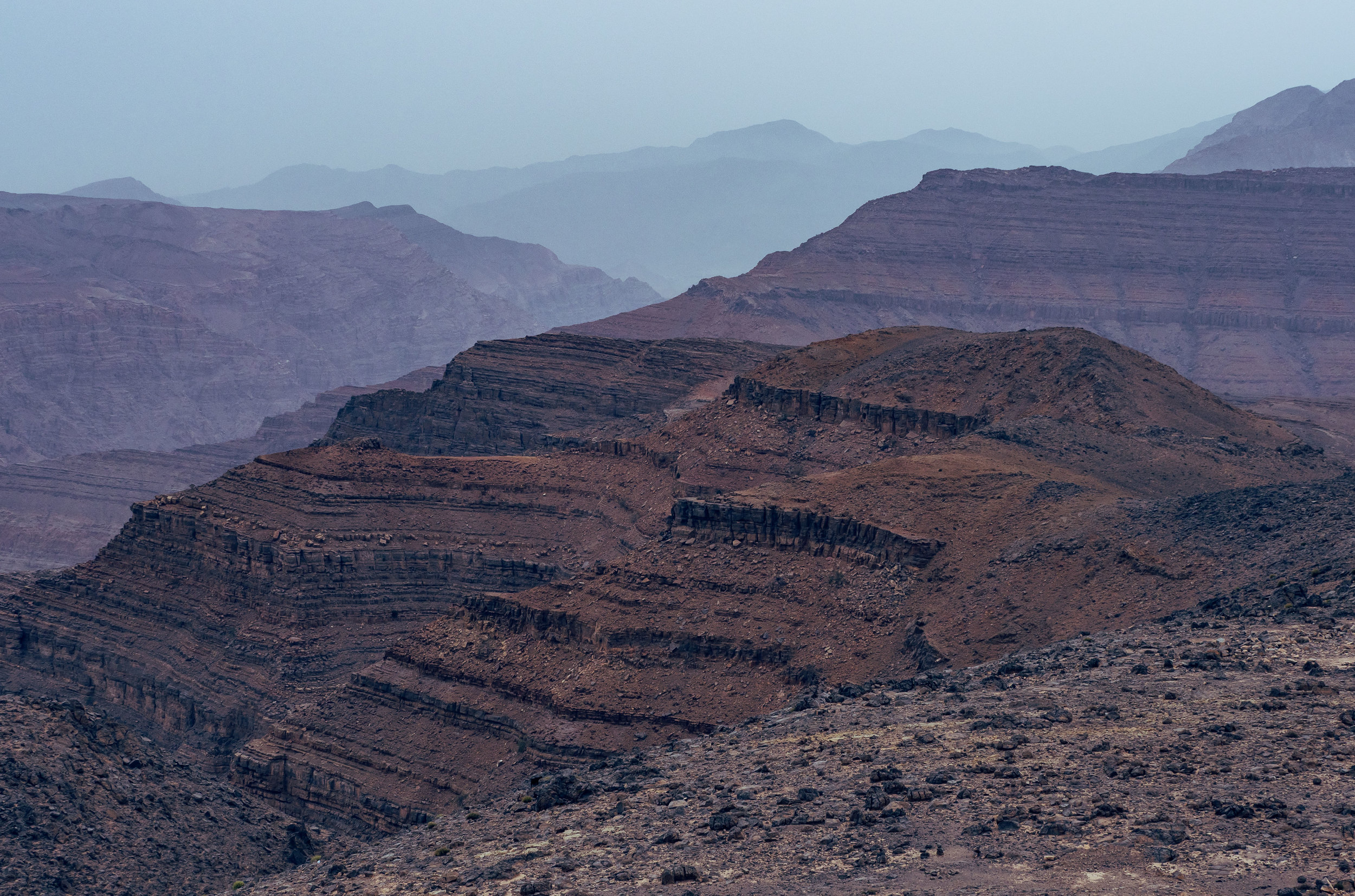
Mountain Terraces
Goat territory!

Soaking Up The Views...
.. and trying to find answers.
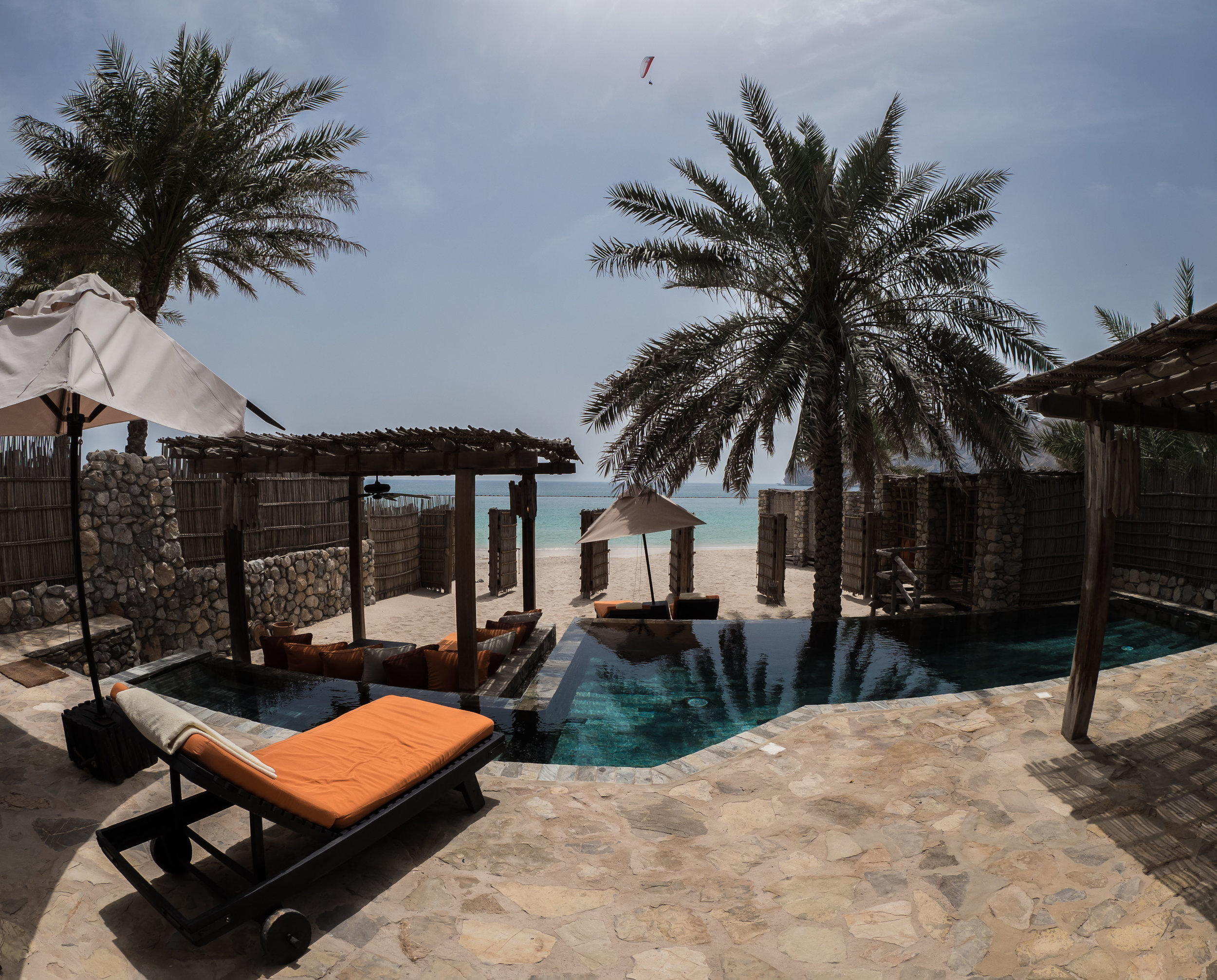
Not A Bad Spot
The beautiful Zighy Bay beach front villas.
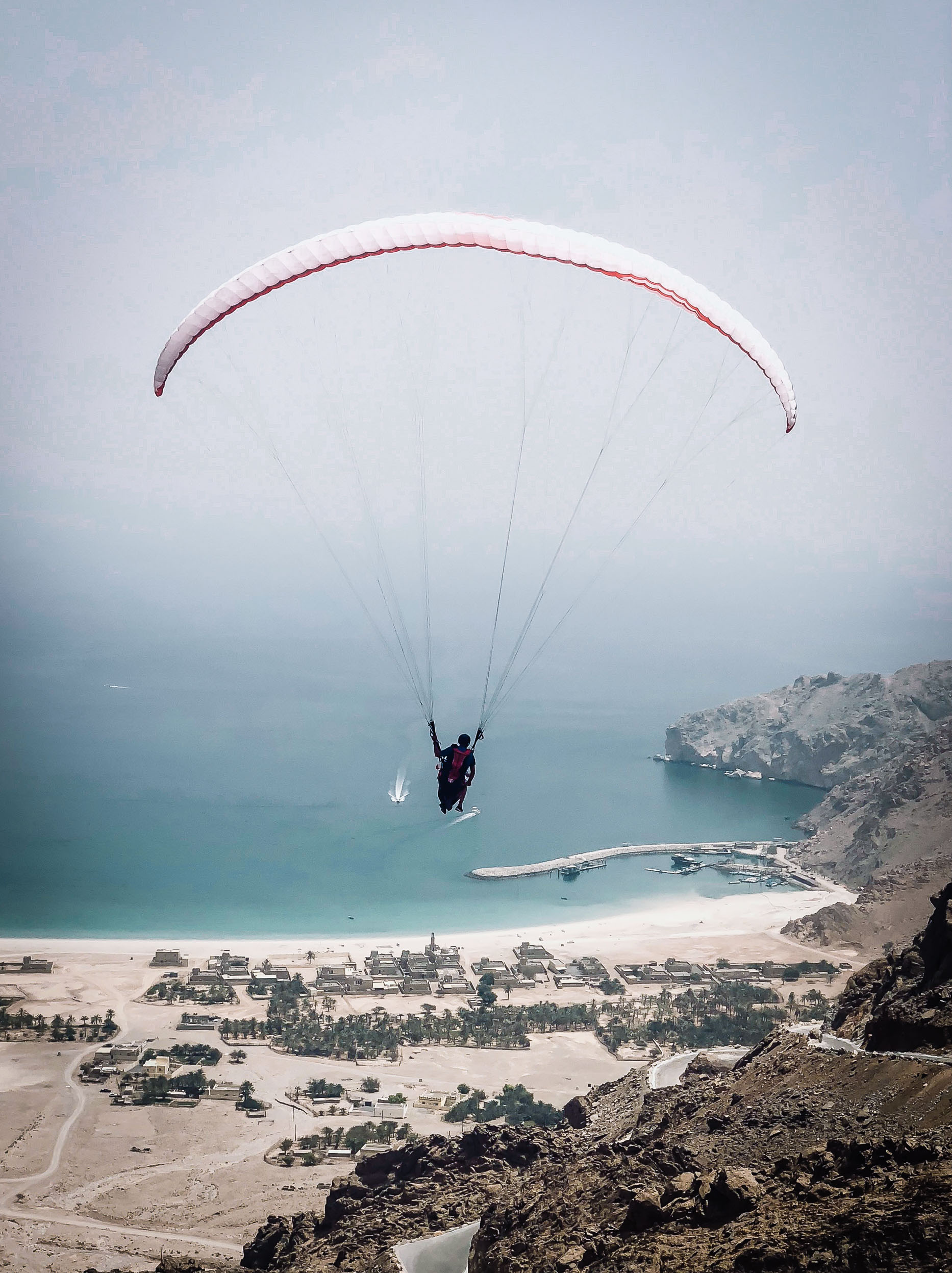
Paragliding
One of the many activities at Zighy Bay - aside from arriving by boat or over the mountain, you can also paraglide to your check in. I was already checked in, but didn't want to miss the opportunity.

Flying
It was my first time, and it was defintely a great experience - unexpectedly we caught a lot of thermal winds, which meant at some point we were higher than when we took off.

Goat Parade
Not sure where they were heading, but they did so in an orderly fashion.
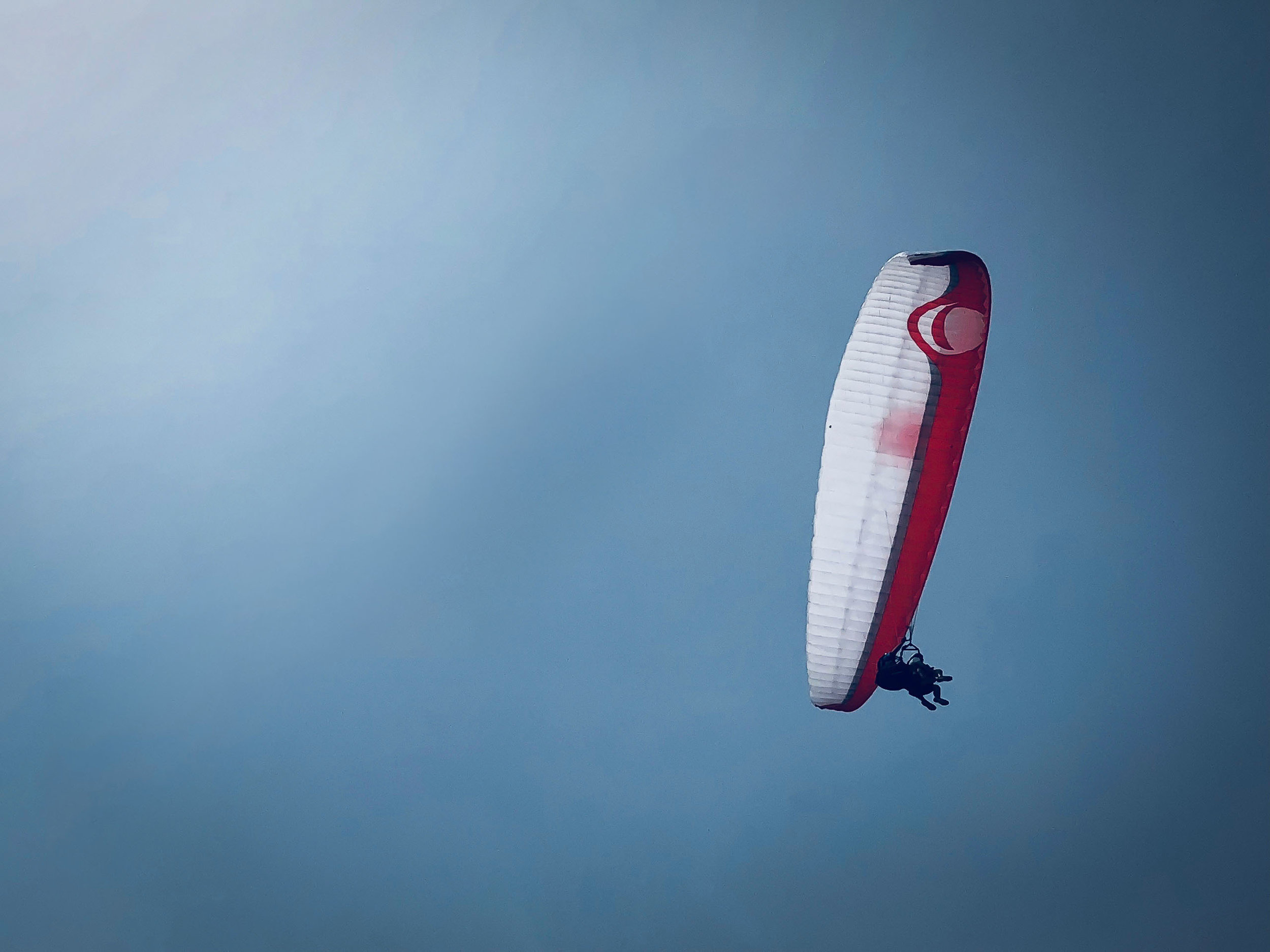
In The Air
While the flight was calm, my pilot decided the descent should be a bit more action packed, with fast circles and a few moments of weightlessness.
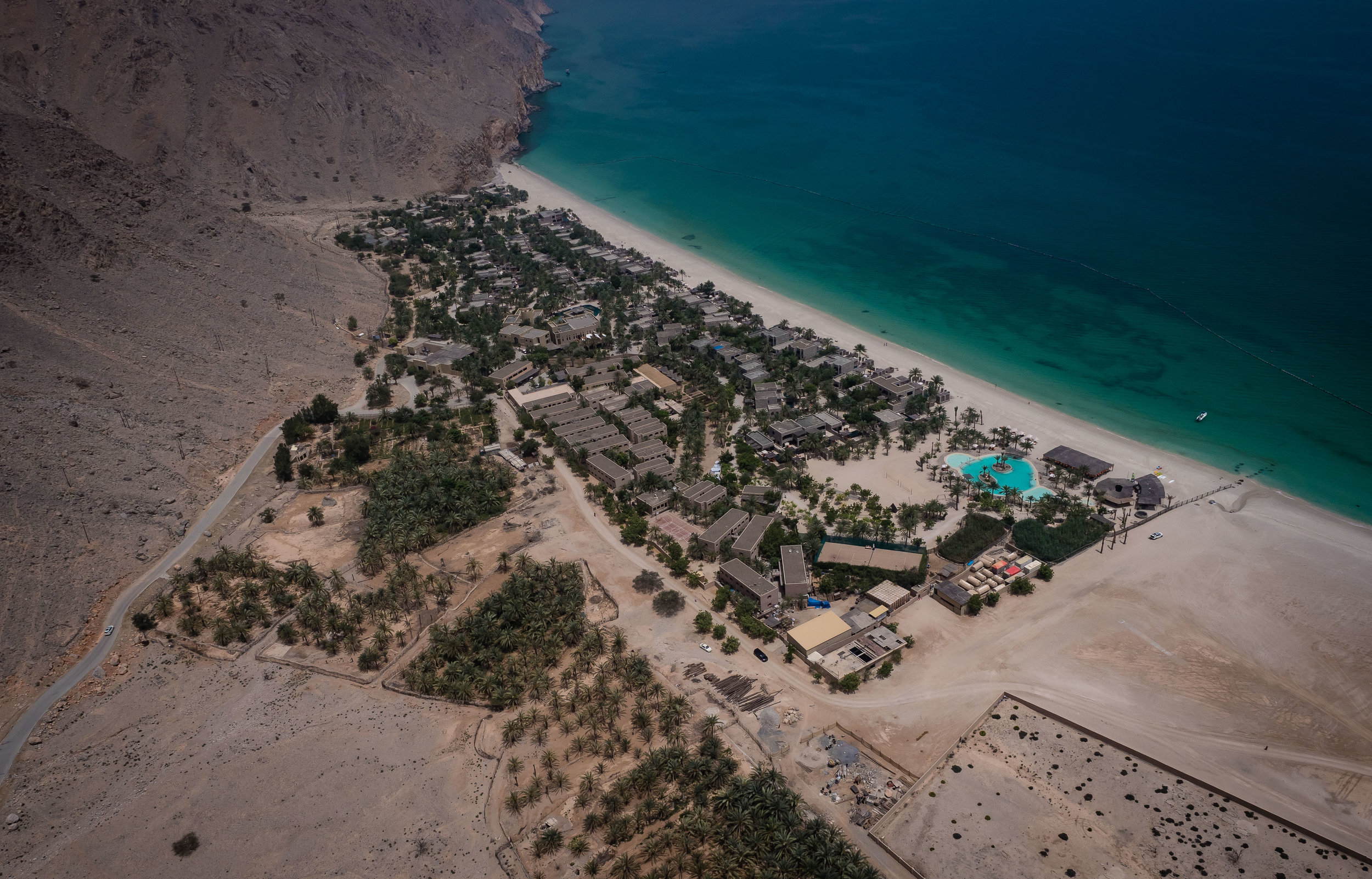
Six Senses Zighy Bay
A view of the resort taken from the air. It's a stunning location.

Another Option
If you don't like paragliding, this motorised option also exists.
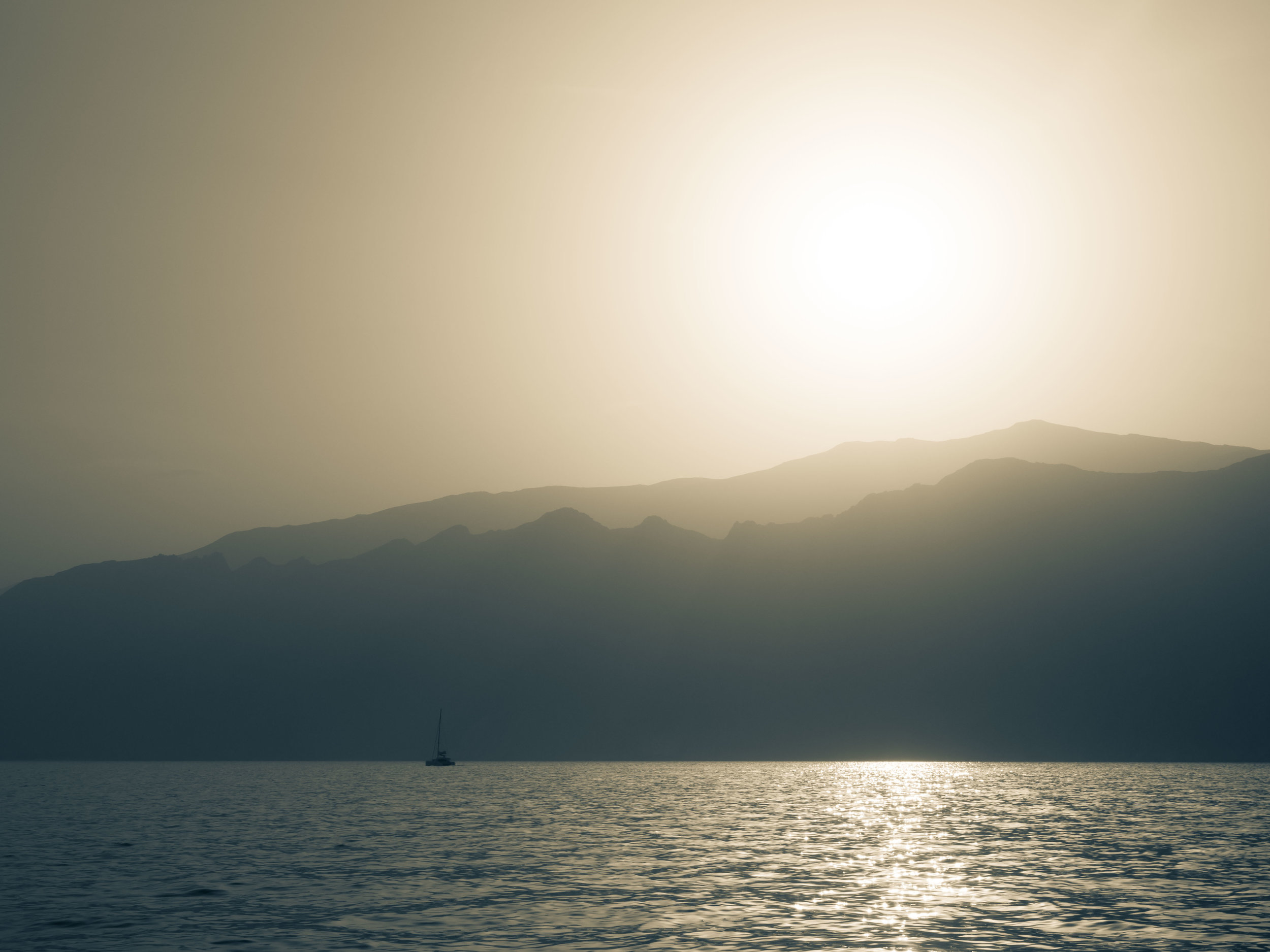
Mountain Views
The views of the mountains from the sea are stunning.
Oman - Musandam, the Norway of the Middle East
In April, we travelled to Oman over Easter, specifically the northern area of Musandam. If you are not aware, Oman is actually separated into some geographically isolated areas, take a look at the map on the right to find them. In fact there is an area of Oman surrounded completely by the UAE, and in turn, there is a small enclave of the UAE inside this area. However, we visited the beautiful coastal exclave around Khasab in the north.

In April, we travelled to Oman over Easter, specifically the northern area of Musandam. If you are not aware, Oman is actually separated into some geographically isolated areas, take a look at the map on the right to find them. In fact there is an area of Oman surrounded completely by the UAE, and in turn, there is a small enclave of the UAE inside this area. However, we visited the beautiful coastal exclave around Khasab in the north.
The drive from Dubai took around 3 hours - keeping in mind we stopped a few times on the way and probably didn't take the most efficient route. It's an enjoyable drive, partly through the desert and partly along the coast.
Enjoy the photos of the trip below.

The Coastal Drive
Driving along the coast one encounters a lot of interesting spots, with boats, mosques and small cities dotted alongside the mountains.
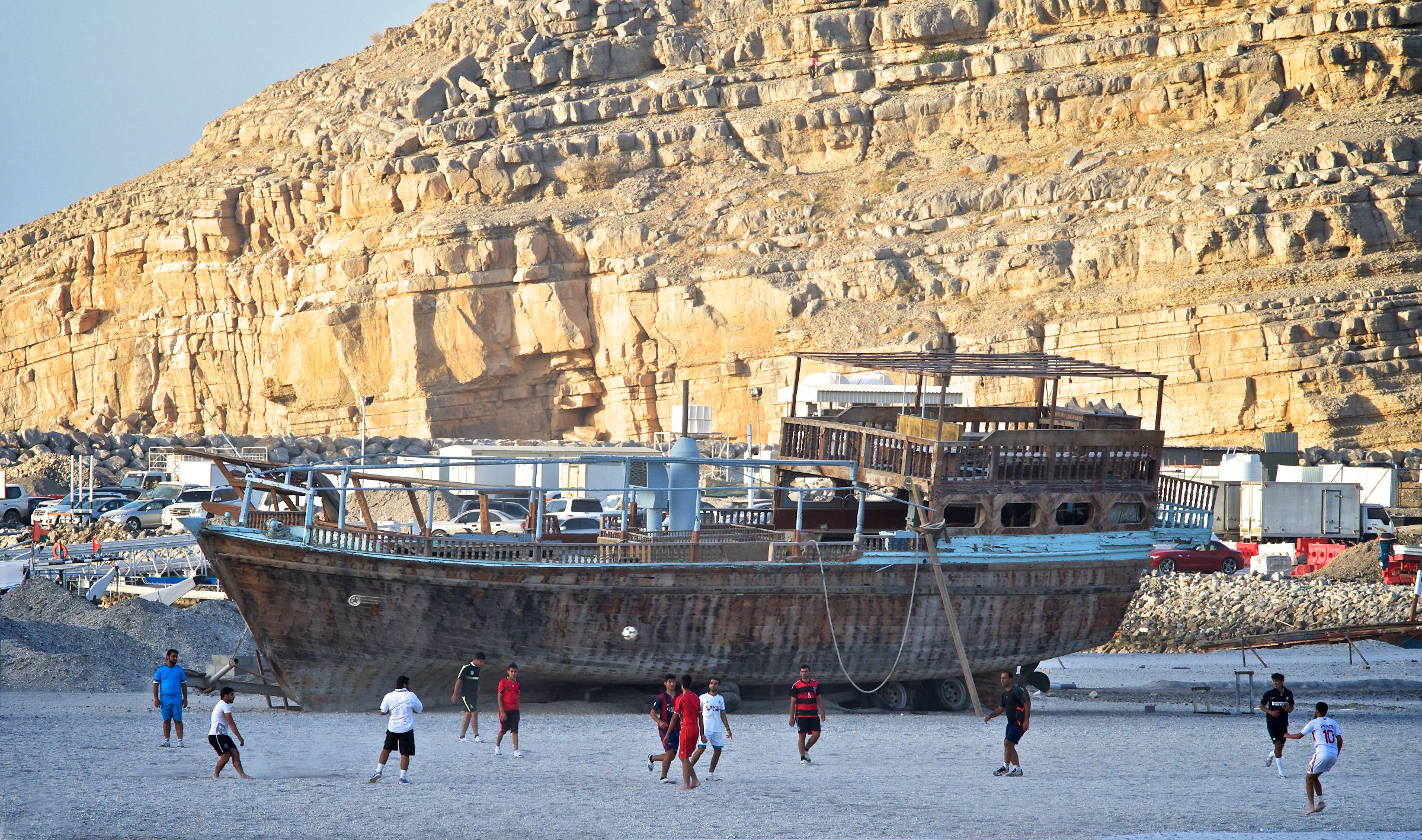
Football
A big empty plot near the expanded artificial harbour is used for a game of football.
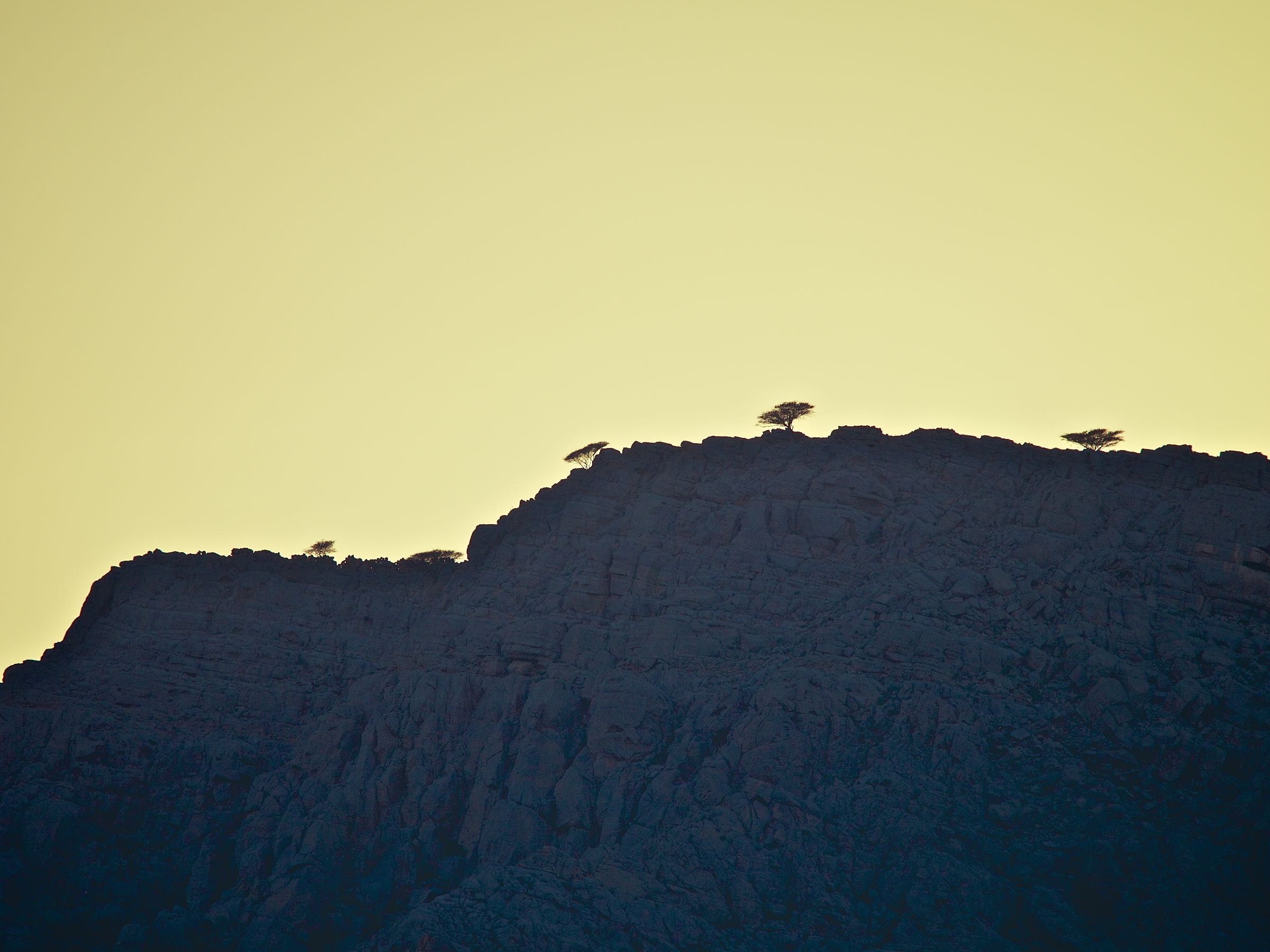
Trees on the Mountain
Interestingly shaped trees are dotted alongside the mountain ranges surrounding Khasab. Have not figured out what kind of trees these are yet though.
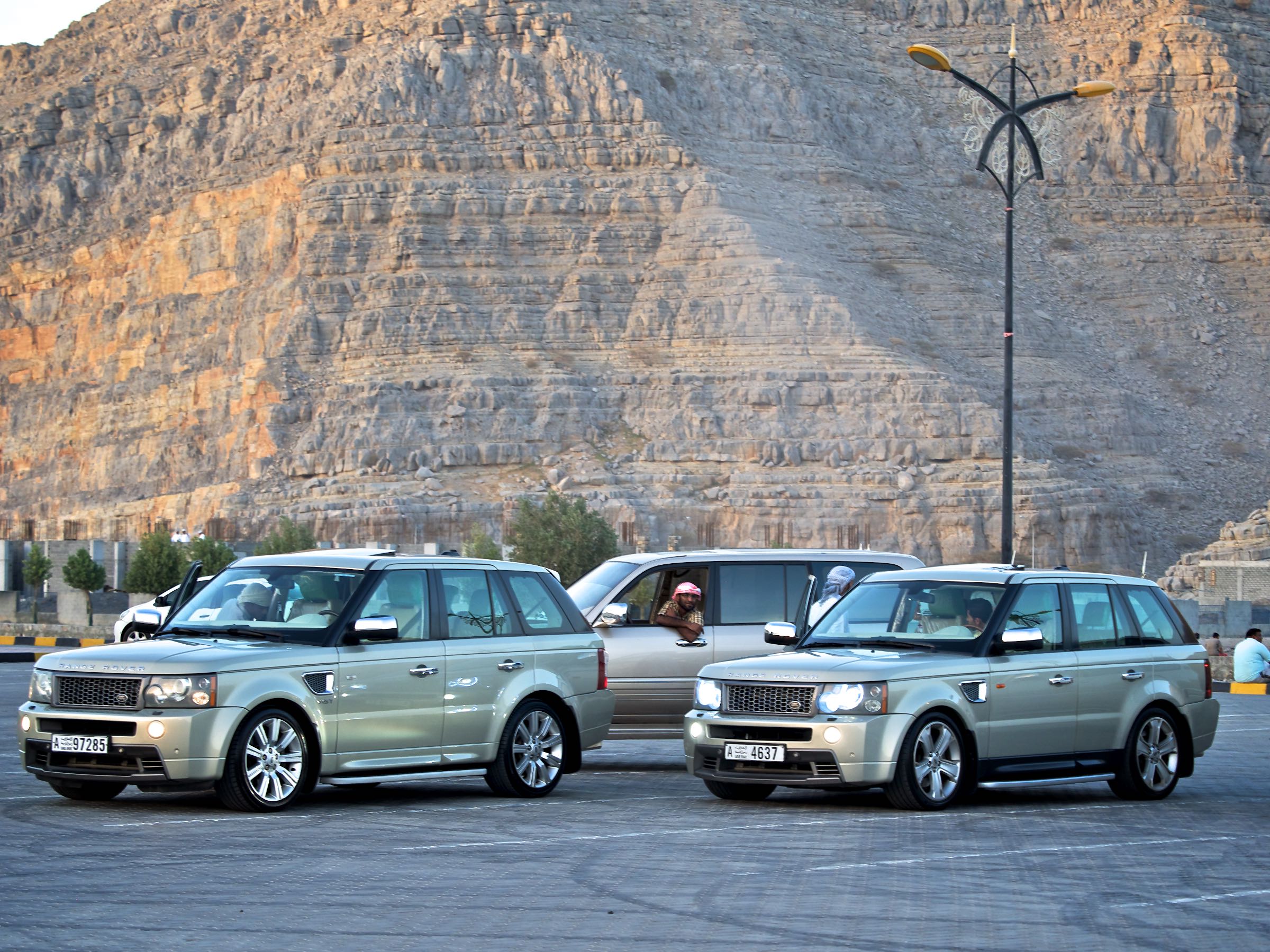
Cars of Choice
Range and Land Roevers are the cars of choice for the well established local.
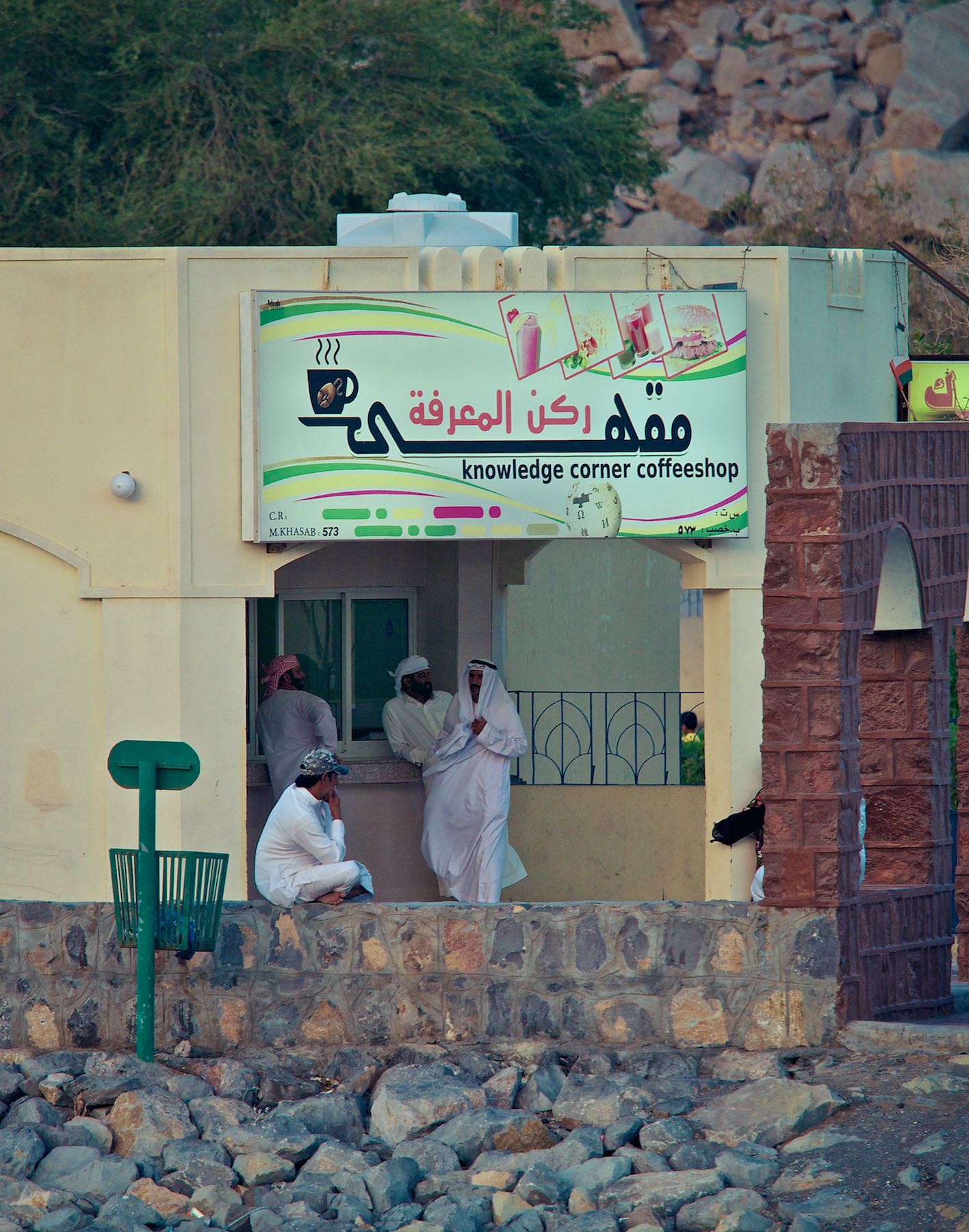
Knowledge Corner
Wisdom built over centuries is probably passed through generations at this place.
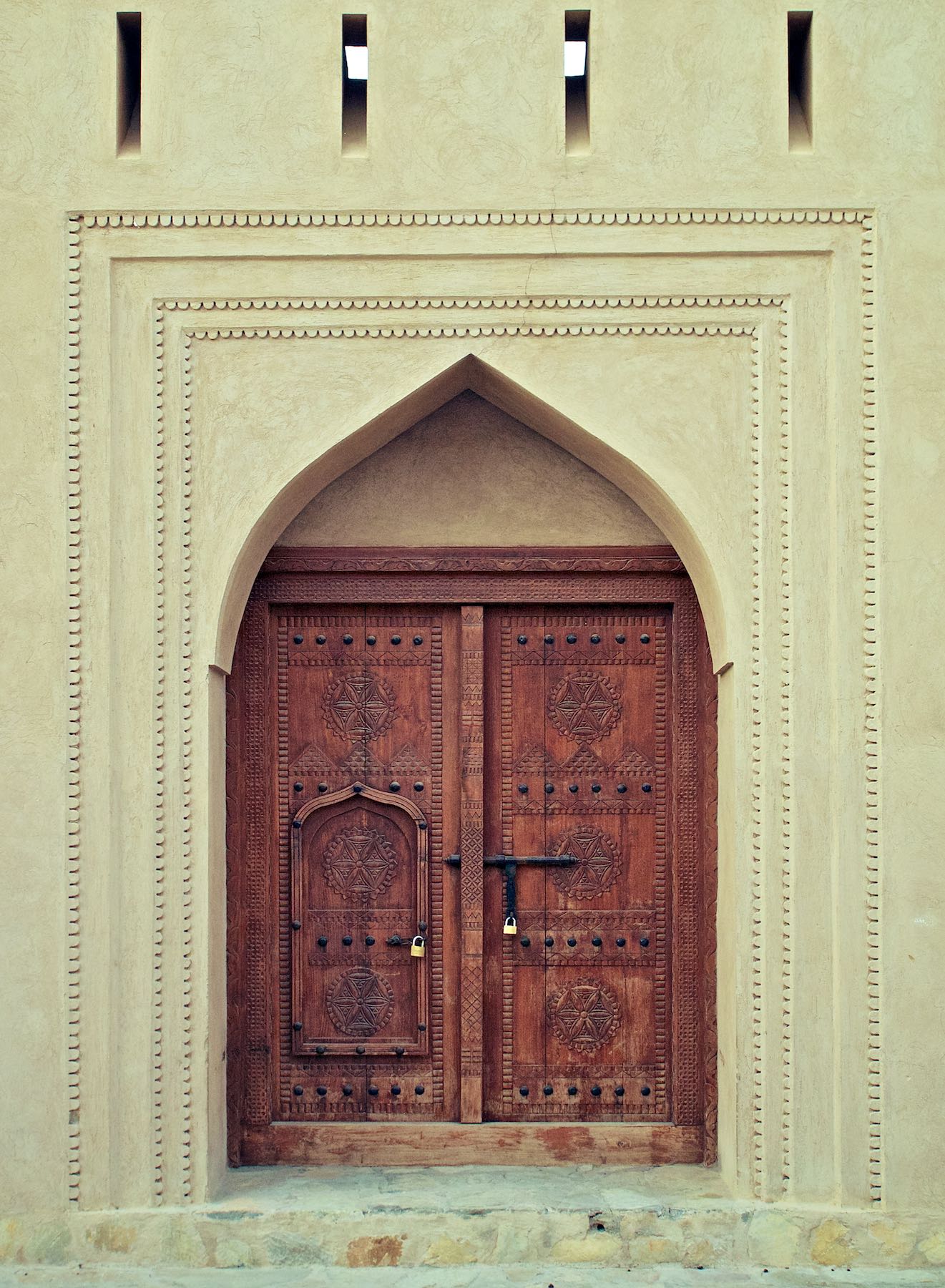
Entrance
There were a few beautiful houses with amazing doors like this one dotted around the city.
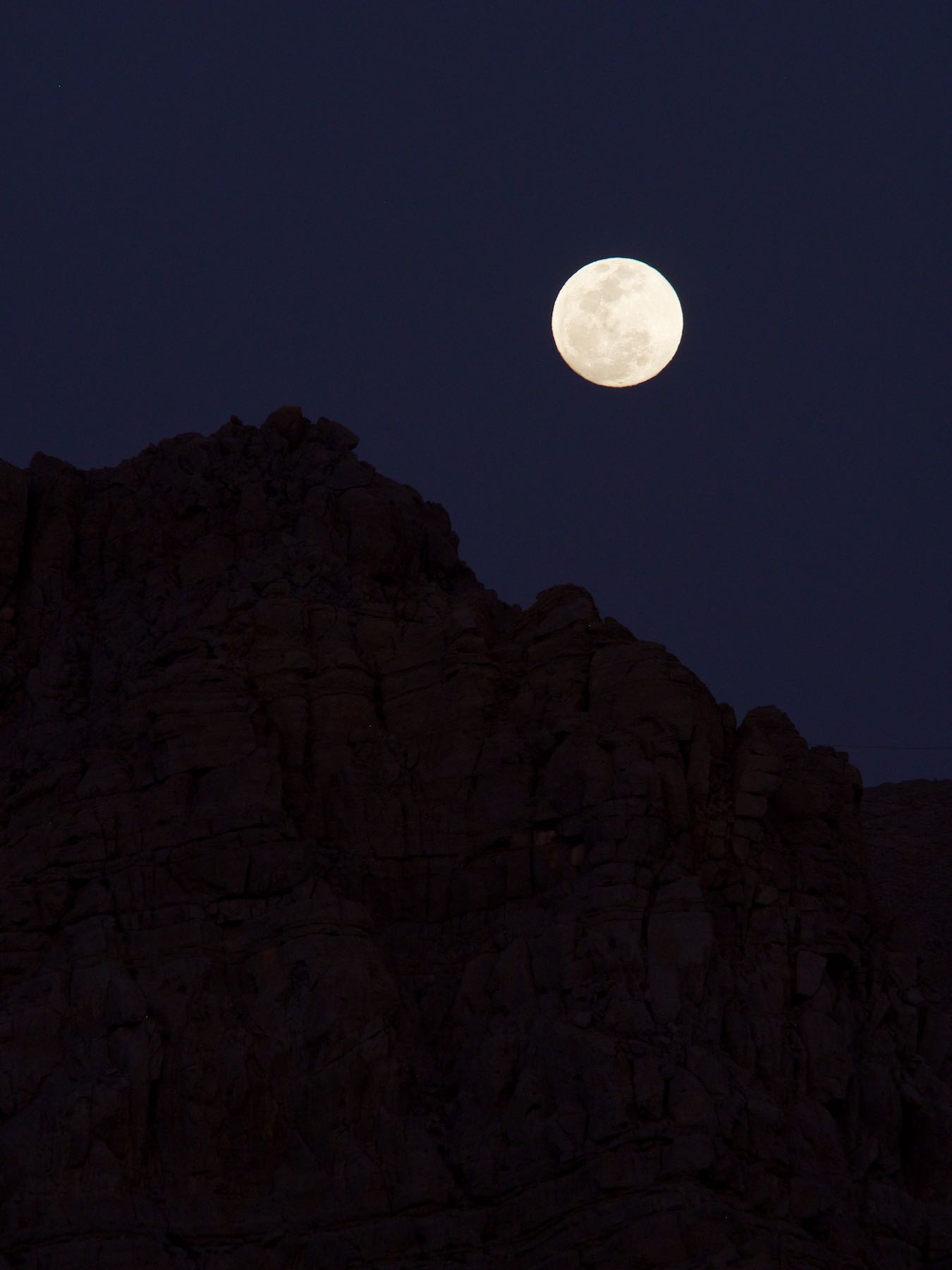
Full Moon
The moon was rising over the mountains one night, casting a bright light over the valley in which Khasab is set.
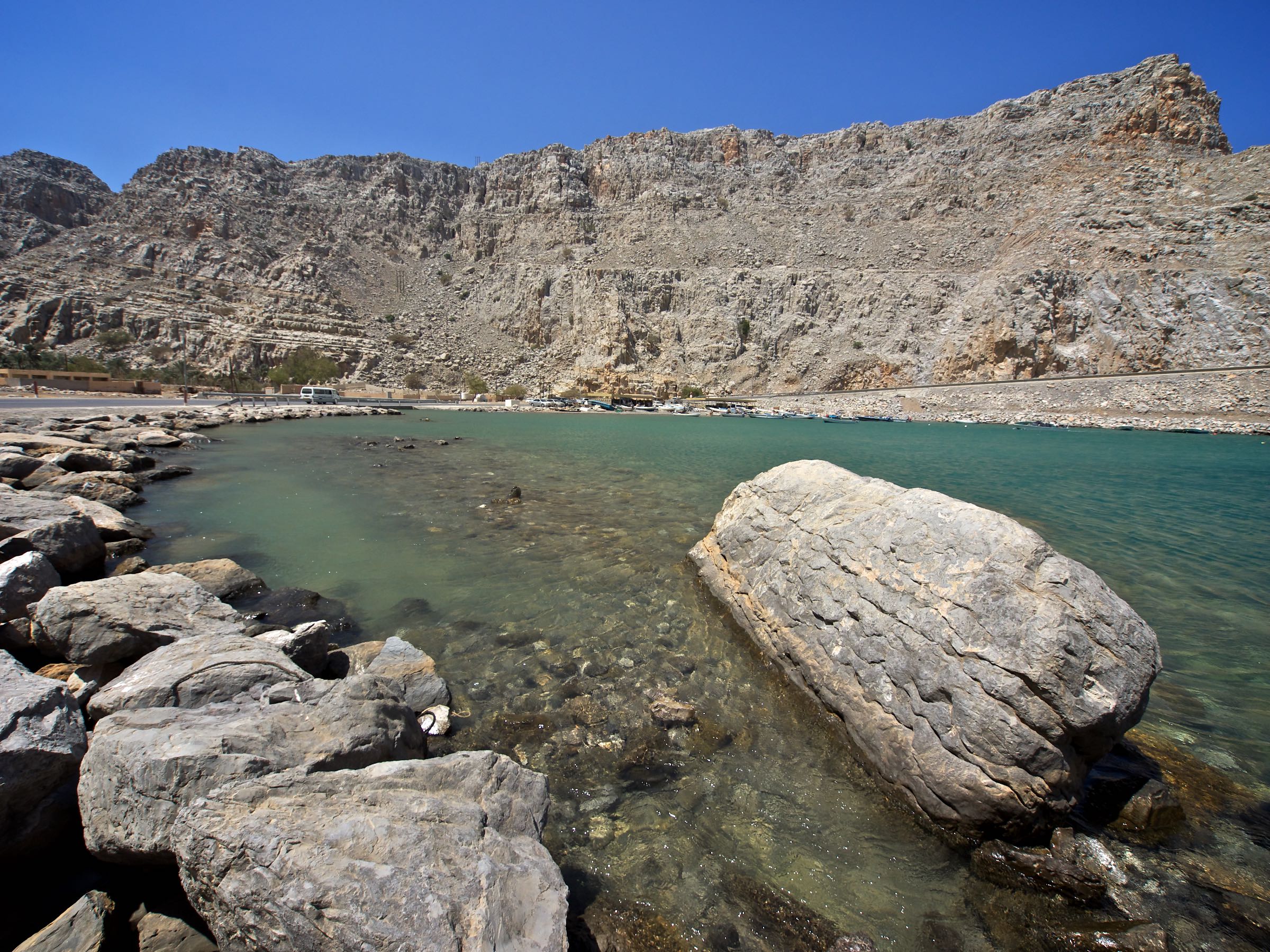
Along the Coast
One of the small bays along the route from the UAE to Musandam, with a small village set along the road.
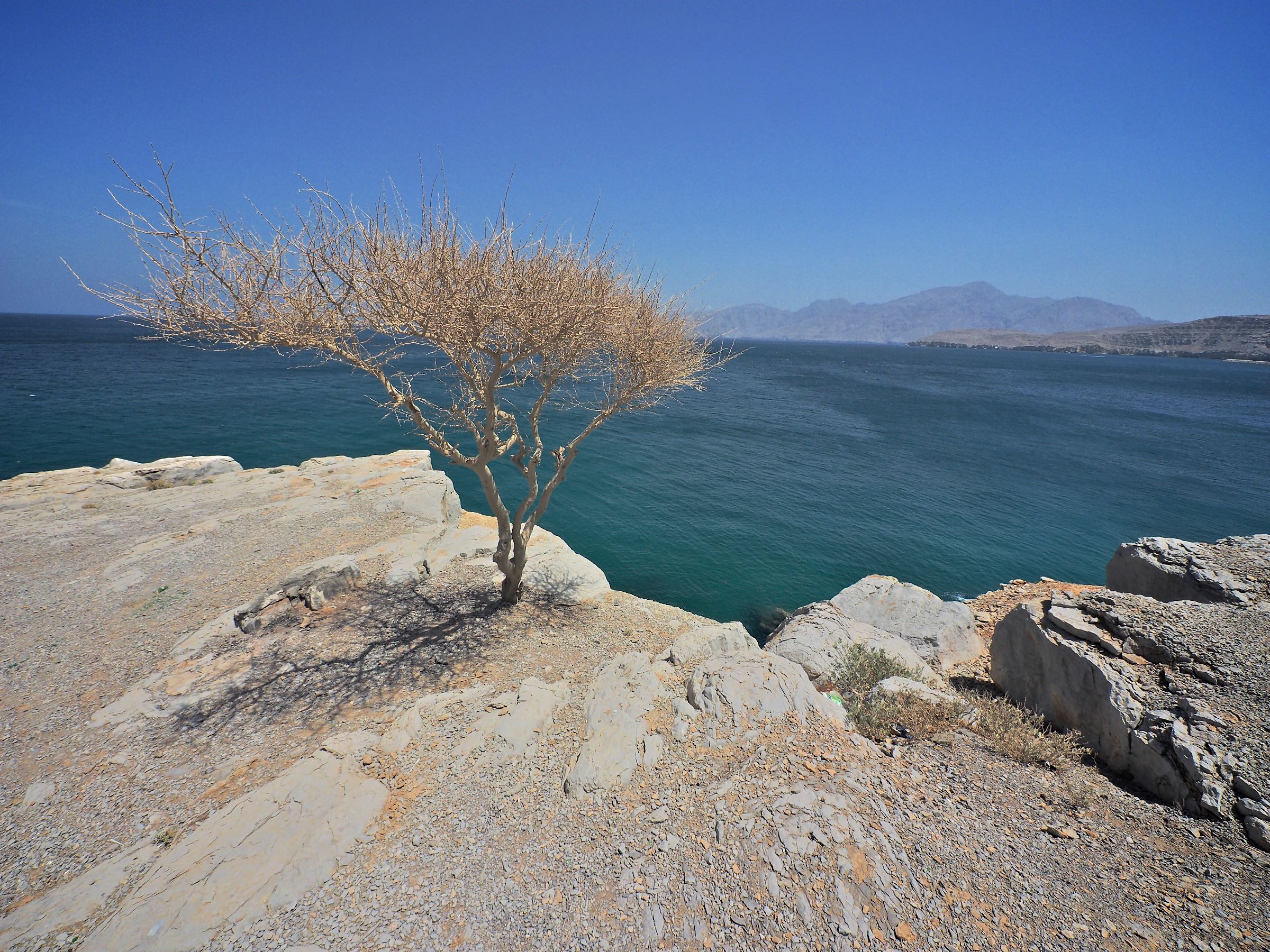
Up on the Cliffs
We drove (and walked) up some of the cliffs along the mountains as well, and encountered some beautiful scenery.
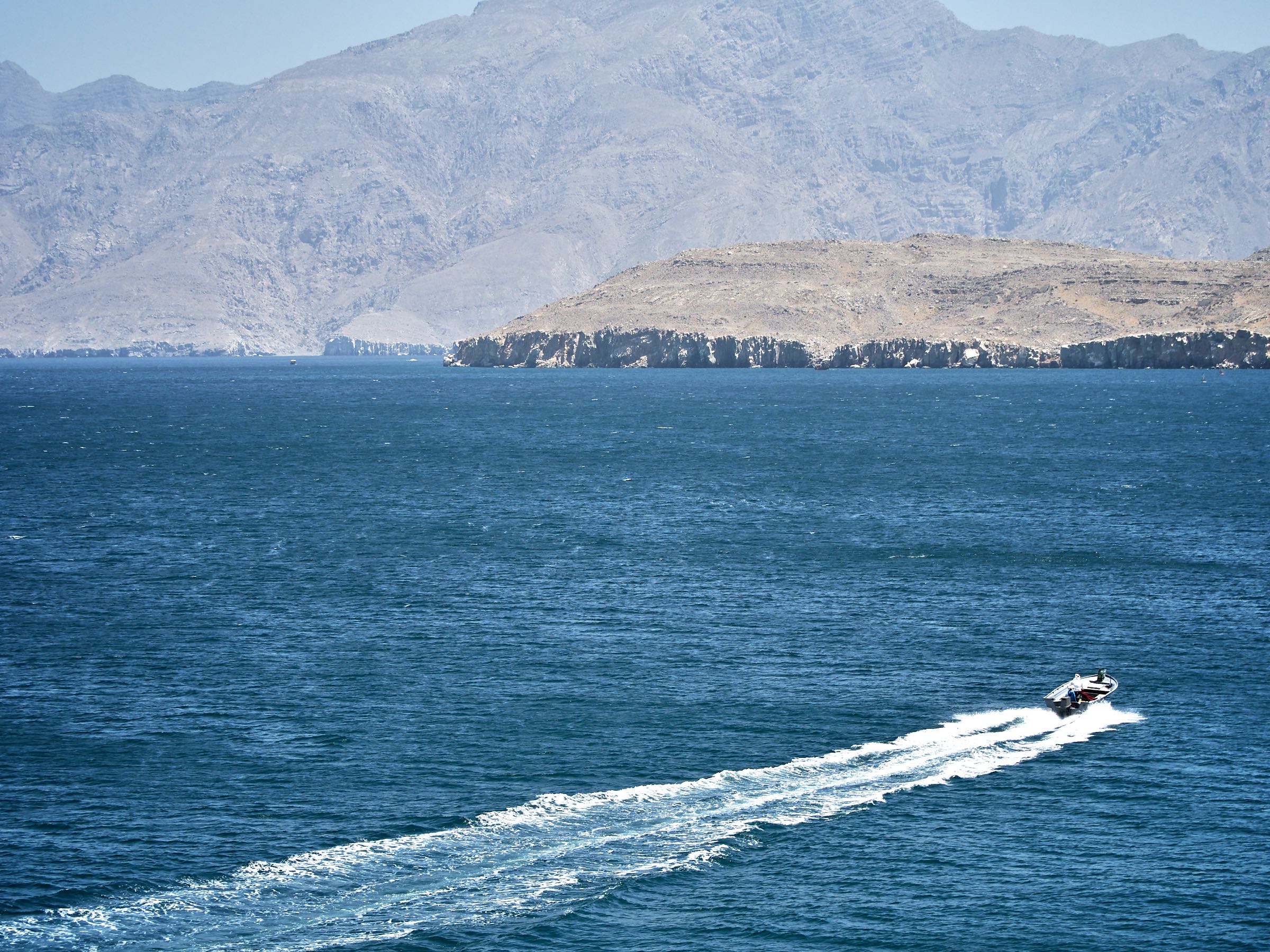
Boat Ride
Boats are a very important method of transportation in this area. In fact, some villages can't be reached at all by car and only barely by foot.

Goats
These are everywhere - driving hazards as well.
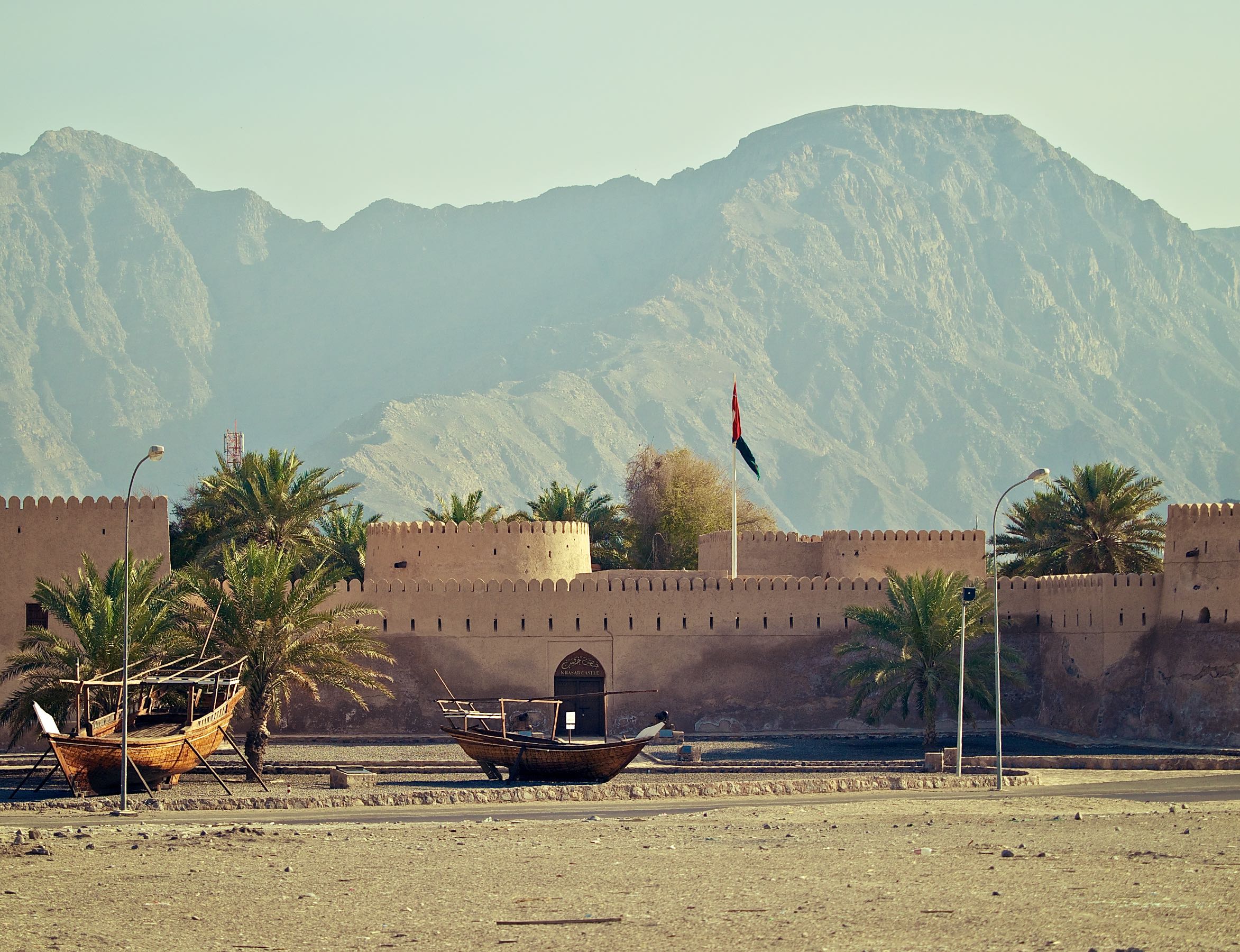
Khasab Castle
The castle of Khasab is set at the entrance into the city and was built in the 17th century.
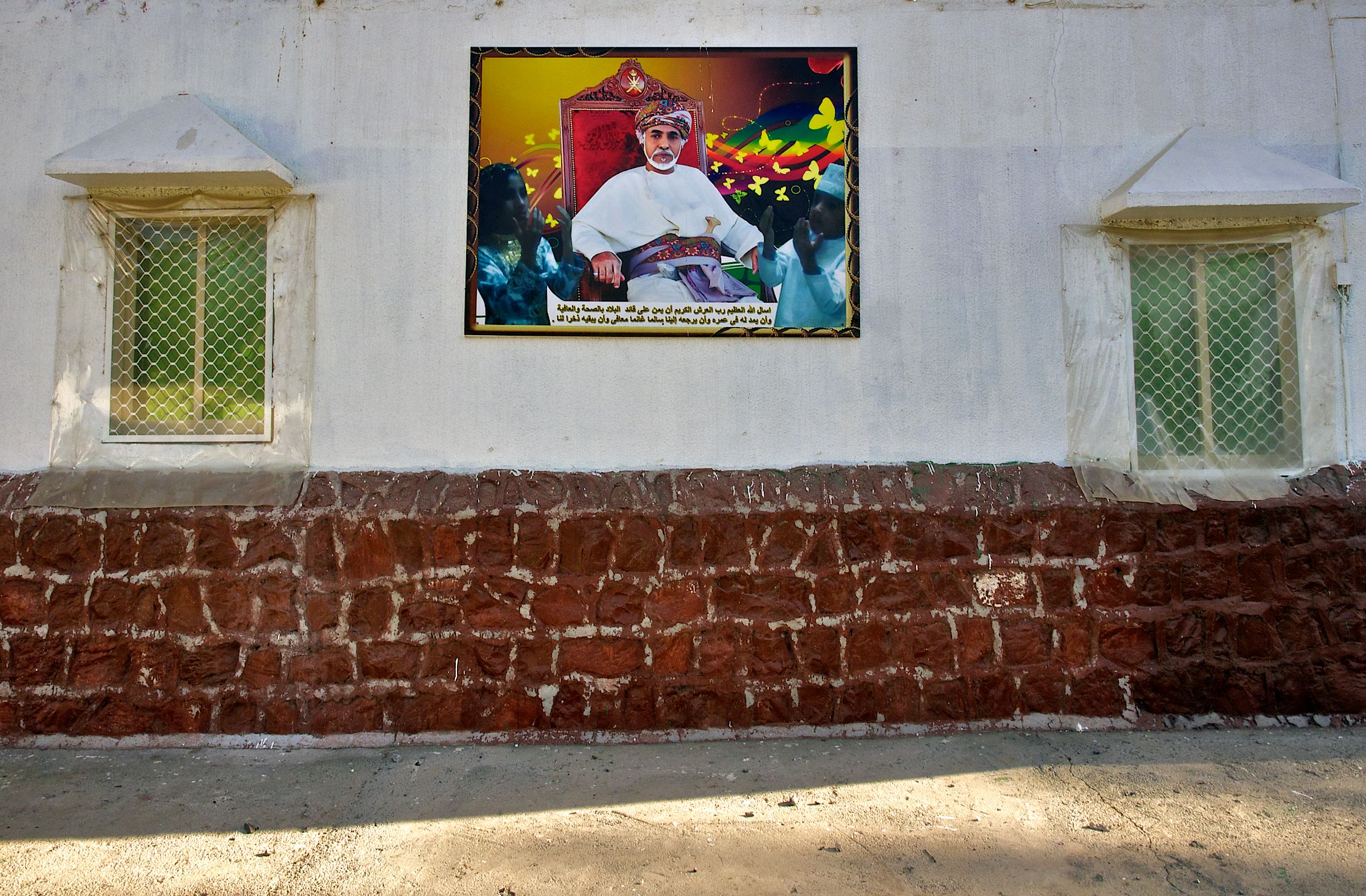
The Ruler
Photos of the ruler and past rules are dotted around the city.
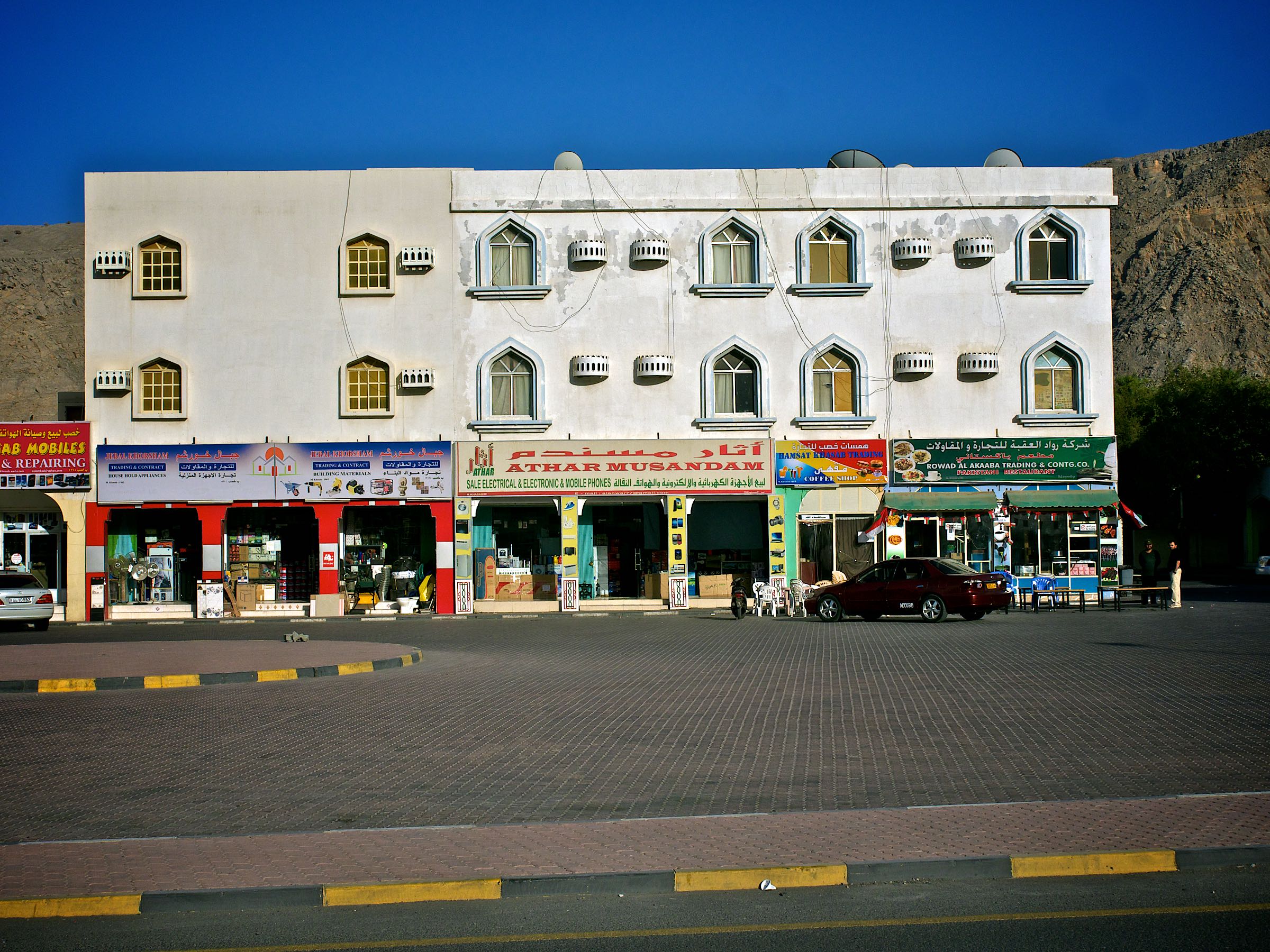
Khasab City Center
Surprisingly, there is a relatively nice and modern city centre set away from the sea.
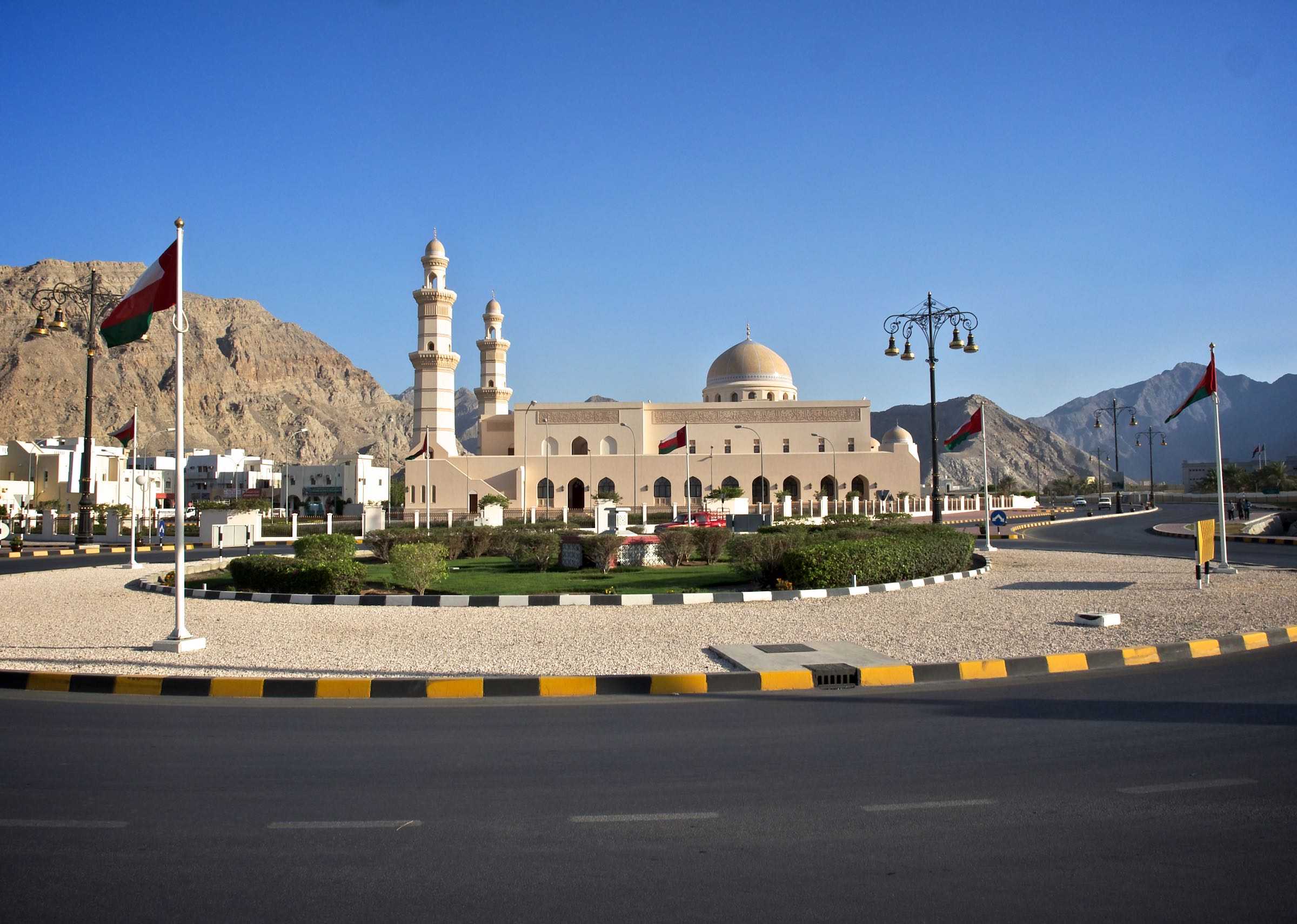
Khasab Center Mosque
The main mosque in Khasab isn't particularly outstanding, but still one of the most impressive buildings in the city.
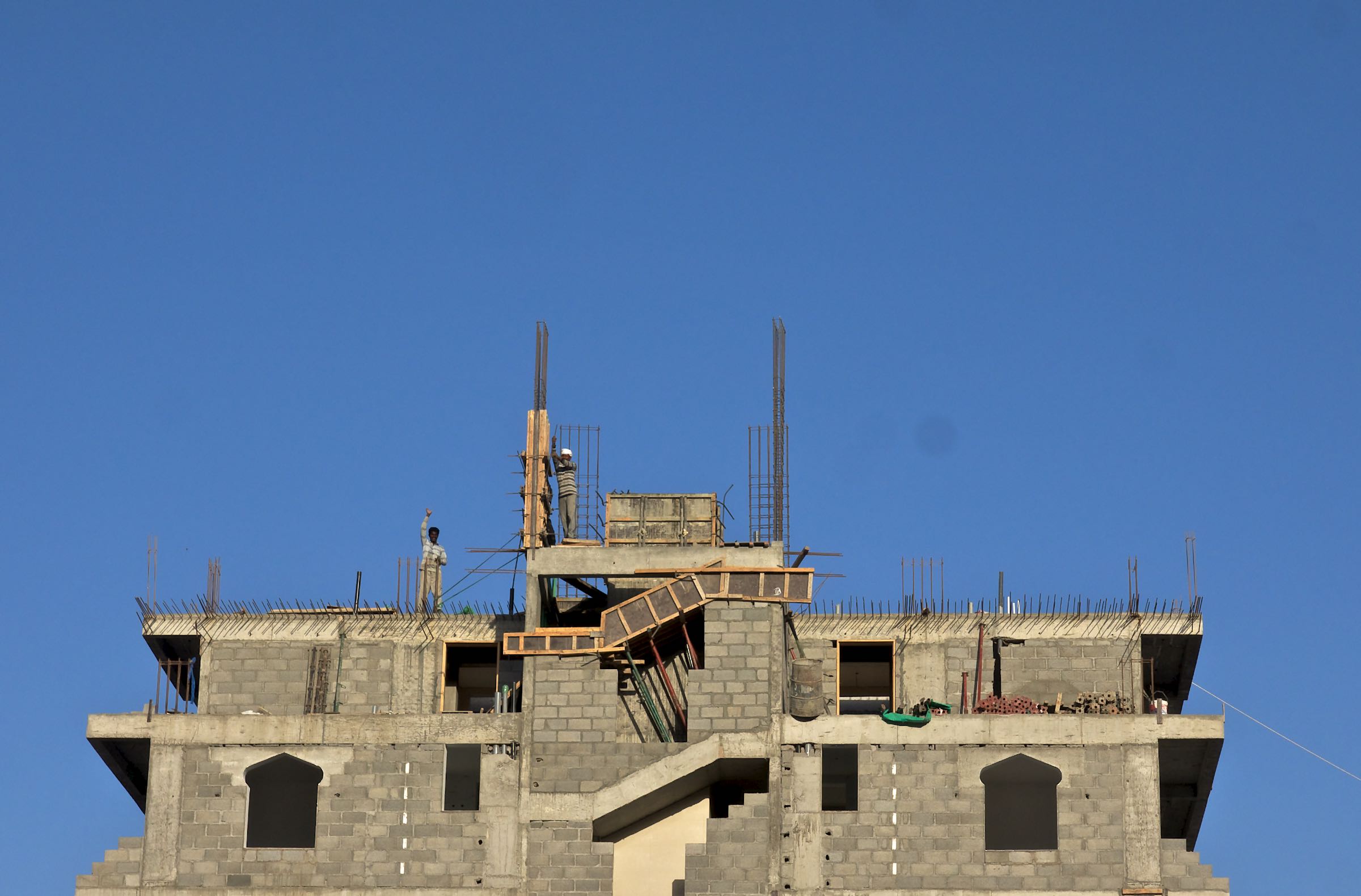
Construction Safety
... does not seem a major concern.
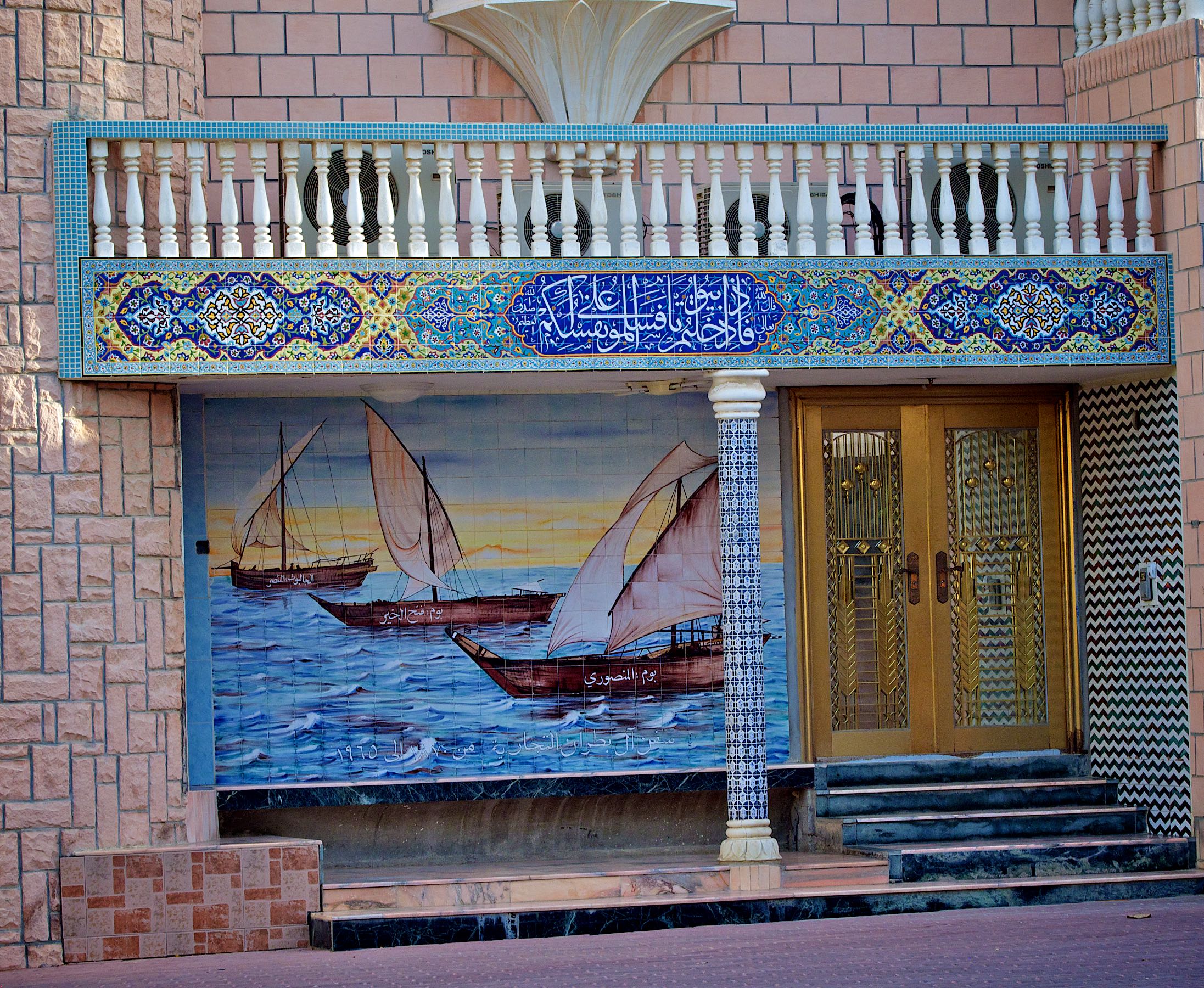
Homes with Style
It's not uncommon to see homes with extensive decorative elements.
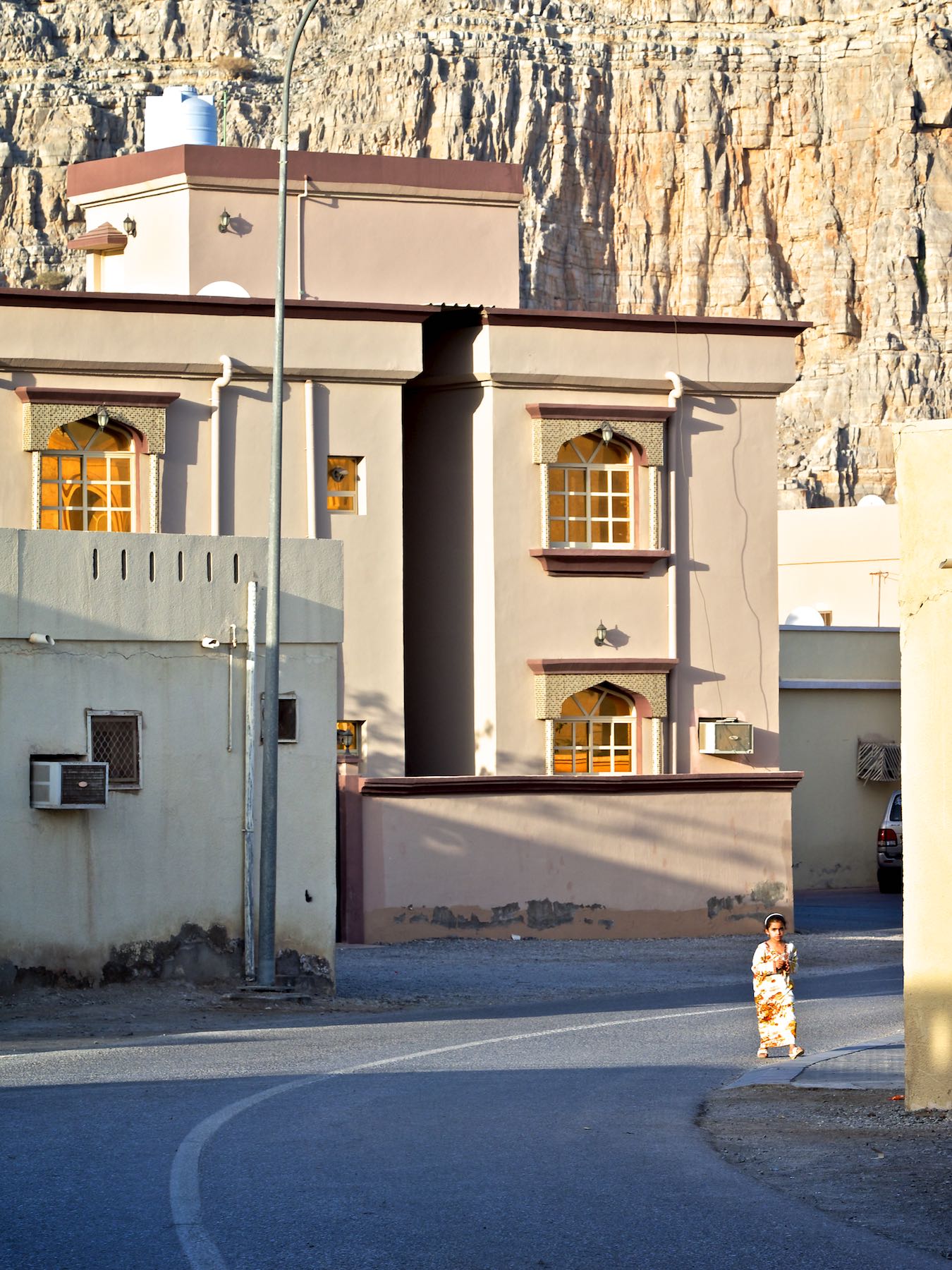
Little Girl
Despite popular assumptions, even in more conservative places like Oman, female kids are running around playing like their male counterparts.
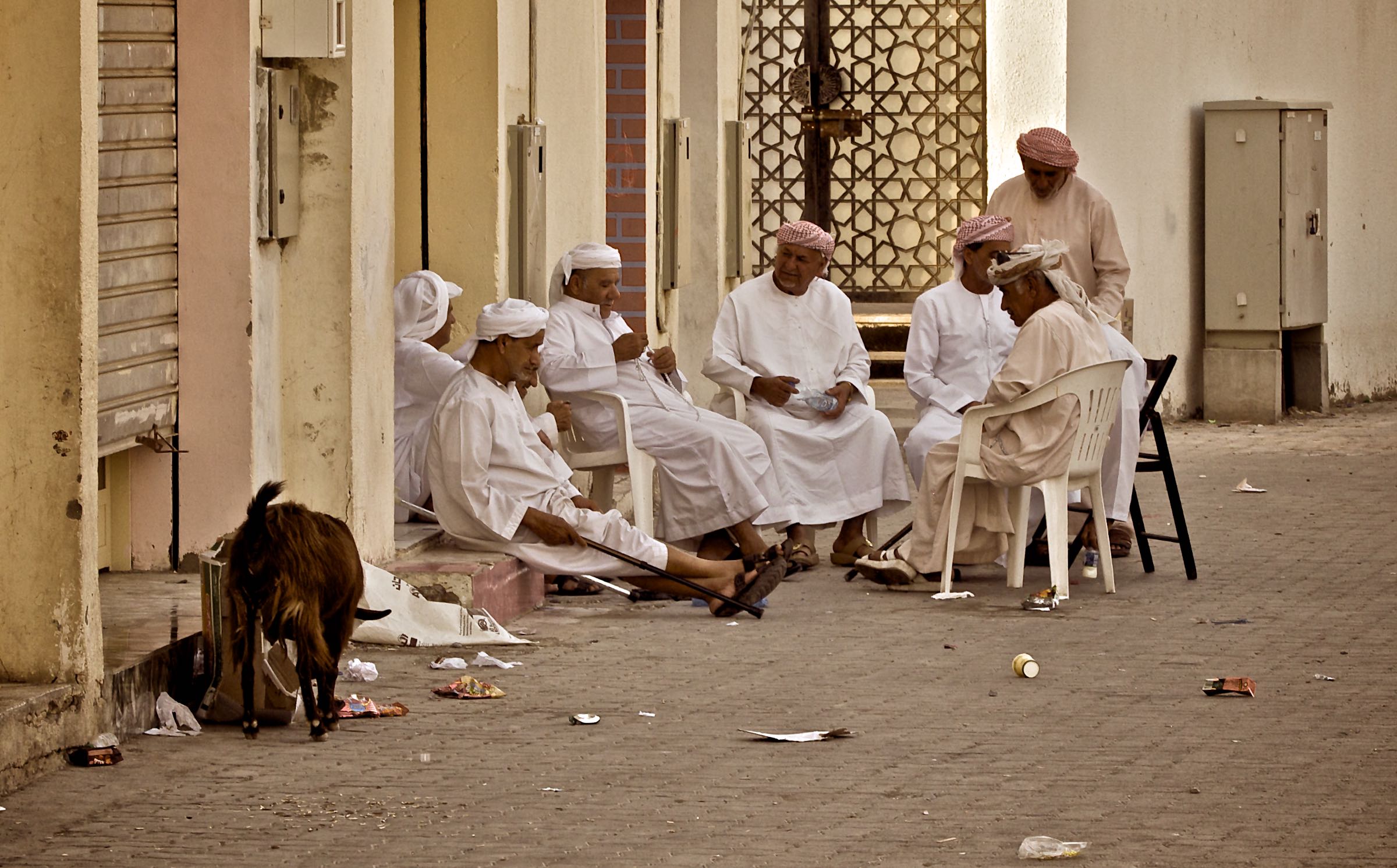
Get Together
A very typical scene.
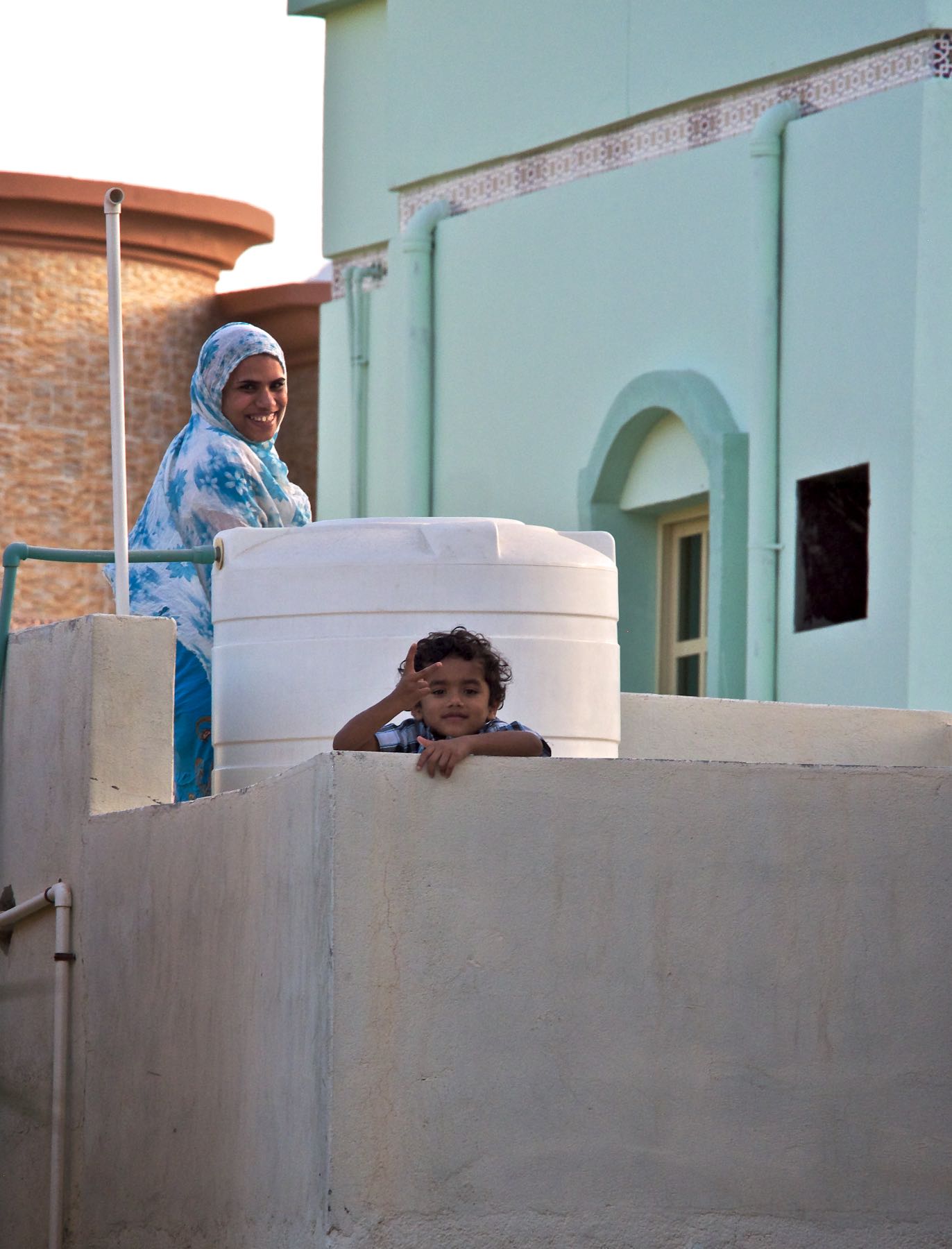
Universal Signs
Say Hi to the cool kids!
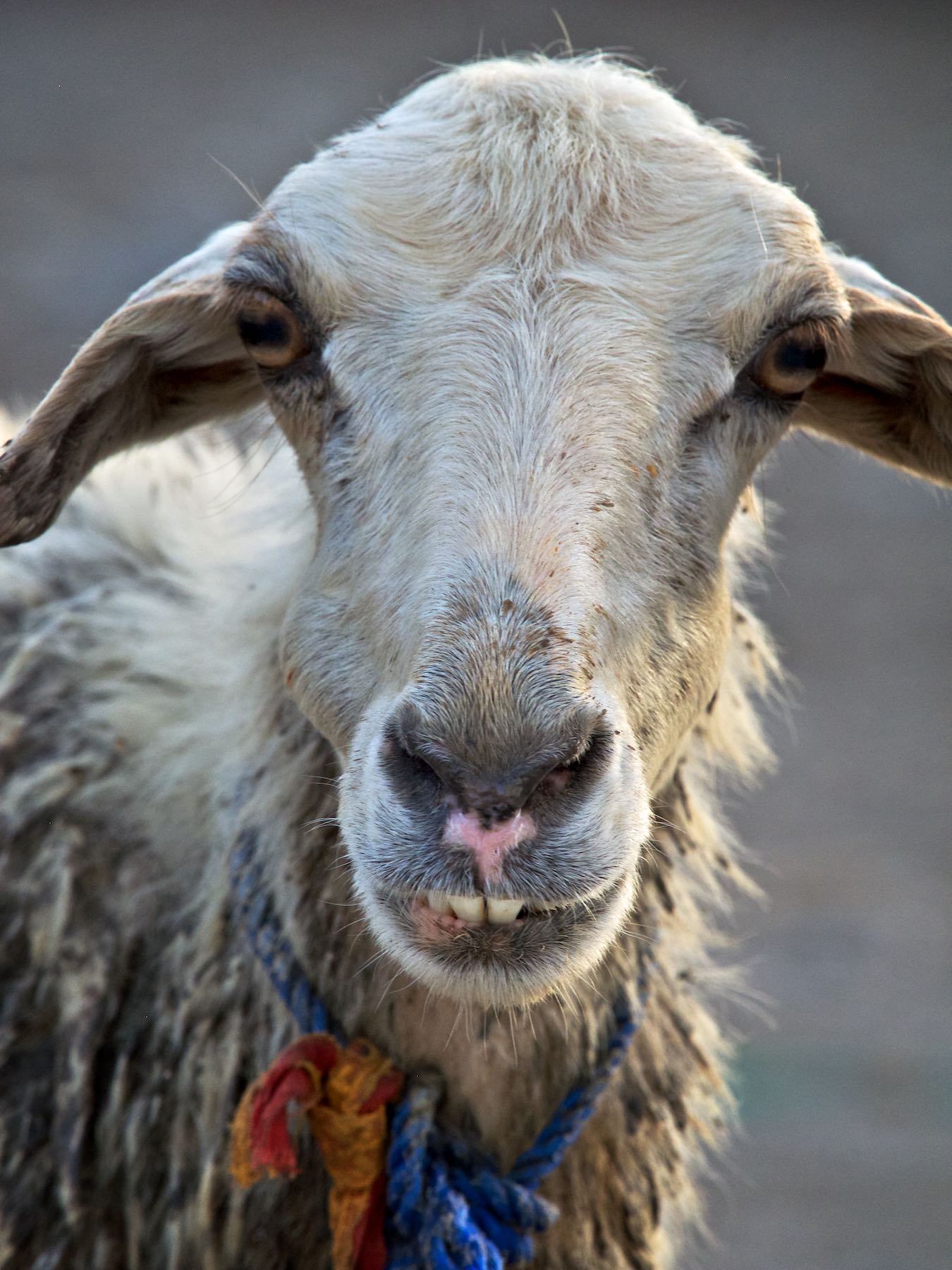
Goat
In your face!
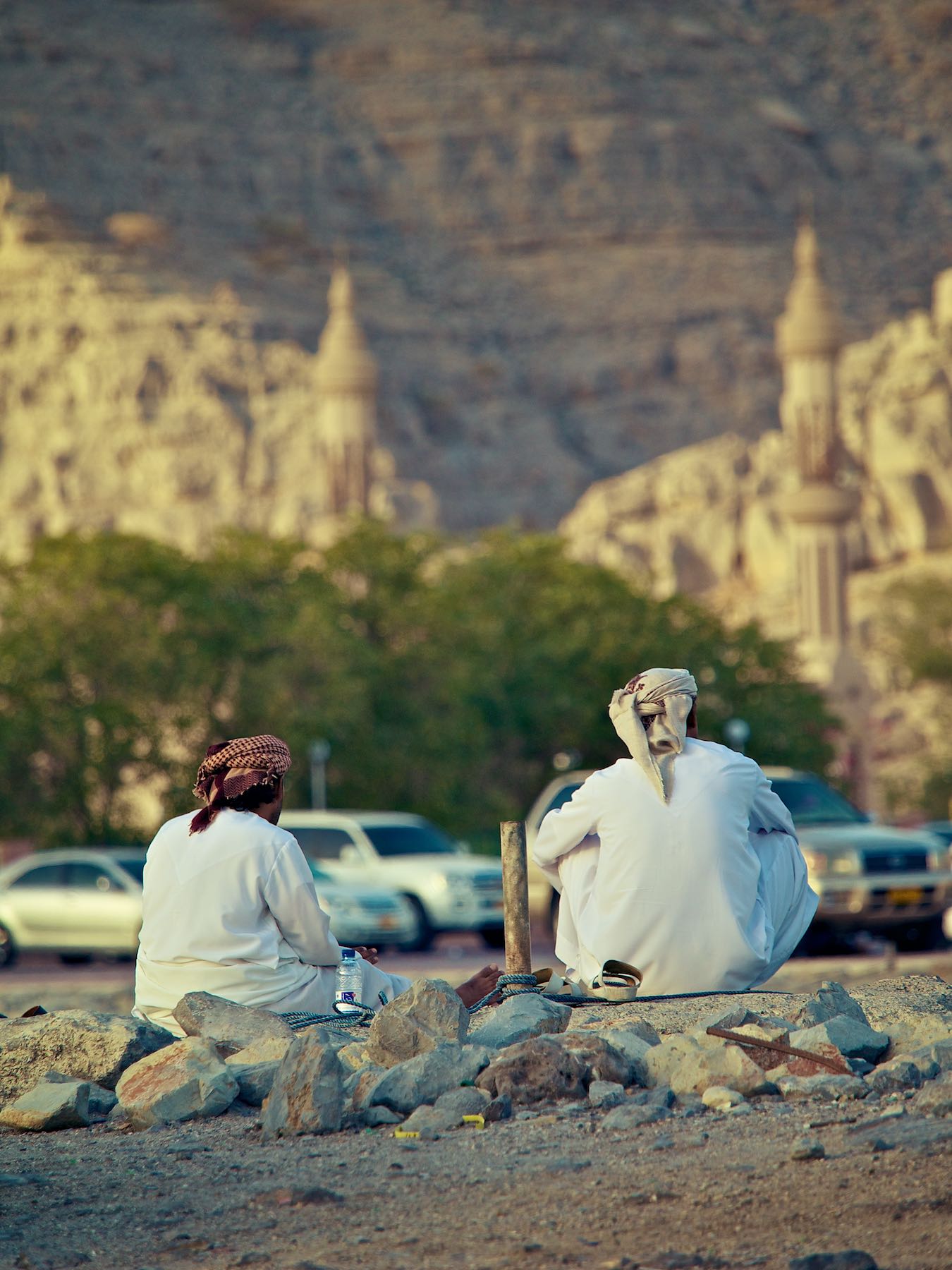
A Chat at Sunset
Two locals sitting by the canal into the harbour and discussing life. One of the mosques is visible in the background set against the mountain backdrop.
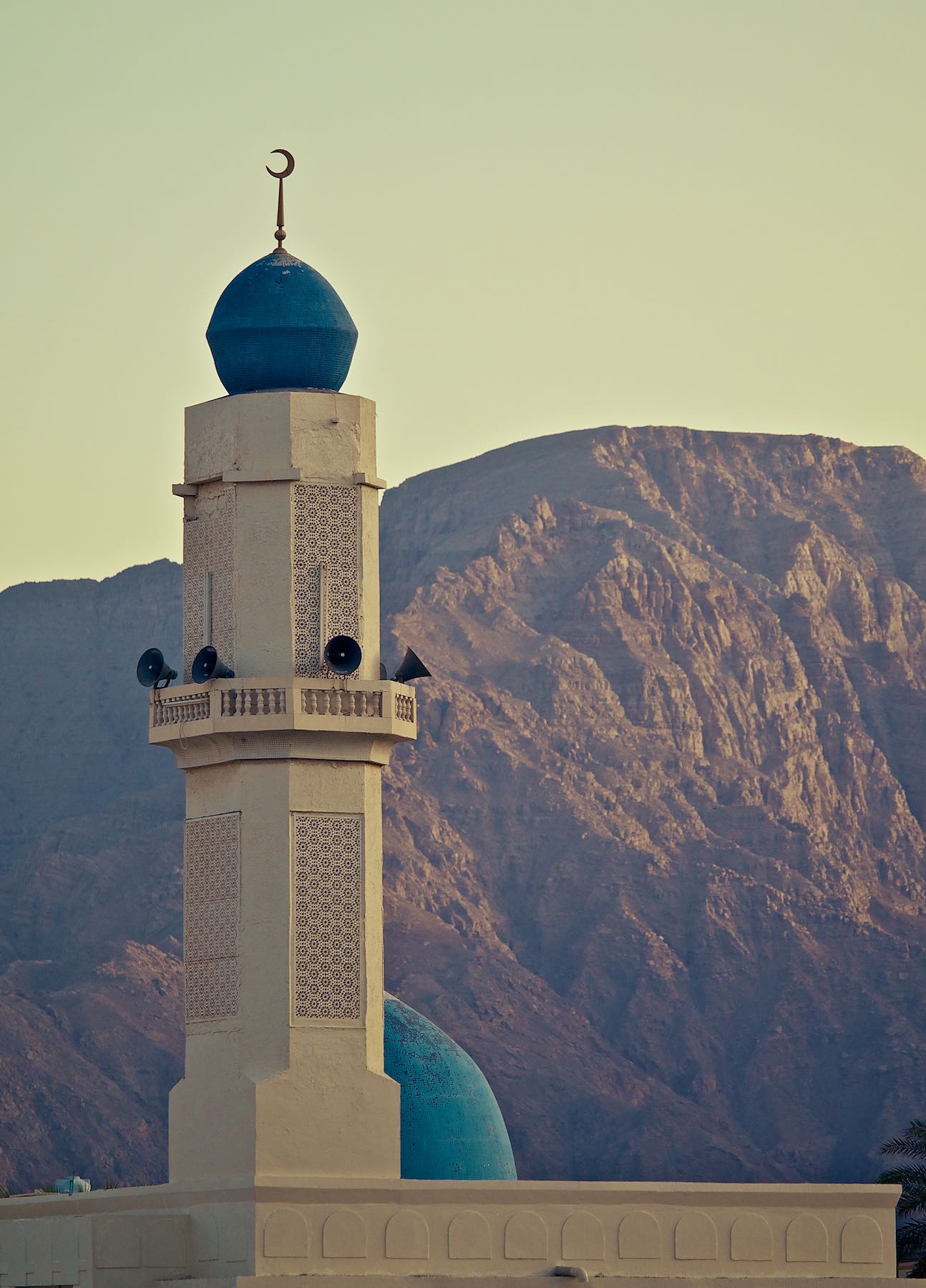
Mosques & Mountains
One of the smaller mosques set against the mountains at sunset.
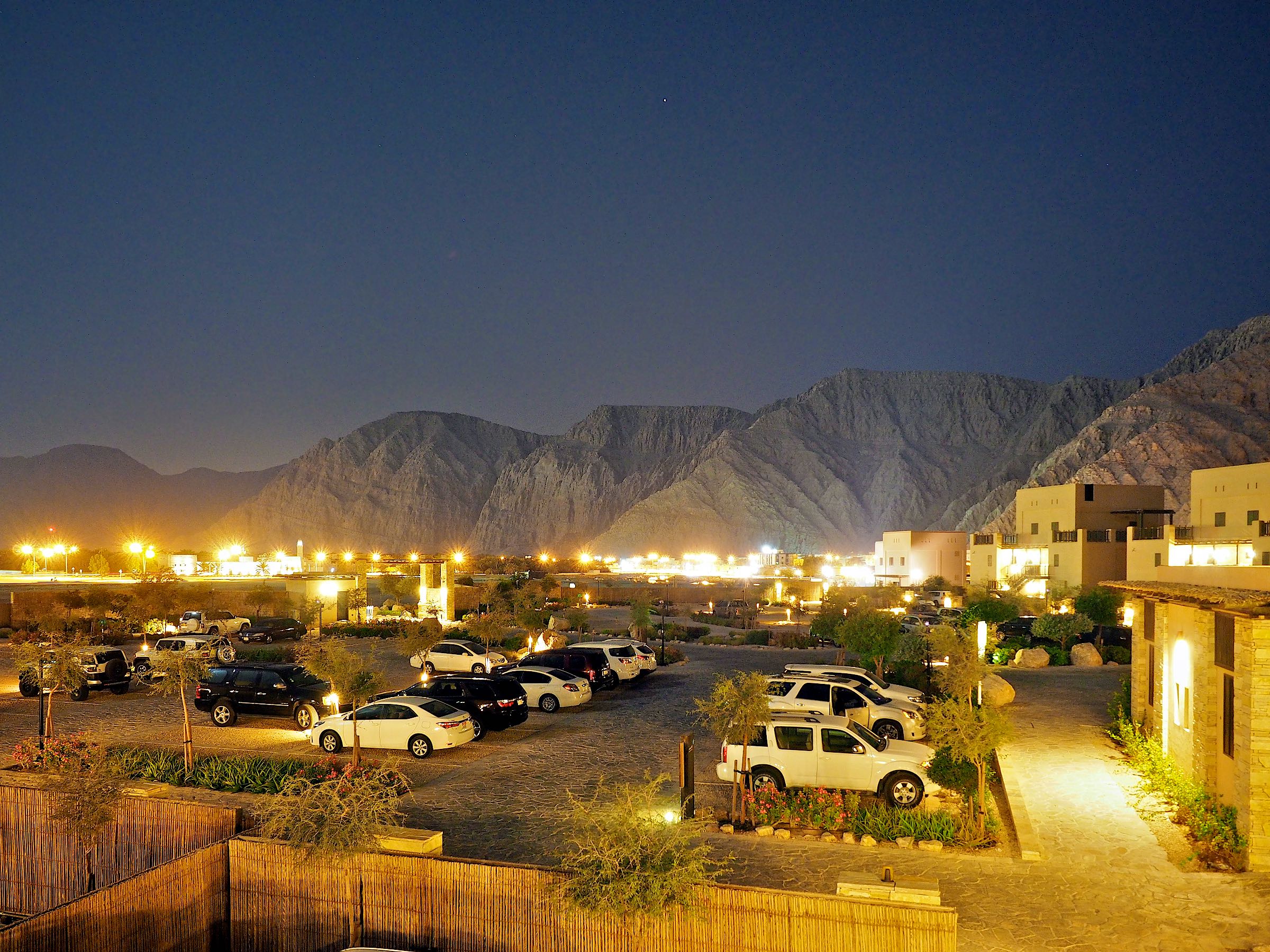
View from Atana Musandam
This is the view from the hotel we stayed in, looking towards the west over the mountains.
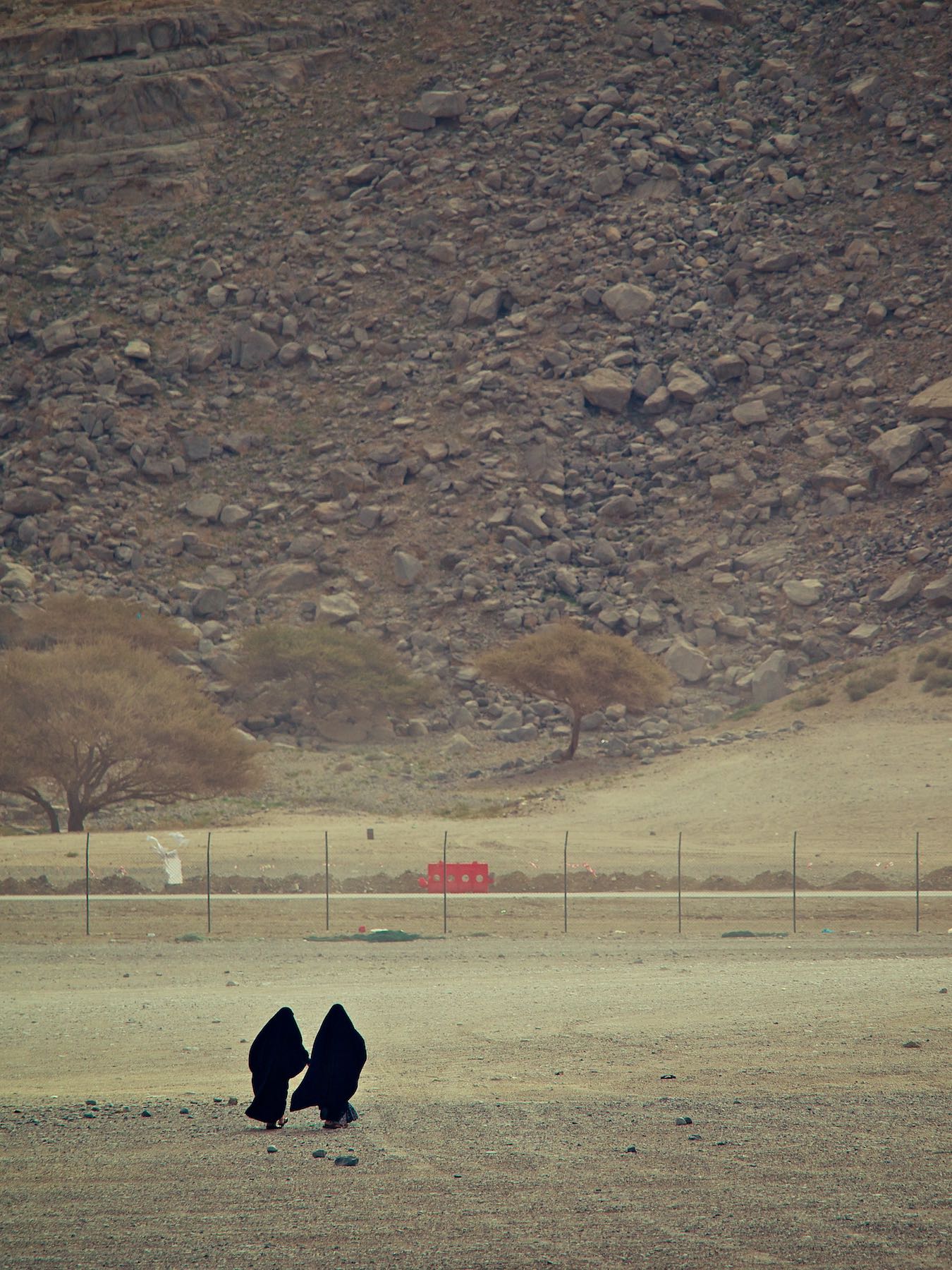
Local Women
Two local women walking through the sand.
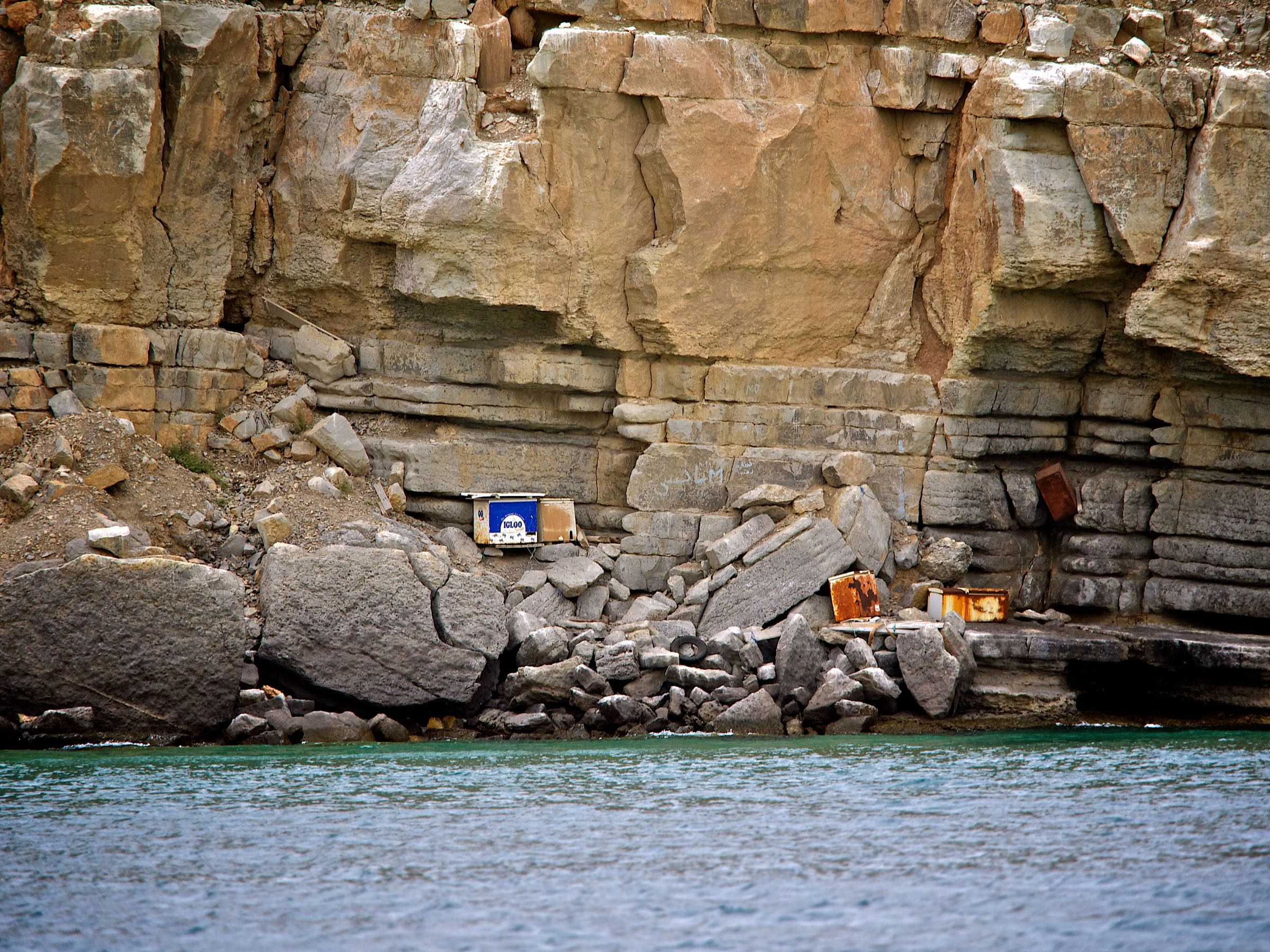
Random Things
On our boat ride through the fjords we saw some strange things - such as this freezer in the mountains. Unfortunately we didn't get to see any dolphins, even though they are quite common in the area.
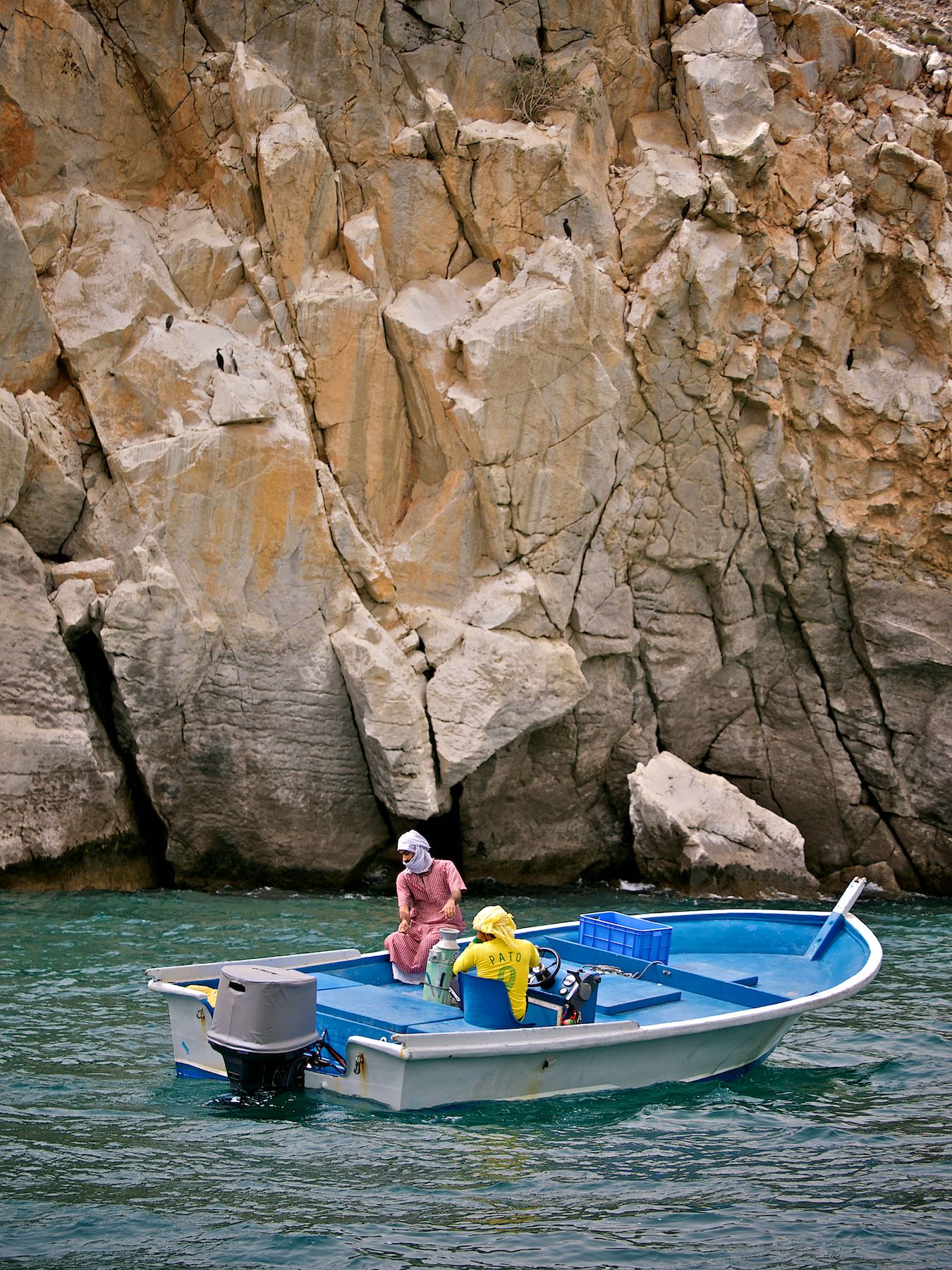
Transport
Some of the villages around the Fjords are only accessible by boat.

Dhow Travel
The larger dhows are still used for transporting goods over the sea. Inside the fjords, they are mainly used for touristic purposes, and the original wooden ones have been replaced by more modern models out of polycarbonate.

View into the Fjords
We took a day trip around the fjords north of Khasab. While the weather wasn't ideal, the view was beautiful at times.

Mountain Villages
As mentioned, some villages are not accessible by road. Here you can see why this is the case. Notice the power lines coming in over the mountains. Water is often stored in large containers and provided by the Omani government.

Going for a Swim
The fjords are great for snorkelling - although we did encounter some jellyfish...

Watching Out
Our captain on the dhow.
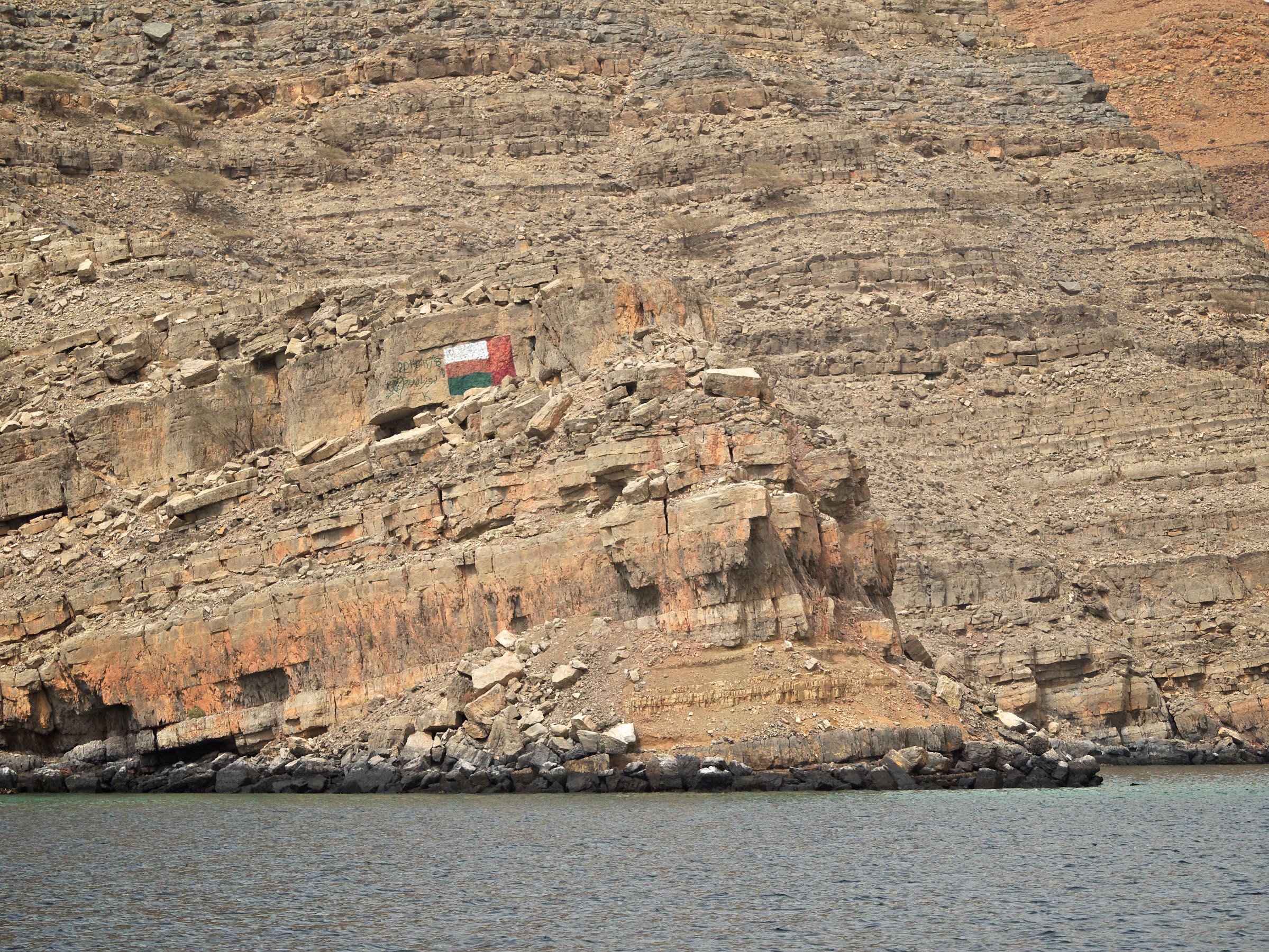
Patriotism
Someone decided to climb up here to draw the Omani flag in the middle of this remote mountain in the fjords.
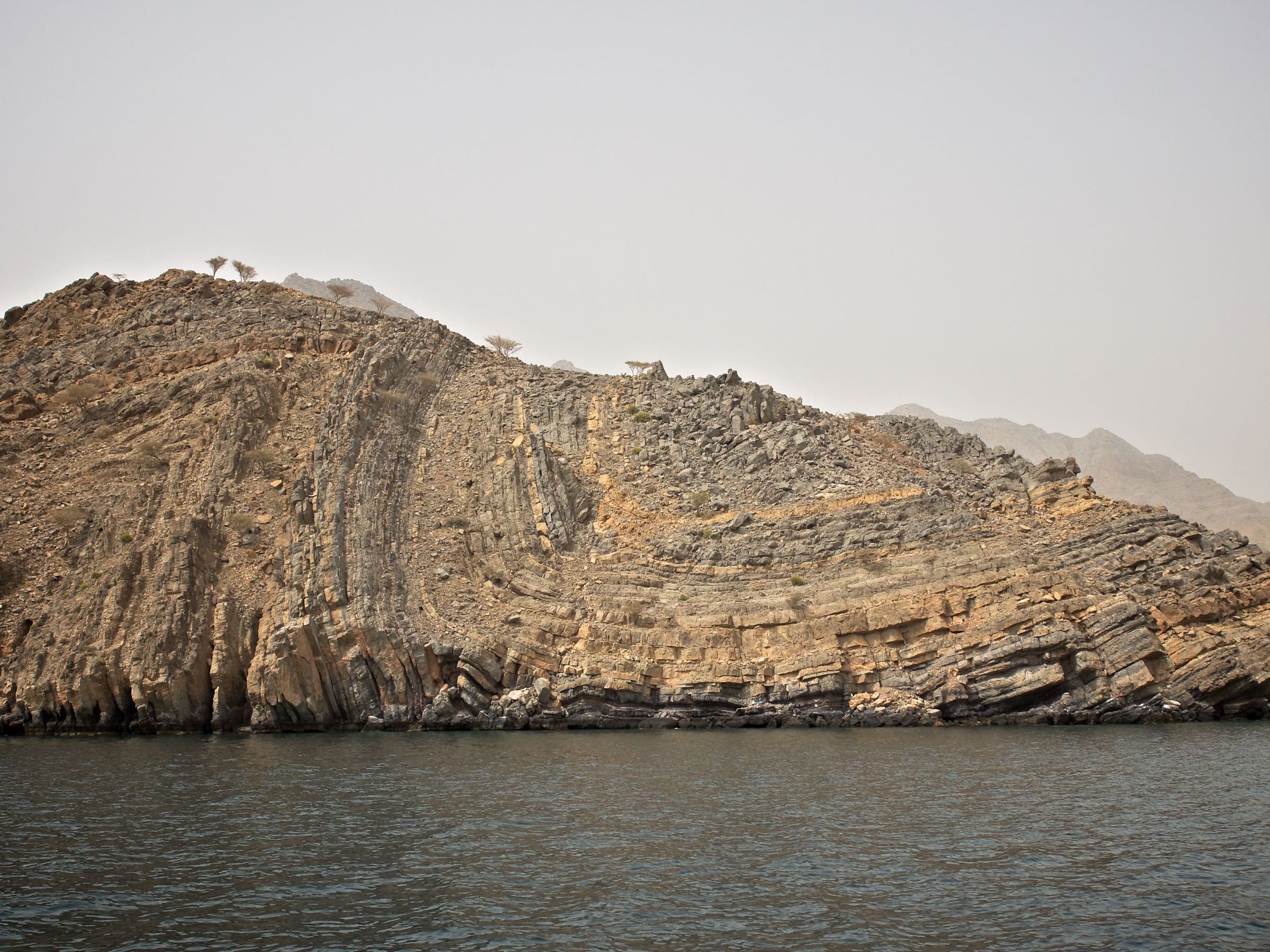
Shapes
Notice the beautiful shapes and colours along the mountains.

Remote Home?
Another remote home - here you can see the water container I had mentioned earlier.
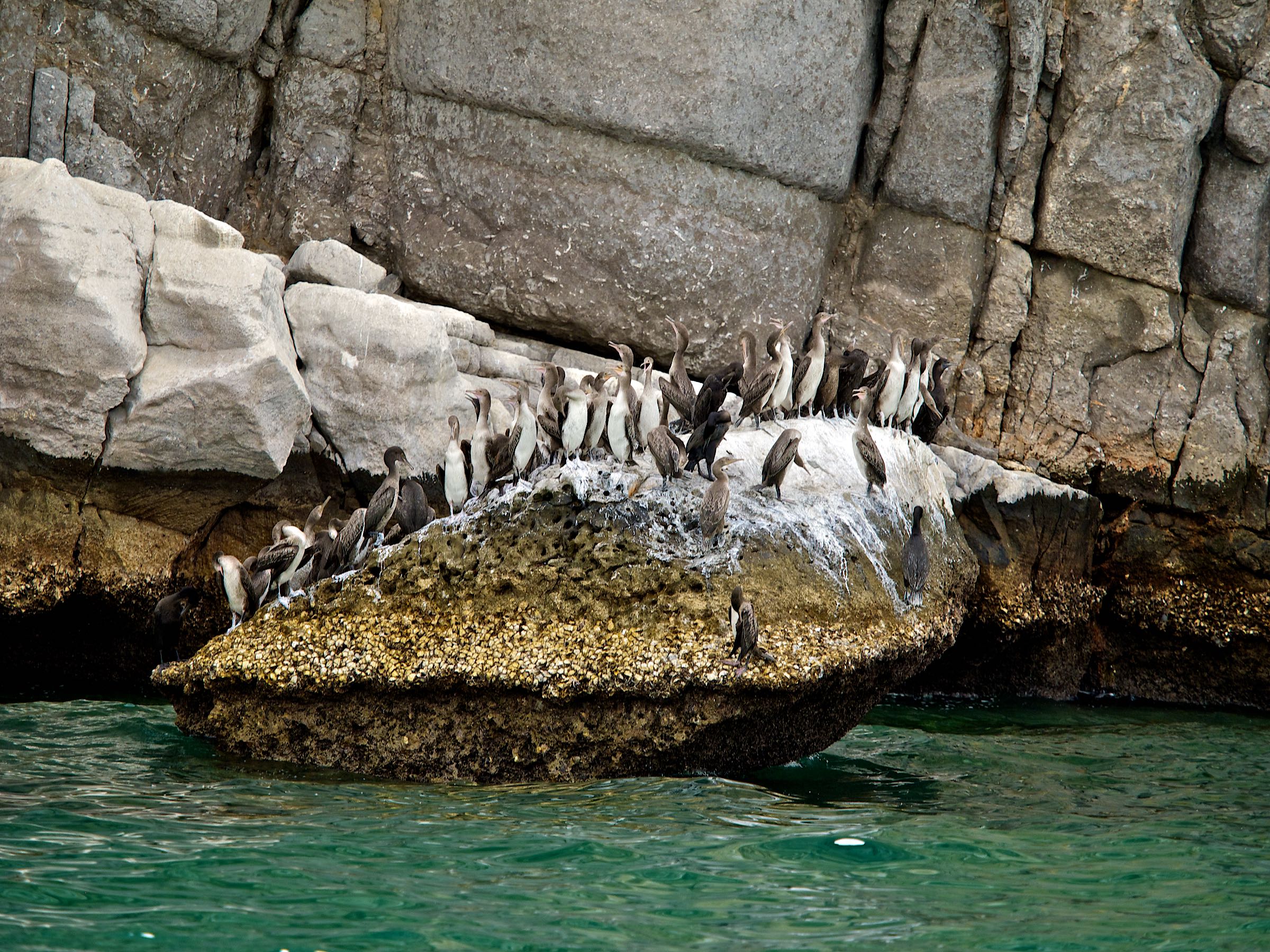
Dirty Birds
This rock is not coloured white...

Atana Musandam
The biggest and newest hotel in Khasab - fairly pleasant, but not outstanding.

Boat Parking
The artificial canal built around the harbour is used for locals to park their boats.
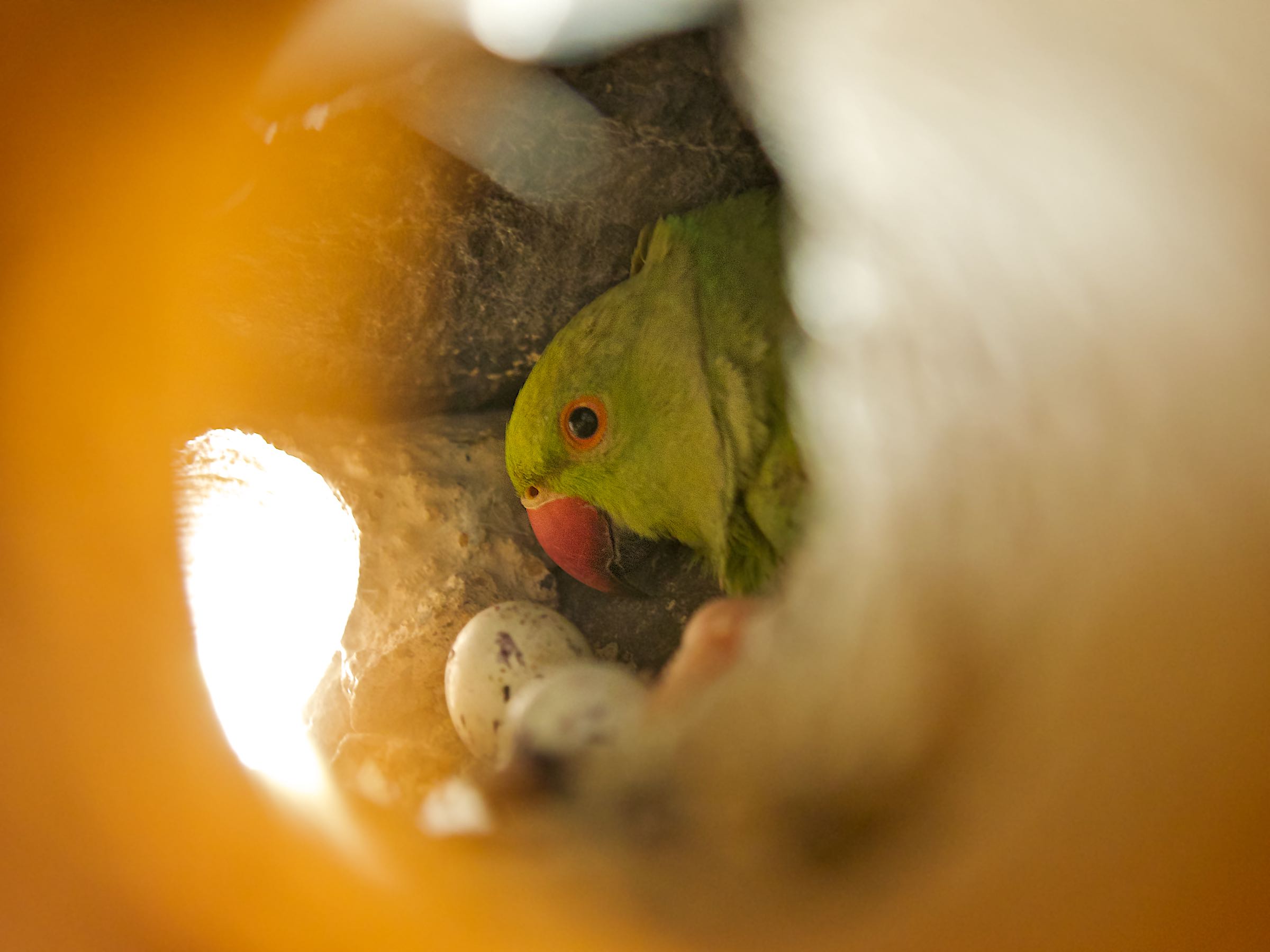
Breeding
The birds used small holes in the walls of the castle as breeding grounds. On the bottom right of the whole you can see a small glimpse of a chick that already hatched.

Hello
In the towers of Khasab Castles, a number of parrots were breeding. I was able to capture this shot through one of the old firing holes in the tower.
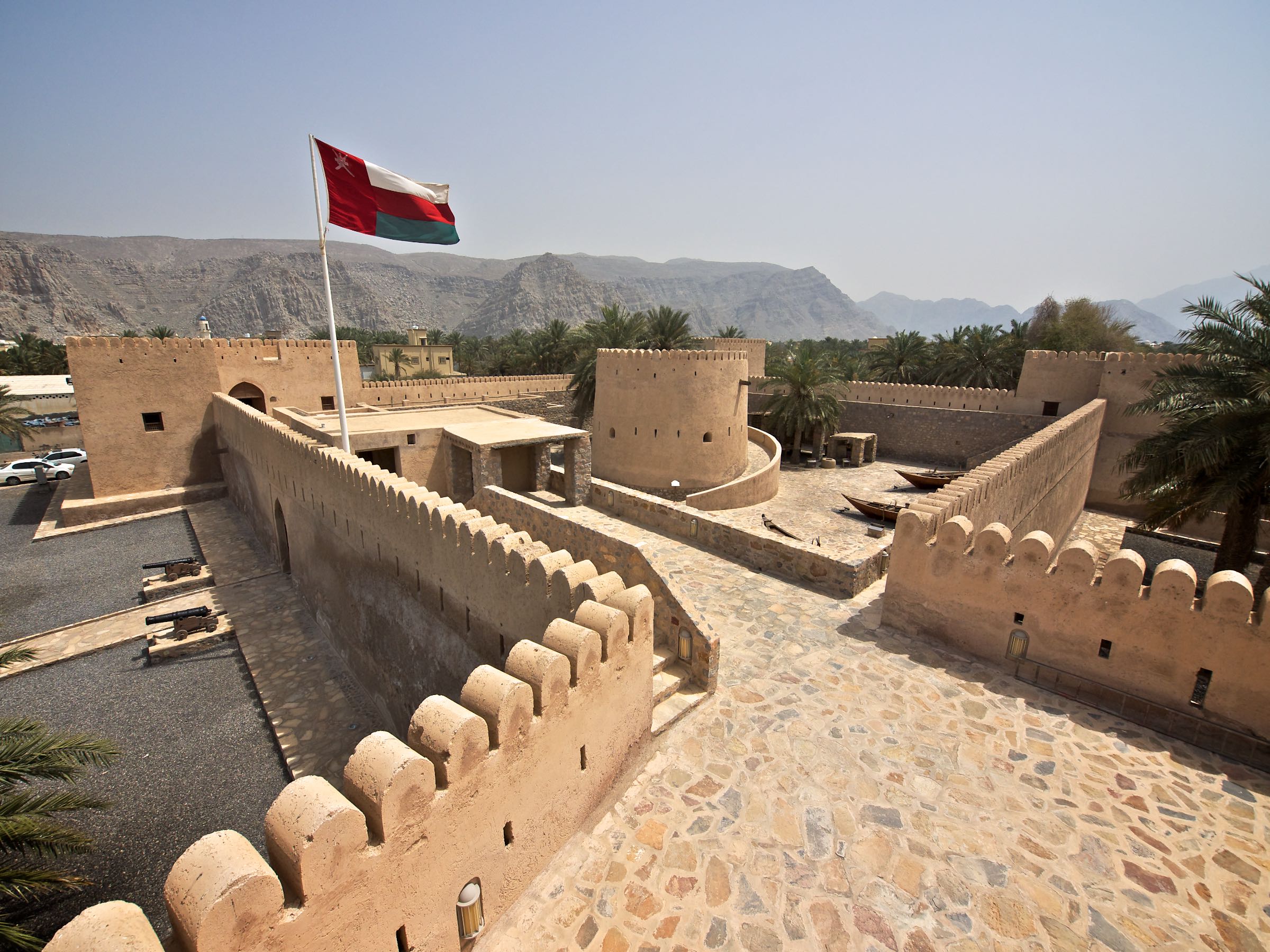
View over Khasab Castle
A view over the Khasab Castle with the Omani flag.
